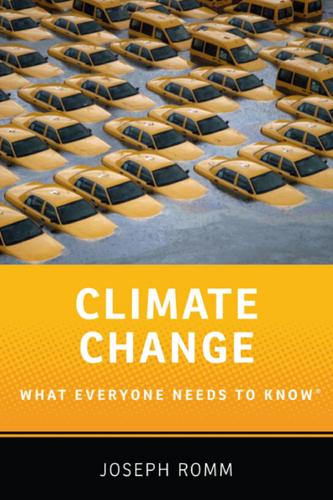
Climate Change
by
Joseph Romm
Published 3 Dec 2015
CO2 in, 81 heat-trapping gases human-caused emissions of extreme weather related to, 36–37 heat wave(s) climate change effects of, 40–42, 42f extreme World Bank on, 74 Hurricane Sandy and, 42 “high catastrophic damages” climate change causing, 136 high-pressure systems droughts blocked by, 43 human-caused climate change adapting to, 159–163 climate scientists certainty about, 9–12 extreme weather effects of, 32–33 rainfall patterns shifted by, 42–43 rate of scientists predictions and, 18–19 “human fingerprints” on pattern of climate changes, 10–11 human productivity global warming effects on, 107–112, 108f, 110f, 112f hurricane(s) climate change effects on, 57–59 future of difficulty in predicting, 97–98 Hurricane Sandy, 37–40 storm surges associated with, 57, 97 super- increased incidence of, 59 Hurricane Katrina storm surges associated with, 57, 97 surface temperatures in Gulf of Mexico and, 58 Hurricane Sandy, 33 climate change causing, 37–40 storm surges associated with, 55–57 hybrid vehicles, 228–233 advantages of, 227–228 disadvantages of, 227–228 hydrogen delivery of breakthroughs needed in, 242–243 production of breakthroughs needed in, 242–243 centralized, 242 reformed from natural gas, 241–242 safety issues related to, 239–240 hydrogen fuel cells, 233–236 hydrogen fuel-cell vehicles (FCVs), 233–236, 261 as climate solution challenges facing, 236–243 hydrogen fueling stations costs of, 241–242 hydrogen storage problems associated with, 238–239 hydropower in GHG emissions reduction, 218–219 ice loss in Greenland and Antarctica sea levels rise due to, 4–6 IEA. see International Energy Agency (IEA) IGCC. see integrated gasification combined cycle (IGCC) Indonesia peatland fires, 86 integrated gasification combined cycle (IGCC), 209–210 Intergovernmental Panel on Climate Change (IPCC), 20, 80 on agricultural sector effects of climate change, 127, 128 on Arctic ice cap, 18–19 on biochar, 246 on biodiversity, 122 on climate change as a security threat, 128 on climate change effects in this century, 135–140 on climate change effects on wildfires, 46 on climate change migration, 74 on climate change’s threat to global food supplies, 124 on consequences of missing 2°C target, 158–159 on deforestation and global warming, 21 on dietary trends shifts, 247–248 Fifth Assessment Report of, 7–8, 48, 77, 122, 131–132, 133f, 152, 153, 155–156, 193 Fourth Assessment Report of, 2, 76–77, 124, 151, 152, 157 on “Impacts, Adaptation, and Vulnerability,” 127, 128 on “irreversible impacts,” 141–145 on natural gas’s role in transition to 2°C world, 201, 203–204 on permafrost carbon feedback, 84 on sea-level rise, 92 International Energy Agency (IEA) on bioenergy, 217–218 on cost of meeting 2°C target, 155–158 on CSP, 206–207 on energy efficiency, 195–198 on EVs, 231 on hydropower, 218–219 on natural gas’s role in transition to 2°C world, 201, 203 on nuclear energy, 199–200 on pumped storage, 244–245 on solar power, 204 on wind power, 207–208 investment(s) climate change effects on, 258–259 IPCC. see Intergovernmental Panel on Climate Change (IPCC) “irreversible impacts” climate change and, 140–145 described, 141–142 Dust-Bowlification, 143 reversal of, 142–143 sea-level rise, 143 Islamic State of Iraq and Greater Syria (ISIS) climate change’s impact on, 129 jet stream Arctic amplification effects on, 65–66 Koch Industries in large-scale effort to spread misinformation about climate science, 186–187 Kyoto Protocol, 150–151, 176, 186 land and forestry policies, 172 land and ocean “sink efficiency,” 89 La Niña(s), 27 defined, 23 Lawrence Berkeley National Laboratory (LBNL) Indoor Environment Group at, 112–118 LBNL. see Lawrence Berkeley National Laboratory (LBNL) LED bulbs. see light-emitting diode (LED) bulbs light-emitting diode (LED) bulbs in energy efficiency, 195 liquid hydrogen for storing and transporting hydrogen, 238 livestock sector in climate change minimization, 245–249 CO2 emissions by, 245–248 GHG emissions by, 245–249 “loop” current, 58 Mann, M., 67 mass extinction current reasons for, 121 Mediterranean countries drought in, 129–131 mega-drought(s) civilization-destroying, 102 risks of, 98–99 methane (CH4) global warming driven by, 20 GWP of, 22 heat trapped by vs.
…
on deluges or severe precipitation, 48–49 on geoengineering, 163–169 on hydrogen cars, 235 National Aeronautics and Space Administration (NASA), 101–103 on weather extremes, 40–42, 42f, 187 on ice sheet collapse, 93 National Climate Assessment (NCA), 48–50, 50f, 106 on extreme snowstorms and deluges, 52–53 on “permanently hotter summers,” 110, 112f National Flood Insurance Program, 253 National Oceanic and Atmospheric Administration (NOAA), 7, 8f, 45 on agricultural sector effects of climate change, 125 “Climate Extremes Index” of, 53, 54f on crossing tipping points in climate change, 29 on drought in Mediterranean countries, 130, 130f on extreme weather in Northern Hemisphere, 64–66 on human productivity effects of global warming, 107–108, 108f on Hurricane Sandy, 55 on “irreversible impacts” of climate change, 143 on ocean acidification, 119–120 on “permanently hotter summers,” 110, 111 on sea-level rise, 56, 253 on thawing permafrost, 82 on tornadoes, 68 national security climate change as threat to, 128–131, 130f natural gas global warming driven by, 20 hydrogen reformed from, 241–242 in transition to 2°C world, 201–204 challenges facing, 201–203 “new normal” in climate, 32 projected vs. business-as-usual global warming, 101–103, 103f Nile Delta saltwater intrusion into, 95 NOAA. see National Oceanic and Atmospheric Administration North Atlantic crucial ocean circulation in global warming in weakening, 93–94 nuclear energy IEA and NEA on, 199–200 as largest source of low carbon electricity, 199 nuclear reactors costs of, 199–200 Obama, B., Pres., 160, 178, 180, 184 ocean(s) heat content of, 3, 7, 8f heating of by humans, 6–7 “sink efficiency” of, 89 ocean acidification, 17–18, 118–121 oyster industry effects of, 120 sea life’s effects of, 118–121 significance of, 118–121 warming related to, 91–92 ocean warming limiting ocean uptake of CO2 and, 91 Paleocene Eocene thermal maximum, 79–80 paleoclimate temperatures study of, 78–79 Palmer Drought Severity Index (PDSI), 43–44, 46 partial-zero emission vehicle (PZEV), 227–228 particulate(s) (sulfate aerosols) from volcanoes and human-caused pollution in global warming variations, 23 PDSI. see Palmer Drought Severity Index peat fires carbon released by, 86 PEM fuel cells. see proton exchange membrane fuel cells permafrost as amplifying feedback. 80–84 CH4 from, 81 CO2 from, 81 described, 80 melting of, 76, 136 size of, 81 Permo-Triassic extinction CO2 and, 119 personal impacts climate change-related, 251–268 coastal property costs, 252–255 diet, 260, 262–263 how to talk about, 263–266 investments, 258–259 reducing carbon footprint, 259–262 study choices of students, 256–258 transportation choices, 260 where to live and retire, 255–256 photovoltaics (PV), 204, 243 pine beetles forest fires related to, 47–48 “planning case” for sea-level rise, 56 political parties climate science views of, 182–184 Pope Francis on assaults on natural environment, 250 on climate change, 250, 267–268 precipitation severe climate change and, 48–51, 49f, 50f precipitation patterns climate change shifting, 33 Prius, 227, 230, 261 productivity human global warming effects on, 107–112, 108f, 110f, 112f projected climate impacts agricultural sector–related, 123–127 amplifying feedbacks, 88–92 biodiversity, 121–123 from business-as-usual climate change, 73–75 CO2 exposure levels, 112–118 droughts, 98, 100 health-related, 103–107 human productivity–related, 107–112, 108f, 110f, 112f “irreversible impacts,” 140–145 national security–related, 128–131, 130f ocean acidification, 118–121 sea-level rise, 92–95 sources of uncertainty related to, 75–78 superstorms, 96–98 thawing permafrost in speeding up, 80–84 uncertainty related to, 75–78 wildfires, 85–88 proton exchange membrane (PEM) fuel cells, 234 pumped storage at hydroelectric plants, 244–245 round-trip efficiency of, 244–245 PV. see photovoltaics PZEV. see partial-zero emission vehicle rainfall patterns climate change effects on, 42–43, 48–51 RCPs. see Representative Concentration Pathways Regional Greenhouse Gas Initiative (RGGI), 177, 180, 183 regional security climate change as threat to, 128–131, 130f regulatory policies, 172 Representative Concentration Pathways (RCPs) in modeling future warming projections, 131–134, 133f resilience adaptation as, 163 defined, 163 revenue neutral defined, 173 RGGI. see Regional Greenhouse Gas Initiative Rocky Mountains snowpack loss in, 44–45 Rossby waves, 65 Sagan, C., 190 saltwater intrusion, 95 sea-level rise business-as-usual projections for, 55, 56 causes of, 4–6 consequences of, 252–254 on East Coast, 93, 252–254 global warming and, 4–6, 34 impacts of, 92–95 increase in, 136 as “irreversible impact,” 143 per decade by century’s end, 95 in Southeastern Florida, 95 superstorms effects of, 96 security climate change as threat to, 128–131, 130f semi-arid regions drought-prone, 43 “sink efficiency” of land and ocean, 89 SkepticalScience.com, 11, 263–266 “skeptics” climate science, 189–191 smoking misinformation campaign related to, 185 snowfall(s) heavier-than-normal, 53 snowstorm(s) climate change effects on, 51–55, 54f geographic distribution of, 51–52 intensity of, 34 in warmer-than-normal winters, 51–52 “social cost of carbon,” 173 solar power in averting dangerous climate change, 204–207 defined, 204 discovery of, 204–205 IEA on, 204 price of, 205 types of, 204 “solar radiation management,” 164 solar thermal power concentrated, 204, 206–207 (see also CSP) storm surge(s) climate change effects on, 55–57 on East Coast, 254 Hurricane Katrina and, 57, 97 hurricane-related, 55–57, 97 Hurricane Sandy and, 55–57 1°C rise in global temperature effects on, 97 sugarcane ethanol, 216 sulfate aerosols in global warming variations, 23 super-hurricanes Category 4 or 5 increased incidence of, 59 superstorm(s) climate change and, 96–98 sea-level rise effects on, 96 Superstorm Sandy. see Hurricane Sandy “synthesis gas” (syngas), 209 Synthesis Report of IPCC, 137–138 temperature(s) paleoclimate, 78–79 tracking of, 24–25 Tesla Motors, 230–232 “The Next Dust Bowl,” 98, 125–126, 162 tide(s) extracting energy from, 220 Titley, A., 129 tobacco industry misinformation campaign related to, 185 tornado(es) climate change effects on, 67–70 Oklahoma City (2013), 69–70 Tornado Alley, 67 “Tornado Outbreaks Could Have a Climate Change Assist,” 70 transportation sector emissions reduction in, 221–223 fuel efficiency in, 223 tropical diseases, 106 tundra, 80 2°C target in achieving GHG emissions reduction, 154–159 consequences of missing, 158–159 economic costs of, 155–158, 156t energy system changes in meeting, 193–195 reasons behind, 151–154 UK Met Office on extreme weather, 33 global temperature data at, 24–25 on global warming, 34 Hadley Centre of, 48, 90, 105 on rainfall intensity, 50–51 UK Royal Society. see British Royal Society UNFCCC. see United Nations Framework Convention on Climate Change United Nations (UN) IPCC of (see Intergovernmental Panel on Climate Change) United Nations Framework Convention on Climate Change (UNFCCC) on cutting GHG emissions country-by-country variability in, 154–155 described, 149–151 goal of, 149–151 on 2°C target, 153 United States (U.S.)
…
2 Extreme Weather and Climate Change What is the difference between weather and climate? Which extreme weather events are being made worse by climate change and which are not? What is the role of natural climatic variation, such as the El Niño–La Niña cycle, in extreme weather? Did climate change cause Hurricane Sandy (and why is that the wrong question to ask)? How does climate change affect heat waves? How does climate change affect droughts? How does climate change affect wildfires? How does climate change affect the chances of deluges or severe precipitation? Does climate change mean more snow or less, worse snow storms or weaker ones?
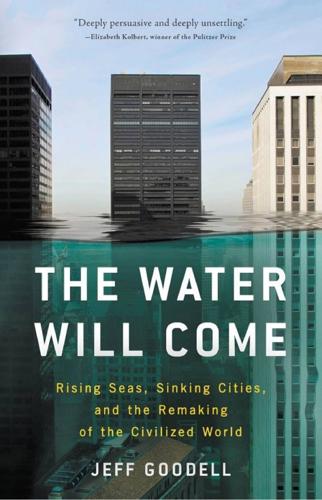
The Water Will Come: Rising Seas, Sinking Cities, and the Remaking of the Civilized World
by
Jeff Goodell
Published 23 Oct 2017
This is not a speculative idea, or the hypothesis of a few wacky scientists, or a hoax perpetrated by the Chinese. Sea-level rise is one of the central facts of our time, as real as gravity. It will reshape our world in ways most of us can only dimly imagine. My own interest in this story began with an actual hurricane. Shortly after Hurricane Sandy hit New York City in 2012, I visited the Lower East Side of Manhattan, one of the neighborhoods that had been hardest hit by flooding from the storm. The water had receded by the time I arrived, but the neighborhood already smelled of mold and rot. The power was out, the shops were closed. I saw broken trees, abandoned cars, debris scattered everywhere, people hauling ruined furniture out of basement apartments.
…
The biggest risk of living on the Florida coast has always been hurricanes, as residents learned in 1926 and again in 1992, when Hurricane Andrew caused $25 billion in damage. Every year, when hurricane season starts, the question hovers out there—Is this the year? Sea-level rise only increases the risk of damage from hurricanes: the higher the ocean is to begin with, the higher the storm surge will be pushed onto land. When Hurricane Sandy hit New York City in 2012, increased wave height caused by sea-level rise resulted in about $2 billion in additional damage to the city. Property owners deal with this risk by purchasing hurricane insurance. But hurricane insurance only covers damage from wind events, not water. If a building is damaged by surging waters that were driven by wind (i.e ., a hurricane), then yes, it may be covered.
…
Zarrilli may be the only person in the world who holds in his head the full catastrophe of what rising seas and increasingly violent storms mean to one of the greatest cities in America. Not surprisingly, instead of musing about the beautiful weather, he pointed to the East River, where the water was innocently bouncing off the seawall about six feet below us. “During Sandy,” he said darkly, “the storm surge was eleven feet high here.” As Zarrilli knows better than anyone, Hurricane Sandy, which hit New York City in October 2012, flooding more than 88,000 buildings in the city, killing 44 people, and causing over $19 billion in damages and lost economic activity, was a transformative event. It did not just reveal how vulnerable a rich, modern city like New York is to a powerful storm, but it also gave a preview of what the city may face in the coming century.
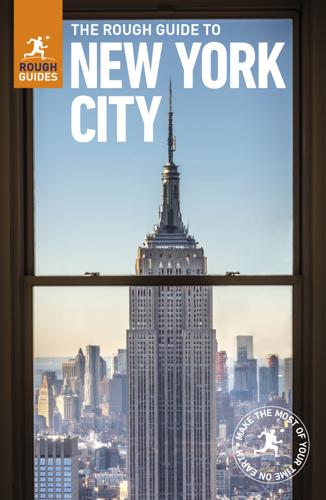
The Rough Guide to New York City
by
Rough Guides
Published 21 May 2018
Unfortunately, few if any areas suffered more harm from October 2012’s Hurricane Sandy (see box below), though the 5-mile-plus boardwalk has been entirely reconstructed and reopened. Meanwhile, hotspots like the hip Playland Motel and the Rockaway Beach Surf Club have popped up; there are places to rent boards and take surf lessons; and excellent coffee and meals can be enjoyed from Cuisine by Claudette. Alternatively, grab a snack from one of the pop-up concession stands close to the ocean (the highest concentration is at Boardwalk and Beach 97th Street, but you’ll find others elsewhere) and make your way to the sands. Hurricane Sandy In 2012, Hurricane Sandy brought the city to a temporary halt.
…
Yellow signs on the platform saying “During off hours train stops here” indicate where the conductor’s car will stop. If you are lost, go to the subway teller or phone 718 330 1234. State your location and destination; the teller or operator will tell you the most direct route. The L Train “Apocalypse” Ever since Hurricane Sandy devastated New York in 2012, the busy L subway tunnels under the East River have required urgent repair. After much handwringing, the authorities have decided to suspend the L train completely between Brooklyn and Manhattan for 15 months, beginning April 2019, in order to complete the work. By bus The bus system (718 330 1234, mta.info) is simpler than the subway, as you can see where you’re going and hop off at anything interesting.
…
Over time, the area has seen more than its fair share of destruction and renewal; indeed, thanks to landfill, today’s Financial District is double the size of that first Dutch colony, and many of the early colonial buildings burned down in either the Revolutionary War or the Great Fire of 1835. In September 2001, the character of the Financial District was altered radically once again after the attack on the Twin Towers, while Hurricane Sandy wreaked further devastation in 2012. Yet the regeneration of the area is startling: the new One World Trade Center now towers above the city, and a spate of ambitious projects from parks and offices to transport hubs and new hotels peppers the area. Though some banks still maintain headquarters here, the most dramatic change is in the increase of residential development, as new condos and luxury conversions (many from former bank buildings) prove that the Financial District is once again in the process of integrating its present and future into its past.
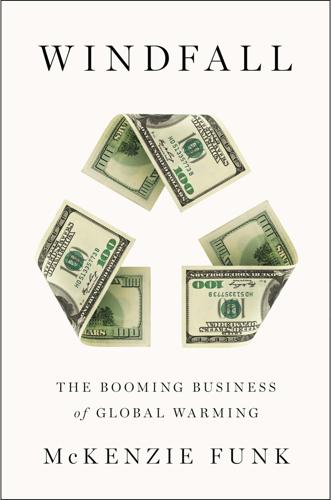
Windfall: The Booming Business of Global Warming
by
Mckenzie Funk
Published 22 Jan 2014
Part Three, “The Deluge,” addresses what is generally our most distant concern, decades if not centuries out—the rising seas, surging rivers, and superstorms that will threaten island nations and coastal cities. But it is hastened as parched cities drain their aquifers and begin to sink, accelerated as Greenland’s ice cap melts into the sea. And after Hurricane Sandy and Typhoon Bopha and failure after failure to cut global carbon emissions, it is not entirely distant. To explore these changes in order—from melt to drought to deluge—as I broadly did, with some exceptions, in my travels around the globe, is to go from opportunism to wagon circling to open desperation.
…
After RMS updated its hurricane model in 2006—by flying four scientists to a vacation spot in Bermuda for what it called “expert elicitation”—Allstate used the non-peer-reviewed results to justify jacking up rates in Florida by 43 percent, a move blocked by state regulators. State Farm was similarly blocked from hiking rates by 47 percent. Instead, both dropped tens of thousands of policies, as Allstate also did in storm-surge-threatened areas of New York long before Hurricane Sandy arrived: thirty thousand canceled policies in the five boroughs alone. The companies had more success raising rates in California: a few weeks after the Little Tujunga fire, the state insurance commissioner would approve what amounted to $115 million in increases for State Farm and Farmers—hikes of 6.9 and 4.1 percent, respectively.
…
The fence was two rows of barbed wire separated by a narrow patch of no-man’s-land, and it looked formidable, even impenetrable. You could almost believe that all problems would remain safely stuck on the other side. TEN SEAWALLS FOR SALE WHY THE NETHERLANDS LOVES SEA-LEVEL RISE On a Monday the year before Hurricane Sandy hit New York City, attorneys and ambassadors sat in a cavernous auditorium at Columbia University discussing what happens, legally speaking, when an island nation disappears under the sea. There were “novel questions,” said the law professor Michael Gerrard in an opening statement. “If a country is underwater, is it still a state?
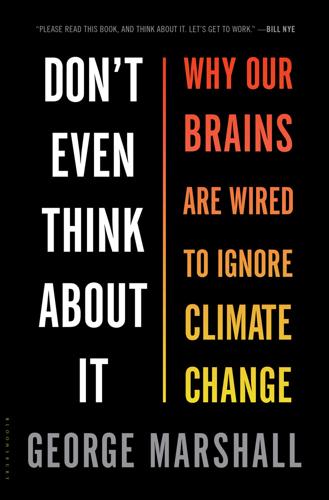
Don't Even Think About It: Why Our Brains Are Wired to Ignore Climate Change
by
George Marshall
Published 18 Aug 2014
Those campaigning for action on climate change do everything they can to keep these connections alive in the public’s minds. As mayor of New York City, Michael Bloomberg personally approved the cover of the November 1, 2012, Bloomberg Businessweek, with a picture of Hurricane Sandy and bold block text reading, “IT’S GLOBAL WARMING, STUPID.” Referring to Hurricane Sandy, Al Gore said, “These storms—it’s like a nature hike through the Book of Revelation on the news every day now. People are now connecting the dots.” Environment America global warming program director Nathan Willcox is also convinced that “the more Americans see extreme weather events in their backyards, the more they will reach out to their politicians for action.”
…
They spoke of the many acts of kindness, altruism, and generosity from strangers. Wendy Escobar told me how a customer at her cousin’s hair salon in Longview sent her a thousand-dollar check in the mail. “The coolest thing to come out of the fire,” she said, “was finding out how much people really cared, and how it’s made people pull together so much.” One year later, Hurricane Sandy, the largest Atlantic hurricane on record, damaged or destroyed nearly 350,000 homes as it hit the New Jersey seashore. When I visited five months later, the destruction could still be seen everywhere in the small towns that line the shore. In Seaside Heights the tangled remains of a roller coaster still lay out to sea, where it had fallen after the pier beneath it collapsed.
…
The pain and loss of the event generates an intensified desire that there be a “normal” state to which one can return, making it even harder for people to accept that there are larger changes under way. The decision to stay, rebuild, and reinvest in that normality is accordingly validated by the community. After losing all of his stock during Hurricane Sandy, Brian George, the owner of Northshore Menswear in Sea Bright, hung a sign outside his shop saying, “We love Sea Bright—we’ll be back.” After he reopened, business was great, he said, with many people buying something simply to thank him for staying. He accepted that climate change could bring more disasters but said he is resigned to it.
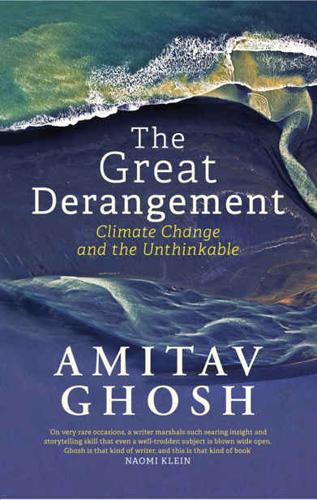
The Great Derangement: Climate Change and the Unthinkable
by
Amitav Ghosh
Published 16 Jan 2018
And it appears that we are now in an era that will be defined precisely by events that appear, by our current standards of normality, highly improbable: flash floods, hundred-year storms, persistent droughts, spells of unprecedented heat, sudden landslides, raging torrents pouring down from breached glacial lakes, and, yes, freakish tornadoes. The superstorm that struck New York in 2012, Hurricane Sandy, was one such highly improbable phenomenon: the word unprecedented has perhaps never figured so often in the description of a weather event. In his fine study of Hurricane Sandy, the meteorologist Adam Sobel notes that the track of the storm, as it crashed into the east coast of the United States, was without precedent: never before had a hurricane veered sharply westward in the mid-Atlantic.
…
Kennedy airport, I looked out of the window and spotted Far Rockaway and Long Beach, the thickly populated Long Island neighbourhoods that separate the airport from the Atlantic Ocean. Looking down on them from above, it was clear that those long rows of apartment blocks were sitting upon what had once been barrier islands, and that in the event of a major storm surge they would be swamped (as indeed they were when Hurricane Sandy hit the area in 2012). Yet it was clear also that these neighbourhoods had not sprung up haphazardly; the sanction of the state was evident in the ordered geometry of their streets. Only then did it strike me that the location of that base in the Nicobars was by no means anomalous; the builders had not in any sense departed from accepted global norms.
…
This discovery was announced in an article that concludes with these words, chilling in their understatement: ‘These results will motivate a reappraisal of the seismic and tsunami hazard assessment in the NW Indian Ocean.’ Soon, I also had to rethink my assumptions about cyclones and the Arabian Sea. Reading about Hurricane Sandy, I came upon more and more evidence that climate change may indeed alter patterns of cyclonic activity around the world: Adam Sobel’s Storm Surge, for example, suggests that significant changes may be in the offing. When I began to look for information on the Arabian Sea in particular, I learned that there had been an increase in cyclonic activity in those waters over the last couple of decades.
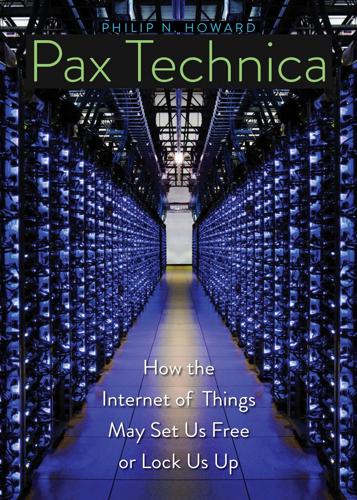
Pax Technica: How the Internet of Things May Set Us Free or Lock Us Up
by
Philip N. Howard
Published 27 Apr 2015
When city and regional governments failed in public communication, people created their own community alerts. These are other examples of how people create their own public alert systems. When Hurricane Sandy hit Santiago, Cuba, information didn’t come from the state; it came from the country’s independent (illegal) journalists. Text messages about serious damage and the loss of life circulated among people a day before state media tried to bring citizens up to date. When Hurricane Sandy hit New York City, even the capacity of a relatively strong municipal government was expanded by a crowd-sourced disaster map.13 Obviously, the evolution of media use in Monterrey is mirrored elsewhere in Mexico.
…
David Daw, “10 Twitter Bot Services to Simplify Your Life,” TechHive, October 23, 2011, accessed September 30, 2014, http://www.techhive.com/article/242338/10_twitter_bot_services_to_simplify_your_life.html. 15. Rachel Haot, “Open Government Initiatives Helped New Yorkers Stay Connected During Hurricane Sandy,” TechCrunch, January 11, 2013, accessed September 30, 2014, http://techcrunch.com/2013/01/11/data-and-digital-saved-lives-in-nyc-during-hurricane-sandy/. 16. Samuel P. Huntington, The Clash of Civilizations and the Remaking of World Order (New York: Simon and Schuster, 2011). 17. “Global Voices,” accessed June 30, 2014, http://globalvoicesonline.org. 18. John Perry Barlows, “Declaration of Independence of Cyberspace,” 1996, accessed September 30, 2014, http://wac.colostate.edu/rhetnet/barlow/barlow_declaration.html; Hillary Clinton, “Internet Freedom: The Prepared Text of Secretary of State Hillary Rodham Clinton’s Speech, Delivered at the Newseum in Washington, DC,” Foreign Policy, January 21, 2010, accessed September 30, 2014, http://www.foreignpolicy.com/articles/2010/01/21/internet_freedom. 19.
…
For example, when the local government in Monterrey, Mexico, failed to provide public-warning systems about street battles between drug gangs and the military, desperate citizens developed their own public-communication systems. And once in a while there is an example of how governments in wealthy democracies can fail to provide governance at a key moment or in a key domain. During Hurricane Sandy, open-data maps both provided the public with emergency news and information and significantly expanded New York City’s capacity to serve citizens in crisis.15 Government is not the only source of governance. Technologyled governance is not always a good thing. The internet of things will probably strengthen social cohesion to such a degree that when regular government structures break down, or weaken, they can be repaired or substituted.
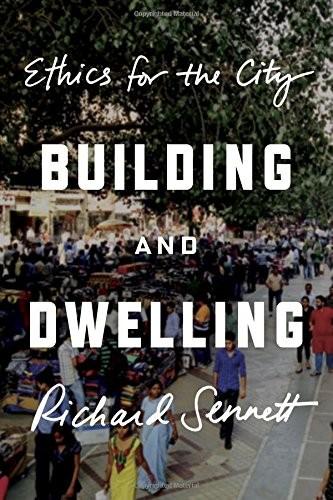
Building and Dwelling: Ethics for the City
by
Richard Sennett
Published 9 Apr 2018
NATURE STRIKES THE CITY – LONG- AND SHORT-TERM THREATS Time’s two shadows As the lights dimmed across Lower Manhattan when Hurricane Sandy struck in the autumn of 2012, an expert announced on the radio that there was really nothing to worry about. The security wall protecting Manhattan’s electric power station at the east end of 14th Street next to the East River was, he said, twelve feet high, more than enough to keep the generators dry within. ‘More than enough’ was based on statistical averaging from past water rise. Power died as the river rose fourteen feet, breaching the wall. The expert then resurfaced, this time from an emergency-powered radio station, to announce that Hurricane Sandy was a once-in-a-century event, though we had had another once-in-a-century storm only a year before (one which thankfully veered away from the city).
…
It’s a huge question; here are two answers in the wake of Hurricane Sandy. * * * Two berms In general, there are two separate strategies to address climate change: mitigation and adaptation. The first tries to reduce the sources of trauma, as in constructing berms (high barriers) to repulse storm surges. The second works with the trauma, as in wetlands, which slow down water surges, and continually reshape themselves as buffers. Mitigation and adaptation strategies should be complementary but are often at odds. In the case of the New York power station after Hurricane Sandy, debate centred on whether to fortify and barricade the plant where it stands against the edge of the East River, or to accept that this mitigating defence is hopeless, recognize the fact that overwhelming storms are likely to occur frequently, and move the power station inland.
…
In shifting the site, the power station would have to become smaller in scale, because the high land of Manhattan is so densely built that several plants would have to do the work of one at the edge. The idea of adaptation in proposals like these means that the built form would have to change in the face of erratic events. The divergence between mitigation and adaptation strategies became evident when, in the wake of Hurricane Sandy, my colleagues Henk Ovink and Eric Klinenberg were commissioned by the government and the Rockefeller Foundation to come up with proposals for climate-change projects in New York. (Ovink is currently ‘minister of water’ for the Netherlands; Klinenberg an expert on the sociology of disasters.) Rebuild by Design was meant to counter the scaremongering which warned that millions of people will have to abandon coastal cities like New York in the coming century, or the sci-fi pessimism, beloved of Hollywood movies, that we are at the end of civilization.12 The mitigation approach is best represented by the ‘Dryline’ berm proposed for the southern rim of Manhattan by the firm of Bjarke Ingels, elsewhere encountered in these pages as the designers of a Googleplex insulating that ‘creative innovation hub’ from the city.

Data Action: Using Data for Public Good
by
Sarah Williams
Published 14 Sep 2020
The results of the combination of crowdsourcing and expertise determined a map of areas to target for recovery (figure 2.18). 2.16 The interface for Humanitarian OpenStreetMap was site developed to record damage after Hurricane Sandy in New York. Source: MapMill, Image of Map Mill App Courtesy of PublicLab.org, n.d., website, n.d. 2.17 This satellite data shows what participants of the Hurricane Sandy project would use to identify the level of damage in an area. Source: Humanitarian OpenStreet Map Team, https://www.hotosm.org/. 2.18 This map, created by the Humanitarian OpenStreetMap team, shows locations where people used satellite data to map damage after Hurricane Sandy, as well as the extent of the damage (green = good, yellow = average, orange/red = bad).Source: Humanitarian OpenStreet Map Team, https://www.hotosm.org/.
…
Source: Sa… 2.14 Results from the studies of New York City air quality translated into poli… 2.15 Screen shot of the Ushahidi website developed for the 2010 Haiti earthquak… 2.16 The interface for Humanitarian OpenStreetMap was site developed to record … 2.17 This satellite data shows what participants of the Hurricane Sandy project… 2.18 This map, created by the Humanitarian OpenStreetMap team, shows locations … Chapter 3 3.1 Determining the spacing between latitude and longitude points is important … 3.2a and 3.2b The map in figure 3.2a (left) shows the latitude and longitude po… 3.3 These equations, based on a gravitational model of spatial accessibility, r… 3.4 The Ghost Cities model starts by measuring the distance to all amenities.
…
Only people who knew about the platform would use it, making the resulting data set a bit biased toward those who are more technologically savvy, and leaving the experience of those who did not know about it—or did not have cell service—unrecorded. It is important to interrogate who is missing from your crowdsourced data, as that, too, can provide insights. One of the biggest problems encountered in crowdsourced data projects is finding enough participants to create a significant amount of meaningful data. When Hurricane Sandy hit the mid-Atlantic region of the United States in 2012, resulting in massive flooding of streets, tunnels, homes, and widespread power outages in- and outside its large population centers, Schuyler Erle, from Humanitarian OpenStreetMap, developed a website tool that would allow volunteers from anywhere to view satellite imagery to evaluate damage.60 Enlisting an established volunteer group from the crisis mapper network to verify the data, the results of this crowdsourcing project were systematic and, therefore, more accurate than what was seen in previous Ushahidi projects.
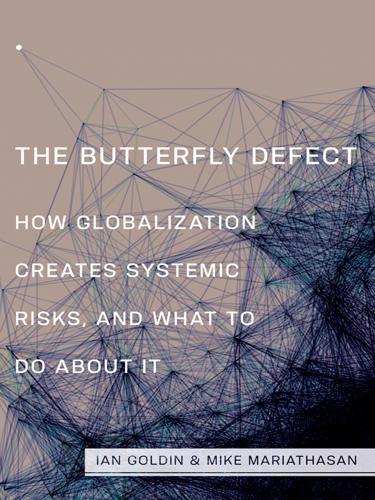
The Butterfly Defect: How Globalization Creates Systemic Risks, and What to Do About It
by
Ian Goldin
and
Mike Mariathasan
Published 15 Mar 2014
The high density of nodes in the Southeast, as well as the extreme connectivity displayed, increases the risk of cascading breakdowns. Furthermore, oil and gas face additional risks in that they rely not only on internal networks for distribution but also on imports. This was starkly illustrated in 2012 in the impact of Hurricane Sandy on New York, which had dramatic effects on energy and fuel supplies in New York and beyond. Figure 4.4. U.S. national gas pipeline map, 2008. EIA (Energy Information Administration), 2008, “U.S. Natural Gas Pipeline Compressor Stations Illustration,” Energy Information Administration, accessed 4 February 2013, http://www.eia.gov/pub/oil_gas/natural_gas/analysis_publications/ngpipeline/compressorMap.html.
…
The development of national transport and energy infrastructure to ensure that alternative supplies and systems are developed should be seen as a national priority. This includes using policy levers to distribute not only airports and energy generation and distribution systems but also the necessary backup capacity. The lessons of the Japanese tsunami, Hurricane Sandy’s devastating impact on the U.S. East coast, and the Icelandic volcano need to be learned. These include, for example, the need for geographic diversification of backup routes, the stress testing of contingency plans well beyond historic experience, and diversification in fuel, communication, and other critical systems so no one source or node becomes uniquely critical for millions of people.
…
Increasingly, the distinction between “natural” and man-made disasters is being blurred. Not only the causes, but also the implications, of virtually all disasters are the results of human action, as the differential impacts of hurricanes in Haiti and its neighbor the Dominican Republic (which shares the same island) attest. Similarly, the impact of Hurricane Sandy reflected the peculiarities of urbanization and investment in New York and New Jersey. We draw a distinction between risk from and risk to the environment and examine each in turn. Natural systems and the environment do not respect national borders, and managing environmental systems requires action at all levels—global, national, and local.

Peers Inc: How People and Platforms Are Inventing the Collaborative Economy and Reinventing Capitalism
by
Robin Chase
Published 14 May 2015
One of the lessons learned the hard way is that community is the first responder following climate-related disasters. The neighbors who are still on the ground or in communities nearby are the ones that can offer the first, best help. A couple of months before Hurricane Sandy struck the New England coast, I was part of a roundtable at the annual conference of the Urban Land Institute, along with Shaun Donovan, then U.S. secretary for housing and urban development. I presented the Peers Inc framework to the audience of a few thousand. A day or so after Hurricane Sandy hit the Eastern seaboard, I received a call from Shaun. Could the excess capacity hidden in metro New York be tapped to find temporary housing for the thousands of people affected?
…
The New York Tech Meetup is the largest, with 40,000 members; Foursquare and Tumblr debuted on its stage, networks and relationships created there spurred the civil rights battle against the restrictive Internet legislation SOPA and PIPA (see Chapter 7), and it convened the Red Cross, the Federal Emergency Management Agency, the City of New York, local NGOs, elected officials, and hackers to provide tech relief after Hurricane Sandy struck the metro area. New York City—where Meetup the company is headquartered—is the meetup capital of the world, with 1 million people (that’s one in every eight New Yorkers) participating. Meetup is building face-to-face community at scale. We’ve talked a lot about Uber and Lyft, both services that are serving the wealthiest among us.
…
We are still in the early days of this idea, but I expect these platforms to increasingly be tapped and more widely used during emergencies. BlaBlaCar was effectively an ad-hoc and real-time emergency transportation service for those stranded throughout Europe by the 2010 volcano eruptions in Iceland. Another peer-built platform came to the rescue after Hurricane Sandy in a neglected neighborhood that had neither electricity nor phone service and spotty Internet connectivity. The Red Hook Initiative, run by a group of young tech leaders-to-be from this neighborhood in Brooklyn, had previously installed a wireless mesh communications network. Their network bridged those without access to those who did, and connected them all together for local emergency updates.

World Cities and Nation States
by
Greg Clark
and
Tim Moonen
Published 19 Dec 2016
Instead, it is the federal support that New York City tends to receive in response to major crises that emerges as a recurrent theme of this chapter. There have been three such major crises since 2000: the terrorist attacks of 9/11, the 2008 global financial crisis and subsequent recession and Hurricane Sandy in 2012. These three events each provoked a major response from the federal government to respond to the national interest in ways that directly involved investment and support for New York and its business and citizen communities. Such emer gency assistance has been very welcome but does not mask the fact that New York and other leading American cities are not treated as esteemed partners in pursuit of national goals.
…
Furthermore, an above‐average $7 billion in Recovery Act funds went to pro grammes benefiting New York schools and buildings. The stimulus has not only helped New York to avoid the collapse of finance and business services, it has also enabled it to diversify its economy at a critical juncture. And most recently, in response to Hurricane Sandy in 2012, federal agencies such as the Army Corps of Engineers and the Federal Emergency Management Agency pro vided over $13 billion to fund the City’s recovery efforts, much of which was administered by the City itself. So, although the federal government has not had a consistent policy to protect and support its leading urban economies, when New York has needed help it has been available (Vogel et al., 2011; New York City, 2016).
…
In the years ahead, New York’s profile as a city that is open to talent and newcomers will likely depend on the federal government debate becoming less antagonistic and more flexible to the human capital needs of its large cities (Jorgensen, 2014). Co-financing and endorsement of transport infrastructure and high speed rail development Public transport use has soared over the last two decades, but few major upgrades have been made and Hurricane Sandy highlighted the vulnerability of the city and region’s transport systems. Amtrak lacks finance to replace aging rail tunnels link ing New York and New Jersey, and a new solution needs to be agreed that would be ready before 2030. The federal government, however, has not increased revenues for transportation for over 20 years.
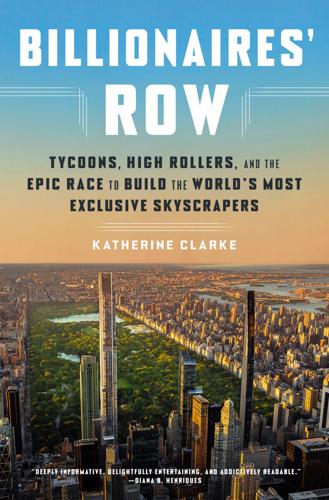
Billionaires' Row: Tycoons, High Rollers, and the Epic Race to Build the World's Most Exclusive Skyscrapers
by
Katherine Clarke
Published 13 Jun 2023
CHAPTER 9 Throwing Shade On the afternoon of October 29, 2012, Gary Barnett was holed up with his family at his modest home in Queens when a panicked call came in from one of Extell’s executives. Barnett was among the more than fifty million people across the Northeast bracing for the arrival of Hurricane Sandy. The massive storm was barreling northward toward New York City on what was increasingly looking like a collision course. Officials had announced plans to cease subway and rail service across the region, and Mayor Michael Bloomberg had instructed New Yorkers to stock up on supplies and stay home.
…
Barnett immediately drove into the city, where he stood at the edge of the cordon surveying the damage to the building, which seemed significant. As the crane had whipped around, the building’s glass curtain wall had been smashed in places and shards had fallen to the ground. In the end, Hurricane Sandy would claim the lives of more than forty New Yorkers, with thousands of homes destroyed and millions left without power. At One57, it would take nearly a week before the boom was fully secured to the side of the building and the street reopened. To get the boom down, it would have to be broken up into pieces and lowered to the ground in the site’s construction hoist, a kind of giant construction elevator for high-rise buildings that operates on a pulley system.
…
(George Rinhart/Corbis via Getty Images) The Drake Hotel opened in the 1920s and was popular with celebrities, including rock bands like The Who and Led Zeppelin. (Peter Foley/Bloomberg via Getty Images) The image of Gary Barnett’s One57 was beamed across television screens in 2012 when the construction crane snapped during Hurricane Sandy. Barnett pinpointed the incident as a turning point for the building’s fortunes. (DBOX for CIM Group and Macklowe Properties) Developers on Billionaires’ Row grappled with how to keep their skyscrapers steady in the wind. At 432 Park, they left gaps in the façade to allow the wind to pass through.

Streetfight: Handbook for an Urban Revolution
by
Janette Sadik-Khan
Published 8 Mar 2016
It’s notable that the off-hour delivery program expanded without incentives after the pilot, pointing the way to a bigger citywide shift. • • • And then there is the ever-present threat of climate change and severe weather, which can cause the invisible thread of any city’s road infrastructure to snap. Hurricane Sandy underscored this when it swept ashore overnight on October 29, 2012. The storm’s winds turned out to be a lesser problem than the surge of water into this city of low-lying islands. New Yorkers took for granted that the harbor ends just south of Battery Park and on the coast of the Rockaways in Queens and Staten Island.
…
Boulevard, 220 Diarrassouba traffic fatality, 207–8 Harlem River, 145 Harris, Patti, 228 Hasidim, and Kent Avenue bike lane, 162, 163 Hazen, Don, 12 Helmets, bike, 150, 190–91, 222–24 Helsinki, “Mobility as a Service,” 287–88 Hendy, Peter, 35 Henry Street, 258 Herald Square, 85, 92–94, 100–101 Heyward, Leon, 123 Hidalgo, Anne, 70 High Line, 20, 83, 292, 294 Highway lane widths, 49–51, 54 Highway system, 15, 16, 28, 183 Highway Trust Fund, 27 Hindy, Steve, 230 Holland Tunnel, 44 Hollywood, 69–70 Homicides gun, 209 in Medellín, 110 Horticultural Society, 125 Housing costs and density, 25–26 Houston, Texas population, 36 urban planning, 36 Houston Street, 11 Hudson River Greenway, 230 Hudson Street bike lane, 21, 21–22 Hurricane Sandy, 189–90, 278–80 Hylan Boulevard, 268 I Iconic streets, 3. See also specific streets “Induced” demand, 62–63 Infrastructure, 265–80 bridges, 266–67, 267, 271–72 crisis in America, 266–67, 269 lighting, 272–73 parking, 273–77 paving asphalt, 267, 269–71 Staten Island, 267–69, 271 trucking, 277–78 Institute of Transportation Development Policy (ITDP), 276–77 Institute of Transportation Engineers, 30 Intersections model street, 49–50, 50 rearranging complex model street, 59, 60, 61 rearranging model street, 52–53, 54, 55–56 traffic signals and signs, 12, 38–39 Interstate 405 (California), 47–48, 62, 65 Interstate Highway, 15, 16, 28, 183 Interstate Highway Act of 1956, 16 Iraq war, 208–9 Istanbul, Taksim Square, 3 J Jackson, Kenneth, 18 Jacobs, Jane, 8–10, 11, 18–19, 20–21 battle between Robert Moses and, 9–10, 12, 18 on street life, 9–10, 11, 19, 20–21 Jane’s Lane (Hudson Street), 21, 21–22 Jardín Circunvalar, 115 Jarvis Avenue, 147–48 “Jaywalking,” 65 Jay-Z, 118–19 Jersey barriers, 140, 142 Jewel Avenue, traffic fatalities, 220 Johannesburg, 117 Johnson, Boris, 70 Jubilee Year 2016, 283 K Kayden, Jerold, xvi Kelly, Mary Beth, 230 Kelly, Ray, 156–57, 174 Kent Avenue bike lane, 144, 162–64 Kerouac, Jack, 273 Koch, Ed, 12, 14, 152–53 L LaHood, Ray, 31, 219 Lander, Brad, 172 “Latent” demand, 62–63 La Vorgna, Marc, 174 LED lighting, 272 Legible London, 129, 132 Leguizamo, John, 219 Lerner, Jaime, 234 Lighting, 272–73 Lincoln Center, 15 Lincoln Tunnel, 44, 242 Litman, Todd, 28 Little Italy, 75 Lombard Street, 3 London bike lanes, 70 bike lane sabotage attacks, 146 bike share, 191, 192 congestion pricing, 42 street map signs, 129, 132 sustainability plans, 35 Trafalgar Square, 3 London 2012 Summer Olympics, 35 London Plan, 35 London School of Economics, 28 Long Island Railroad, 240 Look!
…
See also Traffic analysis and data Meatpacking District plaza, 82–83, 82–84 Medellín, Colombia, 109–16 bike lanes, 115 car ownership, 115 Comuna 13, 113–14 escalators, 112, 113, 113–14 gondolas, 110, 111, 114 greenbelt, 114–16 transformative transportation, 112–14 Medellín River, 115–16 Melbourne, 223, 234 Member fees, for bike share, 185 Merchant Marine Academy, U.S. (Kings Point), 269 Metrocable, 110, 111 Metropolitan Transportation Authority (MTA) Arts for Transit Program, 136 Bridges and Tunnels, 15 bus service, 236–49 Hurricane Sandy, 278–79 Mexico City Avenida 20 de Noviembre, 126, 127 Coyoacán, pocket park, 128, 128, 129 parking, 276–77 pedestrian bridges, 225, 225 population density, 23 Zócalo, 3 Meyers, Seth, 205 Millenials, 183–84 Minneapolis, Minnesota, 117, 261 Misleading Anecdotes Complex, 252–53 Mission District, 258 “Mobility as a Service,” 287–88 Model streets, 49–61 complex intersections, 59, 60, 61 one-way, 49–51, 50 rearranging one-way, 51–57, 52–53 rearranging two-way, 58–59, 58–59 two-way, 56–59, 57 Molinaro, James, 268–69, 271 Monorails, 233 Montague Street, car-free event, 120–21 Moses, Robert battle between Jane Jacobs and, 9–10, 12, 18 “urban renewal” program of, 15–16, 18, 20–21, 242, 268 Move NY, 46 MTA.
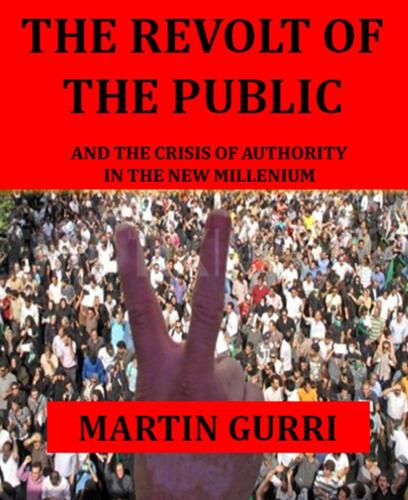
The Revolt of the Public and the Crisis of Authority in the New Millennium
by
Martin Gurri
Published 13 Nov 2018
The Economist, March 1, 2014. http://www.economist.com/news/essays/21596796-democracy-was-most-successful-political-idea-20th-century-why-has-it-run-trouble-and-what-can-be-do. Wolf, Richard. “Voters leaving Republican, Democratic parties in droves.” USA Today, December 22, 2011. http://usatoday30.usatoday.com/news/politics/story/2011-12-22/voters-political-parties/52171688/1. Wrigley, Will. “Hurricane Sandy Survivors Demand Climate Change Action From Obama.” Huffington Post, February 11, 2013. http://www.huffingtonpost.com/2013/02/11/hurricane-sandy-climate-change_n_2664563.html. Wu, Shaomei, Mason, Winter A., Hofman, Jake M., and Watts, Duncan J. “Who Says What To Whom on Twitter.” Presented at the World Wide Web Conference, 2011. https://www.google.com/search?source=ig&rlz=1G1TSND_ENUS412&q=who+says+what+to+whom+on+twitter&oq=who+says+what+to+&gs_l=igoogle.1.0.0l4j0i22i30l6.721.6896.0.9037.27.18.5.3.3.0.146.1984.2j16.18.0...0.0...1ac.1.12.igoogle.whZprrhhgcY.
…
[209] Climate Change 2013, The Physical Science Basis: Summary for Policymakers, Intergovernmental Panel on Climate Change, Cambridge University Press, 2013, https://www.ipcc.ch/report/ar5/wg1/docs/WGIAR5_SPM_brochure_en.pdf . [210] Will Wrigley, “Hurricane Sandy Survivors Demand Climate Change Action From Obama,” Huffington Post, February 11, 2013, http://www.huffingtonpost.com/2013/02/11/hurricane-sandy-climate-change_n_2664563.html. [211] “Remarks by the President on Climate Change,” The White House, June 25, 2013, http://www.whitehouse.gov/the-press-office/2013/06/25/remarks-president-climate-change. [212] “Are Things Getting Better?
…
“Warming of the weather system is unequivocal,” the IPCC warned in 2013, “and, since 1950, many of the observed changes are unprecedented over decades to millennia.”[209] The fault lay with us, more particularly, with our economic system: global warming was “anthropogenic,” human-made. Our punishment took the form of extreme weather events like the killer hurricane Sandy, which devastated New York City in 2013. An environmentalist group claimed to have gathered 280,000 signatures of Sandy “survivors” petitioning the White House for “climate action now.”[210] President Obama agreed to the extent of turning to accusatory mode on the subject. Rising ocean levels had “contributed to the destruction” in New York, he charged, and the cost of extreme weather events could be “measured in lost lives and lost livelihoods, lost homes, lost businesses, hundreds of billions of dollars in emergency services and disaster relief.”[211] The economy was getting worse.
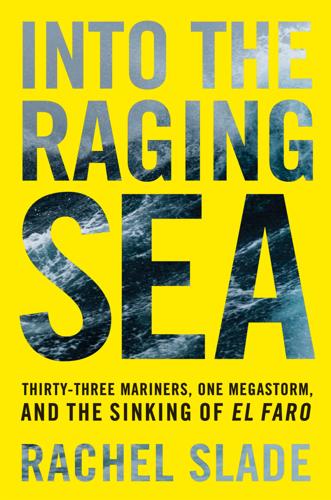
Into the Raging Sea
by
Rachel Slade
Published 4 Apr 2018
That’s why hurricanes in the Northern Hemisphere occur late in the season, after the summer sun has warmed the southwestern Atlantic up to 84 degrees. As oceans continue to warm due to climate change, hurricanes will get more intense because they’ve got more fuel to convert to energy. We’ve already witnessed proof of this; several tropical cyclones have broken records in the past decade alone. Hurricane Sandy, which pounded the New Jersey and New York coasts in October 2012, was the largest Atlantic hurricane on record, spanning eleven hundred miles. A year later, Typhoon Haiyan in the Philippines became the strongest tropical cyclone to hit land ever recorded, with one-minute sustained winds recorded at an astounding 195 miles per hour, killing at least sixty-three hundred people.
…
She would have died if it hadn’t been for the chief mate, Robin Walbridge, who violently shoved her into the water right before she hit the deck. She made out with a few cracked ribs and a broken wrist. Robin later became known as the captain who took the replica of the HMS Bounty out to sea during Hurricane Sandy and died with the ship when she was swamped by the storm. Shipping out all the time made it difficult for Danielle to keep up relationships, which she valued more than anything. She was gone half the year and began to realize how much she was missing. “She was at a point in her life where she was ready to move on,” her friend says.
…
The US Coast Guard’s DC headquarters maintains a thick file of marine accidents, more than fifty-four hundred each year of varying magnitudes—from a tugboat engine explosion that killed the chief engineer aboard; to a giant oil drilling rig that broke free from its towlines in thirty-five-foot seas, beached on an island in the Gulf of Alaska, and threatened to dump 150,000 gallons of diesel onto the coastline; to the sinking of the three-masted HMS Bounty, caught in Hurricane Sandy, that took the life of Robin Walbridge, the ship’s captain, and a crew member. Among the cases in the coast guard’s file, Neubauer knew of just three major American ship casualties in peacetime; none of those losses involved cargo ships like El Faro. One was the SS Edmund Fitzgerald, which sunk in a storm on Lake Superior in 1975.
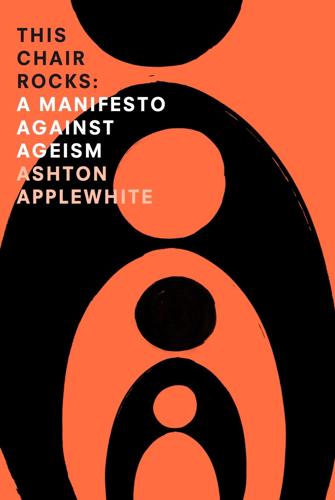
This Chair Rocks: A Manifiesto Against Ageism
by
Ashton Applewhite
Published 10 Feb 2016
There’s nothing wrong with being a confident woman in her sexual prime enjoying younger partners and making love instead of babies—as long as we claim it, but the scrutiny is intense and far from neutral. No one paid much attention to Demi Moore’s sex life until she swapped Bruce Willis for Ashton Kutcher. Men can get the same treatment, as in the New York Times review of the 12-12-12 concert to benefit Hurricane Sandy victims. Snarkily titled “The Music Is Timeless, but About the Rockers …” reviewer Alex Williams sneered at the star-studded line-up, describing their “visible aging” as “tragic” and scolding them for not “keeping their clothes on” in public. “It’s like hearing that your grandparents still have sex: bully for them, but spare us the details,” he concluded primly.
…
The market price of slaves peaked at thirty-five but remained high into their late seventies, evidence of their lifelong value in the labor force.18 Modern-day age discrimination affects productivity and profits. When olders are forced out or encouraged to accept early retirement, companies lose some of their best workers and irreplaceable institutional memory. After Hurricane Sandy devastated the East Coast in October 2012, what saved New York City hundreds of millions of dollars and brought the subway system back to life extraordinarily fast? The historical knowledge of Metropolitan Transportation Authority engineers and track workers and carpenters, many of whom had spent their entire working lives keeping this vast system running.
…
Yet the specter of spending our last years with only cats and cable for company haunts many of us. Isolation can be unsafe Virginia and I can afford to locate the Home for Superior Women out of the reach of rising waters, unlike seventy-six-year-old Avgi Tzenis, whose house in Sheepshead Bay, Brooklyn, was wrecked when three feet of water and sewage swept through with Hurricane Sandy in October 2013. Tzenis had been widowed in 2012, after years of nursing her husband through dementia. Six weeks after the storm, she was still in the cold and dark without any idea how to pay for repairs. Hers is a story about poverty and infrastructure collapse and climate change, but also about the perils of social isolation.
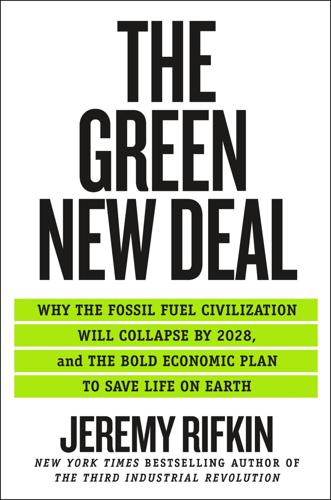
The Green New Deal: Why the Fossil Fuel Civilization Will Collapse by 2028, and the Bold Economic Plan to Save Life on Earth
by
Jeremy Rifkin
Published 9 Sep 2019
At the same time, we are bringing the fight against climate change straight to the fossil fuel companies that knew about its effects and intentionally misled the public to protect their profits.26 De Blasio went on to remind New Yorkers and the rest of America of the damage New York City experienced when Hurricane Sandy hit the five boroughs head-on in October 2012, leaving forty-four deaths in its wake and more than $19 billion in damage to property and infrastructure and in lost economic activity.27 People around the world watched in horror as live TV coverage showed torrents of water washing over roadways, smashing through windows into department stores, and racing down into the subways.
…
Oliver Milman, “New York City Plans to Divest $5bn from Fossil Fuels and Sue Oil Companies,” The Guardian, January 10, 2018, https://www.theguardian.com/us-news/2018/jan/10/new-york-city-plans-to-divest-5bn-from-fossil-fuels-and-sue-oil-companies (accessed February 4, 2019). 27. City of New York, Community Development Block Grant Disaster Recovery, “Impact of Hurricane Sandy,” https://www1.nyc.gov/site/cdbgdr/about/About%20Hurricane%20Sandy.page (accessed February 26, 2019). 28. Emily Cassidy, “5 Major Cities Threatened by Climate Change and Sea Level Rise,” City Fix, October 15, 2018, https://thecityfix.com/blog/5-major-cities-threatened-climate-change-sea-level-rise-emily-cassidy/ (accessed March 23, 2019). 29.
…
Tom Sanzillo, “IEEFA Update: 2018 Ends with Energy Sector in Last Place in the S&P 500,” Institute for Energy Economics and Financial Analysis, January 2, 2019, http://ieefa.org/ieefa-update-2018-ends-with-energy-sector-in-last-place-in-the-sp-500/ (accessed April 8, 2019). 53. Alison Moodie, “New York Pension Fund Could Have Made Billions by Divesting from Fossil Fuels—Report,” The Guardian, March 4, 2016, https://www.theguardian.com/sustainable-business/2016/mar/04/fossil-fuel-divestment-new-york-state-pension-fund-hurricane-sandy-ftse (accessed February 19, 2019). CHAPTER 6 1. Morgan Stanley Institute for Sustainable Investing, Sustainable Signals: New Data from the Individual Investor, 2017, https://www.morganstanley.com/pub/content/dam/msdotcom/ideas/sustainable-signals/pdf/Sustainable_Signals_Whitepaper.pdf (accessed March 23, 2019), 1. 2.

This Changes Everything: Capitalism vs. The Climate
by
Naomi Klein
Published 15 Sep 2014
James Woolsey predicted that on a much warmer planet “altruism and generosity would likely be blunted.”52 We can already see that emotional blunting on display from Arizona to Italy. Already, climate change is changing us, coarsening us. Each massive disaster seems to inspire less horror, fewer telethons. Media commentators speak of “compassion fatigue,” as if empathy, and not fossil fuels, was the finite resource. As if to prove the point, after Hurricane Sandy devastated large parts of New York and New Jersey, the Koch-backed organization Americans for Prosperity (AFP) launched a campaign to block the federal aid package going to these states. “We need to suck it up and be responsible for taking care of ourselves,” said Steve Lonegan, then director of AFP’s New Jersey chapter.53 And then there is Britain’s Daily Mail newspaper.
…
Now the cumulative effect of those centuries of burned carbon is in the process of unleashing the most ferocious natural tempers of all. As a result, the illusion of total power and control Watt and his cohorts once peddled has given way to the reality of near total powerlessness and loss of control in the face of such spectacular forces as Hurricane Sandy and Typhoon Haiyan. Which is just one of the reasons climate change is so deeply frightening. Because to confront this crisis truthfully is to confront ourselves—to reckon, as our ancestors did, with our vulnerability to the elements that make up both the planet and our bodies. It is to accept (even embrace) being but one porous part of the world, rather than its master or machinist, as Bacon long ago promised.
…
Those policies have been criticized for favoring big developers over vulnerable communities and for using a green veneer to push through mega real estate development projects with dubious environmental benefits, as Hunter College urban affairs professor Tom Angotti and others have written. Communities heavily impacted by Hurricane Sandy, meanwhile, have claimed that Bloomberg’s post-disaster rebuilding plans were made with only token input from them. IV. Aided by investments like these, the ethanol boom was responsible for 20–40 percent of the spike in agricultural commodity prices in 2007–2009, according to a survey by the National Academy of Sciences.
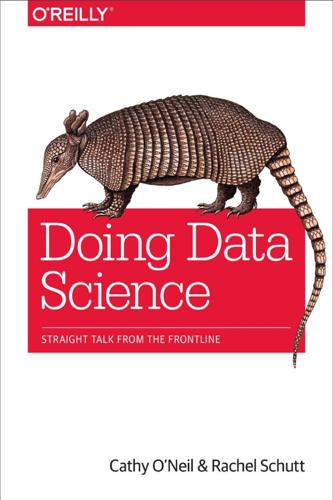
Doing Data Science: Straight Talk From the Frontline
by
Cathy O'Neil
and
Rachel Schutt
Published 8 Oct 2013
Kate Crawford, a principal scientist at Microsoft Research, describes in her Strata talk, “Hidden Biases of Big Data,” how if you analyzed tweets immediately before and after Hurricane Sandy, you would think that most people were supermarket shopping pre-Sandy and partying post-Sandy. However, most of those tweets came from New Yorkers. First of all, they’re heavier Twitter users than, say, the coastal New Jerseyans, and second of all, the coastal New Jerseyans were worrying about other stuff like their house falling down and didn’t have time to tweet. In other words, you would think that Hurricane Sandy wasn’t all that bad if you used tweet data to understand it. The only conclusion you can actually draw is that this is what Hurricane Sandy was like for the subset of Twitter users (who themselves are not representative of the general US population), whose situation was not so bad that they didn’t have time to tweet.
…
The only conclusion you can actually draw is that this is what Hurricane Sandy was like for the subset of Twitter users (who themselves are not representative of the general US population), whose situation was not so bad that they didn’t have time to tweet. Note, too, that in this case, if you didn’t have context and know about Hurricane Sandy, you wouldn’t know enough to interpret this data properly. Sampling Let’s rethink what the population and the sample are in various contexts. In statistics we often model the relationship between a population and a sample with an underlying mathematical process. So we make simplifying assumptions about the underlying truth, the mathematical structure, and shape of the underlying generative process that created the data.

Falter: Has the Human Game Begun to Play Itself Out?
by
Bill McKibben
Published 15 Apr 2019
22 To the extent that we’re planning at all, it’s for the old, low predictions of a meter or less. Venice, for instance, is spending $6 billion on a series of inflatable booms to hold back storm tides. But they’re designed to stop sea level rise of about a foot. New York City is building a “U-Barrier,” a berm to protect Lower Manhattan from inundation in a storm the size of Hurricane Sandy. But as the sea level rises, winds like Sandy’s will drive far more water into Manhattan, so why not build it higher? “Because the cost goes up exponentially,” said the architect.23 The cost is already starting to mount. Researchers showed in 2018 that Florida homes near the flood lines were selling at a 7 percent discount, a figure growing over time because “sophisticated buyers” know what is coming.24 Insurance companies are balking: basements from “New York to Mumbai” may be uninsurable by 2020, the CEO of one of Europe’s largest insurers said in 2018.25 * * * Some of the cost of climate change can be measured in units we’re used to dealing with.
…
Given that it all works so smoothly, we can be forgiven for ignoring the natural world most of the time. It is safely underground or in the walls or out of sight, at the power plant or the waste treatment station. But that smooth operation, that humming efficiency, is beginning to buckle under the pressure of a changing climate. Hurricane Sandy came ashore in New York City, channeling the energy from a record-hot Atlantic Seaboard and riding the raised level of the sea—and suddenly FDR Drive was awash in whitecaps and the South Ferry subway entrance was a cascade of saltwater pouring onto the tracks below. Napa explodes in fire; Cape Town, parched by drought, rations drinking water.
…
The ocean was a few hundred yards away—which is perfect in the sense that launching rockets here on the East Coast means that if something goes wrong, they fall into the sea; but not so perfect given that that sea is now rising. NASA started worrying about this sometime after the turn of the century, forming a Dune Vulnerability Team (a DVT, obviously). The worry accelerated dramatically after Hurricane Sandy in 2011. Sandy didn’t hit Cape Canaveral—it hit New York City—but even at a distance of a couple of hundred miles, the great storm churned up waves strong enough to break through the barrier of dunes and very nearly swamp the launch complexes. “Dunes that had previously been relatively stable for decades—suddenly they were gone,” said University of Florida geologist John Jaeger.

The Knowledge Machine: How Irrationality Created Modern Science
by
Michael Strevens
Published 12 Oct 2020
Centuries of deforestation and overgrazing allowed colossal quantities of silt to be washed into the Meander River and down into the bay that gave Miletus its access to the ocean. Year by year, the bay became shallower and then began to disappear. It is now the dry, dusty plain over which the remaining stones of Miletus preside. The last of the sea withdrew from Miletus around 1500. Five hundred years later, it came to New York City. Hurricane Sandy brought a 14-foot storm surge that flooded low-lying areas throughout the five boroughs. In the lobbies of the Financial District, waves lapped around the security cameras and the turnstiles, the filing cabinets and the flatscreen monitors. The power went out for a week. Figure 14.1. The remnants of the city of Miletus in the nineteenth century.
…
Although the IPCC aims to use a range of rankings that reflect, in some sense, the center of mass of scientific opinion, they are subjective all the same: they are not derived from the objective evidence, but are rather what must be added to the evidence to induce it to begin to talk. It follows, says Stephen Schneider, a lead author of several of the IPCC reports, that “if we care about the future, we have to learn to engage with subjective analyses.” Figure 14.3. Hurricane Sandy floods the Brooklyn-Battery Tunnel in New York City, October 29, 2012. We do indeed. Interpretation requires a worldview. Kuhn taught that science is blind to any worldview other than the prevailing paradigm. He overstated its intelligence and sophistication: it is blind to worldviews altogether.
…
D., 76 fossil record, 175–77 four innovations that made modern science, 119 fractals, 210, 216–17, 217, 236 frame-dragging effect, 34, 36 fraud in science, 47–48, 59 Fürbringer, Max, 220 Galápagos Islands, 35 Galilei, Galileo and beauty, 227 and empirical inquiry, 243, 244 heresy conviction, 316n and mathematical foundation of physics, 194 and nature of light, 290 and planetary motion, 106 Galison, Peter, 154 gases, 143 Gawande, Atul, 59, 61–62 Gell-Mann, Murray, 146, 229–36, 265, 273 generalization, See inductive reasoning general theory of relativity, 34–35, 41–42, 49, 111–12, 155–61 See also eclipse expedition (Eddington) Genesis (biblical book), 276 “Genetic Studies of Genius,” 36 genius, IQ and, 36, 297n “Geological Age of Reptiles, The” (Mantell), 175 geology, 74–81, 175–83 geometrical transformations, 221–27, 223 “germs,” spontaneous generation and, 51, 82 Giere, Ronald, 296n Gilbert, Elizabeth, 66–67 Glaisher, James, 169–70 Glaser, Donald, 228 glass pane experiment, 94–95 God; See also religion account of creation of humanity in Genesis, 276 in Cartesian natural philosophy, 205–6 and Cartesian philosophy of knowledge, 270–71 in Cartesian physics, 133 Newton and, 187, 188 Newton’s Anglican ordination crisis, 250–52 and Oration on the Dignity of Man, 269–70 and Scoresby’s snowflake images, 169 and theory of special creation, 28 and Whewell’s History of the Inductive Sciences, 178–82 in Whewell’s theories, 176–78 gold, 185 golem, science as, 285–88 Golgi, Camillo, 153–55, 161–62 Gopnik, Alison, 265 Gould, Stephen Jay on diversion of science and humanities, 274–75 extrascientific interests, 265 on science and religion as nonoverlapping areas of inquiry, 207 on “science wars,” 263 Grand Design, The (Hawking and Mlodinow), 260 Grant, Peter and Rosemary, 35, 36 gravitational bending angle, 112 gravity Aristotelian physics, 27–28, 133–34 Cartesian physics, 131–33 development of theories of, 27–28, 136–7 Einsteinian physics, See general theory of relativity Newtonian physics, 27–28, 40, 68, 111, 136–40, 188, 195 Gravity Probe B experiment, 34, 34–36, 114 Great Method Debate, 6, 13–86; See also methodism/methodists; subjectivity and Baconian convergence, 112 iron rule and, 8 Thomas Kuhn and, 22–33, 31, 36, 38–40, 46–47, 57, 85–86 lack of consensus about nature of, 5 Karl Popper and, 13–22, 38–40 and radical subjectivism, 63 and single-minded focus on data collection, 33–37 The Structure of Scientific Revolutions and, 23–24 subjectivity and, 85 Great War (World War I), 14 Greece, ancient, 1, 2, 142–43, 242 Greek astronomical system, 26–27 Greek natural philosophers, 5 Greek philosophy, 117 Greene, Brian, 235 Greenwich Observatory (England), 69, 69 Grosseteste, Robert, 117 growth, laws of, 225–26 Guillemin, Roger, 33–34, 60–63, 61, 99 gyroscopes, 34, 36 hackberry trees, 37 hadrons, 230 Haeckel, Ernst, 47–48 Halley, Edmond, 141 Hanging, The (Callot), 247 harmony, 209; See also beauty Harris, Geoffrey, 21 Harvey, William, 312n Hawking, Stephen, 173, 260 heat, physics of Bacon and, 107–8 and Kelvin’s estimate of earth’s age, 76–77 kinetic vs. caloric theory, 90–94 “heat rays,” 92, 94, 95 Hedgehog, the Fox, and the Magister’s Pox, The (Gould), 275 Heilbron, John, 151 Hellmann, Gustav, 170–71 Helmholtz, Hermann von, 301n Heraclitus, 2, 117 heresy, 250, 316n Herschel, John, 173, 174, 219, 236 Higgs boson, 101 historical question about science, the, See science, late arrival of History of the Inductive Sciences (Whewell), 178–82 Hitler, Adolf, 13 Hobbes, Thomas, 243, 316n Holy Roman Empire, 129 Holy Trinity, 250–52, 316n Homage to Newton (Pittoni painting), 141, 142 Homo erectus, 223, 240 Homo neanderthalensis, 240 Hooke, Robert, 168–69, 169 Hradčany Castle (Prague), 245 Human Genome Project, 181 humanism, 269–77 human nature, suppression in scientific method, 8–9 Hume, David, 16–18, 21, 140 Hurricane Sandy, 278–79, 289 Huxley, Thomas, 76–78 Huygens, Christiaan, 194 Hydrozoa, 221 hypothalamus, 33, 99, 296n, 304n hypotheses (generally) Bacon and, 109–10 in IPCC reports, 288 Newton and, 137, 191, 311n–312n Ibn Sīnā, 117 idols (Baconian concept), 107, 109, 187, 192 inductive reasoning (induction), 15–18, 21–22 industry-sponsored research, 52–53, 84 infrared radiation, 92 innovations that made modern science, 119 Inquisition, 316n Institute for Theoretical Physics (Copenhagen), 145 Intergovernmental Panel on Climate Change (IPCC), 288–89 interpretation of evidence logical impossibility of finding objective rule for, 79–82 subjectivity of, 57–58, 62–65, 79–82, 92–93, 288–89 IQ tests, 36, 297n iron rule of explanation, 8, 93–104 aesthetics and, 208–38, 237 and Aristotle’s approach to inquiry, 203–4 and Baconian convergence, 112–14, 116–17 “Capulet” and “Montague” (hypothetical matchup of two scientists), 89–96, 103 and critical spirits, 281–82 defined, 293 difficulty of teaching, 258–59 dissemination of, 257–60 Eddington and, 160 elements of, 96–97, 103 as essential ingredient for thriving science, 283 establishment of rules, 100–101 exclusion of nonempirical considerations from, 180–82 exclusion of philosophy from, 118, 207–8 exclusion of religion from, 204–7 explanatory relativism and, 128–29 first modern scientists’ relationship to, 265–67 as game, 100–102, 128–29, 164–65, 181–82, 203 indifference to metaphysics of causal principles, 147 Kuhn’s rules of science vs., 304n methodological innovations encompassed by, 117–19 and methods outlined in Principia, 137, 191, 248–49 moral strategy for teaching, 258–59 negative clause, 118–19, 195 Newton and, 142, 191–92, 245, 273 Newton’s law of universal gravitation and, 188 Newton’s outlining of essential aspects, 137–38 objectivity and, 118, 162 principle of total evidence and, 315n procedural consensus and, 117–18 quantum mechanics and, 147, 150, 151 rigid specifications for public announcements, 118 scientific argument vs. private reasoning in, 163–64, 181, 235, 238, 249–51, 264–66, 273 and Scientific Revolution, 243 scientific vs. unscientific reasons, 181 and seventeenth century natural philosophy, 192–94 and shallow conception of explanation, 142, 195 simplemindedness and, 259–60 as sine qua non of modern science, 202 sterilization and, See “sterilization” of scientific argument string theory and, 284–85 supremacy of observation in, 173–97 and tedium of empirical work, 256 and theoretical cohorts, 139–40 and Tychonic principle, 116 Whewell and, 180, 191, 205 irrationality and “golem” model of science, 287 of iron rule, 9, 201–8, 237–38 and science education, 256–57 and Scientific Revolution, 242 and teaching of iron rule to Atlanteans, 258 Jahren, Hope, 37, 255 James I (king of England), 105 Jesus Christ, 187, 250–52 Jupiter (planet), 106 Kamlah, Andreas, 296n Kant, Immanuel, 136 Keller, Alexander, 300n Kelvin, Lord (William Thomson), 74–79, 81–85, 181 Kennefick, Daniel, 298n Kepler, Johannes, 27, 106, 193 Keynes, John Maynard, 188, 212, 214 kinetic theory of heat, 90–92, 94, 108, 109 Krauss, Lawrence, 261 Kuhn, Thomas, 6, 31 and Aristotle’s physics, 123–24 belief in science’s power to create new knowledge, 32–33 birth and early years, 22–23 commonalities with Popper, 38–40 on Copernicanism, 27 and Copernican revolution, 26–27 and crisis, 28 and dogmatism, 258 and Eddington’s eclipse expedition, 46–47 errors in paradigm concept, 46–47, 238, 298n extraphilosophical claims, 40 and history of gravity, 137 and iron rule of explanation, 102, 103 on motivation, 38, 116, 203, 282 and objectivity, 85–86 and partisans, 57 on prevailing paradigm as sole worldview of science, 289 recommendations for healthy science, 282–83 on relation of experimental inquiry to paradigm, 36 on rules of science, 304n Lab Girl (Jahren), 255 Laboratory Life (Latour and Woolgar), 61 Lakatos, Imre, 30 lambda (subatomic particle), 228, 230 Language of God, The (Collins), 181 Large Hadron Collider, 81 latitudinarianism, 75 Latour, Bruno, 60–63, 68 “law of higgledy-piggledy,” 219, 236 Lawrence, D.

The Zero Marginal Cost Society: The Internet of Things, the Collaborative Commons, and the Eclipse of Capitalism
by
Jeremy Rifkin
Published 31 Mar 2014
Crop Yields Under Climate Change,” Proceedings of the National Academy of Sciences of the United States of America 106(37) (September 15, 2009), http://www.ncbi.nlm .nih.gov/pmc/articles/PMC2747166/ (accessed July 22, 2013). 51. Andy Newman, “Hurricane Sandy vs. Hurricane Katrina,” New York Times, November 27, 2012, http://cityroom.blogs.nytimes.com/2012/11/27/hurricane-sandy-vs-hurricane-katrina/ (accessed June 11, 2013). 52. Ibid. 53. “Status of the Nuclear Reactors at the Fukushima Daiichi Power Plant,” New York Times, April 29, 2011, http://www.nytimes.com/interactive/2011/03/16/world/asia/reactors-status.html (accessed June 22, 2013); Mitsuru Obe, “Japan Finds Radiation Spread over a Wide Area,” Wall Street Journal, August 31, 2011, http://online.wsj.com/article/SB10001424053111904332804576540131142824362.html (accessed June 22, 2013). 54.
…
Loss of electrical power also has a cascading effect on other parts of the infrastructure since electricity is needed to maintain communication, water treatment plants, pumping stations, ICT equipment, gasoline pumps, etc. High-intensity water-related events also damage roads, bringing freight and commuter traffic to a standstill, with severe impacts on the economy. Rail transport is also affected by washed-out rail lines. Subways are vulnerable to flooding, as was the case in New York when Hurricane Sandy swept down into the tunnels, filling them with water across lower Manhattan. Some subway service was out for days and weeks.57 Extreme wind and storms are also increasingly shutting down airports and backing up air traffic over connecting regions. Seaports and inland waterways are likewise experiencing downtime from an increase in floods, more droughts, and even more dense fog.
…
They worry that with dynamic pricing monitoring meters available at every micropower site—alerting the owner about moment-to-moment changes in the price of electricity—small generators of electricity might program their system to only sell to the main grid when the price is high and go off-grid and use their electricity when they choose. The shortcomings of this system became apparent in the aftermath of Hurricane Sandy, when electrical power on Long Island and in the New Jersey coastal towns went out. Many homes and offices with installed solar panels on their roofs were unable to deploy them. Ed Antonio, a homeowner in Queens, equipped his home with a $70,000 solar system powered by 42 solar panels; it went unused, as did similar green micropower systems in the region.

The Most Good You Can Do: How Effective Altruism Is Changing Ideas About Living Ethically
by
Peter Singer
Published 1 Jan 2015
In order to promote sustainable living as well as compassion for sentient beings all meals served in Tzu Chi hospitals, schools, universities, and other institutions are vegetarian. From the perspective of an effective altruist, Tzu Chi does some surprising things. After the earthquake and tsunami that hit Japan in 2011, Tzu Chi raised funds to distribute hot meals to survivors, and in the wake of Hurricane Sandy, which battered New York and New Jersey in 2012, Tzu Chi distributed $10 million dollars worth of Visa debit cards, with $600 on each card, to victims of the storm.7 When I visited the Tzu Chi hospital in Hualien, I asked Rey-Sheng Her, a spokesman for Tzu Chi, why the organization would give aid to the citizens of wealthy countries like Japan and the United States, when the money could do much more good if used to help people in extreme poverty.
…
M., (i)n12 Hassenfeld, Elie, (i) health economics, (i) Heifer International, (i) Hobbes, Thomas, (i) Hokama, Rhema, (i) housing, donating for, (i) Humane League, (i), (ii) human life: value of, (i); value of (strangers vs. loved ones), (i), (ii), (iii), (iv) Hume, David, (i), (ii), (iii) Hurricane Sandy, (i) hyperdense “strange matter,” (i) identifiable vs. unknown recipients, (i), (ii), (iii) income: and charitable giving percentages, (i); global, (i); and happiness/well-being, (i). See also poverty Innovations for Poverty Action, (i), (ii), (iii) instrumentalist view, (i) intensive care for newborns, (i) Interpersonal Reactivity Inventory, (i) investment banking career, ethics of, (i), (ii), (iii) IQ test scores, (i) Jameel Poverty Action Lab (J-PAL), (i), (ii) Japan earthquake and tsunami, (i) Jesus.
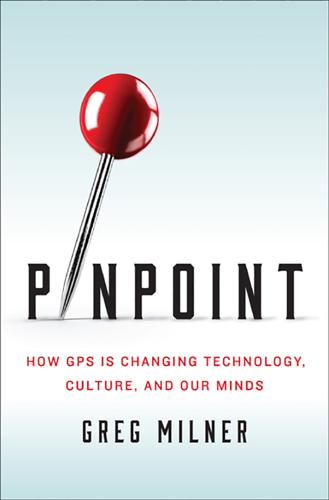
Pinpoint: How GPS Is Changing Our World
by
Greg Milner
Published 4 May 2016
GPS-enabled stickiness can yield fascinating insights about the way people and animals move through the world. Civil engineers at the University of Illinois analyzed GPS data from 700 million New York City taxi rides to learn more about traffic patterns in the city and how natural disasters like Hurricane Sandy affect them. “There is a heartbeat pattern to the city every single day,” one of the researchers explained. “The data shows us the typical heartbeat, and then we look for the arrhythmia.” Stickiness gets insidious when we expand our definition of GPS to include other position indicators. Every few seconds, your mobile phone pings the nearest tower to let it know where you are if a call comes in.
…
Jones was informed by an amicus brief in support of Jones submitted by the Center for Democracy and Technology and the Electronic Frontier Foundation, cosigned by GPS godfather Roger Easton, as well as by an interview with Jim Dempsey, vice president for public policy at the Center for Democracy and Technology. 190 “In effect”: Lyle Denniston, “Opinion Recap: Tight Limit on Police GPS Use (Final Update),” SCOTUS blog, January 23, 2012, http://www.scotusblog.com/2012/01/opinion-recap-tight-limit-on-police-gps-use/. 191 “build situational contexts”: Mary Shacklett, “GPS Serves a Role in Big Data Stickiness,” TechRepublic, February 27, 2015, http://www.techrepublic.com/article/gps-serves-a-pivotal-role-in-big-data-stickiness/. 192 “There is a heartbeat pattern”: Celeste Arbogast, “Taxi GPS Data Helps Researchers Study Hurricane Sandy’s Effect on NYC Traffic,” University of Illinois at Urbana–Champaign College of Engineering, October 25, 2014, http://engineering.illinois.edu/news/article/9717. 195 first wave of these house arrest systems: Joseph Hoshen, George Drake, and Debra D. Spencer, “Wide-Area Continuous Offender Monitoring”, Proceedings of the International Society for Optics and Photonics 2938 (1997), 166. 195 1987–94 statistics: J.
…
C/A code of, 76–77, 82, 83, 97 pseudorandom digital code of, 55 selective availability (SA) of, 94–95, 99–100 “spoofing” experiments with, 147–52, 157–58, 161, 167–69 GPS Systems Group, 203 Gran Sasso Mountain, 155–56 Gravesend Bay, 249 gravity, 131, 231–32, 245, 247, 250–51, 257 Gravity Recovery and Climate Experiment (GRACE), 231–32, 286 Great Western Sugar Company, 74–75 Greece, 168 Greeley, Horace, 73 Green, Gaylord, 56–57, 61, 63, 75, 88, 93, 94, 250 Green Berets, 72 Greenland, 205 ice sheet of, 232–34 Mid-Ice (Eismitte) station on, 232–33 Greenwich, England, 25, 44 Greenwich Mean Time, 26, 154 Grijalva River, 161 Ground-Based Augmentation System (GBAS), 171–72, 181–82, 200 Guier, William, 35–38 Guinea, Gulf of, 204 Gulf of Alaska, 138 Gulf War, 47–48, 64–70, 126 bombing in, 66–67 Coalition forces in, 65, 67, 96 GPS used in, 48, 65–69, 90 Operation Secret Squirrel in, 69–70 Project Normandy of, 65–66, 69 H4 chronometers, 26 Hagen, John, 29–30, 33, 34 Haiti, U.S. intervention in, 98 Halley, Edmund, 24 Hamilton, Rick, 168 Harrison, John, 26 Hartford Courant, 34 Harvard University, 41, 117 Business School of, 81 psychology department of, 172–73 Hassler, Ferdinand, 248–49 Hawai’i, 5, 10, 12, 38, 106–8, 122, 264–65 Big Island of, 107–8 Lanai Island of, 266 Molokai Island of, 266 statehood of, 107 Hayward Fault, 203, 224 heiau (Hawaiian temple), 107–8, 108 Heller, Joseph, 253 Herring, Thomas, 213–14, 246–47, 253 Hess, Harry, 207 Hewitt, Ron, 164 Hewlett-Packard, 77–81, 83, 88 Heyerdahl, Thor, 12 hijacking, 146–48 Himalayan Mountains, 206, 208 Ho Chi Minh City, 64 Ho Chi Minh Trail, 51 Hokkaido, 217–18 Hokule’a, 265–66 Holub, Kirk, 227–28 Homeland Security Department, U.S., 143, 151, 164–66, 171 homosexuality, 173–74 Honey, Stan, 122 Honeywell, 195 Honolulu, 265 Hopper, Dennis, 64 Horner, Chuck, 47–48, 63–66, 68–70 Hornet Mini helicopters, 151–52, 168–69 Hough, Fred, 250 Hough Team, 250 House of Representatives, U.S., Homeland Security Committee of, 152 HP 9825 computer, 79 Hudnut, Ken, 226 Hudson River, 170 Hull, Clark, 117 human rights, 187–88, 198 Humboldt, Alexander von, 6–7, 20, 27–28 Humphrey, Hubert, 38 Humphreys, Todd, 149–53, 157–58, 161–64, 167–69, 184–85, 280 Hungary, 167 Hunt, Norm, 90 hunter-gatherers, 17 Hurricane Sandy, 192 Hussain, Iftikhar, 134 Hussain, Zohra, 134 Hussein, Saddam, 63 Hutchinson, Alex, 118, 133 Huygens, Christiaan, 246 hydroelectric dams, 161 hydrogen bomb simulations, 36 hydrogen maser, 41 hypothermia, 136 IBM, 30, 80 Iceland, 230 Idaho, 111–12 ID scanners, 146 Igloo White program, 52 Illinois, University of, 191 Independence Mountains, 134 India, xvii, 105, 166, 183, 206, 244 power blackouts in, 160 Indiana Harbor and Ship Canal, 134 Indonesia, 3, 4 information technology (IT), 191 Inside GNSS, 166 Institute of Navigation Expo of 1990, 88 International Bureau of Weights and Measures (BIPM), 154 International Geophysical Year (1957–58), 28–30, 31, 32, 36, 252 U.S.

Cuba Travel Guide
by
Lonely Planet
The beaches are smaller here than those on the northern coast but there’s fishing, and some 70 scuba-diving sites nearby, including the Guarico, a small steel wreck just south of Playa Sigua. Baconao is also famous for its crabs. From mid-March to early May tens of thousands of large land crabs congregate along the coast beyond Playa Verraco. HURRICANE SANDY Eastern Cuba is no stranger to hurricanes, but when Hurricane Sandy struck in late October 2012 it caused particularly severe detriment to Siboney, La Gran Piedra and Parque Baconao (not to mention an estimated US$2 billion of damage nationwide). Once-lovely beaches like those at Siboney suffered devastatation. The dive center-hotel of Club Bucanero was levelled and the damage is clear further away from the coast, too, with the hillsides below La Gran Piedra depleted of many trees.
…
Villa Turística Punta Piedra HOTEL $ ( 59-70-62, 59-44-21; s/d CUC$28/40; ) On the main road 5km west of Marea del Portillo and 11km east of Pilón, this small low-key resort, comprising 13 rooms in two single-story blocks, makes an interesting alternative to the larger hotels. There’s a restaurant, and an intermittent disco located on a secluded stretch of sandy beach. Staff will be delighted (if absolutely gobsmacked) with your custom! Getting There Away The journey east to Santiago is one of Cuba’s most spectacular, but, since Hurricane Sandy, only passable in a 4WD. If you hike it to Las Cuevas, you can pick up public transport there (even that’s sporadic). There aren’t even any amarillos here. The occasional Cuban buses do run via Pilón to Bayamo; ask around. Cubacar ( 59-70-05; ) has a desk at Hotel Marea del Portillo. Getting Around The hotels rent out scooters for approximately CUC$24 a day.
…
All these events have earned Santiago de Cuba the title ‘Hero City of the Republic of Cuba.’ Santiago continued to grow rapidly in the years that followed the Revolution, and a construction boom in the 1990s gifted the city a new theater, a train station and a five-star Meliá hotel. In October 2012 Hurricane Sandy wrought havoc along the province’s coast. Santiago de Cuba Street Names Welcome to another city where the streets have two names. Old name New name Calvario Porfirio Valiente Carniceria Pío Rosado Enramada José A Saco José Miguel Gómez Havana Paraíso Plácido Reloj Mayía Rodríguez Rey Pelayo Joaquín Castillo Duany San Félix Hartmann San Francisco Sagarra San Gerónimo Sánchez Hechavarría San Mateo Sao del Indio Santa Rita Diego Palacios Santo Tómas Felix Peña Trinidad General Portuondo Top of Chapter Santiago de Cuba pop 444,800 You can take Santiago de Cuba in one of two ways: a hot, aggravating city full of hustlers and hassle that’ll have you gagging to get on the first bus back to Havana; or a glittering cultural capital that has played an instrumental part in the evolution of Cuban literature, music, architecture, politics and ethnology.
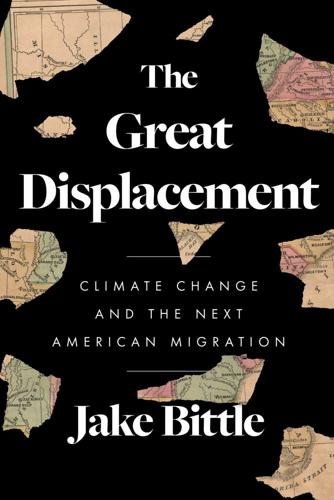
The Great Displacement: Climate Change and the Next American Migration
by
Jake Bittle
Published 21 Feb 2023
At the time, neither the students nor the long-neglected residents were under any illusion that the flooding would ever get fixed, but it was interesting to get a sense of the problems. The students drew up plans for berms, pump stations, and tidal parks, and then shoved those plans in a metaphorical drawer. Then, three years after 2012’s Hurricane Sandy, as coastal cities began to wake up to the necessity of adapting to storm surge, the city of Norfolk hosted an event with the Dutch government to explore solutions to the city’s flood problems. City officials, architects, community leaders, and dike experts from the Netherlands collaborated on adaptation plans for around a dozen Norfolk neighborhoods, and the participants used the architecture students’ mothballed survey as a basis for the Chesterfield Heights proposal.
…
Others, arguing for the interests of the American taxpayer, say these homeowners made their own choices and that they cannot expect Congress to offer them a do-over. Indeed, there’s only one thing everyone agrees on. It is time to retreat. * * * A. R. Siders was at Columbia University when Hurricane Sandy struck New York and New Jersey. The storm surge gobbled up sections of the Atlantic coast overnight and flattened whole neighborhoods in Brooklyn, Queens, and Staten Island. Floodwater sluiced through the subways and the power went out in lower Manhattan for a period of days. Even all the way uptown on the Columbia campus, Siders could feel the city in a state of shock.
…
agriculture, 184–92, 193, 194–97, 203–4, 270–73, 281 Ak-Chin Indian Reservation, 189, 191 American West, 182–83, 193, 206, 281 Arizona: cotton production in, 184–92, 193, 194–97, 203–4 drought in, 179–84, 202, 267 Gila River Indian Community reservation and, 186, 206–11 groundwater usage of, 187–90, 193, 195–96, 199, 200–206, 264, 272, 276 housing markets in, 201–6 land development in, 197–201, 206 See also specific cities Arriaga, Henry, 83–85, 86, 256 Arriaga, Vanessa, 83–84, 86 Atlanta, Georgia, 262, 268, 273, 275 Baker, Lenore, 17–18, 20, 27–28 Barnett, Lincoln, 38, 61 Beale, Gabriella, 216–18 Biden, Joe, 277–78, 281 Big Pine Key, Florida, 3–11, 13, 14–19, 22, 25, 28, 30, 89 Boise, Idaho, 257–59 California: boom industries of, 77–78, 80 coastal erosion in, 245 housing markets in, 98, 265 housing shortage in, xiv, xvii, 77–79 Proposition 13, 78–79 wildfires in, xiii–xv, xvi–xvii, 69–76, 77, 81, 87–92, 98, 100–102, 182, 257, 258, 265, 282 See also specific cities California Environmental Quality Act (1970), 79 California FAIR Plan, 100 Camp Fire, xiv, 98, 257–60 Cargill, 271–72 Caribbean Sea, 13, 144, 254 Carrino, Mark, 71–72, 75, 95–96 Carrino, Vicki, 71–72, 75, 95–96 Casa Grande, Arizona, 186–87, 192, 205, 264 Caywood, Nancy, 186–89, 192–94, 202–4, 207, 208 Central America, 276–77 Central Arizona Groundwater Replenishment District (CAGRD), 200–206, 210, 322n Central Arizona Project, 188–91, 194–95, 209, 210 Central Asia, 278 Cerberus Capital Management, 168–69, 170, 316n Chesapeake Bay, 220–22, 245, 328n Chicago, Illinois, 268–69 China, 252, 278–79 Chitimacha people, 106–7, 123 Choctaw people, 106–7, 123 climate action, 251–52 climate adaptation, 220, 231–32, 234–35, 280–81, 285 climate change: displacement caused by, xv, xvi, xvii, xix–xxi, 65, 123–24, 255, 292n droughts and, 182 dynamics of, 12–13, 251 global jet stream and, 174 hurricanes and, 13, 157, 165, 294n rainfall in urban areas and, 159–60, 174 wildfires and, 92, 102, 182 climate migration and migrants: characteristics of, xv–xvi, 12 diffuse nature of, xvi, 12, 182 domestic migration, 261–62, 277, 279, 284–85 government coordination of, 37, 133, 282–83 implications of, 255 international migration, 277–78, 279, 282–85 long-distance patterns, 257–60 Louisiana bayou communities and, 106, 133–34 managed retreat and, 244–48 moderate temperature zone and, 267–71, 274 motivations of, 20 safe havens and, 274–79 urbanization and, 261–62, 272–73 voluntary migrants, 259, 265–67 climate refugees: defining of, 12 destinations of, 76, 77, 248, 255, 257–63 rights of, 284–85 climate resilience, 231–36, 246, 261, 274–79, 281, 283, 336n climate stability, 254–55 Cole, Sally, 262–63 Colorado River, 188, 193–96, 200, 203, 205, 210, 264 coronavirus pandemic, 87, 166–67, 169, 174 corporations, 253, 270, 271–73, 333n Cullinan, Joseph S., 109–10 Dail, Roger, 41–42, 44–48, 49, 53, 55, 58–59 Dallas, Texas, 260, 262, 265, 268, 273, 275 Data for Progress, 281 DeMaria, Jen, 3, 5–8 de Vries, Danny, 57 displacement: affordable housing shortage and, xiv, xvii, xx–xxi, 22–24, 77, 81–87 characteristics of, xvi–xviii, xix, xx climate change as cause of, xv, xvi, xvii, xix–xxi, 65, 123–24, 255, 292n drought and, 206 evolution of relocation and, 37 inequality and, xvii–xviii, 146–47 insurance companies and, 82, 93 internal displacement, 256–57, 277, 279 long-term displacement, xix, 255 negentropy and, 256–64 patterns of, xviii, xix, 20, 22–23, 256, 262 regional migrations, xix–xx, 86–87, 265–68, 275–76 responsibility and, 279–85 short-term displacement, 255 urbanization and, 261–62, 272–73 See also climate migration and migrants; climate refugees Di Stefano, Jess, 258, 259, 264 Dixie Fire, xiii–xvii, 101 Dougherty, Conor, 78 drought: in American West, 182–83, 193, 206, 281 in Arizona, 179–84, 202, 267 wildfires and, 92, 182 DuPont, 40, 56, 58, 297n Dust Bowl, xvi, 189 Elizabeth River, Virginia, 215–16, 230–31, 240 Elliott, Jim, 149 Eloy, Arizona, 190, 192, 196 emancipated enslaved people, 36, 38–39, 64–65 energy crisis of 1973, 141–42 England, Cassy, 191–92, 194–97, 203–4 England, Don, 189–92, 195, 196 European Union, 251–52, 278 Faast, Connie, 20–22, 259 Faast, Glenn, 20–22 Facebook, 74, 75, 131–32, 253 Federal Emergency Management Agency (FEMA): disaster aid distribution and, 42–43, 136, 160, 222, 228, 280 distribution of individual grants, 16, 17 “fifty percent rule” of, 9, 22 flood history reports from, 224–25 flood zone maps of, 157–59 Florida Keys and, 16–17 government-sponsored withdrawal and, 37, 43–44, 45–48, 49, 51, 53–54, 56, 57–58, 61–62, 63, 64–65, 98, 146, 154, 172, 235, 247 Hurricane Harvey and, 165 mitigation of future flood damage and, 44, 119, 225–28, 246 remain-in-place policy of, 43 sea-level rise and, 26 Feinberg, Steve, 168 Felkins, Bob, 179–81 Felkins, Karen, 179–82, 183, 184, 193, 197 financial institutions, 242–43, 253 Flood Factor, 327n flood zones, 43–44, 145–46, 152–53, 156–58, 161, 172, 216–17, 243, 280 Florence, Arizona, 179–80, 182, 197–201 Florida Keys, 3–11, 12, 13–15, 21–30, 47, 119, 239, 259, 296n Fuentes, Becca, 160–68, 169, 173 Fuentes, Sergio, 160–68, 169, 173 Garvey, Angelica, 3–4, 10–11 Garvey, Patrick, 3–11, 18, 19–20, 30–31 Gaspari, Dustin, 170 Germany, 252 Gila River Indian Community reservation, 186, 207–10 Glass Fire, 88, 102 global warming, 26, 113, 251, 254, 285 Godfrey, Mike, 233, 234, 236 Gomez, Audelina, 150–53 Gomez, Brigido, 150–53 government disaster policy: buyout programs and, 42, 44, 45–51, 53–54, 56–58, 61–62, 146, 148–55, 244, 246–47, 280 displacement and relocation cycle, xv, xvii, xxi funding of, xvii, 280–81 housing markets and, 243–44 reform of, 283–84 rules of, 9 sea-level rise and, 26–30 severity of storms and, 43 Great Depression, 109–10 Great Migration, xvi, 254, 292n Great Recession, 58, 168, 218 Greenville, California, xiii–xv, xvii, xx, 79 Gregoire, Marie, 107, 114 Grimal, Adolf, 4, 9, 10, 31 Gulf of Mexico, 113, 272, 294n Gullah Geechee people, 124 Guzman, José, 85–89, 93 Haag, Rhonda, 27–30 Hauer, Mathew, 261–62, 268, 275 heat island effect, 268 Hohokam people, 184–85 homeless shelters, 79, 81, 83 Homestead Act, 283 Houma Navigation Canal, 307n Houma people, 106, 125, 126 housing markets: affordable housing, xiv, xvii, xx–xxi, 22–24, 77–86, 282, 295n in Arizona, 201–6 in California, 98, 265 discriminatory housing practices and, 40 displacement and relocation cycle, xv, xvii, xviii Florida Keys and, 14–15, 21 “growth machine” and, 42 Kinston, North Carolina and, 58–59 Norfolk, Virginia and, 218, 219, 223, 227, 240–43, 246 Santa Rosa, California and, 81–84, 87–89, 92, 94 sea-level rise and, 219–20, 237–38, 246 Houston, Texas: Addicks Reservoir, 161–64, 172 Barker Reservoir, 164, 172 Bear Creek Village neighborhood, 161–65, 167–73, 316n demographics of, 147–51, 155, 156, 169–73 flooding in, 143–44, 146–48, 150–57, 159–65, 172–75, 227, 267, 316n government buyout programs and, 146, 148–55, 157, 247 Hurricane Harvey and, 16, 156–62, 165, 168–72, 173, 215, 217 inequality in, 146–47, 155 lack of zoning laws in, 142, 143 Meyerland neighborhood, 157 oil industry in, 141–42, 146, 147, 155–56 pro-development policy in, 222 recession in, 147, 155, 168 speculators and investors in, 168–70, 173 Timarron Lakes neighborhood, 158–59 Tropical Storm Allison and, 144, 146, 147–48, 149, 150–51, 154, 157, 158, 172, 174, 256–57, 314n Tropical Storm Frances and, 144, 147, 150–51 White Oak Bayou in, 142, 143–45, 150, 152–53, 155 Wimbledon Champions Estates neighborhood, 158 Winchester Country subdivision, 148–49 Woodland Oaks subdivision, 312n Woodland Trails West subdivision, 142–49, 150, 151–55, 157, 161, 164, 165, 169, 170, 314n Hulland, Kristyna, 266–67 Hulland, Oliver, 266–67 Hurricane Floyd, 37, 46–48, 49, 50, 51, 59, 63–65, 98, 261 Hurricane Fran, 41, 44–45, 46, 48, 49 Hurricane Gustav, 128 Hurricane Harvey, 16, 156–62, 165, 168–72, 173, 215, 217 Hurricane Ida, xviii, 136–37, 144, 260, 272 Hurricane Ike, 128 Hurricane Irma, 4–11, 12, 13–16, 19, 21–24, 26, 30, 47, 89, 144, 259, 293n Hurricane Juan, 120 Hurricane Katrina, 64, 128, 133, 262–63 Hurricane Maria, 260–61, 275 Hurricane Matthew, 64, 65 Hurricane Mitch, 277 Hurricane Rita, 128 hurricanes, changes in, 13, 157, 254, 294n Hurricane Sandy, 234–35, 238, 244, 245 Hurricane Wilma, 21 India, 252, 278 Indigenous people: in Alaska, 124, 245, 328n in Arizona, 184–86, 206–11 in California, 89–90 federal recognition of, 125–26, 130, 131, 248 on Florida Keys, 13 of Pointe-au-Chien, Louisiana, 106, 107–12, 114–15, 117–18, 121–25, 129–30 in Washington, 245 individualism, 284 inequality, xvii–xviii, 146–47, 155, 246 Ingram, Elwanda, 52–54 Ingram, Geraldine, 53, 54 insurance companies: displacement costs and, 82, 93 floods and, 43, 91, 225–29, 241 fossil fuel projects and, 253 hurricanes and, 22, 137, 295n reform of, 281 renters insurance and, 84 replacement of homes and, 84, 85–86, 87, 88, 93–98, 99 wildfires and, xiv, 91–93, 97–102 Isle de Jean Charles, Louisiana, 118, 128, 131–34, 231, 245, 246, 328n Jarvis, Brooke, 227 Johnson, Larry, 142–44, 145 Katy, Texas, 173–75 Kinston, North Carolina: dispersal of Lincoln City population and, 49–55, 56, 57–61, 261 Lincoln City neighborhood of, 35–37, 39, 40, 41–42, 44–52, 53, 54–57, 59–62, 63, 65, 119, 133, 146, 155, 219, 235, 246, 247 Neuse River and, 40–42, 46 Kmiecik, Ruth, 258 Lake Charles, Louisiana, 260 Lane, Alex, 223–30, 232, 233 Lane, Kezi, 223–30, 232, 233 Langford, Phillip, 215–17, 220, 239 Langford, Sara, 215–17, 220, 239 Lawson, William, 38–40, 51–52 Lee, Jacob, 170–71, 172 Lopez-Grady, Belén, 302n Louisiana, xv, 105–13, 117–18, 144, 305n See also specific cities Louisiana Land and Exploration Company, 110–11, 120–25 Lustgarten, Abrahm, 292n Maconaughey, Debra, 22–25 Mattson, Damon, 98–100, 102 Mattson, Lisa, 98–100, 102 Mazzola, Cindy, 147–51, 256–57 Merrill, W.
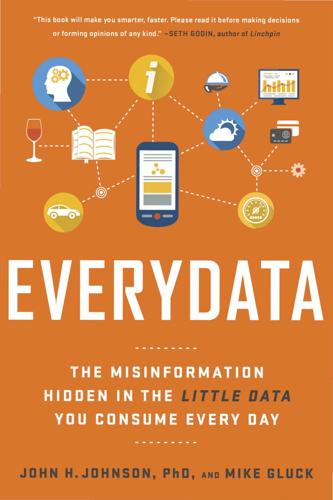
Everydata: The Misinformation Hidden in the Little Data You Consume Every Day
by
John H. Johnson
Published 27 Apr 2016
With complex forecasts—such as determining where a hurricane will make landfall—forecasters may look at a set of models. Even small changes in the model may have an impact on a forecast. For example, according to an article on IEEE Spectrum (Tekla Perry, “Predicting Hurricane Sandy,” accessed August 2, 2015, http://spectrum.ieee.org/tech-talk/computing/software/predicting-hurricane-sandy) simply using two different computers to run the same software may result in two different outcomes, since each computer may run calculations in a different order. But if the forecasters make minor changes and still find consistency in the various forecasts, they can rest (somewhat) assured that the models are accurate. 15.
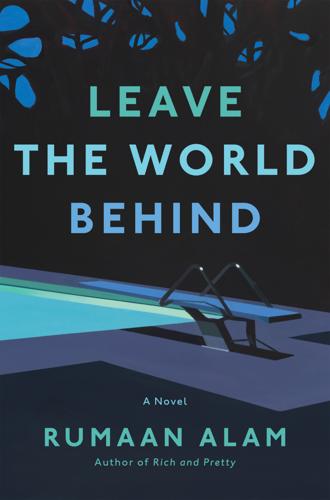
Leave the World Behind
by
Rumaan Alam
Published 15 Dec 2020
She’d looked out at the black night and shivered. She’d put a hand on G. H.’s knee. She’d thought about this place, this house, solidly made and tastefully furnished, beautifully situated and absolutely safe but for the complication of these people in her kitchen. “That’s an understatement.” “A blackout. Like Hurricane Sandy.” Clay recalled unfounded reports of an explosion, Superfund sludge from the Gowanus spilling into the water supply, every sip a carcinogen. They were without power a day and a half. It had been a kind of charming emergency; hunker down with playing cards and books. When the lights came back on, he had baked an apple pie.
…
This was the third time she’d explained it; the information felt even more meaningless now. “Let me get you some coffee,” Clay said. He felt embarrassed, undressed. “A hurricane. That’s something.” Ruth tried to make it mean something. “Is it?” Clay handed her a mug (her mug). “Well, yes, maybe it’s related. To the power outage. That could be. There was Hurricane Sandy, of course. I don’t remember hearing that this one was bound for New York, but I wasn’t paying close attention, I have to admit.” They’d all heard, she knew, that those storms of the century were going to be storms of the decade. That there might have to be a new category introduced to accurately describe the kinds of storms, now that humankind had so altered the ocean.
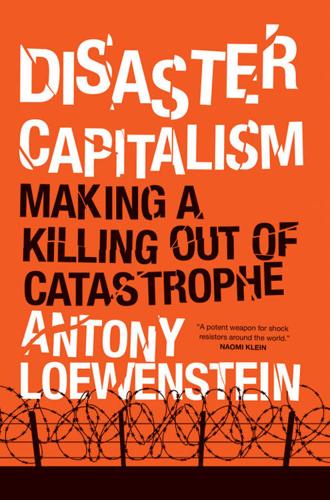
Disaster Capitalism: Making a Killing Out of Catastrophe
by
Antony Loewenstein
Published 1 Sep 2015
Klein spoke in Australia in the early 2000s, and her arguments resonated with me. She exposed global injustices, but instead of just attacking the individual or group at fault, she took her critique far deeper, into the economic system itself. Follow the money, she argued. In the aftermath of Hurricane Sandy, which wreaked havoc in New York state in 2012, Klein wrote how the rich would “protect themselves from the less savory effects of the economic model that made them so wealthy.”17 The “shock doctors,” she lamented, “are readying to exploit the climate crisis.” After Sandy ground its way up America’s east coast, the New York Times referred to the “Mad Max Economy, a multibillion-dollar a year collection of industries that thrived when things got really, really bad.”18 In her 2014 book, This Changes Everything: Capitalism vs. the Climate, Klein argues that, without serious action to reduce global emissions, the world we know and love will no longer exist.
…
Grimaldi and Robert O’Harrow, Jr., “In Egypt, Corruption Cases Had an American Root,” Washington Post, October 20, 2011. 12Jennifer Schuessler, “In History Departments, It’s Up with Capitalism,” New York Times, April 6, 2013. 13Andrew Hussey, “Occupy Was Right: Capitalism Has Failed the World,” Observer, April 13, 2014. 14Gillian Tett, “Anxiety in the Age of Inequality,” Foreign Policy, November/December 2014. 15Naomi Klein, The Shock Doctrine: The Rise of Disaster Capitalism (London: Penguin, 2007), pp. 3–21. 16A poll conducted by Essential Research in 2012 found that a majority of Australians believed that the economic “reforms” introduced by successive governments had “[most] benefited” corporations; only 5 percent thought that “ordinary Australians benefited.” Essential Research, Economic Reforms, June 4, 2012. 17Naomi Klein, “Super Storm Sandy—A People’s Shock?” Nation, November 5, 2012. 18Andrew Martin, “Hurricane Sandy and the Disaster-Preparedness Economy,” New York Times, November 10, 2012. “Disaster economics,” writes a New Yorker columnist, “should ensure that the state prepares for disasters before they happen, rather than just dealing with them after they have hit.” James Surowiecki, “Disaster Economics,” New Yorker, December 3, 2012. 19Mariah Blake, “How Hillary Clinton’s State Department Sold Fracking to the World,” Guardian, September 11, 2014. 20Naomi Klein, “Climate Change Is the Fight of Our Lives—Yet We Can Hardly Bear to Look at It,” Guardian, April 23, 2014. 21Bill McKibben, “Global Warming’s Terrifying New Math,” Rolling Stone, August 2, 2012. 22George Monbiot, “Forbidden Planet,” Guardian, December 3, 2012. 23McKenzie Funk, Windfall: The Booming Business of Global Warming (London: Penguin, 2014), p. 10. 24James Risen, “The Post-9/11 Homeland Security Industrial Complex Profiteers and Endless War,” Truthout, November 16, 2014, at truth-out.org. 25Rick Wallace, “Ex-Ambassador Frustrated by Post-Tsunami Silence,” Australian, March 10–11, 2012. 26Klein, Shock Doctrine, pp. 391–4. 27Mark Anderson, “Aid to Africa: Donations from West Mask ‘60bn looting’ of Continent,” Guardian, July 15, 2014. 28Felicity Lawrence, “Alarm as Corporate Giants Target Developing Countries,” Guardian, November 23, 2011. 29Hannah Beech and Oyu Tolgoi, “Hesitant Steppes,” Time, August 20, 2012. 30Thanassis Cambanis, “Could Aid to Syrians be Prolonging the War?”
…
Ashraf 42–3 Haiti 26, 105–53, 175, 308 aid 12, 108, 120, 123–8, 144–7, 342n89 aid delivery failure 340n56 aid dependency 121, 126 American colonialism 109–13 American corporate pillaging 111–12 American investment 116–20 American policy 115–16, 116–20, 134 Aristide rule 112–13 beggars 106 Canadian aid 120 Caracol industrial park 116, 128–33, 133–6, 148 challenge facing 152–3 child slaves 145 cholera outbreak 113–16 CIA involvement 110 and the Cold War 111 corruption 141 coup, 2004 112 death toll, cholera outbreak 113 death toll, earthquake 107, 145 debt 127 Duvalier dictatorship 109–12 earnings 117, 132, 144 earthquake, January 2010 12, 107, 117 earthquake, January 2010, aftermath of 105–7 economic exploitation 132, 133–6 economic fragility 109–13 economic resistance 150 eco-system damage 130 effect of neoliberalism on 112–13 exploitation 107–8 foreign investment 116–18, 121–2, 133–6 French aid 120 historical background 109–13 homelessness 107 housing 129–30, 140, 150–1 human rights 110, 116 indigenous development 147–9, 150–2 job creation 131 leadership 119–20 living conditions 105–7, 141–4 mining regulation 120–1 National Palace demolition 137–9 NGO-ization of 137–41 occupation of 127 organisations populaires 112 paramilitary groups 109 political freedom 109 Presidential elections, 2015 140 reconstruction gold rush 107–9 refugee camps 141–4 religious faith 106 resource exploitation 120–1 revolution 109 rice imports 122–3 sovereignty 135, 146, 152 tourism 152 unemployment rate 127 unregulated capitalism 135–6 UN stabilization force 113, 115–16 women in 142–3 workers’ rights 148 Haiti Economic Lift Program 133 Haiti Grassroots Watch 117, 120 Haiti-Liberte 108–9 Halliburton 28 Hallward, Peter 109, 111–12, 152 Hamburg 84, 311 Hammond, Philip 16 Harding, Richard 284 Hardwick, Nick 263–7 Harper, Stephen 120 Harry (Christmas Islander) 272–3 Hastings, Michael 26 Hayatullah (asylum seeker) 301–3, 360n49 Headley, Linden 220–1 health services privatization, United Kingdom 244–5 heart disease 14 Hellenic Broadcasting Corporation 74 Hellenic Foundation for European and Foreign Policy 96 Hellenic Republic Asset Development Fund 101–2 helplessness, feeling of 308–9 Higgins, Greg 128 Hill+Knowlton 25–6 History Channel 306–7 homelessness 107 Honduras 225 Howard, John 275–6, 279 humanitarian relief, NGO-ization of 137–41 humanitarian work, military and 58–9 human rights 123 Afghanistan 42 commodification of 308 disregard for 9 and economic freedom 2 Haiti 110, 116 Human Rights Defense centre 216 Human Rights Watch 47, 48, 67, 71, 196, 200 Human Terrain System 53, 331n67 human trafficking 29, 70 Huppert, Julian 249–51 Hurricane Katrina 26, 118, 124, 337n6 Hurricane Sandy 8 Hyman, Christopher 290 identity, questions of 103–4 immigrants children 212, 225 criminalization 198–9 demonization of 226 deportation 212, 227–8 detention centers 211–28 incarceration rates 195 legal representation 217–18 United Kingdom 243–4 United States of America 198–9, 211–28 see also asylum seekers imperialism, legacy of 10–11 Independent Human Rights Commission, Conflict Mapping in Afghanistan since 1978 32 Independent Timbers and Stevedoring 344n19 IndustriALL 187 inequality 2–4, 56, 242–3, 302–3 information management consultancy 51–6 Innocent, Alix 130–2 Integrity Watch Afghanistan 24 intellectuals, responsibility of 310 intelligence gathering, privatization 51–6 Inter-American Development Bank 123, 130 Interfaith Prison Coalition 216 Interim Haiti Recovery Commission (IHRC) 118 International Criminal Court (ICC) 43 International Health and Medical Services 295 International Monetary Fund (IMF) 4–5, 62, 72, 99, 112, 127 International Organization for Migration 74 International Relief and Development (IRD) 28 International Security Assistance Force (ISAF) 32 interrogators and interrogation, privatization 15 Inter-Services Intelligence 56, 331n73 “Invisible Suffering” (MSF) 75 Iran 23, 49 Iraq 12, 14, 25, 27, 28, 323n33 Islamabad 56, 57 Islamic State (ISIS) 16, 41 Jack (PMC owner) 20–5 Jalalabad 38 Japan 11 Jean, Arnolt 121 Jean, Wyclef 141 job creation 131 John (BCL manager) 160–1, 164–5, 166–7 John (detention center guard) 296–8 Jones, Justin 198 Josephine (teacher, PNG) 183 Josh (PMC contractor) 59–60 journalism, usefulness of 309 J/P Haitian Relief Organization 137–9 JSOC 59 Jubilee 159 Jubilee Australia 190–1 Justice Police Institute (JPI) 201 Justinvil, Pierre 130 Kabul 19, 36 drinking holes 59–62 drug abuse 38–9 population 45 private military companies 19–25 suicide attacks 41 women in 47–8 Kambana, Adrienne Makenda 258–9 Kampagiannis, Thanasis 93–5 Kandahar 55 Karachi 56 Karunakara, Unni 139 Karzai, Ahmed Wali 41 Karzai, Hamid 27, 31–2, 41, 44, 47 Katz, Jonathan 119, 139–40 Kauona, Samuel 161, 178–80, 346n35 Kavo, Havila 186 KBR 28 Keerfa, the Movement United Against Racism and the Fascist Threat 93 Kelleher, Joan 285–6 Keller, Ska 97 Kemish, Ian 189 Kentucky 205, 228 Kerry, John 30, 62 Khalilzad, Zalmay 50 Khan, Muhammad Alamgir 57 Khogyani, Saima 48–50 Khyber News Bureau 58–9 Kilcullen, David 53 Kim Woong-ki 133 Kirra, Bernadine 185 Klein, Naomi 6–8, 11 KOFAVIV 142–3 Koim, Sam 188 Koofi, Maryam 50–1 Korean Peninsula 23 Kosovo 26 Kotsioni, Ioanna 76–7 Krugman, Paul 243 Kuwait 25 labor abuses 29 Laleau, Wilson 116–17 Lamothe, Laurent 120 landowner rights 177 Langdon, Robert 60, 332n82 Lasslett, Kristian 159–60, 161 Lebrun, Jean Robert 148 Lemberg-Pedersen, Martin 96–7 Leonard (teacher, PNG) 181 Lepani, Charles 189 Libby Sacer Foundation 103–4 Libya 16, 30 Limits to Growth, The (Randers) 1–2 Lloyds Banking Group 16 lobbying 124 Lockheed Martin 31 Logan, Steve 198–9 London, Becket House 263 Louisiana 200 Lucke, Lewis 108–9 Lujan, Nathan K. 306–7 Lumpkin, Georgia, USA 222–3 Stewart immigration detention center 211–22 McDowall, Paul 252 McDowell, Janine 252 McFate, Sean 16 McGregor-Smith, Ruby 242, 245–9 McKibben, Bill 8–9 McLean, Murray 11 Malmström, Cecilia 98 Management and Training Corp 218–19 Management Today 242 Manjoo, Rashida 252 Manus Island 276–7, 280, 281, 282–3, 297, 357n11 market principles, application of 14–15 market system 2 Marr, David 282 Martelly, Michel 106, 110, 116, 117, 140, 339n34 Mason, Paul 73, 267 MASS Design Group 114–15 Matheson, Scott 299 Maywood, California 5 Médecins de Monde (MdM) 77–80 Médecins Sans Frontières (MSF) 75–7, 114, 183 media outlets, ownership of 5 Medical Association of Athens 84 medical care asylum seekers 77–80, 78–80, 256–8 detention centers 77–80, 266, 295 Germany 84 Greece 80–4 prisons 205, 209, 214–15, 215–16 Medical Justice 256–8, 260 Medina, Roberto Martinez 218 Meek, James 234, 239 Mehmood, Tahir, death of 241 mental health 254–5, 285, 286, 295, 302 mentally disturbed people, incarceration rates of 201 mercenaries 20, 59 Merkel, Angela 73 Merten, Kenneth 107–8, 339n34 Metropolitan Community Clinic, Athens 80–4 Michael (asylum seeker) 230–2 Migration Policy Institute (MPI) 212 MiHomecare 255 military ideology 15 Miller, Phil 263 “Mining for Development” initiative, Australia 190 Ministry of Public Order and Citizen Protection, Greece 76 MINUSTAH 113, 115–16 Mitie 242, 245–9, 255 Mlotshwa, Emma 255–8 Moise, Rosembert 150 Momis, John 159, 161, 169 Monaghan, Karon 260 Monbiot, George 9, 236 Money Morning 49 Monsanto 267 Moradian, Davood 44–6 Morales, Evo 125 Morales, Pablo 107 Morauta, Mekere 188 Morrison, Scott 279–80 Mortime, Antonal 140 Morumbi 346n33 MSS Security 296–8 Mubenga, Jimmy, killing of 258–60 Mudd, Gavin 185 Mundell, Robert 84 Munnings, Kate 358n25 murders, private military companies 15, 46, 57, 60, 323–4n40 Murdoch, Rupert 5, 41, 359n30 Musharraf, Pervez 57 MWH Americas 124 Nader, Ralph 173 Namaliu, Sir Rabbie 160, 343n6 Namorong, Martyn 190 Nashville, Tennessee 209 Nathan (PNG resident) 167–8 National Audit Office 236 National Health Service 244–5 National Institute of Money in State Politics 201 National Research Council 198 nation building 23 Nation (magazine) 118 Nation (newspaper) 57 NATO 32, 55, 63 Nauru 275–6, 276, 276–7, 280–1, 283, 296 Needham, Emma 299 neo-colonization 190 neoliberalism 83, 112–13 New Economics Foundation 243 Newmont Mining 120 News Corporation 5 New York Times 8, 38, 101, 113, 115, 118, 131, 141, 199, 212, 226, 243, 284, 340n56 New Zealand 361n51 New Zealand Aid Programme 158–9 Nicaragua 134 Nicholls, Adelina 224–6 No Logo (Klein) 7–8 non-government organizations, and humanitarian relief 137–41 North American Free Trade Agreement 225 Northrop Grumman 35 Norway 2, 186–7 Obama, Barack 3, 31, 35, 45, 118, 124, 149, 195, 212, 221–2, 224 obesity 14 Occupy movement 5–6, 309 Occupy Wall Street 3 O’Faircheallaigh, Ciaran 162 Office for the Coordination of Humanitarian Affairs, United Nations 139 O’Grady, Mary Anastasia 134 Ohio 197–8 oil prices 166 Ona, Francis 169, 178 O’Neill, Peter 159, 166, 171, 186, 188, 347n50 One World 117 Operation Enduring Freedom 31 organisations populaires, Haiti 112 Organization for Economic Cooperation and Development 6, 267 outsourcing 28–30 outsourcing contractors, United Kingdom 240–2 overcharging 29 overconsumption 8 Oxfam 191, 242–3 Pakistan 12, 56–9, 62 community mapping 58 Federally Administrated Tribal Areas 58 feeling of occupation 59 private military companies 56, 57 state absence 56–7 Taliban in 31 US army action 58 Palast, Greg 84 Panagiotaros, Ilias 91–3 Panguna Landowners’ Association 177 Panguna mine, Papua New Guinea 154–64, 164–5, 167, 168, 177–8, 181, 182, 184–6, 191–2 Panguna town, Papua New Guinea 165–7 Papua New Guinea 11–12, 12, 117, 154–92 agricultural exports 174 aid 13, 167, 171–5, 179 and America 170–1 and Australia 154, 160, 163, 167, 169–75, 176–7, 188, 188–91 Australian exploitation of 169–75 Australian goals 172 Australian government aid 158–9, 171–5, 179, 182, 189–91 Autonomous Bougainville Government 161, 167, 178–80, 184, 346n33 average age 158 baby boom 157 BCL legacy 160–1 Bougainville mining legislation 161 and China 170 civil disturbances 175 civil war 154–5, 158–9, 161, 163–4, 178–80, 180–2, 187 constitutional planning committee 169 corruption 170, 171, 188 desire for independence 176–8 education 158, 166–7, 167–8 environmental destruction 157–8 foreign investment 186–7 forest 336n19 gold panning 164 Grasberg mine 187 independence 169–70 lack of change 167–9 life expectancy 175 maternal mortality rate 183 mining boom 13, 156, 169–76, 184–91, 344n50 mining waste 157 officials’ role 175–6 Ok Tedi Mine 157–8, 173, 188, 345n23 opposition to mining 168–9, 174, 178–80 Panguna Landowners’ Association 177 Panguna mine 154–64, 164–5, 167, 168, 177–8, 181, 182, 184–6, 191–2 Panguna reserves 186 Panguna town 165–7 pollution 157, 164, 173 poverty 175 private military companies 180 Ramu nickel mine 174 reconciliation meeting, February 2013 158–9 resource exploitation 120, 154–64, 176, 184–91, 344n19, 346n33 the Sandline controversy 180 sovereign fund 188 sovereignty 156, 175–6, 176–8, 191, 192 Task Force Sweep 188 weapons decommissioning 181–2 women in 182–4 World War II 170 Papua New Guinea Sustainable Development Program (PNGSDP) 345n23 Partners in Health 113–14 Partners Worldwide 136 Pay Any Price (Risen) 11 Peace and Security Project 98 peace building 54–5 Peck, Raoul 118–19 Penn, Sean 137–9 Pennsylvania 209 Pentagon, the, waste 34–5 people-smugglers 70, 287 Peshawar 57–9 Peter (PMC contractor) 59–60 Petraeus, David 52–3 Piketty, Thomas, Capital in the Twenty-First Century 6 Pilger, John 10, 245 Pindar, Paul 241–2 Pipiro, Moses 184 Pita, Aaron 181–2 Platform of Haitian Human Rights Organizations 140 Podur, Justin 115, 147 police militarized 203, 238 privatization 240 surveillance 6 police brutality Greece 83 United States of America 203 pollution, Papua New Guinea 157, 164, 173 Port-au-Prince 105–7, 107, 116, 118, 127, 128, 146, 149–50, 150–1 Port Moresby 166 poverty 98–9, 175 PPSS 206 predatory capitalism 11, 13–14, 162, 310–11 press freedom 74, 75 price-gouging 292 Prince, Erik 16 prisons and the prison industry 197, 202–11 abuse 216–17, 218 access 219 American Correctional Association (ACA) conference, 2014 202–11 bed mandate 226–7 children in 208 emotional impact of incarceration 207–8 employee wages 223 exploitation 227 failure of private 200–1 female population 197 food 215 green technology 204 incarceration rates 195–6, 200, 201, 204 inmate labor 205–6, 211, 213 lack of oversight 216, 228–9 lack of transparency 225–6 medical care 205, 209, 214–15, 215–16 money saving 217 occupancy quotas 226–7, 228 opposition to private 223–8 overcrowding 196 phone call costs 214 prisoner costs 200–1 privacy 208–9 private operators 196–8 privatization 13, 195–229, 240, 264–5 profits 197, 201–2 Scandinavian 208–9 solitary confinement 208, 209, 218–19 state oversight 205 Stewart immigration detention center, Lumpkin, Georgia, USA 211–22 suicide rate 209, 217 United Kingdom 240, 264–5 uprisings 208–9 visit 211–22 private military companies 12 accountability 16 Afghanistan 19–25, 33–5, 41–3, 44, 46–8, 50, 59–62, 331n69 Australian contractors 60 casualties 32, 326n27 clients 20–1 connection between 23–4 contractor motivations 59–62 employees 22, 47, 57 exploitation by 22 fees 21 future 23 hiring practices 61 influence 41–2 justifications 22–3 killings 46, 57, 60, 61 lack of state control 34, 47 locals view of 46–8 motivation 23 murders 15, 46, 57, 60, 323–4n40 and nation building 23 need for 21 numbers 20 origins 33 Pakistan 56, 57 Papua New Guinea 180 problem of 42 recruits 20 regulations 21, 22 and sovereignty 22–3 static work 21–2 transparency 34 weapons 20, 21 private power 4, 9 private security contractors, motivations 59–62 privatization asylum seeker detention network 77 Australia 361n51 border controls 241 contractor privacy 248–9 costs 236 detention centers 13, 98, 230–5, 245–51, 280–5, 289–99 disaster relief 108–9 economic logic of 289–99 failure of 239 Golden Dawn and 92–3 Greece 72, 98, 100–2, 307–8 and the IMF 4–5 intelligence gathering 51–6 justification 238–9, 245–6 Klein’s critique of 6–7 opposition to 100, 101, 102–3, 251 overcharging 240–1 prisons 13, 195–229, 240, 264–5 public services 230–68 as recent history 311 resistance to 7 revolving door 197 scale in UK 244 school teachers 4 surveillance 15 tender process 289–90 transparency 246, 290–1 United Kingdom 230–68, 310 of war 7 and waste reduction 30 profit, and poverty-level wages 117 prostitution 102 Psarras, Dimitris 85–7, 93 public services, privatization 230–68 Public Service Strategy Board 245–6 punishment, outsourcing 264–5 Putin, Vladimir 90, 93 racism 80, 259–60, 294 Raleigh, Jeff 26 Ramsbotham, David 260–1 Randers, Jørgen, The Limits to Growth 1–2 rape 47, 142–3, 183 Rau, Cornelia 289 Reagan, Ronald 238 Red Cross 342n89 refugee camps, Haiti 141–4 refugee crisis, Europe 95–8 refugees see asylum seekers Regan, Tony 159, 161 Rendon Group 26 Rene, George Andy 136 Reporters Without Borders 74 resource curse 13 resource exploitation accountability 180 Afghanistan 24, 49–50 Christmas Island 274 as entertainment 306–7 Haiti 120–1 impact 164–5, 166–7, 168 landowner rights 177 opposition to 178–80 Papua New Guinea 120, 154–64, 176, 184–91, 344n19, 346n33 regulation 120–1 responsibility 161 toxic dilemma of 162 and violence 159–60, 163–4, 167–8 “Restore Haiti” conference 136 Rhiannon, Lee 50 Rice, Susan 116 Rio Tinto 154, 157, 159, 162, 180, 186–8, 189 Risen, James, Pay Any Price 11 Roches, James Des 33 Roka, Theonila 159 Rolling Stone 41 Rompos, Antonios 78–80 Rooney, Nahau 281 Roupakias, Giorgos 90 Royal Mail 236 Roy, Arundhati 5–6, 307–8 Rubio, Marco 228 Rudd, Kevin 289, 290 Rumsfeld, Donald 26, 29–30 Saddam Hussein 25 Sae-A 130, 131, 132, 134, 135, 148 SAIC 31 Sally (case manager) 300–1, 303–4 Samaras, Antonis 94–5 Sanderson, Janet A. 115 Sandline 180 Sanon, Reyneld 150–1 Sarantou, Elina 66–7 Sarobi 38 Sassen, Saskia 99 Sassine, George 134–6 Sathi (asylum seeker) 253–4 Scahill, Jeremy 15 Scarperia, Annette 206 Schäuble, Wolfgang 75 Schofield, Josh 206 Schuller, Mark 107 Schumer, Chuck 228 Schwartz, Timothy 144–7, 342n92 Schweich, Thomas 38 Sean (Serco source) 292–4 Security and Management Services 57 security, outsourcing see private military companies Sediqqi, Sediq 41–2 sentencing reform, United States of America 198 September 11 terrorist attacks, 2001 7, 33 Serco 13, 232, 235, 240, 248, 252, 264, 270, 271, 277, 278, 279, 280, 282, 284, 289–99, 359n30 Shah, Rajiv 123 Shahshahani, Azadeh 226–7 Shah, Silky 222, 227–8 Sharon (detention center worker) 298 Sheffield 230–5, 262 Shell 186 Shield Defence Systems 204 shock doctors 8 Shock Doctrine: The Rise of Disaster Capitalism (Klein) 6–7, 11 Sideris, Christos 80–4 Simon (teacher) 272 Singer, P.

The End of the Suburbs: Where the American Dream Is Moving
by
Leigh Gallagher
Published 26 Jun 2013
After Hurricane Katrina, 170 New Urbanists, led by Andres Duany, prepared redevelopment plans for eleven Mississippi Gulf Coast communities; as this book was being written, staffers from New Jersey governor Chris Christie’s office had started calling DPZ for ideas about how to rebuild the Jersey Shore after Hurricane Sandy. Membership in CNU is growing, and there is a new offshoot group for the movement’s younger generation. During the housing crisis, New Urbanism communities around the country held up better than traditional suburban communities, performance that won the attention of policy makers and the conventional home-building community and led the movement to some important victories.
…
I’m grateful to several other colleagues at Fortune: Nick Varchaver read the entire first draft—talk about sprawl—and weighed in with editorial suggestions along with encouragement that helped me soldier through the rewrite. Adam Lashinsky and Carol Loomis shared lessons they had just gleaned writing their own excellent books. Pattie Sellers not only cheered me on but lent me her apartment for a week when I was displaced during Hurricane Sandy (Pattie: I wrote my favorite chapter in your living room). Special thanks to Dan Roberts, who was an eager reader and who weighed in with sharp suggestions and copy edits; to Omar Akhtar for skillful fact checking and research; and to Erika Fry for lending her research and reporting talents. Other Fortune colleagues including Ryan Bradley, Brian Dumaine, Brian O’Keefe, Jennifer Reingold, Jessi Hempel, Chris Tkaczyk, Megan Barnett, Steve Koepp, Mina Kimes, Kate Flaim, Julie Schlosser, Mia Diehl, Alix Colow, Armin Harris, Kelly Champion, Carolyn Walter, Marilyn Adamo, John Needham, and Lisa Clucas all helped in specific ways; Michelle Wolfe calmly and coolly saved the day with eleventh-hour photo research.

The Ones We've Been Waiting For: How a New Generation of Leaders Will Transform America
by
Charlotte Alter
Published 18 Feb 2020
Their bodies were found a quarter mile away. Later, the man—a guy named Alan who wouldn’t give his last name—said he thought a “man” was trying to break into his house, and that the boys’ deaths weren’t his fault. “You know, it’s one of those things,” he said. At least 147 people died because of Hurricane Sandy. The storm caused $65 billion in damage. Eventually, the federal government spent $766 million to rebuild homes in flood zones in the Rockaways and New Jersey and Staten Island. People began to move on. They figured storms like that come around only once every seven hundred years or so. CHAPTER 10 The Locals In 2008, millennials stepped into the political arena to vote for Barack Obama, and then most of them stepped right back out.
…
on anticipated Occupy protests: Michael Gordon, “This Charlotte Protester Whose Photo Went Viral Is No Longer Facing Criminal Charges,” The Charlotte Observer, March 1, 2017, charlotteobserver.com/news/local/crime/article135714318.html. THE BIG ONE between Brooklyn and Manhattan: Inae Oh, “The Night Hurricane Sandy Hit New York City,” The Huffington Post, October 29, 2013, huffingtonpost.com/2013/10/28/sandy-anniversary_n_4170982.html. safer place to stay: Raymond Hernandez, “Near Tears, Gillibrand Tells of 2 Boys Deaths,” The New York Times, City Room (blog), November 29, 2012, cityroom.blogs.nytimes.com/2012/11/29/gillibrand-chokes-up-describing-death-of-2-boys-in-storm/.
…
Norton, 46 gun control, 27 Gutmann, Amy, 51 Hamilton, Alexander, xiii Hannity, Sean, 222 Harlow, Justin, 136 Harris, Eric, 27 Harris, Malcolm, 35 Harry Potter Alliance, 41 Harry Potter book series, 38–42 equality/inequality in world of, 39–40 as escape from pressurized childhood, 39 popularity of, 38–39 progressivism and appreciation of diversity in readers of, 40–41 as reference to moral clarity of children in fighting war adults should have fought, 41–42 Harvard Crimson, The, 5, 285 Harvard University, 48 Hayes, Jahana, 268 Healthcare.gov, 109 helicopter moms, 33 Heritage Foundation, 222 Herndon, Astead, 253 Heston, Charlton, 27 Hill, Katie, 270, 271–72, 277 Hinge, 146 Hispanics Great Recession, impact of, 97 percentage voting for Democrats, in 2018, 244 Hoff, Mr., 22 Hogg, David, 41, 247 Houlahan, Chrissy, 268, 270 Howe, Neil, xiv Hultgren, Randy, 206, 231, 242 Hurricane Harvey, 193 Hurricane Katrina, 43 Hurricane Maria, 225 Hurricane Sandy, 129 Hurst, Chris, 212 identity politics, 60–61 immigration, 160, 254, 279–80 income inequality deregulation and privatization and, 219 in 1920s, 216–17, 219 Ocasio-Cortez and, 25 parenting and, 35 Reagan’s policies and, 30 Indigenous Environmental Network, 182 individual mandate, Affordable Care Act, 108, 110 Indivisible resistance, 180, 204–7 Inhofe, James, 159 Instagram, 273 Intergovernmental Panel on Climate Change (IPCC), 190 International Indigenous Youth Council, 182 internet, 55, 56, 57 See also social media intersectionality, 199 IPCC (Intergovernmental Panel on Climate Change), 190 iPhone, 55, 57 iPod, 57 Iraq invasion, 67 Iraq War.

Twitter and Tear Gas: The Power and Fragility of Networked Protest
by
Zeynep Tufekci
Published 14 May 2017
Although many Occupy participants who were seasoned activists tried to develop decision-making structures and continue the movement after the occupation of the park was dispersed, they were unable to carry the day. It is much easier for a few loud voices to paralyze digitally scaled-up movements that emphasize horizontalism and prize “consensus” than it is to move them forward through tactical shifts. About a year later, Occupy partially resurrected itself as an aid group during the aftermath of Hurricane Sandy, which devastated parts of New York. The work Occupy Sandy chose to undertake fit the sensibilities of the movement: mutual aid, solidarity and direct participation rather than representation, and a refusal to engage with bigger power structures except through distrust. There were a few other attempts that grew out of Occupy, like a debt collective that undertook creative acts to bring together student or medical debtors to “strike” against unjust debt.
…
See also false news homophily, 9, 172, 268 Hong Kong democracy protests: culture of protest in, 87, 93, 99 government countermeasures to, 232–36 “Occupy Central” title of, 232–33, 234 “umbrella movement” name of, 233 horizontalism: culture of protest focus on, 83, 94 organizational structure based on, 50, 51–53, 76–77, 81, 82, 271, 276 human microphones, culture of protest and use of, 95–100 humor as political criticism, 45, 111–12 Hurricane Katrina, mutual altruism following, 104 Hurricane Sandy, Occupy participant involvement after, 215 “I Have a Dream” speech (King), 62, 66, 67, 69–70 India, capacity signaling in, 197 Indignados protests: capacity signaling via, 210, 275, 276 culture of protest in, 87, 93, 99 information inundation and disinformation, 39–40, 228–29, 230–31, 236–41, 245–46, 265, 273–74, 283n2.
…
See also Hong Kong democracy protests United States: ACT UP AIDS awareness movement in, 204–5 anonymous social interaction in, 174–75 antiwar movement in, 100–101, 123, 189, 190, 204, 205, 221 Black Lives Matter movement in, 154–56, 177–78, 197, 205–9, 275, 298nn23–24 capacity signaling in, 189, 190, 193–94, 196, 197, 204–18, 221–22, 274–75 civil rights movement in, 61–70, 81–82, 94, 96–99, 134, 140, 193, 197 Confederate flag debate in, 197–98 credibility denials in, 250 culture of protest in, 83, 86, 87, 91, 93–94, 95–100 Ferguson protests in, 93, 154–56, 158–60, 161–62, 206–8 government countermeasures in, 240–41, 243, 250 Hurricane Katrina in, 104 Hurricane Sandy in, 215 information inundation and disinformation in, 240–41 Occupy movement in, 38, 81, 83, 86, 87, 91, 93, 95–100, 209–16, 217, 221–22, 275, 276 platforms and algorithms in, 134, 143, 144, 152–53, 181–82 political sabotage and false news in, 254, 264–65, 266 report and takedown platform liability in, 143, 144, 181 Sanders’s campaign in, 81, 216, 275 Seattle WTO protests in, 86, 213 September 11th terrorist attacks in, 104, 213 social construction of race in, 126–27 State Department terrorist organization list in, 150 Tea Party movement in, 11–12, 216–18 Wisconsin anti-union bill protests in, 93, 210 women’s movement in, 193–94 Upworthy, 161 urban areas.
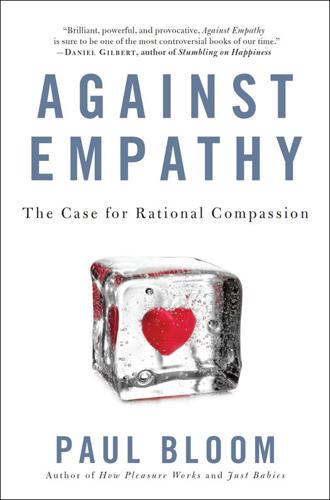
Against Empathy: The Case for Rational Compassion
by
Paul Bloom
“Everybody in America became godmothers and godfathers of Jessica while this was going on,” President Reagan remarked. Larger-scale events can also engage us, so long as we can find identifiable victims in the crowd. So we resonate to certain tragedies, disasters, and great crimes, such the tsunami of 2004, Hurricane Katrina the year after, Hurricane Irene in 2011, Hurricane Sandy in 2012, and, of course, the attack on the Twin Towers on September 11, 2001. Or the example that began this book, when twenty children and six adults were murdered in Sandy Hook Elementary School in Newtown, Connecticut, leading to widespread grief and an intense desire to help. These are all serious cases.
…
See charitable giving; goodness heuristics, 227–28 Hickok, Gregory, 64, 67 Hieronymi, Pamela, 157 high empathy, in personal relationships, 42, 132–36 Hitler, Adolf, 28, 191, 193, 196, 208–9 Hobbes, Thomas, 167, 168 Hoffman, Martin, 10, 21–22, 166 Holloway, Natalee, 90–91 Holocaust, 5, 196, 205, 206–7, 208–9 homeless people, and empathy, 69–70, 167 Hopkins, Anthony, 180 Horton, Willie, 34–35, 53 hot cognition, 214, 216 Hotel Rwanda (movie), 93 How Adam Smith Can Change Your Life (Roberts), 153 Hume, David, 39, 44, 165–66 Hurricane Irene, 90 Hurricane Katrina, 90, 91 Hurricane Sandy, 90 Hussein, Saddam, 193 Iacoboni, Marco, 141 identifiable victim effect, 88–89, 90 impartiality, 8, 110, 159 incentives, 57–58 Indian Ocean tsunami of 2004, 90 indigestion, 217 innumerate, 9, 31, 36, 89 insular cortex, 61, 64, 65, 139 intelligence (IQ), 230–33 intimacy (intimate relationships), 129–36, 149–63 apologies and, 156–58 friendships, 149–54, 158–59 high empathy in relationships, 132–36 IQ tests, 232 Iraq war, 107, 193 Isaacson, Walter, 93, 94 ISIS, 193 Island of Doctor Moreau, The (Wells), 75 Israeli-Palestinian conflict, 4–5, 186, 188–89, 190, 204–5 Jackson, Frank, 148 James, William, 170 Jamison, Leslie, 10, 25, 146–47 Jesus, 161 Jinpa, Thupten, 141 job candidates, 224–25 Johnson, Lyndon, 93 judges, and cognitive empathy, 37, 125–26 Just Babies (Bloom), 6, 163, 172–73, 239 justice, 42–43, 48, 159, 210–11 Kagan, Shelly, 29 Kahneman, Daniel, 152, 214 Kant, Immanuel, 29, 30 Keyser Söze (character), 180 kidney donations, 26, 47, 238 kindness, 3, 21, 25, 170 loving-kindness meditation, 139–41 in romantic partners, 129–30 zero-sum nature of, 95–98 kinship, 7–8, 159–60 Klimecki, Olga, 138 knowledge argument, 148 Kravinsky, Zell, 25–26, 27, 102, 238 Kuehberger, Johann, 28 Lakoff, George, 20, 113–14, 119 Landy, Joshua, 48–50 Lanza, Adam, 1 Lazare, Aaron, 156–57 Leaves of Grass (Whitman), 21 Lee, Robert E., 184 Less Than Human (Smith), 204–5, 206 Levi, Primo, 206–7 Lévi-Strauss, Claude, 202–3 liberals (liberalism), 113–14, 118–27 political orientation and language, 114–18 libertarians (libertarianism), 114, 115, 118, 122 lies (lying), 29 Lifton, Robert Jay, 16 Lincoln, Abraham, 167, 168 Locke, John, 115 Lockwood, Heidi Howkins, 156 Louis CK, 109 loving-kindness meditation, 139–41 loyalty, 120, 158, 159–60, 236 Lynch, Michael, 10, 51 MacFarquhar, Larissa, 10, 46–47, 104, 161, 162 MacKinnon, Catharine, 203 Macnamara, John, 229 Mad Men (TV series), 154 Make-A-Wish Foundation, 96–97 malaria, 40–41, 97, 103 Manne, Kate, 205 “man versus man” problems, 104 Marsh, Abigail, 47 marshmallow experiment, 234 martial arts, and violence, 187 Mary’s Room, 148 McClure, Jessica (Baby Jessica), 90 McVeigh, Timothy, 49 meanness, 199 measurement problem, 77–83 media spotlight, 90–91, 92–93 medical students, and empathy, 142–44 Meltzoff, Andrew, 171–72 Mencius, 22 mentalization, 17, 71 Mill, John Stuart, 29, 115, 116–17 Milton, John, 26 mind–body problem, 217, 220 mindfulness meditation, 43, 140–41 minimum wage, 119 mirror neurons, 63–64 Mischel, Walter, 234 Montross, Christine, 142–45, 146 morality, 22–23, 39–54 in babies and children, 6, 165, 171 emotional nature of, 5–6 empathy as foundation of, 19–22, 165–76 empathy as poor guide for, 2–3, 9–10, 54–55 goodness and empathy, 41–42, 101–6 inciting violence, 184–87 origins of, 171–76 reason as basis for, 5–6, 8–9, 44, 51–54 terminological issues, 39–41 moralization gap, 181–84 moral philosophy, 22, 29–30, 44, 91–92 Mother Teresa of Calcutta, 89 Myth of Mirror Neurons, The (Hickok), 64, 67 names (naming), 222 national disasters, and election years, 94 natural selection, 168–70 Nazi Doctors, The (Lifton), 16 Nazis, 5, 16, 74, 110–11, 124, 177–78, 181, 191, 196, 202, 206–7 Netanyahu, Benjamin, 188–89, 190 neuroscience, 47, 59–73 of compassion, 138–39 difference between feeling and understanding, 70–73 of empathic experiences, 62–68 empathic reactions and prior bias, preference, and judgment, 68–70, 90 localization problem, 59–61 other people’s pain, 62–68, 73–75 of reason, 216–21 Newtown school shooting, 1–2, 31–33, 90 New Yorker, The, 11–12 New York Times, 11, 100, 214 Nussbaum, Martha, 10, 107, 203 Oakley, Barbara, 135 Obama, Barack, 2, 4, 18, 19, 118, 119, 122–23, 235 Obama, Michelle, 123 objectification, 178–79, 203–4, 206 objectivity, 86, 146 Ochsner, Kevin, 71–72 O’Connor, Lynn E., 141 Oliver Twist (Dickens), 92 Omnivore’s Dilemma, The (Pollan), 50 On Apology (Lazare), 156–57 origins of empathy, 171–76 orphanages, in Cambodia, 100 Orwell, George, 37–38, 159–60, 188 oxytocin, 195 pain babies and empathy, 172–74 neuroscience of, 62–68, 73–75 role in empathy, 17, 21, 33–36, 62–68, 155–56 parenting, 97, 130–31, 154–55 Parkinson’s disease, 219 parochialism, 9, 36 “pathological altruism,” 135 Patton, George S., 178 Paul, Laurie, 147–48 Paul, Ron, 118 Personal Concern scale, 80–81 personal distress, 25 Personal Distress scale, 79–81 Perspective Taking scale, 78–81 physicalism, 148 physician-patient relationship, 143–45, 146–47 Pinker, Steven, 10, 18–19, 74–75, 239–40 moralization gap and, 181, 184 self-control and, 234 threshold effect and, 231 Pitkin, Aaron, 46 pity, 40, 100 Plato, 214 poker, 28 Poland, Hitler’s invasion of, 193 police shootings, 4, 19–20, 205 political orientation and language, 114–18 politics, 113–27 free speech and, 123–26 legal context, 125–26 liberal policies and empathy, 113–14, 118–25 rationality and irrationality in, 235–37 pornography, depiction of women in, 203–4 Poulin, Michael, 193–95 prefrontal cortex, 61, 71 presidential election of 2012, 117–18, 119 Prinz, Jesse, 10, 22, 200, 210–11 prison rape, 93 progressives (progressivism), 113–14, 118–27 political orientation and language, 114–18 projective empathy, 70–71, 155 “prosocial concern,” 62 psychoanalysis, 5, 144, 145, 216 psychological egoism, 72–74, 75–76 psychopaths (psychopathy), 42, 197–201 lack of self-control and malicious nature of, 42, 199–201 myth of pure evil, 181, 184 neuroscience of, 47, 71–73 Psychopathy Checklist, 197–201, 198 publication bias, 82–83 punishment, 161, 185, 186, 192, 195–96, 207, 209, 225 purity, 117–18, 224 qualia, and knowledge argument, 148 Rachels, James, 52 racial bias, 226 racism, 9, 48–49, 202–3 Rai, Tage, 184–85, 186 Raine, Adrian, 179 Rand, David, 7 rape, 23, 34, 35, 93, 182, 192, 206 rationality.
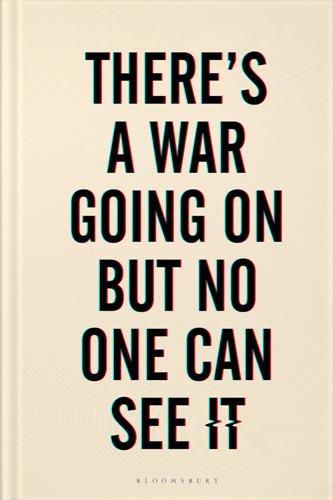
There's a War Going on but No One Can See It
by
Huib Modderkolk
Published 1 Sep 2021
It’s also because of these cable landings that Beverwijk and Katwijk were added to a US list of ‘critical sites’ in 2010 – sites that, if they were ever attacked or damaged, could seriously endanger American security. The biggest cable station of all lies just outside New York City. In 2012, when Hurricane Sandy bore down on the state of New York, its safety was given top priority, meaning it was first in line for emergency assistance. Under no circumstance could it be allowed to fail. That, in a nutshell, is how all those data packets speed their way around this network of cables and buildings. Bais set down his coffee mug.
…
Index Abdeslam, Salah, here ABN Amro, here, here, here Aboutaleb, Ahmed, here advanced persistent threats (APTs), here, here Afghanistan, here, here, here, here AIVD, here, here, here, here, here, here, here, here, here, here, here, here, here, here, here, here agency culture, here and author’s sources, here, here bugging of Iranian ambassador, here and DigiNotar, here, here digital capabilities, here, here, here, here and Gemalto, here and Huawei, here and Iran nuclear plant, here, here Joint Sigint Cyber Unit, here, here, here and Kaspersky Labs, here, here, here number of employees, here relations with Americans, here, here, here, here and Ronald Prins, here and Russian cyber espionage, here, here, here, here, here, here, here AJA (Iranian army), here Akerboom, Erik, here, here, here, here, here Alexander, Keith, here, here Alfa Group, here Al-Qaeda, here al-Shabaab, here, here Amdocs, here Amsterdam Internet Exchange (AMS-IX), here, here, here, here Android OS, here Anonymous (hacker group), here Apeldoorn hospital attack, here APM Terminals, here, here Appen, here, here, here Arab Spring, here Armada Sweep, here ASML, here, here Assange, Julian, here, here backdoors, here, here Bais, Erik, here, here bakabt.com, here Belgacom, here, here, here, here, here, here Belgian Ministry of Foreign Affairs, here Bellens, Didier, here Bertholee, Rob, here, here, here, here, here Biden, Joe, here Biesbrouck, Ralph, here Bijleveld, Ank, here bin Laden, Osama, here Bindt, Pieter, here, here, here Bits of Freedom, here BlackBerry messages, here, here Blok, Eelco, here Bloomberg, here, here, here BND, here Bogachev, Evgeniy (‘Umbro’), here, here, here Boon, Floor, here Bosch van Rosenthal, Eelco, here, here, here, here, here, here Bouman, Gerard, here Boxer armoured fighting vehicles, here Bromet, Frans, here, here Brussels bombings, here, here Bryan, Inge, here Bureau of Investigative Journalism, here Bush, George W., here, here ‘Business Club’, here BVD, here CareerBuilder.com, here Catal separatist movement, here Cellebrite, here certificate authorities (CAs), here Chaos Computer Club, here Chernobyl site, here, here child pornography, here, here Chinese cyber espionage, here, here, here, here, here, here, here Chinese Unit 61398, here, here CIA, here, here, here, here, here, here, here, here, here, here, here, here, here, here and Kaspersky Labs, here, here, here, here Cisco, here, here, here Clapper, James, here Clearview AI, here Clinton, Bill, here, here Clinton, Hillary, here, here, here CNN, here, here, here, here, here Combasca, here, here, here Common, here computer network exploitation (CNE), here, here Comverse, here Concord, here Cools, Ivo, here Covid-19 vaccines, here Cozy Bear, here, here, here, here, here, here, here, here, here, here, here Cyber Intelligence, here de Boer, Hans, here de Bos, Tony, here, here De Croo, Alexander, here De Groene Amsterdammer, here de Jong, Erik, here, here De Standaard, here De Telegraaf, here de Volkskrant, here, here, here, here, here, here, here, here, here de Vries, René, here deep packet inspection, here DEF CON, here Delft University of Technology, here Deloitte, here, here Denk party (Netherlands), here Der Spiegel, here, here, here Derix, Steven, here, here Di Rupio, Elio, here, here Die Hard, here, here DigiNotar, here, here, here, here, here, here, here, here, here, here digital certificates, here DIGIWS146 workstation, here, here distributed denial-of-service (DDoS) attacks, here, here, here Donner, Piet Hein, here, here, here Dorfman, Zach, here DPG Media, here Drake, Thomas, here drone strikes, and civilian casualties, here ‘Droppy’, here DuckDuckGo, here Durbin, Richard, here Dutch Bar Association, here Dutch Criminal Intelligence Unit (CIE), here Dutch Cyber Security Council, here, here Dutch elections, here Dutch House of Representatives, here, here, here, here Dutch Independent Post and Telecommunications Authority, here Dutch Investigatory Powers Commission (TIB), here Dutch Ministry of Foreign Affairs, here, here Dutch Ministry of General Affairs, viii, here Dutch National High Tech Crime Unit, here, here, here, here, here, here, here Dutch National Coordinator for Security and Counterterrorism (NCTV), here, here Dutch National Crime Squad, here Dutch National Crisis Centre, here, here Dutch National Cyber Security Centre (NCSC), here, here, here, here Dutch National Forensic Research Agency, here Dutch National Police Internal Investigation Department, here Dutch National Police Services Agency, here Dutch Safety Board, here Dutch surveillance law and referendum, here, here, here Dutch Tax and Customs Administration, here, here, here ‘Dwaan’, here, here, here Eastern Scheldt Storm Surge Barrier, here Ecatel, here, here Effting, Maud, here El Chapo (Joaquín Guzmán Loera), here Elbit Systems, here Elderenbosch, Onno, here encryption, here, here Ericsson, here EU Copyright Directive, here European Commission, here, here European Medicines Agency (EMA), here European Parliament, here, here, here European Space Agency, here Europol, here EvoSwitch, here Evraz, here exploits, here, here, here Fabrika Trollei, here facial recognition, here Fancy Bear, here, here, here, here, here FBI, here, here, here, here, here, here, here, here, here, here, here, here, here and Mexican drug cartel, here and Russian cyber espionage, here, here, here firewalls, here Five Eyes, here Fox-IT, here, here, here, here, here, here, here, here, here, here and Belgacom, here, here and DigiNotar, here, here, here, here Fridman, Mikhail, here FSB, here, here, here, here, here, here, here Gaddafi, Muammar, here, here Gallagher, Ryan, here, here, here Gamma Group, here Gemalto, here German CERT, here Glimmerglass, here Godane, Ahmed Abdi, here, here Google Maps, here, here GovCERT, here, here, here, here, here Government Communications Headquarters (GCHQ), here, here, here and Belgacom, here, here, here and Gemalto, here number of employees, here Grapperhaus, Ferdinand, here Greenberg, Andy, here Greenwald, Glenn, here, here, here Groenewegen, Frank, here, here GRU, here, here, here Gubarev, Aleksej, here, here, here Gurey, Nuur Osman, here hacking tools, online sales of, here Harvard Belfer Center, here Hayden, Michael, here Hennis, Jeanine, here, here, here, here Hentenaar, Joris, here Hermitage Museum, here Hijzen, Constant, here HNLMS Rotterdam, here Hoekstra, Pete, here HostExploit, here Howard, Philip, here HP Data Protector, here, here, here Huawei, here, here Hurricane Sandy, here iColumbo, here ICQ, here IMEI numbers, here in ’t Veld, Sophie, here ING, here Intellect Service, here Intercept, The, here, here, here Interfax press agency, here International Atomic Energy Agency (IAEA), here iPhones, here Iran, here, here, here, here, here, here, here, here, here, here, here, here, here, here, here, here, here, here Iranian Revolutionary Guard (IRG), here Islamic State, here, here Israel, here, here, here, here, here, here, here, here, here, here, here Jochem, Aart, here, here, here, here Joint Strige Fighter programme, here Juniper, here Kaspersky, Eugene, here Kapersky Labs, here, here, here, here, here, here KGB, here Khabarovsk conference, here Khan, Abdul Qadeer, here Kim Jong-un, here King Servers, here, here Klijnsma, Yonathan, here, here KPN, here, here, here, here, here, here, here, here, here, here, here Kreling, Tom, here, here, here, here, here, here Leaseweb, here, here, here, here, here, here Ledgett, Richard, here Lewinsky, Monica, here Lockheed Martin, here LulzSec, here McCord, Mary, here McFaul, Michael, here machine translation, here McLaughlin, Jenna, here Maersk, here, here Malaysian Airlines flight MH17, here, here, here, here Mali, here, here Mandiant, here, here, here Marriott hotels, here Mastercard, here Máxima, Queen, here M.E.Doc, here, here Meeus, Jan, here, here Merck, here Merkel, Angela, here MI5, here, here, here Mikhailov, Sergei, here, here, here Millennium bug, here MIND CTI, here MIVD, vii, here, here, here, here, here, here, here, here, here, here, here, here agency culture, here and Belgacom, here digital capabilities, here, here, here and Farsi translators, here Joint Sigint Cyber Unit, here, here relations with Americans, here, here, here, here and Russian cyber espionage, here, here Somali surveillance, here, here Mohammad Ali, Omar, here, here, here, here Mondelez, here Montenegro coup attempt, here Morozov, Evgeny, here Mossad, here, here, here, here, here MSD, here MV BBC China, here, here MyHeritage, here MySQL, here N., here, here, here Naomi, here NASA, here, here, here Natanz, here, here, here National Health Service (NHS), here, here National Security Agency (NSA), here, here, here, here, here, here, here, here, here, here, here and Belgacom, here, here, here and Farsi translators, here ‘fishing with dynamite’, here and Gemalto, here and ‘Greek Watergate’, here hardware modifications, here number of employees, here relations with Netherlands, here, here, here Snowden files, here, here, here, here, here, here, here and SolarWinds attack, here and Somalia surveillance, here, here Tailored Access Operations, here NATO, here, here, here NCC Group, here ndsmovies.com, here New York City truck attack, here New York Times, here, here, here NICE Systems, here Nijmegen Queen’s Day festival, here Nixon, Richard, here North Korea, here, here, here, here, here, here, here, here Northwave, here Norwegian University of Science and Technology (NTNU), here NotPetya virus, here, here, here Novaja Gazeta, here NRC Handelsblad, here, here, here, here, here, here, here, here, here NSO Group, here Obama, Barack, here, here, here, here Ocean’s Eleven, here, here OHM2013, here Operation Moonlight Maze, here Operation Olympic Games, here Opstelten, Ivo, here OPTA, here Organisation for the Prohibition of Chemical Weapons (OPCW), here Oxford Internet Institute, here P10 filtering system, here Paauw, Frank, here Pakistan, here, here, here, here, here Pals, Ludo, here Paris bombings, here Paulissen, Wilbert, here PayPal, here, here, here Penn, Sean, here Pentagon, here, here Pérez Dolset, Javier, here Perlroth, Nicole, here Petri, Hans, here ‘Phed’, here phishing emails, here Plasterk, Ronald, here, here, here, here, here Pluijmers, René, here Poitras, Laura, here Politico, here PornHub, here Poroshenko Petro, here Port of Rotterdam, here, here, here, here, here Premier League, here Preneel, Bart, here PricewaterhouseCoopers, here Prigozhin, Yevgeny, here, here Prins, Ronald, here, here, here, here, here, here, here, here, here privacy, here, here, here, here, here Project Victor, here Proximus, here Public Prosecution Service Rotterdam, here Putin, Vladimir, here, here, here, here, here, here Q-Park, here Raiu, Costin, here Rajoy, Mariano, here Regin virus, here, here, here, here Regional Internet Registry for Europe, here Remarque, Philippe, here Renault, here Replay, here Rheinmetall, here, here, here Rid, Thomas, here Robbe, Edwin, here, here Robbe, José, here, here, here, here Robbe, Ruud, here, here Robin, here, here, here Rosneft, here RSA Conference, here Russia Today, here Russian–Dutch relations, here Russian Internet Research Agency (IRA), here Russian Unit 74455, here, here, here Rutte, Mark, vii, here, here, here ‘Sabu’, here Salisbury poisonings, here satellite communications, here, here, here Saudi Arabia, here, here Schiphol Airport, here, here, here, here, here Schneier, Bruce, here Schook, Dick, here SCM, here September 11 attacks, here ShimRatReporter, here Shymkiv, Dmytro, here SIGINT, here SIGINT Development Conference, here, here Signal, here Sinaloa Cartel, here Singapore Press Holdings, here Skripal, Sergei, here Smith, Brad, here SNAP, here Snowden, Edward, here, here, here, here, here, here, here, here, here, here, here, here, here Sochi Winter Olympics, here, here SolarWinds, here, here Somalia, here Sony PlayStation network, here speech transcription software, here Spetsnaz, here SPÖ Social Democratic Party (Austria), here SSL certificates, here Standaert, Geert, here Starr, Barbara, here Startpage.com, here Stasi, here Steman, Jochem, here, here Stone, Chris, here Stoyanov, Ruslan, here STRAP system, here Stuxnet virus, here, here, here, here, here, here, here submarines, here surveillance software, Israeli, here SVR, here, here, here Symbolon project, here Tails OS, here, here Tamene, Yared, here telecommunications billing, here Thomas, Gordon, here Tiger telephones, here TNT Express, here Triton virus, here Trouw, here TrueCrypt, here Trump, Donald, here, here, here, here, here, here, here Turkey, here, here, here, here Turksema, Hans, here TV5 Monde, here Tweakers website, here U., Etienne, here UCN, here Uijlenbroek, Jaap, here UK Home Office, here UK National Crime Agency, here Ukraine, here, here, here, here, here, here, here, here, here, here and annexation of Crimea, here, here, here, here, here, here ultracentrifuges, here, here United Arab Emirates, here United Nations, here University of Tromsø, here University of Twente, here US Democratic Party, here, here, here, here, here, here US Department of Defense, here, here US Department of Homeland Security, here, here US Joint Chiefs of Staff, here, here US presidential elections, here, here, here, here, here, here US State Department, here, here Utrecht child support services, here V., Johan, here van Bergen, Jurre, here van de Beek, Martijn, here van der Heijden, A.
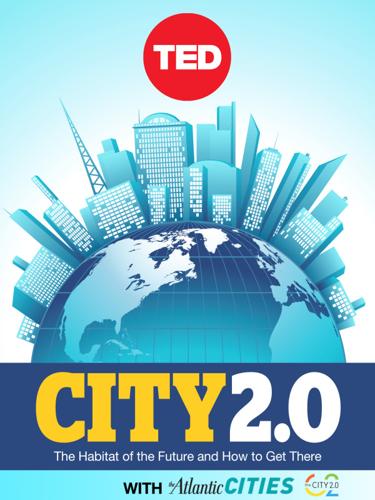
City 2.0: The Habitat of the Future and How to Get There
by
Ted Books
Published 20 Feb 2013
But the impact continued to surface. Tomasulo created a Kickstarter campaign to fund Walk [Your City] (walkyourcity.org), an open-source platform that allows anyone to create signs for their own cities. Projects have popped up in Kentucky, Dallas, Miami, New Orleans, and even in New York City for Hurricane Sandy disaster relief. Tomasulo’s campaign has garnered the attention of everyone from the BBC to private developers looking to liven up their sites to major health care providers that see wayfinding as a key step to reducing obesity and creating healthier lifestyles. Back in Raleigh, Tomasulo says hundreds of people have told him they didn’t realize how easy it was to walk to destinations downtown.
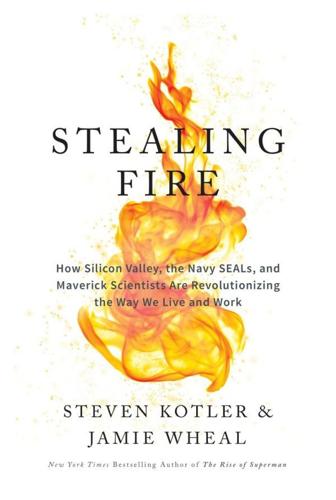
Stealing Fire: How Silicon Valley, the Navy SEALs, and Maverick Scientists Are Revolutionizing the Way We Live and Work
by
Steven Kotler
and
Jamie Wheal
Published 21 Feb 2017
“Our town was destroyed and we were abandoned by our government and our leadership,” one Pearlington resident said, “but [Burners without Borders] came in and reminded us that even in all that devastation was the chance for art, for celebration and for community.” Since that time, Burners without Borders has become an international organization, active in disaster zones from Peru’s 2007 earthquake to Japan’s Fukushima disaster to New Jersey’s Hurricane Sandy. And the relationships they’ve forged with locals in those areas have come full circle—with leaders from those communities coming to Burning Man in subsequent years to learn where all of that capability and enthusiasm comes from. In an even less likely example of Burning Man’s spreading impact, Dr.
…
See also specific hallucinogen Hamelin (Germany) pipers, 65–66, 67, 69 Hanfstaeng, Ernst, 69 Harper’s Magazine: Sandia “super mule” article in, 184 Harris, Sam, 57–58 Harvard Business Review: Tolbert comments in, 93 Harvard Medical School: lifestyle change study at, 42 Harvard University: happiness course at, 175 Harvey, Larry, 160 hashish, 34 head trauma, 60–61 heart rate: monitoring of, 104, 147, 151, 197 Heaven’s Gate suicides, 67 hedonic calendaring, 213–16 Heifetz, Ron, 114 Hell Week, Navy SEALs, 13, 19 Hells Angels, 189 Hemingway, Ernest, 216 heroin, 29, 62 Hessel, Andrew, 133–34 Hill, Napoleon, 80 Hirshberg, Peter, 166–67, 168 Hitler, Adolf, 69 hocus-pocus, 73, 74 Hofmann, Albert, 3 Holiday, Ryan, 205–6 Holy Ghost: Mormon belief in, 53, 54 hope: importance of, 222 Horgan, John, 58 horseback riding, 60, 61 How We Got to Now (Steve Johnson), 141 Howl (Ginsberg), 77 Hsieh, Tony, 161–62, 163, 170, 210 Hua, Vanessa, 159 human condition, 216–18 human potential movement, 76, 77–81, 191 Hunt, Graham, 135, 136 Hurricane Katrina, 164–65 Hurricane Sandy, 165 Huxley, Aldous, 3, 199 HyaSynth Bio, 133 hydrocodone, 133 Hyperloop, 161 Hyperspace Lexicon, 130–31, 204 hypnosis, 108 ibogaine, 116, 122 iFly (Metni company), 138, 150 imaging technology, 101, 107–8, 109, 124, 125, 194. See also brain imaging IMAX, 30 immersive experience design and training, 148–53 immersive/visionary art, 142–45, 149, 150, 157, 198 In Over Our Heads (Kegan), 39 individualism, 68 information technology, 185–87, 199, 216 innovation.
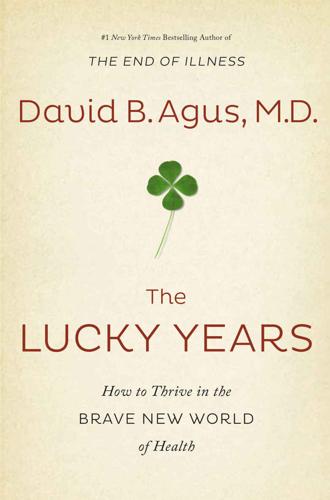
The Lucky Years: How to Thrive in the Brave New World of Health
by
David B. Agus
Published 29 Dec 2015
DNA, while powerful and revelatory in its own right, cannot do this. Some of the other exciting research I’m involved with entails overlaying health records from millions of people with variables such as the weather and news events. Think about examining, for example, what happens to kids who were born during the week Hurricane Sandy swept over the eastern seaboard of the United States. That one environmental impact alone could have had health consequences. Stephen J. Elledge is a professor of genetics at Harvard Medical School and Brigham and Women’s Hospital in Boston. His research is leading to tools for tracking patterns of disease in different populations.
…
“nonself” in, 34 body mass index (BMI), 22, 134, 141 Boston, Mass., 84 Boston Cooking-School Cook Book, The, 178 Boston University, 47 Bowerman, Bill, 199 brain: decision making in, 227 sleep’s importance to, 208–10 brain cancer, 30 Brave New World (Huxley), viii, 159, 238 Brazil, 199 BRCA genes, 8, 21, 118 breast cancer, 8, 53, 55, 60, 61, 118, 171, 190, 211 genetic mutation and, 21–22 mastectomies and, 21–22 obesity and, 133 statin use and, 220 Breast Cancer Prevention Trial, 53 Brigham and Women’s Hospital, 84 Broad Institute of MIT and Harvard, 23, 24 Broedel, Max, 73 Brown University, 58 Brunet, Anne, 63 bubonic plague, 95–101 Bulletin of the New York Academy of Medicine, 2 butterfly effect, 236–37 California, 5, 12, 47, 103 tobacco control program in, 237 California, University of: at Berkeley, 25 at Irvine, 3 at San Francisco, 3 Caltech, 102 Cambridge, University of, 125, 134 Cameron, David, 67 Canada, 4, 11 cancer, 41, 108, 128, 175, 215, 237 aggressiveness of, 53–54 alternative treatments for, 18 aspirin and, 216–17 chemotherapy for, 29 childhood, 6, 49, 170–71 context and, 13–14 diet and, 163 early detection and treatment of, 172 fitness and, 190–94 genetic mutations and, 14, 21–22, 50 genotyping of, 117–18 immunotherapy for, 28–33 inflammation in, 175–77 lifestyle and, 153, 168–69 measurement of success in treating of, 32–33 metastasis in, 60–62 molecular therapies for, 23–24, 49–50, 54–55 muscle mass and, 195 p53 gene and, 57–58 Peto’s paradox and, 57 plasma transfusions and, 5 precision medicine and, 115 radiation therapy for, 29 random mutations in, 169–74, 176 as runaway cell copying, 59 self-seeding in, 61 statins and, 218–20 treatment resistance in, 190–91 Watson supercomputer and treatment of, 88–89 see also specific types of cancer cardiovascular disease, 86, 121, 128, 147, 216 airport noise and, 92 risk factors for, 47 Carlson, Mary, 212, 213 Carnegie Mellon University, 214 CAR T cells, 29–30 CBS This Morning, 67 CCR5 gene, 24, 25 Ceauşescu, Nicolae, 212–13 Celebrex (celecoxib), 62 celiac disease, 113, 164 cell division, 5 cells: death of (apoptosis), 59 endoplasmic reticulum in, 40 oxidative damage to, 40 receptors on, 59 Center for the Study of Aging and Human Development (Duke University), 45 Center for Translational Neuromedicine (University of Rochester), 208 Center for Translational Research in Aging and Longevity (University of Arkansas for Medical Sciences), 194 Centers for Disease Control and Prevention (CDC), 47, 103, 133, 205 ceritinib (Zykadia), 53 change, self-assessment of, past vs. future in, 38–40, 39 chaos theory, 236–37 Charaka, 113 Charlottesville Neurology and Sleep Medicine, 204 checkpoint blockage therapy, 29–30 chemotherapy, 29, 60, 190–91 exercise and, 191, 192 Chicago, University of, 17 children, obesity and overweight in, 133 Chittagong University, 232 cholera, 234 cholesterol, 150, 195, 217, 219 dietary vs. blood, 162 online calculator for, 218 chronic disease, 128–29 age-related, 128, 136 diet and, 141–44 management of, 144–46 overweight and, 141 sleep habits and, 147 chronological age, 45, 46, 46, 47, 135–36, 232 circadian rhythm, 123, 138, 139–40, 148, 205 Circulation, 86 climate change, 159 Clinical Practice Research Datalink, 219 clinical trials, 52 double-blind, 53, 155 IRBs and, 52 randomized, 52–53 ClinVar, 9 coarse graining, 229–32, 230 cognitive abilities, 45, 46 cognitive dissonance, 159 Cohen, Jacques, 111–12 colds, 205, 214 Cold War, 94 Coley, William B., 27–29, 28, 33, 48 colitis, 121–22 Collins, Francis, 114, 118 colonoscopies, 93 Colorado, 47 colorectal cancer, 55, 123–24, 190, 217 statin use and, 220 Columbia University, 138 complex carbohydrates, 162 comprehensive metabolic panel (CMP), 151 Congress, US, 114, 237 context: adapting to new data in, 159 aging and, 45 baselines for, 150 changes in, 22 databases as, 83, 91–94 data mining and, 101 diet and, 163, 165 disease and, 13–14, 20 genes and, 14, 20–21, 118 health and, 48, 76–78, 84, 89–90, 91–94, 101, 113, 114–15, 117, 124–25 heart disease and, 22 identifying and optimizing, 135–52 lab tests in, 150–52 medical data and, 78–82 medical education and, 75 Cooper Center Longitudinal Study, 192 coordination, 45 Cornell University, 2 coronary artery disease, 151 cortisol, 123 counterfeit drugs, 10–11 C-reactive protein, 175 CRISPR (Clustered Regularly Interspaced Short Palindromic Repeats), 24–25, 26, 45 Critical Care, 222 Crohn’s disease, 25, 121 CTLA-4, 29–30 cystic fibrosis, 115–16 Cystic Fibrosis Foundation Vertex, 115–16 cytokines, 123 cytoplasm, 111 cytosol, 40 Dana-Farber Cancer Institute, Profile program of, 118 Dannon, 235 Dartmouth College, 157 Darwin, Charles, 112 data, medical: context and, 78–82 individual’s role in collection of, 81 databases, medical, 82–83, 95 as context, 83, 91–94 security of, 88–89 data mining, 84–89, 92 context and, 101 infectious diseases and, 100–101 Davos, Switzerland, 161 Dawkins, Richard, 17 death, leading causes of, 129 death certificates, 96 decision-making, 225, 227–28 dehydration, 234 dementia, 5, 41, 90, 91, 151, 204, 210, 215, 221 see also Alzheimer’s disease depression, 122, 211, 215 exercise and, 186 Dhaka, 232 diabetes, 22, 24, 25, 47, 59, 108, 114, 123, 128, 147, 151, 166, 175, 186, 187, 188, 215, 221, 237 gut bacteria and, 120–21 incidence of, 120–21 diet, 22, 114 chronic disease and, 141–44 as contextual, 163 honesty about, 133–34 low-cholesterol, 162 low-fat, 162 moderation in, 144 research on, see nutritional studies weight and, 141 diphtheria, 161 disease: autoimmune, 85, 125, 175 context and, 13–14, 20 genetic markers for, 22, 113–14, 127 surrogate markers for, 127–28 see also chronic disease; infectious diseases; noncommunicable diseases disorders, inherited, newborn screening and, 12 DNA, see genes, genome DNA mismatch repair, 32, 57 docosahexaenoic acid (DHA), 182 dopamine, 211 Doudna, Jennifer A., 25 dreaming, 203 drug abuse, 22 drugs, see medications Duke Cancer Institute (DCI), 191 Duke University, 30 Center for the Study of Aging and Human Development at, 45 Dulken, Ben, 63 Dunedin Study, 45–47, 46 Dyerberg, Jorn, 182–83 Dyson, Esther, 173 Earls, Felton, 213 East Africa, 44, 107 Eat, Sleep, Poop (Cohen), 137 eating patterns, heart disease and, 138–40 Ebola, 18, 221–22 E. coli, 123 eicosapentaenoic acid (EPA), 182 Einstein, Albert, 2, 223 Elder, William, Jr., 115–16 electrodermal response, 230–31 Elledge, Stephen J., 84 emotions, touch and, 214 emulsifiers, microbiome and, 121–22 “end of history illusion,” 38–40, 39 End of Illness, The (Agus), 18 endoplasmic reticulum, 40 endorphins, 211 energy levels, 149 England, see Great Britain environment, see context epidemics: global spread of, 103 prediction of, 103–4 epigenetics, 20–21 esomeprazole (Nexium), 86 esophageal cancer, 217 estrogen, 64 ethics: genome editing and, 24–25 medical advances and, 10, 24 technology and, 25–26 Europe, 77 European Journal of Immunology, 34 exercise, 21, 114, 140, 185–201 chemotherapy and, 191, 192 honesty about, 133–34 ideal amount of, 196–200 intensity of, 197–98 life expectancy and, 189–90 mortality rates and, 148 Exeter, University of, 157 “Experimental Prolongation of the Life Span” (McCay, Lunsford, and Pope), 2 experimental treatments, quicker access to, 56 Facebook, 27 fasting lipid profile, 150 feebleness, aging and, 43 fertility, aging and, 43 Field, Tiffany, 214 financial industry, information technology and, 89 Finland, 220 fish oil, 182–83 Florida, 103 flu vaccine: misinformation about, 157–58 public distrust of, 160 FODMAPs (fermentable oligo-di-monosaccharides and polyols), 164 Fodor, George, 183 food, safety of, 11 Food and Drug Administration, US (FDA), 2, 18, 51, 55, 56, 86, 111, 112, 127–28, 146, 182, 201 Accelerated Approval provisions of, 128 Foundation Medicine, 50 Framingham Heart Study, 47, 118 Fred Hutchinson Cancer Research Center, 169 free radicals, 208 fruit flies, eating pattern studies with, 138–40 fungi, 119 gait, 45 galvanic skin response (GSR), 230–31 gastroesophageal reflux disease (GERD), 86 Gates, Bill, 2 Genentech, 56 genes, genome, 45, 83–84 aging and, 20, 41 bacterial, 107, 119 context and, 14, 20–21, 118 DNA mismatch repair and, 32 expression of, 20–21, 125, 139 mitochondrial, see mitochondrial DNA sequencing of, 20, 23, 49–52, 112 SNPs in, 113–14 as switches, 41 viruses and, 119–20 genes, genome, editing of, 24–25, 45 ethics of, 102–5 genetically modified foods (GMOs), 18 genetic markers, 22, 113–14, 127 genetic mutations: aging and, 41 cancer and, 14, 21–22, 50 disease risk and, 9, 12 genetic screening, 103, 117, 137 flawed results in, 8–10 of newborns, 11–12 Georgia State University, 121 Gewirtz, Andrew, 121 Gibson, Peter, 164 Gilbert, Daniel, 38, 39, 40 Gillray, James, 161 Gladwell, Malcolm, 225, 227, 228 Gleevec (imatinib), 55 glial cells, 209 glioblastoma, 30 “Global Recommendations on Physical Activity for Health” (WHO), 187 gluten, debate over, 163–65 Goldstein, Irwin, 211 Google, 87, 88, 101 Google Flu Trends, 101 Grameen Bank, 232, 233–34, 235 Grameen Danone, 235 Graunt, John, 100 Great Britain, 96, 97, 100, 110, 155 Black Death in, 95–101, 98, 99, 100 Greatist.com, 200 Greenland, 182 Grove, Andy, 7, 7 growth factors, 59 gun violence, 91 gut: inflammation of, 120, 122 microbiome of, see microbiome H2 blockers, 86 habits and routines, 136, 137–41, 228, 237–38 see also diet; lifestyle choices Harlow, Harry, 213 Harvard Medical School, 84 Harvard School of Public Health, 142–43 Harvard University, 3, 23, 24, 37, 178, 186, 196, 212, 213, 216 hash tables, health care and, 87–88 Hawaii, 47 HDL cholesterol, 150 health: biological age and, 47 context and, 48, 76–78, 84, 89–90, 91–94, 101, 113, 114–15, 117, 124–25 family history of, 136–37 honesty about, 131–34 inflection point in, 8 lifestyle and, see lifestyle choices optimism and, 65–69 personal baselines for, 150 retirement and, 91–92 technology and, 37–70 health and fitness apps, 200 Health and Human Services Department, US, 103 health care: Affordable Care Act and, 69–70 hash tables and, 87–88 individual’s responsibility in, 12–13, 26, 70, 75, 78, 131–32 misinformation about, 14–15, 18, 19, 154, 157–58 politics and, 11–12 portable electronic devices and, 79, 90–91 Health Professionals Follow-up Study, 142–43, 217 health threats, prediction of, 103–4 heart: biological age of, 47–48 health of, 48 heart attacks, 76, 86, 182, 217, 218 heart disease, 59, 128, 150, 166, 175, 183, 186, 187, 215, 217, 221 context and, 22 diet and, 163 eating patterns and, 138–40 lifestyle choices and, 22 muscle mass and, 195 heart rates, 231 heart rate variability (HRV), 230 Heathrow Airport, 92 “hedonic reactions,” 38–40 heel sticks, 11–12 hemoglobin A1C test, 151 hepatitis B, 175 hepatitis C, 175 Herceptin (trastuzumab), 55 high blood pressure, 22, 188, 195 high-sensitivity C-reactive protein (CRP) test, 151 hippocampus, 214 Hippocrates, 71, 113, 122, 216 HIV/AIDS, 18, 24, 25, 59, 84, 127–28, 131, 159 Hoffmann, Felix, 215, 216 Holland, 41 Homeland Security Department, US, 103 homeostasis, 137–38, 140 Homo sapiens, evolution of, 107 honesty: about health, 131–34 nutritional studies and, 162 hormones, 219 hormone therapy, 201 Horton, Richard, 178 Hospital for the Ruptured and Crippled (Hospital for Special Surgery), 28 house calls, 80 Houston Methodist, 86 “how do you feel” question, 231 hugs, 214 Human Genome Project, 113, 120 human growth hormone, 200 Human Molecular Genetics, 65 human papilloma virus (HPV), 161, 175 Hurricane Sandy, 84 Huxley, Aldous, viii, 6, 159, 238 Hydra magnipapillata, 42, 42 hyperglycemia, 122 hypertension, 125, 195, 203 IBM, 88–89 imatinib (Gleevec), 55 immune reactions, 5 immune system, 175, 190, 209, 211 aging and, 44 impact of hugs on, 214 immunotherapy, 28–33 polio virus and, 30, 31 incentives, 235–36 Indiana University Bloomington School of Informatics and Computing’s Center for Complex Networks and Systems Research, 94–95 infant mortality, 87, 97 infants: genetic screening of, 11–12 premature, 87 infections, 175–76 infectious diseases, 129 antibiotic-resistant, 67–69, 68 data mining and, 100–101 inflammation, 34, 151, 174–77, 181, 187, 190, 195, 215–22 inflammatory bowel disease, 121 inflection points, 7–8, 7 influenza, 161 risks from, 157 vaccine for, see flu vaccine information, sorting good from bad, 19–20 information technology, financial industry and, 89 inherited disorders, newborn genetic screening and, 12 insomnia, 122 Institute for Sexual Medicine, 211 insulin, 56, 190 insulin sensitivity, 5, 87, 120, 122, 151, 195 insurance companies, off-label drugs and, 55 Intel, 7 International Agency for Research on Cancer, 170 International Prevention Research Institute, 180 intuition, 224–29 Inuits, 182–83 in vitro fertilization (IVF), three-person, 109–12, 110 Ioannidis, John, 178 IRBs (institutional review boards), 52 iron deficiency, 231 irritable bowel syndrome (IBS), 164 Islam, 234 Italy, 183 ivacaftor (Kalydeco), 115–16 JAMA Internal Medicine, 142, 143, 192, 196 Jenner, Edward, 160, 161 Jobs, Steve, 2, 23–24, 26, 49 Johns Hopkins Hospital, 71, 72, 128 Hurd Hall at, 74 Osler Medical Housestaff Training Program at, 73–75, 74 Johns Hopkins Sidney Kimmel Comprehensive Cancer Center, 32 Johns Hopkins University, 23, 169, 170, 171, 173, 174, 175, 176, 215 Jolie, Angelina, 21 Jones, Owen, 43 Journal of Sexual Medicine, 211 Journal of the American Medical Association (JAMA), 72, 114–15, 173, 201, 220, 221 Journal of the American Osteopathic Association, 154 Journal of the National Cancer Institute, 169 Journal of Urology, 168 journals, medical, misinformation in, 154, 179 J.
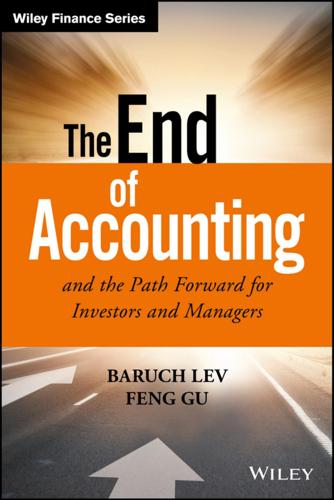
The End of Accounting and the Path Forward for Investors and Managers (Wiley Finance)
by
Feng Gu
Published 26 Jun 2016
Underwriting risk is the risk that the premiums collected from customers will fall short of the claim payments to them. This risk is particularly high, since the extent of large liabilities, like asbestos or pollution liability cases is not known at the time the policies are written. Those catastrophic claims can easily mushroom into billions of dollars (the 2012 Hurricane Sandy claims). Underwriting risk rises when competition among insurers intensifies and companies react by lowering rates, thereby attracting low-quality, high-risk customers, among others. 2. Investment risk is the risk related to stocks and bonds price fluctuations. Since insurance companies maintain large investments in securities and rely on investment income to fill their coffers, they are subject to the risks of investing in capital markets, such as the impact of unexpected interest rate changes on bond prices, default of borrowers, or adverse changes in stock prices. 3.
…
See Financial Accounting Standards Board Field, Marshall 4 Financial Accounting Standards Board (FASB) 6, 18, 181, 222 regulatory record, examination 213–214 Financial capital 82 Financial crisis, real estate (depression) 32–33 Financial data estimates 124 relevance, decrease 36 Financial indicators, impact (share) 36f 252 Financial information basis, problems 35–36 damage, accounting/nonaccounting (impact) 90 deterioration, accounting estimates (impact) 98–100 interpretation, experts (usage) 62 irrelevance 37 market, competition 41–42 quality 68 role 37 stock prices, contrast 29 usefulness decline 56, 67–68, 206 loss, investor interest 68–70 measurement 29–31 Financial innovations 71 Financial reporting direction, change 214 purpose (FASB) 30 Financial reports 46f contextual role 47 contribution 47 estimation, statistical methodology (usage) 44–45 economic condition 62 estimate-related terms, frequency (increase) 99f indicators, role 67 opaqueness 86–87 performance 62 performance-related information source 44 structure, freezing 8 structure/information, similarity 2 timelines, measurement 43–45 Firm operations, bottom line 154 Firm-specific errors 54 First-in-class product (Pfizer) 169–170 Follow-on patenting 166 Footprint size 187 Ford, Henry 52, 116 Ford Motor Company, car production 1 Forecasts, verification (enabling) 220–221 Fortune Global 500 Companies, 180 SUBJECT INDEX Full revelation, economic principle 202 Fundamentals 51 Funds decrease 69–70 sources 32 uses 32 Future earnings (prediction), earnings reporting ability (decline) 55f Geico advertising 147 brand, re-creation (impossibility) 148 General Electric, earnings per share (EPS) uncertainty/vagueness 94–95 Generally accepted accounting principles (GAAP) 96, 115 information 204 mandate 217 non-GAAP customer information 137 non-GAAP disclosure, problem 169 non-GAAP earnings, merits 205 non-GAAP measure 176 reforming 218 ROE 216 total sales, relevance (limitation) 174–175 Gilead, product pipeline 170–171 Goldman Sachs, investment dominance 83 Goodwill 109 GAAP mandate 217 value, impairment 61 write-offs 96, 219 Google car streaming market 140 intangible investment, increase 85 Great Depression 71 Great Moderation 71 Gross Domestic Product (GDP) growth 232 Gross margin ratio 154 Hedge fund managers, returns 17 Hewlett-Packard, Autonomy acquisition 84 Historical values 96–98 Subject Index Human capital, development 86–87 Hurricane Sandy claims 158 I/B/E/S data 23–24 First Call 48 IBM shares, decline 20 turnaround 122 IFRS. See International Financial Reporting Standard Implementation competition/litigation concerns 205–206 industry associations, impact 204 manager cooperation 204–205 regulatory burden, lightening 206–208 SEC role 203 Strategic Resources & Consequences Report issue 197, 199 Income statement 5 distortion 37 usage 7 Industry associations, impact 204 Industry-specific strategic resources 129 Industry-specific technological disruptions 71–72 In-force policies 152 Information.
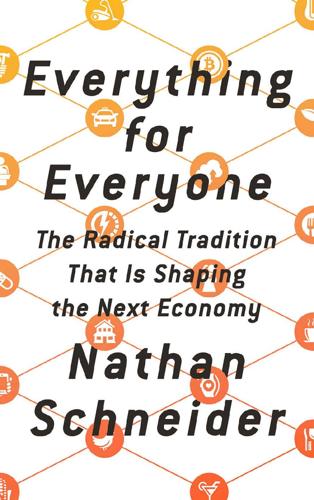
Everything for Everyone: The Radical Tradition That Is Shaping the Next Economy
by
Nathan Schneider
Published 10 Sep 2018
When Argentina’s economy collapsed in 2001, workers took over factories that owners tried to close and started running them for themselves. Aided by tax perks, employee-stock ownership plans expanded to transfer corporate profits to millions of US workers.9 New cooperators are appearing alongside the disruptions, the artificial and natural ones alike. Hurricane Sandy struck New York City on October 29, 2012—an event ambiguously attributable to climate change, worsened in turn by the city’s human inequities. It nearly washed away the Rockaway Peninsula, a narrow strip of land on the southeastern end of Queens, home to over one hundred thousand people. Structures that once stood near the beach could be found in pieces blocks away, alongside overturned cars and other hefty debris.
…
guilds, 34–36, 38, 55 Hacker Dojo, 112 hackers of copyright law, 218 Creative Commons licenses and, 137 on Internet, 147–148 hackerspace, 112, 115, 129, 138–139 Hackett, Mark, 181 Hamer, Fannie Lou, 200 harambee (coming together), 66 Harman, Virginia, 173 Hausel, Katalin, 28 Hawkins, Chris, 223 Haymarket riot, 56 Hearst, William Randolph, 162 Hell’s Kitchen, 33 Heneghan, Jim, 172 (photo), 173–175 Hicks, Charity, 76 High Plains Food Cooperative, 152–153 higher education, 66, 68–71, 154 History of Cooperation (Holyoake), 46 Hock, Dee, 80 Holacracy, 139–140 HolacracyOne, 140 Holyoake, George Jacob, 46, 48–49, 66 Hoover, Melissa, 70 housing co-ops, 98–100 Hsu, Jerone, 32, 35, 36 (photo) Hueth, Brent, 9, 69–70 Huffington, Ariana, 26 Hughes, Chris, 223 Hughes, Rose, 103 human rights, 190, 199, 210 Hurricane Sandy, 81–82 Ibn Khaldun, 215–216, 218 Industrial and Provident Societies Act (1852), 50 Industrial Revolution, 33, 46, 212, 216 inequality, 218 (fig.) Infospai, 118–119 Innocent IV (pope), 23 Institute for Cooperative Development, 66 Institute for Local Self-Reliance, 175 Institute for the Formation of Character, 47 insurance industry, 5, 8, 10, 14, 38, 54–56, 183, 185 Integral Cooperative, 119, 120 integral human development, 62 Integral Revolution, 119, 126 Integralism, 128–129 International Cooperative Alliance, 8–9, 11–12, 58, 233 International Ladies’ Garment Workers’ Union, 7 International Summit of Cooperatives, 11, 15 Internet, 147–148, 162, 212 investors, 80, 104, 233 Ipercoop store, 230 iStock, 148 Italy co-op laws in, 188–189, 232–233 co-ops in, 62–63, 229–230 Emilia-Romagna region, 62–63 Matera, 24–25, 28, 32 social co-ops in, 81 Jackson, Andrew, 192 Jackson Jambalaya (blog), 202 “Jackson Rising” (conference), 203–204, 215 Jackson-Kush Plan, 195, 196–198, 205 Jackson-Kush Plan: The Struggle for Black Self-Determination and Economic Democracy (pamphlet), 195 Jay Z, 34 Jefferson, Thomas, 43 Jesus Christ, 22 jobs as ideology, 45 technology and vulnerability of, 79, 225 Jobs, Steve, 79 Jobs of Our Own (Mathews), 61 Johnson, Derrick, 178 Johnson, Lyndon, 171 Johnstown, CO, 1 Joint Stock Companies Act (1856), 50 Joyce, James, 144 Juris, Jeffrey, 117 Jurowicz, Julek, 93 Kahle, Brewster, 158 Kauai Island Utility Cooperative, 174 Kazadi, Aleta, 184 Kelly, Marjorie, 151 Kelty, Christopher M., 135 Kenya, 65–67 King, Martin Luther, Jr., 199–200, 222 Kit Carson Electric Cooperative, 174 Kleiner, Dmytri, 160 Knights of Labor, 54–56, 61–62 Knuth, Donald, 35 Koch, Charles, 223 Koestler, Arthur, 139 König, Thomas, 131 Krause, Alanna, 95–96 Kunstler, James Howard, 97 Kurds, 207 Kush District, 190 labor unions, 6–7, 15, 34, 44, 53–54, 56, 76, 83–84, 85, 112, 124, 154, 224 Lander, Brad, 161 LaPlante, Rochelle, 144 Las Indias, 149–150 Laurini, Gianluca, 63 law school, 193 learning, lifetime of, 13 Lee, Jonathan, 196 Lee, Marcia, 73, 75 Legacoop, 63, 150, 231 Lehman Brothers, 119 Leo XIII (pope), 60 Leroux, Monique, 11 Lessig, Lawrence, 137 Liberty Distributors, 2, 3 (fig.), 6, 234–235 Lieder, Sheila, 85, 88 Lim, Leng, 33 Lincoln, Abraham, 44–45 Lincoln, Murray, 41, 57, 181 Lines Across the Land, 175 Linux software, 133–134 Lockwood, Jonathan, 186–187 Loconomics Cooperative, 150, 154 The Lone Ranger (radio dramas), 57 Long, Guillaume, 213 Loomio, 93–95, 104, 159, 167 Lopez, Alfredo, 135 Lumumba, Chokwe, 189–192, 197–198 mayoral campaign of, 196–197 Mississippi arrival of, 192–193 New Afrikan People’s Organization founded by, 194 Lumumba, Chokwe Antar, 190, 200–201, 203 (photo) mayoral election of, 205 Mississippi’s flag changed and, 204–205 Lumumba, Rukia, 195 Lundahl, Erika, 103 Lung Ta (farming commune), 123–124 Luther, Martin, 38 Magnolia Electric Power Association, 177 Malcolm X, 74, 189, 193, 194, 199 Malcolm X Grassroots Movement, 191, 194 Manna (Brain), 222–223 manufacturing cooperative, 63 (photo) Martin, Brendan, 82, 84 Marx, Karl, 53, 79 Matera, Italy, 24–25, 28, 32 Matheson, Jim, 171 Mathews, Race, 60–61 Maurin, Peter, 5 May First/People Link organization, 135–136 MBA programs, 69 McClelland, Jamie, 135–136 Mckesson, DeRay, 190 McKnight, Albert J., 62 McLean, Christopher, 174–175, 179–180 McRitchie, Jim, 166 Mead, Margaret, 20, 188 Mechanical Turk, 90, 92, 144 medieval guilds, 33–37, 212, 229 Megatrends (Naisbitt), 10 mendicant movement, 23 mercantilism, 215 Meredith, Greg, 157 migration, 216 Millet, Jean-François, 142 Mingo, Stephanie, 205 missing markets, 9, 52 Mississippi Sovereignty Commission, 193 Mississippi’s flag, 204–205 Modo cooperative, 152 monasteries, 22–23, 25–26, 32 Mondragon Corporation, 59–62, 124, 151, 156, 195, 206 money, as debt, 104–105 Moraa, Nyong’a Hyrine, 67–68 Mòrist, Joel, 123, 126 (photo) mortgage crisis, 119 movements, 9, 15, 23, 49–50 anti-globalization, 117 communal, 212–213 for co-ops, 12, 43–44, 225–226, 233 cryptocurrencies and, 130 free-software, 135, 137, 140–141 Malcolm X Grassroots, 191, 194 Mubarak, Hosni, 80 Müntzer, Thomas, 37–39 Musk, Elon, 79 Mussolini, Benito, 188 Mutual Broadcasting System, 57 MXGM organization, 194–197, 200–201, 204 Naisbitt, John, 10 Najm, Qinza, 36 (photo) Nakamoto, Satoshi, 106–107 Namasté Solar, 227 National Cooperative Business Association (NCBA), 41 National Domestic Workers Alliance, 151 National Grange of the Order of Patrons of Husbandry, 54 National Rural Electric Cooperative Association (NRECA), 171 National Security Agency, 135–136 National Trades Union, 44 NCBA.

Good to Go: What the Athlete in All of Us Can Learn From the Strange Science of Recovery
by
Christie Aschwanden
Published 5 Feb 2019
The finish did not qualify for an official American record, however, because IAAF rules disqualify point-to-point races from records to prevent runners from getting an unfair benefit from a tailwind, such as the one that had blown the day of Hall’s spectacular performance, or in the case of Boston, a net downhill course. See http://running.competitor.com/2012/04/news/should-the-boston-marathon-be-record-legal_50540. 3. The New York City Marathon was canceled that year because of Hurricane Sandy. 4. Romain Meeusen, Martine Duclos, Carl Foster, Andrew Fry, Michael Gleeson, David Nieman, John Raglin, Gerard Rietjens, Jürgen Steinacker, and Axel Urhausen, “Prevention, Diagnosis, and Treatment of the Overtraining Syndrome: Joint Consensus Statement of the European College of Sport Science and the American College of Sports Medicine,” Medicine and Science in Sports and Exercise 45, no. 1 (2013): 186–205, https://doi.10.1249/MSS.0b013e318279a10a. 5.
…
James, 263n.2 functional overreaching, 190 Funny or Die, 143, 275n.2 Gabbett, Tim, 283n.9 gamification, 133 Garden of Life, 165 Garfield Grumble race, 11–13, 86 Garmin, 216–17 Gatlin, Justin, 96 Gatorade, 64, 76, 263n.2 “Be Like Mike” ad campaign for, 32–33 Amby Burfoot study for, 41–44 development of, 33–37 Endurox R4 vs., 59 hydration guidelines from, 66 postexercise refueling with, 62, 67 and sports drinks market, 38, 47, 53 Gatorade Sports Science Institute (GSSI), 36 Gebrselassie, Haile, 43 gender differences, in beer study, 20–21, 30 Georgia Tech, 34 “Get Me Off Your Fucking Mailing List” (Mazières), 174 GlaxoSmithKline, 37 glycogen, 16, 59, 64–65, 77 GNC Pro Performance® Amp Amplitude Wheybolic Extreme 60TM Original, 160–61 Goethe University, 113 Golden State Warriors, 71, 119, 122 Graves, Ray, 34 Griffith University, 263n.5 group training, 196 GSSI (Gatorade Sports Science Institute), 36 Gumbel, Bryant, 279n.20 gymnasts, training metrics for, 203–4 Hagen, Joshua, 136–37 half-Ironman triathlon (2016), 176 Hall, Ryan, 185–89, 191–95, 224, 274n.6, 281n.1 Halson, Shona, 89–91, 110, 117, 157–59, 190–91, 234, 270n.15 Hamblin, James, 245 Hamilton, Tyler, 176, 278n.11 hamstrings, 4–5 Hardy, Jessica, 176–77 Harris, Manny, 96 Harvard Medical School, 46–47 Hatch, Orrin, 281n.28 Hatfield, Disa L., 272–73n.8 Hawaii Ironman, 192, 193 Headspace, 131, 135 Healey, Kellie C., 272–73n.8 healing, icing/inflammation and, 83–87 Health Professions Council of South Africa, 265n.19 heart rate, 120, 193, 215–16 heart rate variability (HRV), 216, 223–24 heat, 104–8 heatstroke, 45, 47–48 hemolysis, exertional, 206 Henderson, Neal, 196–97, 249 Heneghan, Carl, 38–41, 264n.13 Henry Ford Sleep Disorders and Research Center, 145, 146, 149, 158 hepatitis, 280n.25 Herbalife Ltd., 165, 277n.3 Herron, Camille, 229–32, 255–56 Hew-Butler, Tamara, 49, 265n.30 Hicks, Thomas, 15 Hoffman, Bob, 171–72 Hoffman, Martin, 51–52, 242, 277–78n.7 Hoffman’s High-Proteen, 172 Holmes, Baxter, 70–71 homeostasis, 67, 78 Houston, Texas, airport in, 240–41, 256 Houston Rockets, 70–71 Houston Texans, 144 HRV (heart rate variability), 216, 223–24 HRV Fit Ltd., 216 hunger signals, 74–76 Hunt, Jeff, 223–24 Hurricane Sandy, 281n.3 hyaluronic acid, 114 hydration, 32–54 “Be Like Mike” ad campaign, 32–33 blood tests and, 213 body weight and dehydration, 44–52 Amby Burfoot study for Gatorade, 41–44 Gatorade’s development, 33–37 sports drink effectiveness studies, 37–41 thirst as indicator of, 52–54 Hyndman, Kelly Anne, 48 hyperbaric chamber, 2, 105 hyponatremia (water intoxication), 45–47, 49, 54 IAAF (International Association of Athletics Federations), 281n.2 IBM, 205 ibuprofen, 236, 237, 253–54 Iced!
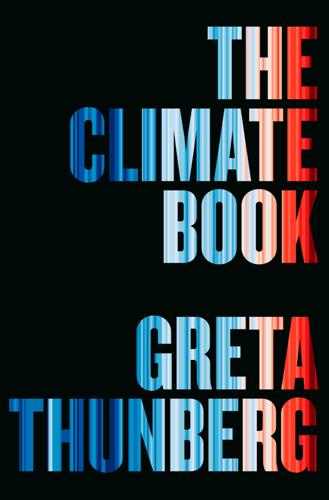
The Climate Book: The Facts and the Solutions
by
Greta Thunberg
Published 14 Feb 2023
Rising sea levels as a result of climate change are also amplifying the disastrous impacts of storms. Most storms develop over water and make landfall afterwards, accompanied by storm surges, which are increasing since sea levels have risen and will continue to rise for centuries due to our warming climate. A prominent example of this is Hurricane Sandy hitting New York in 2012. In this case the damages were estimated to amount to $60 billion from the storm surge alone, $8 billion of which can be traced to the higher sea levels from human-made climate change. If we hadn’t burned fossil fuels, 70,000 fewer people would have been affected by Sandy’s storm surge.
…
But even if we take action to keep warming below 3°C, climate change will still take a significant toll. It is difficult to forecast what it will cost, primarily because of the nature of ‘thresholds’, and ‘tipping points’ in climate change, which can lead to orders of magnitude increases in damage inflicted. Hurricane Sandy provided a vivid example of the importance of thresholds when the New York City subways flooded for the first time in 125 years, causing $5 billion in damage. Had the combination of storm surge, high tide and sea-level rise been just 15 per cent lower, the damage would have been negligible. The problem of tipping points is even more serious, and it utterly defeats any attempt to make a sound prediction of future damages.
…
D. 375 human exceptionalism, 416, 417 humidity, 60, 97, 101, 134, 137–8, 144, 167, 192 hunter gatherers, 21–2 hunting, 9, 10, 51, 107 hurricanes, 7, 26, 62, 160, 163, 170, 219, 356, 379; Hurricane Harvey (2017), 68, 193, 194–5; Hurricane Ida (2021), 159, 379; Hurricane Irma (2017), 170; Hurricane Katrina (2005), 159; Hurricane Sandy (2012), 68, 191 hydrates, 118, 119, 121 hydrogen, 7, 34, 226, 228, 229, 261, 268, 271, 288 hydrological cycle, 186 hydropower, 228 I Ice ages, 10, 14, 15, 18, 33, 72, 74, 80, 81, 84, 118, 119 ice-albedo feedback, 37, 62, 121 Iceland, air carbon removal plant in, 216–17, 218 ice, melting, 3; Antarctica, 33, 38, 39, 72, 76–7, 80, 82, 85, 91, 114, 124; Arctic, 24, 33, 38, 39, 51, 62–6, 63, 64, 76–7, 91, 93, 114, 115, 124, 173–5, 233; Greenland Ice Sheet 38, 39, 46–7, 49, 72–3, 76, 77, 80, 82, 91, 120, 204; Ronne ice shelf, 77; sea-level rise and, 36, 72–3, 80–81, 83, 124–5; West Antarctic Ice Sheet 38, 39 iDentity barrier, 337, 338 imidacloprid, 111 imported goods, 4, 156, 224, 257, 297, 389, 406, 406, 430, 434 incomes: associated lifestyle emissions 4, 406–7; carbon taxes and, 408–9; climate change division along lines of, 208; GDP and see GDP; guaranteeing during just transition, 393, 394–5; inequality, 182–5, 405–9; national income losses, climate change and 184, 185; redistribution, decarbonization and, 405–9; sacrifice zones and, 163; universal basic income, 412; waste and, 291, 292, 292.
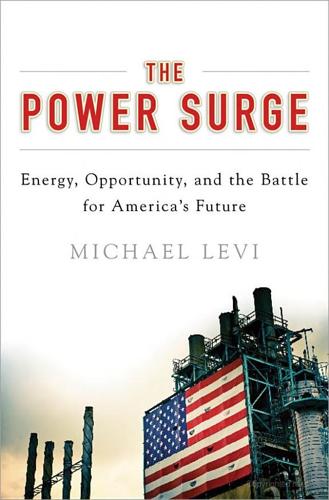
The Power Surge: Energy, Opportunity, and the Battle for America's Future
by
Michael Levi
Published 28 Apr 2013
And it was not just the lowly mountain pine beetles or the trees they feasted on that were feeling the heat. Scientists were now gingerly attributing extreme weather events such as heat waves and droughts to a changing climate, and they confidently predicted worse consequences to come. Raging wildfires, widespread droughts, and devastating storms like Hurricane Sandy, whatever their individual causes, made the sorts of dangers that lurked in a warming world vivid. And many fixated on other ways in which small changes might have big impacts. I visited the Arctic with the Coast Guard in 2008; they wanted to establish a presence in a region that many were heralding as the next frontier of geopolitics, as rising temperatures melted Arctic ice and opened vast new territories to commerce.
…
See climate change globalization Asian tiger economies and, 187 China and, 187–188 climate change regulation and, 188 254 • INDEX globalization (Cont.) deglobalization, 189–190, 194 energy trade and, 35, 188–190, 204–205 Great Depression and, 187 multinational corporations and, 187–188 trade agreements and, 186–187 United States and, 186 Gore, Al, 96–97, 146 Grant County (Kansas), 24 Grape, Steven, 54 Great Depression, 187, 190 Great Illusion, The (Angell), 183 Great Recession climate change initiatives and, 206 Congressional Budget Office projections and, 190–191 natural gas production and, 23, 25–26, 28 oil consumption and, 110 oil prices and, 16 renewable energy and, 145–146, 191 unemployment and, 190–191 Gulf of Mexico Deepwater Horizon oil spill, 52, 56–58 oil production in, 3, 56–57, 180 Gulf War (1991), 13–14, 76, 112 Halliburton, 4, 24 Hamilton, Jim, 70 Hammond, Allen, 9 Hanergy, 167 Hansen, James, 82, 92 Hart, Gary, 10 Herrington, John S., 14 Honda GX, 38 Horizon Wind, 170 horizontal drilling, 23–24, 47, 52, 54 Hot, Flat, and Crowded (Friedman), 163 House, Kurt Zenz, 170–172 Howarth, Robert, 101–104 Hubbert, M. King, 180–181 Hugoton field (Kansas), 24 Hummer, 97, 109 Hurricane Katrina, 16, 125 Hurricane Sandy, 84 Hussein, Saddam, 14, 76, 78 Hybrid Test Vehicle (HTV-1), 115 hybrid vehicles and, 110, 114–116, 119, 132, 135 hydroelectric power, 144, 149–150 IDT, 50–51 IHS Global Insight, 26–27 India, 35, 68, 105, 130, 167–168 information and communications technology (ICT) revolution, 167 Ingraffea, Anthony, 101–104 innovation automobiles, 113–120 limits of, 159–161, 168–189 oil and gas, 23–24 policy tools to support, 156–159 renewable energy, 148–151 Iran Cold War and, 185 natural gas and, 33 oil and, 78, 95, 133–134 revolution and hostage crisis in, 13, 68, 76, 112 Iraq Gulf War (1991) and, 14, 76, 112 oil production in, 69, 78, 95 oil reserves in, 133–134 Ishigaki Island, 132 Israel, 7, 76, 167 Israel, Laura, 174–175, 177 INDEX • 255 Jackson Dome (Mississippi), 60 Japan auto companies in, 97, 114, 116, 122, 134–135, 141 Fukushima disaster and, 172–173 natural gas and, 34–35 South China Sea confl ict and, 132–134 Jevons, William Stanley, 137–138 jobs natural gas and, 3, 25–28, 191 oil and, 73–74, 82, 191, 196 renewable energy and, 6, 147, 161–165, 168, 177 Jonas, Howard, 50–52, 61–63, 80 Jordaan, Sarah, 175 Joskow, Paul, 152 Kaiser, Jennifer, 73 Kammen, Daniel, 176 Kansas, 24 Kapadia, Atul, 36–37, 39, 116–117, 133 Karoo region (South Africa), 33 Kashagan oil field (Kazakhstan), 62 Kennedy, Ted, 12 Keystone XL pipeline, 81–82, 176, 203, 206, 208 Killian, Lutz, 129–130 King, David, 181 Kissinger, Henry, 76 Kivalina (Alaska), 84 Koehler, Torsten, 162 Korea, Republic of, 34 Kreutzer, David, 6 Kuwait Gulf War (1991) and, 14, 76, 112 oil and, 78, 95, 134 Kyoto Protocol, 15 LaBarge gas plant (Wyoming), 60 Landsberg, Hans, 11 Layden, Kevin, 114, 117–118 levelized cost of electricity (LCOE), 151–152 Libya, 76–77 Limits to Growth, The, 10–11 Lindzen, Richard, 85 liquefied natural gas (LNG), 30–31, 33–34, 39 lithium, 134–136, 190 Lordstown Assembly Complex (Ohio), 129 Louisiana Deepwater Horizon oil spill, 52, 56–58 Hurricane Katrina and, 16, 125 shale gas in, 42 Lovins, Amory, 9–10 “Low and Behold: Making the Most of Cheap Oil” (Morse), 180 Lutz, Bob, 113 Marcellus shale, 20–21 McCain, John, 97, 146, 206 McKibben, Bill, 81–82, 92 McKinsey & Company, 148–149 Media Matters, 64–65 Meredith (New York), 177 Merkel, Angela, 173 methane climate change and, 102 coalbed methane, 23 leakage of in natural gas production, 45–46, 102–104 Siberian permafrost and, 92 water contamination and, 45–46 methanol, 40 Mexico, 18, 30, 32, 187 MiaSolé, 157–159, 166–167 Midland (Texas), 143–144 Mills, Mark, 33 Milner, Helen, 187 Mississippi, 60 256 • INDEX Mitchell, George, 24 Mitton, Jeff, 83–84, 87–88 Mobil, 10 Montana, 54 Morse, Ed, 180 Mount Pinatubo (Philippines), 193 mountain pine beetles, 83–84, 87–88 nahcolite, 62 naphtha, 27, 56 National Commission on the BP Deepwater Horizon Oil Spill and Offshore Drilling, 58 National Oceanic and Atmospheric Administration (NOAA), 102–104 National Petroleum Council, 59 national security.

The Truth Machine: The Blockchain and the Future of Everything
by
Paul Vigna
and
Michael J. Casey
Published 27 Feb 2018
a Chinese-Japanese consortium was in 2016: Katie Fehrenbacher, “A Jaw-Dropping World Record Solar Price Was Just Bid in Abu Dhabi,” Fortune, September 19, 2016, http://fortune.com/2016/09/19/world-record-solar-price-abu-dhabi/. Check out nighttime photos of Manhattan: Jeff St. John, “How Microgrids Helped Weather Hurricane Sandy,” Greentech Media, November 20, 2012, https://www.greentechmedia.com/articles/read/how-microgrids-helped-weather-hurricane-sandy. And in the summer of 2017, LO3 took the process a step further: Draft version of the plan shared with Michael J. Casey. Grid Singularity, which has formed an alliance with the Rocky Mountain Institute: “Energy Companies Join Forces with Rocky Mountain Institute and Grid Singularity to Launch Global Blockchain Initiative for Energy,” March 8, 2017, Rocky Mountain Institute, https://www.rmi.org/about/news-and-press/press-release-energy-web-foundation-launch/.

The Uninhabitable Earth: Life After Warming
by
David Wallace-Wells
Published 19 Feb 2019
“We’re getting some intimations of how the ruling class intends to handle the accumulating disasters of the Anthropocene,” as the cultural theorist McKenzie Wark, of the New School, wrote. “We’re on our own.” And in the future, all that was once unprecedented becomes quickly routine. Remember Hurricane Sandy? By 2100, floods of that scale are expected as many as seventeen times more often in New York. Katrina-level hurricanes are expected to double in frequency. Looking globally, researchers have found an increase of 25 to 30 percent in Category 4 and 5 hurricanes for just one degree Celsius of global warming.
…
flooding its agricultural lands: Frances Robles and Luis Ferré-Sadurní, “Puerto Rico’s Agriculture and Farmers Decimated by Maria,” The New York Times, September 24, 2017. “We’re getting some intimations”: This was a comment Wark made on Twitter: https://twitter.com/mckenziewark/status/913382357230645248. seventeen times more often: Ning Lin et al., “Hurricane Sandy’s Flood Frequency Increasing from Year 1800 to 2100,” Proceedings of the National Academy of the Sciences, October 2016. Katrina-level hurricanes are expected: Aslak Grinsted et al., “Projected Atlantic Hurricane Surge Threat from Rising Temperatures,” Proceedings of the National Academy of Sciences (March 2013), https://doi.org/10.1073/pnas.1209980110.

MegaThreats: Ten Dangerous Trends That Imperil Our Future, and How to Survive Them
by
Nouriel Roubini
Published 17 Oct 2022
Those are valued today at over $1 trillion,” warns Kristina Dahl, a senior climate scientist at the Union of Concerned Scientists.13 The Center for Earth Science Information Network, which operates under the aegis of Columbia University, assesses risks stemming from rising seas. More than 10 percent of the world’s population lives in urban or quasi-urban areas less than ten meters—thirty-six feet—above sea level. New York City sits thirty-six feet above sea level, a margin that afforded scant protection from Hurricane Sandy in 2012. When the storm ended, floodwaters filled subways and basements throughout lower Manhattan, Flushing, and elsewhere. Subway repairs took nine years to complete. The damage to the subways after just that one storm: $5 billion.14 Worldwide, China has the largest population residing in coastal areas.
…
As The Economist reported after reviewing the scientific evidence, “Three degrees of global warming is quite plausible and truly disastrous.”36 The second option is “adaptation”: accept that the temperatures may increase by 2.5 to 3 degrees C or even more and then try to limit the damage. But adaptation on a massive scale would be extremely expensive and unaffordable, even for wealthy countries. Hurricane Sandy in 2012 caused $62 billion of damages to New York City and the region nearby. It triggered cries for preventative measures. One proposal featured a six-mile string of man-made islands with retractable gates. Closing the gates would protect the city from storm surges the next time. This one quixotic proposal would cost $119 billion and take twenty-five years to build.
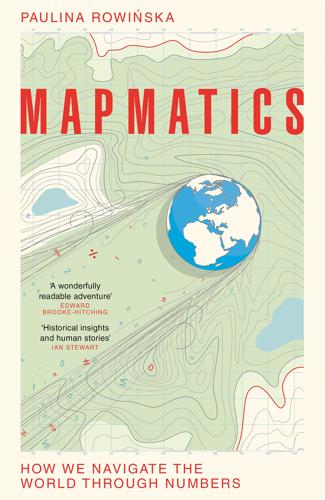
Mapmatics: How We Navigate the World Through Numbers
by
Paulina Rowinska
Published 5 Jun 2024
Shaking the foundations of geology While Tharp was tinkering with her revolutionary map, Bell Telephone Laboratories (BTL) – the famous research company, home to inventions from the transistor to the laser to multiple programming languages – asked Lamont to help them figure out safe locations for new telephone cables. Even today, phone calls and the internet work thanks to a massive network of underwater cables connecting users across continents. We appreciate this system only when it fails, be it due to human error or a natural disaster like 2012’s Hurricane Sandy, which caused major internet disruptions on the US east coast. BTL had understood the vulnerability of underwater cables since at least the 1920s, when currents caused by earthquakes had destroyed some of their transatlantic cables. To prevent similar situations in the future, they needed a map of past earthquake locations which they could then avoid encroaching on.
…
connecting users across continents: James Griffiths, ‘The Global Internet Is Powered by Vast Undersea Cables. But They’re Vulnerable’, CNN, 26 July 2019, https://edition.cnn.com/2019/07/25/asia/internet-undersea-cables-intl-hnk/index.html. major internet disruptions on the US east coast: University of Southern California, ‘Internet Outages in the US Doubled during Hurricane Sandy’, ScienceDaily, 18 December 2012, www.sciencedaily.com/releases/2012/12/121218133152.htm. had destroyed some of their transatlantic cables: Tharp, ‘Connect the Dots’. compares to the Copernican revolution: Tharp, ‘Connect the Dots’. or even the 1980s in some countries: Naomi Oreskes, ‘History and Memory’, in Plate Tectonics: An Insider’s History of the Modern Theory of the Earth, ed.
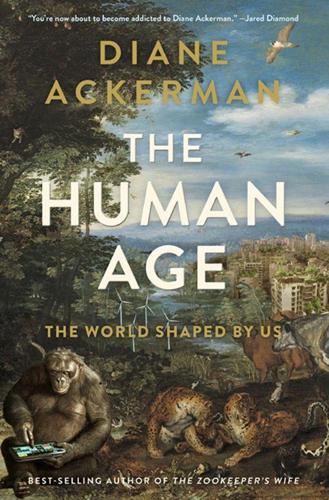
The Human Age: The World Shaped by Us
by
Diane Ackerman
Published 9 Sep 2014
Bren harvests kelp in the winter and early spring; red seaweed in June and September; oysters, scallops, and clams year-round; mussels in the spring and fall. At least that’s the theory. Hurricane Irene tore up his oyster beds, which he promptly reseeded, knowing he’d have to wait two more years for harvest. Hurricane Sandy smothered the oyster beds yet again. Clams have a better chance of surviving a hurricane because they at least have a strong foot and can move a little. But oysters really are trapped. They don’t even move to eat or mate. Without the reefs, storm surges churn them up, and as the silt smothers the oysters they die, beginning the slow process of joining the fossil record.
…
G., 231 bamboo, 132 Bangladesh, 51–53, 271 basil, 89, 90 Bat Bomb Project, 145 bats, 115 Bavaria, Germany, 107 Baylis, Françoise, 266 beans, 190 beavers, 135 bee balm, 125 beebots, 181 bees, 147, 166 beetles, 164, 180–81 Bell Museum of Natural History, 115 beluga whales, 135, 144 Benenson, Peter, 98 Benyus, Janine, 92 Berridge, Matt, 5–7, 25–28, 202 Bespoke Innovations, 236–37 Bhutan, 72 big agriculture, 154 Big Sur, 115 biofuels, 64 bioluminescent foliage, 83 biomimicry, 91–92 bionic fingers, 13 bionic suits, 13 bioprinting, 238, 245–46 bipolar disorder, 285 birds, 216 extinction of, 139 bird’s-foot trefoil, 166 black bears, 126 “Black Marble” photograph, 17 Blade Runner (film), 228, 253 Blanc, Patrick, 79–82, 84–85, 207 bleeding hearts, 125 Blizzard Nemo, 58 bloomers, 191 blue-jay feathers, 91 “Blue Marble” photograph, 17–18, 305 bobcats, 129 Boeing, 236 Bonassar, Lawrence, 243–52, 253 bonobos, 201–3 books, 171 Borges, Jorge Luis, 236 Borneo, 107, 132, 313 Boulogne, France, 83 Boulter, Nicky, 298–99 Bracken Cave, 145 brain, 150, 281 rewiring of, 191 scans of, 176–78 Bramel, Paula, 155 Brand, Stewart, 150 Branson, Richard, 54 Brazil, 46, 88, 123 breast milk, 301 breeding, 149–50 Breezy Point, N.Y., 45 Brittany, France, 62–63 Bronen, Robin, 48 Brooklyn Battery Tunnel, 45 Brooklyn Navy Yard, 82 Brown, Charles, 115–16 brown bears, 132 brown tree snake, 139 Budi (orangutan), 4–7, 25–26, 27, 28, 44, 122–23, 202, 269 iPad of, 4–7, 25–26, 27, 28, 71 building, heating of, 96–98 buildings, 90–94 bullfrogs, 132 burdock, 132 Burtynsky, Edward, 23–25 Bush, George W., 315 butterflies, 133, 166 Bygren, Lars Olov, 277–80 Byström, Joakim, 99 cadmium, 271 Café Trussardi, 82 California, 77, 117, 132 Callahan, Gerald N., 263 “Cambridge Declaration on Consciousness in Non-Human Animals, The,” 216 camels, 140 in war, 144, 145–46 Canada, 40, 43, 88, 124, 132, 266 Canada geese, 13, 135, 153, 194 Canadian rose, 39 Canadian War Museum, 82 cancer, 271, 316 cane beetles, 139 cane toads, 139 canning, 318 canola rapeseed, 153 Cape Town, South Africa, 78 carbon blade legs, 13 Carbon Capture Storage, 54 carbon dioxide, carbon dioxide levels, 34, 53 and acidification of oceans, 66 kelp’s ingestion of, 64 methods for pulling from air, 54 recent rise in, 36 Swedish lowering of, 99 urban gardens and, 74, 80 Carpenter, Rollo, 227 carpets, 87 cars, 87, 171, 191 cartilage, 244, 251 Case, Amber, 262 cats, 140, 146, 298 parasites of, 296–97 cattle, 194–95 Center for Nano Science and Technology, 183 Centers for Disease Control and Prevention, 298 Central Park, 78 Central Station, 96, 101 cerebral palsy, 253 Cerf, Vent, 202–4 Chamonix, France, 314 chatbots, 226–31 cheetahs, 132 chemputer, 237 Cher Ami (pigeon), 144–45 cherry tomatoes, 90 Chicago, Ill., 77, 78, 117 Chicago Botanic Gardens, 82 chicken coops, 88 childhood mortality, 13 Chile, 46, 99, 175 chimeras, 251, 262, 264–68 chimpanzees, 148, 216 China, 46, 88, 102, 124, 235 solar power in, 107 urban population of, 72 Chincoteague, 137–38 chipmunks, 126 chives, 90 chlorophyll, 53 chloroplasts, 291 Church, George, 151–52 cicadas, 41, 173–75 cilantro, 90 cingulate, 178 cities, 11, 13, 71–72 enviromental impact of, 72–73 growth of, 18–19, 72 limited species in, 113–14 nature vs., 112–17 population of, 72 as seen from space, 16–17, 18, 19 sky parks in, 77–78 City Hall, Chicago, 83 city parks, 83 clams, 57 Clarke, Ann, 157–67 Clarke, Bryan, 156–67 Cleverbot, 227–28 cliff swallows, 115–16 close work, 192 Clostridium difficile, 301–2 clouds, 12 coal, 21, 106 Coan, James, 178 cocaine, 298 cochlear implants, 253 cockatoos, 202 cod, 59–60 Cold War, 146 Collins, Francis, 289 colon disease, 302 Colorado, 40 compassion, 176 computers, 13, 87, 175, 187, 194, 197, 203, 211, 220, 222, 224, 226, 230, 256, 261, 270 condors, 132 consciousness, 200, 216, 217, 219, 228–29 cooking, 190 Copenhagen, 78 copper, 21 coral bells, 80–81 cordite, 153 corn, 71, 153 corncrakes, 133, 137 Cornell University, 209–25 corpus callosum, 177 cosmos, 125 cottontails, 129 cougars, 117 Council House 2 building, 94 courtly love, 190 cows, 71 coyotes, 117, 118 crabs, 138 “cradle to cradle,” 87 cranes, 124 Creative Machines Lab, 218, 223–24 creativity, 196 Crick, Francis, 274 crickets, 173–74 Cronin, Lee, 237 crops, 71 Crutzen, Paul, 9, 313 cucumbers, 89 cuneiform, 235 Curitiba, Brazil, 107 cyborg anthropology, 262 cyborg dragonflies, 146–47 cyborgs, 146–47, 251, 260, 262–63 daffodils, 125 Dakar, Senegal, 314 dandelions, 132 Dantuluri, Phani, 261 dark energy, 172 dark matter, 172 Darwin, Charles, 156, 268, 276 Dayak people, 107 day lilies, 125 deception, 219 Decker Yeadon, 92 deer, 133 Defense Advanced Research Projects Agency (DARPA), 146–47, 209, 225, 236, 256, 258–59 dengue fever, 302 Denmark, 101 depression, 196 Desertec, 106 diabetes, 301 diamondbacks, 118–19 dianthus, 125 Dietikon, Switzerland, 82 digoxin, 302 dinosaurs, 31, 154 Djairam, Dhiradj, 104, 105 DNA, 160, 263, 274–75, 278–79, 281, 282, 287 of extinct species, 151–52, 153–54, 160–63, 166–67 dodos, 163 dog roses, 132 dogs, 140, 144, 145–46, 147, 148, 149 dolphins, 147, 202, 204, 216 domestic animals, 11, 71, 140 Dominoni, Davide, 114 dopamine, 298 Dourada, Fazenda, 123 droughts, 41, 46 Duckworth, Tammy, 259, 260 dung beetles, 164 Dust Bowl, 41 Dutch Hunger Winter, 283 ears, 245–46 Earth: as seen from air, 20–21 as seen from space, 16–18, 19, 305 Earthmasters: The Dawn of the Age of Climate Engineering (Hamilton), 314 Eastgate Centre, 92, 93–94 echolocation, 147 École Polytechnique de Montréal, 181 eczema, 301 Edison, Thomas, 191, 306 Edmonton Airport, 83 education, 286 Edwards, Andres, 88 Eggerthella lenta, 302 Eggleson, Kathleen, 183–84 eggs, 160–61, 279 Eisenberger, Naomi, 177 electricity, 76, 78, 91, 97, 99, 100–103, 104, 184–87, 191, 213 electronic campfires, 193 elements, 34–35 elephants, 202, 217 underpass for, 124 in war, 144, 145–46 Ellis, Erle, 126 Eloxochitl, 112 emotions, 214, 222–23 empathy, 190, 219, 228 Energy Department, U.S., 64 England, 132 English ivy, 132 EnsnAired, 98 Environmental Protection Agency, U.S., 86–87 epigenetics, 279–86 Estonia, 77 eucalyptus, 132 Eureqa machine, 219–20, 221 European badgers, 124 Eve (robot), 221 Everglades, 129, 130, 133, 315 evolution, 208, 211, 219, 224, 251, 276–77, 279 microbes’ effects on, 292–93 extinction, 12 of birds, 139 of Miami blue butterfly, 131 orangutans and, 27–28 of Partula, 156–59 of plants, 315 and resurrection of species, 151–52, 153–54, 161–63, 208 of trilobites, 29, 30 extinctions, great, 60, 154, 305 eyeglasses, 171 factories, 71 false indigoes, 125 famine, 276, 277, 285, 286 Fantastic Voyage, 181 farming fish, 60 Faroe Islands, 78 farsightedness, 192 fecal transplants, 302 Ferrer, Miguel, 136 ferrets, 132 fertilizers, 36, 64 fiber optics, 97 field mice, 134 fighting, 190 finches, 156 Finger Lakes, 31, 131 fire ants, 132 fireflies, 181 fishermen, 56–60 fleecy electricity, 35 Flegr, Jaroslav, 297 floods, 41 Florida, 117, 131 Florida rosy wolfsnail, 157 flounder, 65 food, 7 Forbes, 235 Forbidden City, 235 Ford Motor Company, 87–88 forests, 54 fossil fuels, 10, 34, 51, 307 fossils, 9, 29–30, 31, 32, 33–34, 35, 36, 43, 57 Fountainhead, The (Rand), 59 foxes, 129, 133, 134 foxgloves, 125 France, 72, 124, 296, 298 Frankenstein (Shelley), 212–13 Franklin, Rosalind, 274 Fraser, Bill, 135 frogs, 80, 125, 131, 132 Frozen Ark, 155, 160, 163–64 frozen food, 317 fruit flies, 293–95 fungi, 289-90, 300 G8 Summit, 315 Gabriel, Peter, 201–3 Galileo Galilei, 220 Galveston, Tex., 50 Gambia, 131 gardening, hydroponic, 83 gardens, 38–39 urban, 74 vertical, 79–85 Gardens by the Bay, 78 gas, 106 Gaudi, Antoni, 236 geckos, 180 genetic mutations, 277 Genghis Khan, 272–73, 274 geoengineering, 53–54 geographic change, 11 Geological Society of London, 9 Geological Survey, U.S., 299 geothermal warmth, 95 Germany, 72, 78, 83, 101, 124, 132, 298 solar panels in, 106–7 Gershenfeld, Neil, 202–3 gestures, 26–27 giraffes, 276 global consciousness, 18 global warming, 11, 38–42, 154, 307–8 agriculture and, 56 in Bangladesh, 51–53 and development of seas, 64–65 evidence of, 108 extreme weather and, 36–43, 314 fishermen and, 56–57 gardens affected by, 38–39 habitats rearranged by, 133–40 human rights and, 48 glowworms, 144 glucocorticoids, 283 golden eagles, 132 Golden Lion Tamarin Conservation Program, 123 golden toads, 162 Golding, William, 162 Google, 192, 210 Google Glass, 260–61 gophers, 115 gorgonian, 38 grains, 71 Grand Canyon, 126 granite, 58–59 GraphExeter, 184–85, 317 grasshoppers, 173–74 Grassy Key, 131 great apes, 202 great auks, 151 Great Depression, 108 Greece, 124 Green Apple concept car, 103 Green Belt Corridor, 124 greenhouses, 90 Greenland, 42 green mussels, 131 Green over Grey, 83 growing season, 42 Guam, 139, 157 Guam rail, 139 Guatemala, 88 Gulag Archipelago (Solzhenitsyn), 218 Gurdon, John, 150, 160 Gut Erlasee Solar Park, 106–7 Guthrie, Barton, 261 habitat loss, 154 Haiyan, Typhoon, 46 Hamilton, Clive, 314 Hansen, James, 314 Hansmeyer, Michael, 236 Harvard University, 235 Hastings, Battle of, 190 heart, 150, 239, 248, 249, 250–51, 281 heat, 41 heaters, 87 heat recycling, 95–108 Helm, Barbara, 114 Henri, Pascal, 84 herbs, 89 Hernandez, Isaias, 264–65 herons, 193–94 Heuchera plants, 80–81 High Line, 77 Hitler, Adolf, 273 hockey, 40 Holocene, 9 Homer, 262 Honda, 236 Hong Sun Hye, 102 horse chestnut trees, 153 Horse Island, 58 horses, 137–38, 140, 145–46 hostas, 125 Hudson River, 54–55 hulls, 91 human genome, 13 Human Genome Project, 270, 274, 282, 285, 289, 300 Human Microbiome Project, 289 human rights, global warming and, 48 humans: as eusocial, 288 geographic expansion of, 10 geography changed by, 11 history of, 71 orangutan genes shared by, 3 population growth of, 10 technological changes to bodies of, 13 tools used by, 7, 9 humans, environmental effects of: climate change, see global warming and possibility of nuclear winter, 8–9 hummingbirds, 126 hunter-gatherers, 71 Huntington’s disease, 271 Hurricane Irene, 57 Hurricane Katrina, 46 hurricanes, 31, 41, 43, 55 Hurricane Sandy, see Sandy, Hurricane hybrid cars, 100 Hyde Park, 142 hydroelectronic power, 100, 107 hydroponic gardening, 83, 89, 90 Icarus, 224 icebergs, 195–96, 197 Iceland, 77 ice packs, 41–42 iCub, 218–19 iGlasses, 261 igloos, 86 iguanas, 131 Ike Dike, 50 Iliad (Homer), 262 India, 88, 107, 132, 175 Indian mongoose, 132 Indonesia, 132, 313 induced pluripotent stem cells (IPS), 150–51, 160–63 industrial farming, 60 Industrial Revolution, 34, 106, 185–86, 232, 235, 267 Inheritors, The (Golding), 162 insects, 166 insulin pumps, 253 intelligence of plants, 205–7 International Union for Conservation of Nature, 313 Internet, 199–200, 235 Inuit, 86 invasive species, 132, 154 Iran, 147 Iraq War, 258 Ireland, 132 Irene, Hurricane, 57 irises, 125 iron fertilization, 53 Island of Dr.
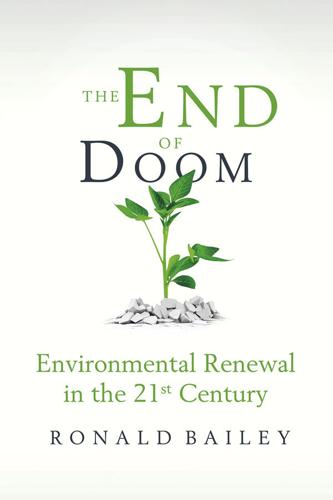
The End of Doom: Environmental Renewal in the Twenty-First Century
by
Ronald Bailey
Published 20 Jul 2015
Not just hot weather, but extreme weather,” Senator Barbara Boxer (D-CA) declared on the floor of the US Senate in May 2013 in response to the tornado that devastated Moore, Oklahoma. “You’re going to have tornadoes and all the rest.” The activists over at Greenpeace did not put too fine a point on the destruction caused by Superstorm Sandy hitting New York and New Jersey in the fall of 2013: “Hurricane Sandy = Climate Change.” One problem: Researchers can find no such trends with respect to the damage caused by tornadoes and hurricanes. The 2012 United Nations’ Special Report for Managing the Risks of Extreme Events and Disasters to Advance Climate Change Adaptation (SREX) projects man-made global warming will boost the damage caused by heat waves, coastal floods, and droughts as they get worse by the end of the century.
…
“rich generations have a lower ethical claim”: Nordhaus, The Climate Casino, 187. extreme weather: Michael Bastasch, “Boxer Uses Oklahoma Tornado to Push Carbon Tax.” The Daily Caller, May 21, 2013. dailycaller.com/2013/05/21/boxer-uses-okla-tornado-to-push-carbon-tax/. destruction caused by Superstorm Sandy: Greenpeace, “Hurricane Sandy = Climate Change,” Extreme Weather and Climate Change, 2013. www.greenpeace.org/usa/en/campaigns/global-warming-and-energy/Extreme-Weather-and-Climate-Change/. hurricanes, typhoons, hailstorms, or tornadoes: IPCC, Managing the Risks of Extreme Events and Disasters to Advance Climate Change Adaptation.
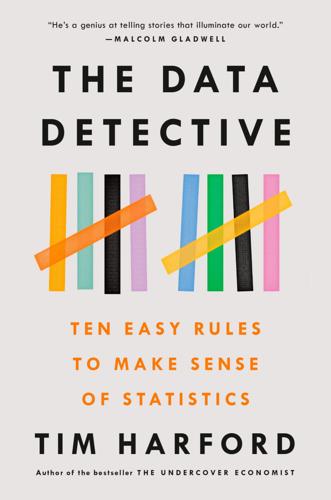
The Data Detective: Ten Easy Rules to Make Sense of Statistics
by
Tim Harford
Published 2 Feb 2021
Hispanics are more likely than whites to use Facebook, while blacks are more likely than whites to use LinkedIn, Twitter, and Instagram. None of these facts is obvious.19 Kate Crawford, a researcher at Microsoft, has assembled many examples of when N = All assumptions have led people astray. When Hurricane Sandy hit the New York City area in 2012, researchers published an analysis of data from Twitter and a location-based search engine, Foursquare, showing that they could track a spike in grocery shopping the day before and a boom for bars and nightclubs the day after. That’s fine, as far as it goes—but those tweets about the hurricane were disproportionately from Manhattan, whereas areas such as Coney Island had been hit much harder.
…
See infographics; visualization of data Great Depression, 243, 261 Great Leap Forward, 202 Greek debt crisis, 192–95, 211 Greek Ministry of Finance, 193 Greek Prosecutor of Economic Crimes, 193 Greenpeace, 42 Greifeneder, Rainer, 107 gross domestic product measures, 94 gross vs. net measures, 222 Guangdong, China, 60 Guardian, 67, 74, 77, 101 gun control, 33–34, 268 gun deaths, 72–74, 72n Gun Violence Archive, 72n habits fostering statistical analysis, 25 Hand, David, 146 HARKing (Hypothesizing After Results Known), 118 Harper, Sean, 196–97 Hawking, Stephen, 277–78 Hayek, Friedrich, 59 Hazard, Margaret, 240 headlines, 229 health and medical data and clinical trials, 4n, 53, 61, 125–26, 129–30, 133, 139–40, 180 and correlation vs. causation, 14–15 and emotion’s impact in data interpretation, 24–27 and epidemiology, 8, 29, 120n and Fisher, 240–41 and gun deaths, 72–74, 72n HIV/AIDS data, 36 and informed consent, 181 medical records, 220–21 and motivated reasoning, 28–29 and optimism bias, 96–98 and publication bias, 125–26 and sanitation advocacy, 225–26, 233–37 and scale of news reporting, 91 and smoking research, 3–6, 96, 100, 248, 279 and trust in statistics, 52–53 and vaccinations, 53–54, 99 and war casualties, 231–37, 234, 235 health care reform, 188–89 heart attacks, 6 hedge funds, 255, 257 height distribution data, 93, 228 Hello World (Fry), 160, 167–68 Herbert, Sidney, 220, 227, 236 herpes virus, 25 Hill, Austin Bradford, 3–6, 4n, 12, 15, 225, 279 Hitchhiker’s Guide to the Galaxy, The (Adams), 65 Hitler, Adolf, 4, 42–43, 201 HIV/AIDS data, 36 Holmes, Nigel, 217 Holocaust, 43 homicides, 55, 72–73, 87–89, 88n Hong Kong, 60, 200–201, 203 Horse Guards, 215 hot sauce paradigm, 70 House of Commons, 146 House Ways and Means Committee, 186 household incomes, 141 How Charts Lie (Cairo), 227 How to Lie with Statistics (Huff), 2–3, 6, 15, 120 How to Live (Fisher), 241 Huff, Darrell, 2–3, 6, 8–10, 15, 120, 266, 278 human evolution, 38 human immunodeficiency virus (HIV), 28, 36, 38 human judgment vs. algorithms, 167–71 humility, 259 Hurricane Sandy, 150 hurricanes, 150, 197–98 hygiene standards, 225–26, 226n. See also sanitation advocacy hypotheses, 255 Hypothesizing After Results Known (HARKing), 118 ideologies, 267–69 Illinois, 170–71 illusion of explanatory depth, 272 images as data, 62–64 immigrants, 55, 71 immigration policy, 191 IMPACT algorithm, 163 impartiality, 139, 188, 190 In Search of Excellence (Peters and Waterman), 123 incentives, 115 income measures, 141.
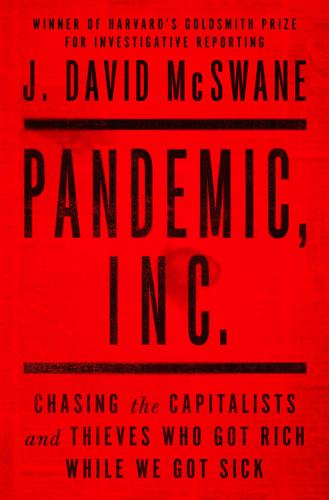
Pandemic, Inc.: Chasing the Capitalists and Thieves Who Got Rich While We Got Sick
by
J. David McSwane
Published 11 Apr 2022
By Wednesday, Kadlec called him to his office and informed him of higher-level conversations about creating a special team to handle supplies. The effort would be “lifted and shifted” to FEMA, under the purview of the U.S. Department of Homeland Security, not HHS. And the administration wanted Polowczyk to run it. Polowczyk had worked with FEMA during Hurricanes Sandy and Maria, deploying Navy resources where they were needed. In this role, he’d come to know chapter and verse what experts call the “Emergency Response Framework.” The framework is a detailed yet simple set of organizing guidelines that were developed over decades to help any administration work through any disaster.
…
A city of 8.8 million people, the city that never slept, lulling into a forced coma. But city employees went to work, many of them reporting to the city’s high-tech Emergency Operations Center in Brooklyn, aka “the bunker.” Much of City Hall decamped to the bunker, which is reminiscent of a Hollywood action movie set. It was built with natural disasters such as Hurricane Sandy or a terrorist attack in mind, but it was now the central command for the city’s hunt for masks, gloves, gowns, ventilators, and beds. City bureaucrats broke the effort down into three front lines: space, stuff, and staff. Bray knew the city couldn’t do much of anything about staff—that was left to hospitals, and there is a finite number of doctors and nurses available.

Age of Discovery: Navigating the Risks and Rewards of Our New Renaissance
by
Ian Goldin
and
Chris Kutarna
Published 23 May 2016
If Facebook were a nation, it would be the most populous on Earth, with over 1.5 billion active users each month.31 And despite being dispersed around the globe, they are all, on average, less than four degrees of separation apart.32 On Facebook, even if we’ve never met, a friend of your friend knows a friend of my friend. This new group intelligence has been pivotal in many of the most talked-about events of the twenty-first century: the Arab Spring, the Occupy movement, public relief efforts in response to Hurricane Sandy, the Paris Climate Accord and the rise of extremist political parties in Europe. The wide range of these activities highlights how the new digital medium can bring both positive and negative outcomes. Societies and citizens are still fumbling to learn how to operate and manage this layer of consciousness.
…
GDP per capita, 89 limits of, 113–14 paradigm shifts, 112–13 See also disease; genetics; pandemics; pharmaceutical industry Heisenberg, Werner, 124 HIV/AIDS, 76, 83, 98, 101, 154, 158, 185–6 Hong Kong, 24, 63, 180, 184 Hoskins, W.G., 90 Huffington Post, 35 Huizinga, Johan, 9 Human Development Index (HDI), 101 Hurricane Sandy, 36 identity, 65–6 identity theft, 199 ignorance, 65–6 illicit economy, 64–5, 166 immigration. See migration import substitution, 22 Incas, 9, 93 India, 66, 192, 206, 262 and development, 4, 43, 78, 82, 84, 99–100 and environmental challenges, 251, 260 and exploration, 18, 40 and migration, 57 and poverty, 77 and trade, 45–6 Indonesia, 19, 43, 99, 252 infrastructure nature as, 200–1 in the Renaissance, 193–5 and systemic risk, 195–200 Intel, 31, 59, 121, 126, 157, 196 intellectual property (IP), 136, 199, 227, 244–5 International Monetary Fund (IMF), 22, 97, 190–1, 219, 221 Internet, 4, 7, 10, 34, 35, 66, 81, 95–6, 136, 145–6, 157, 159, 179 Amsterdam’s exchange hub, 248–9 and complexity, 176, 196, 198 and concentration, 253 connectivity (Internet users and mobile subscriptions), 32 cybercrime, 198–9, 223 and infrastructure, 175, 199–200 memes, 138 and power consumption, 196 quantum Internet, 126 and systemic risk, 197–9 See also digitization Internet of Things, 61–2 Iran, 199, 253 Iraq, 166, 207, 209, 211, 221, 228, 242 Islam, 2, 10, 60–1, 193–4, 252 Islamic State of Iraq and the Levant (ISIS/ISIL), 36, 166, 206–13, 242, 253 Islamophobia, 206 Jagiellonian University (Krakow), 51, 133 Japan, 4, 29, 43, 60, 63–4, 86, 196 Jianlun, Liu, 180 Kasparov, Garry, 152 Kepler, Johannes, 107 Kjellberg, Felix, 138 language and collective effort, 145–7 and ignorance, 65–6 and translation, 29, 80, 146–7, 149, 158, 217 See also printing and publication Large Hadron Collider, 137, 147, 149 Latin America, 23–4, 43, 49, 52–3, 76, 90, 161, 238, 253 Leonardo da Vinci.
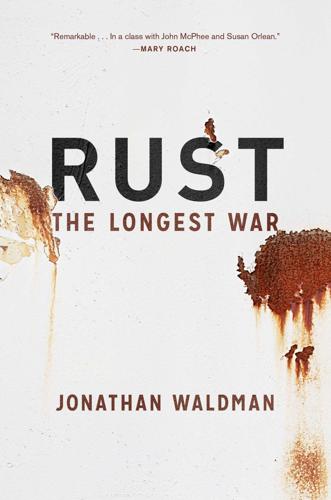
Rust: The Longest War
by
Jonathan Waldman
Published 10 Mar 2015
Velcro shoes and white socks bearing the Steelers logo completed Dunmire’s disheveled look, but Dunmire—sixty years old and proudly quirky—didn’t care. He’s a Pittsburgh fanatic, always wearing, beneath business attire, at least one article of clothing from the city. His exhaustion and tardiness were typical, too, but their cause was not. He’d been driving for fifteen hours, through Hurricane Sandy, which had grounded the flight from Pittsburgh that he’d planned to take. Through horizontal rain and eighty-mile-per-hour winds—through seven states, three of which had declared states of emergency, through a natural disaster that stopped Romney, Biden, Obama, and Clinton from campaigning—he’d driven, with only a short stop outside of Washington, DC.
…
He’d failed to recover from the all-night drive, let alone the draining video shoot—and had barely summoned the energy to go out to dinner with Burton and a few of the crew. “The spirit was willing,” he said, “but the body was weak.” He opened up USA Today to coverage of the destruction wrought by Hurricane Sandy. He said it was like Pearl Harbor without the firebombs. He worried about damaged military equipment, and, seeing a photo of a flooded New York City subway, said there was saltwater in all kinds of undiscovered places—that we’d find out about it years hence. “I just hope they consult us, include us in the contracts,” he said.
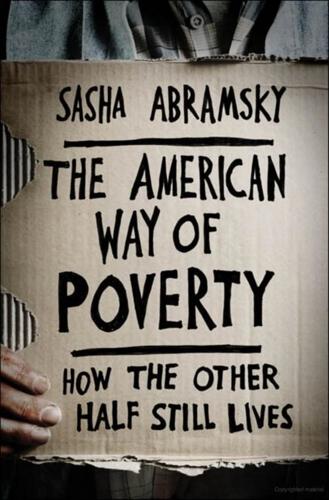
The American Way of Poverty: How the Other Half Still Lives
by
Sasha Abramsky
Published 15 Mar 2013
In New York City a variety of rent-subsidy programs exist for ex-homeless people who have gotten jobs and started to sort out their lives. They cost, on balance, about $800 per month per recipient, not a huge sum in a metropolis where the average rent for a one-bedroom apartment in 2012, even before Hurricane Sandy left tens of thousands homeless and added further pressure to an already overheated rental market, was a staggering $2,568 per month.14 But the city worries that if it makes the application process too easy, people who don’t genuinely need the aid will sneak onto the rolls. And so it makes applications deliberately difficult.
…
See also Income Guggan, Mark, 304 Gulf Coast, 157–159 Hacker, Jacob, 164, 175–176, 313 Hadlock, Jennifer, 223 Half in Ten, 196 Hannity, Sean, 39, 137 Hardmeyer, Eric, 264 Harkin, Tom, 246–247 Harkinson, Josh, 264 Harrington, Michael, 2–3, 4, 13, 45, 46, 73, 79, 81, 86, 131, 138, 153, 191, 213, 323–324, 327 Harris, Kamala, 270, 279 Harrisburg, Pennsylvania, 58 Harvard University School of Public Health, 75 Hawaii, 138–143, 149, 208, 321–322 Hayek, Friedrich, 86–87 Health insurance, 69–70, 71–72 Healthcare/healthcare reform, 12, 24–25, 47, 56–57, 72–73, 74, 86 Hecht, Ken, 133, 228–229 Heritage Foundation, 137–138, 205 Hewlett-Packard, 83 Hicks, Charity, 320–321 Hispanics/Latinos, 9, 26, 172–173 Holzer, Harry, 217 Homelessness, 100–101, 170–171, 269–270, 283–284 and children, 60–61, 146–147, 267 See also Housing; Shelters Housing, 12, 101–102, 172–173, 199, 266–269, 270, 283–284 and children, 238, 267–269 See also Homelessness; Mortgage foreclosures; Shelters Housing market collapse, 2, 20, 58–59, 164–169, 174. See also Mortgage foreclosures Howell, Shea, 127–128, 129 Hoynes, Hilary, 232 Human Rights Watch, 182 Humphrey, Hubert, 77 Hunger in America (Harvard University School of Public Health), 75 Hurricane Katrina, 153–156, 156–157, 159. See also Natural disasters Hurricane Sandy, 159, 160. See also Natural disasters Idaho, 177, 178 Illinois, 267 Immigration, illegal, 90–91, 91–96, 199. See also Migrant workers, undocumented Imperial County, California, 10 Income, 175–176, 177. See also Guaranteed income; Minimum wage Income distribution, 34, 38 Income inequality, 26–28, 45, 53–54, 55, 81–82 Income volatility, 30–31 India, 251 Indiana, 10, 106 Individual freedom, vs. economic justice, 3, 64 Industries, green, 264–266 Infant mortality, 24, 25, 33–34 Infrastructure, public and private, 263–264 Iowa Citizens for Community Improvement, 36 Japan, 245 Job training/retraining programs, 305–306, 306–310 and community building, 308–309, 309–312 Jobs, green, 264–266 Johnson, Arley, 196 Johnson, Kevin, 276 Johnson, Lyndon, 73, 74, 75–78, 216 Johnston, David Cay, 53–54 Joint Economic Committee of Congress, 3 Jones, Jessica, 107 Jones, Van, 264, 265 Jones, Will, 308–309, 320 Joseph, Clara, 67–68 Joseph, Matthew, 59, 322–323 Joseph, Michael, 168–169 Juneau, Denise, 278 Kalbach, Barb, 36–37 Kansas City, Missouri, 117–118 Katz, Michael, 84, 136 Kennedy, John, 73, 74, 76 Kennedy, Robert, 78–79, 80, 96, 200, 230 Kennedy, Teddy, 291 Kentucky, 106 Keynes, John Maynard, 84–85 King, Martin Luther, 79–80, 126 Kitzhaber, John, 227 Koch brothers, 52 Kostelnick, Lauren, 31 Kristof, Nicholas, 219 Kuzman, James, 146–148, 280 Ladd, Helen, 281–282 Lampman, Robert, 3 Land banks, 265.

The Future Is Faster Than You Think: How Converging Technologies Are Transforming Business, Industries, and Our Lives
by
Peter H. Diamandis
and
Steven Kotler
Published 28 Jan 2020
Today, everyone from 7-Eleven to Domino’s Pizza has a program in the works. Tomorrow, whether it’s the latest John Grisham novel, cough syrup, or some late-night ice cream, drones are on the job. For disaster relief and delivery of medical supplies, drones have been on the job for a while, and not just in Japan. They were in Haiti after Hurricane Sandy in 2012; in the Philippines after Typhoon Haiyan in 2013; in the Balkans for flooding; in China for an earthquake. They’re faster than humans at spotting survivors in need of help. Boeing’s heavy-lifting drones can hoist a small car, so they’re often better at providing that help. A company called Zipline uses them to deliver blood and medicine in both Rwanda and Tanzania, and since 50 percent of Africa lacks adequate roads, this development could significantly improve the quality of medical care on that continent.
…
See also: this article in the Japan Times: https://www.japantimes.co.jp/news/2019/06/04/business/financial-markets/japans-pension-system-inadequate-aging-society-council-warns/#.XWayvi2ZOWY. robo-mason: Check out the video: https://www.youtube.com/watch?v=HiOkXKb1DBk. The UR3: See: https://www.universal-robots.com/products/ur3-robot/. Amazon’s also been driving the drone segment: See: https://www.amazon.com/Amazon-Prime-Air. Hurricane Sandy: Edward Baig, “Cell Service Can Mean Life or Death After a Disaster. Can Drones Help?,” USA Today, March 16, 2018. See also: https://www.nytimes.com/2018/04/06/nyregion/drone-cellphone-disaster-service.html. Boeing’s heavy-lifting drones: Alex Davies, “Boeing’s Experimental Cargo Drone Is a Heavy Lifter,” Wired, January 14, 2018.

Cities Are Good for You: The Genius of the Metropolis
by
Leo Hollis
Published 31 Mar 2013
The fabric of the streets is looking slightly too shabby, the shops are closing, and perhaps the library is empty. Too often we wait until the community burns in a riot, or falls into disaster before we act. But are we too late? Have Jacobs’s predictions of the impending Dark Age come to pass already? I don’t think so. Yet one might have been forgiven for thinking the worst when watching the impact of Hurricane Sandy upon New York in November 2012. The super storm occurred as I was reading through these pages for the final time and it underscored some of the more pessimistic feelings that many have towards the city, and indeed the future. The natural disaster battered the Five Boroughs and the aftermath was an unnerving reminder of the fragility of the city.
…
Perhaps, but this is also why so many urban thinkers are talking about the importance of resilience. Not even a city mayor such as Michael Bloomberg can stand amidst the wreckage of Sandy and tell us that everything is fine and that a disaster of this magnitude will never happen again. We have to accept that events like Hurricane Sandy cannot be designed out of the city’s future; there will be natural disasters and human catastrophes. However, the true measure of a healthy and just city must be seen in how the metropolis survives and builds itself back up again. As government agencies like FEMA, the City’s transport engineers and small businesses ready themselves to open up again, and on-the-ground activists like Occupy Sandy do their best to bring the city back to life, we need to ask, how will the city recover?
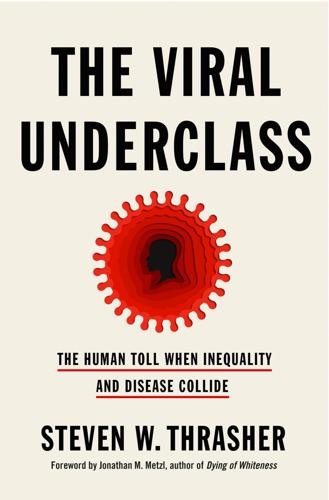
The Viral Underclass: The Human Toll When Inequality and Disease Collide
by
Steven W. Thrasher
Published 1 Aug 2022
Even when there is nothing to be done to stop or postpone death, just being with someone in the last moments of their life can be very meaningful—for the person left behind holding the deceased’s hand and, I suspect, for the person leaving the land of the living. Besides, New York City had been one of the truest loves of my life. I had breathed its deadly smoke on September 11, 2001; ridden its financial crash in 2008; and weathered Hurricane Sandy in 2012. Many of the people I loved most lived in the Big Apple’s five boroughs. And even though the sights of a U.S. Navy hospital ship pulling into New York Harbor and a field hospital going up in Central Park were alarming, the resources were flowing toward New York, not from it. If I was going to get sick, I had as good a shot in that city as in any.
…
Giuliani hepatitis A (HAV) hepatitis B (HBV) hepatitis C (HCV) herd immunity Herman, Edward Hernandez, Roxanna heroin herpes simplex virus (HSV) Hiroshima and Nagasaki HIV/AIDS (human immunodeficiency virus/acquired immunodeficiency disease syndrome) COVID-19 and condoms and deaths from genetic sequences of homelessness and incarceration and number infected prophylaxis and racial disparities and shame and sterilization and testing and transgender people and white immunity and HIV/AIDS activists HIV Center on Law and Policy “HIV flu” HIV Is Not a Crime National Training Academy HIV Justice Network HIV laws HIV medications HIV-positive status Hochul, Kathy Hoffman, Cara Holliday, George home aides homelessness homonormativity homophobia Hong Kong Hoppe, Trevor hormones hospitals housing housing assistance How to Hide an Empire (Immerwahr) human papillomavirus (HPV) Human Rights Campaign human trafficking laws Hund, Wulf D. Hunt for Red October, The (film) Hurricane Katrina Hurricane Rita Hurricane Sandy hypertension Iger, Bob Illinois Immerwahr, Daniel immigrant detention centers immigrants Immigration and Customs Enforcement (ICE) immunocompromised incarceration Black men and COVID-19 and Democratic Party and disability and education programs HIV and homelessness and LGBTQ and overdose deaths and shame and small towns and tuberculosis and U.S. vs. global white immunity and women and incontinence Indiana indigenous people Indigenous Races of the Earth (Nott and Gliddon) individualism individual shame inequality influenza avian flu H1N1 (“swine flu”) “HIV flu” and Spanish flu influenza (flu) shots intellectual property Interagency Council on Homelessness interdependence International Academy of Television Arts and Sciences International Monetary Fund (IMF) interracial sex Investigation of the Ferguson Police Department Iowa Iraq War Irish immigrants Irving, John Italy Ivanovsky, Dmitri Jackson Heights, Queens James, Letitia James, Sherman Jenner, Edward jobs.
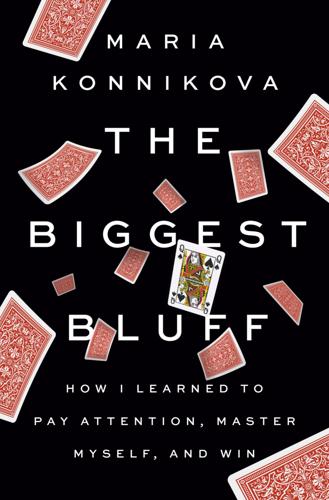
The Biggest Bluff: How I Learned to Pay Attention, Master Myself, and Win
by
Maria Konnikova
Published 22 Jun 2020
But here’s what psychologists find, over and over: you can show people all the charts you want, but that won’t change their perceptions of the risks or their resulting decisions. What will change their minds? Going through an event themselves, or knowing someone who has. If you were in New York City during Hurricane Sandy, for instance, you are far more likely to purchase flood insurance. If you weren’t, you may invest in a beachfront property in Malibu even though the numbers say your beach will be gone soon, and your house along with it. If you lived through 9/11, your fear of terrorism will be vastly overblown.
…
See also gender issues and misogyny in poker Harrah’s, 131 Harrington, Dan background, 47–49, 61 and Lodden Thinks, 186–88 nickname, 58 poker coaching, 48–60, 99, 150, 167–68 real estate business, 42 Harrington, Pádraig, 49 Harrington on Hold’em (Harrington), 48–49, 53, 56 Hart, Kevin, 176–78 Haxton, Ike, 86, 138–39, 147, 270, 297–98, 302–3 headphones, 231–32, 261, 306, 313 heads-up play and Asia Pacific Poker Tour events, 312–13 and author’s progress as player, 283–86 defined, 329 and donkey space, 223–26 and famous Seidel showdown, 83–86 and online play, 79 health problems, 18–19, 228, 318–21 Hellmuth, Phil, 186, 305 Hendon Mob, 166, 167, 192 Hendry, Stephen, 265 Heracleida, The (Euripides), 267 high cards, 329 high-rollers and Asia Pacific Poker Tour, 296 and author’s progress as player, 122, 168 and Electric Daisy Carnival, 140 and famous Seidel showdown, 83 intimidation factor, 142 and Monte Carlo, 173, 175–77 and PokerStars Caribbean Adventure, 268–69 super high roller games, 175–77 and superstition, 305 and time pressures, 75 Ho, Lawrence, 295 hole cards, 22–23, 53, 214, 329. See also pocket pairs; suited hole cards Hollywood, 118 Holz, Fedor, 140 Hoover Dam, 117–18 horse racing, 42, 69 hot hand hypothesis, 106–9, 312 Hughes, Howard, 118 Hurricane Sandy, 16 hygiene issues, 120 idiopathic disease, 18–19 “If” (Kipling), 47 illusion of control, 13–15, 20, 62 implicit bias, 197 impostor syndrome, 105–6, 234–35, 261–62, 272–73, 283, 287, 290–91 Independent Chip Model (ICM), 164 information availability and academic value of poker, 20–23 and confidence, 146 incomplete information in poker, 21–23, 45 and online play, 73 and position, 54, 77 insurance, 16 intuition, 15–16, 108–9, 200, 208–9, 281 investing strategies, 13–14, 37–38, 40–41, 241 irrationality, 298 Ivey, Phil, 28–29, 185–86 James, William, 113 jamming, 23–24, 329 jazz analogy, 87–88, 141, 161, 290 Jefferson, Thomas, 33 Jillette, Penn, 121 Jimmy*z, 181 job markets, 45–46 “Jungleman.”
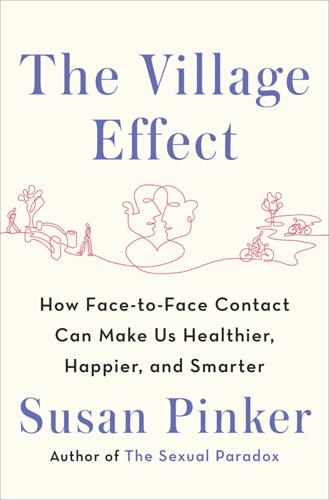
The Village Effect: How Face-To-Face Contact Can Make Us Healthier, Happier, and Smarter
by
Susan Pinker
Published 30 Sep 2013
“There are lots of people we have relationships with,” says Matthew Brashears, a sociology professor at Cornell and one of the authors of this study. “But this question picks up ties to people that are particularly strong—people we can go to if we’re in trouble, who could give you a substantial loan, who would help you. They’re important key people, so the number tends to be small.” What Hurricanes Sandy, Katrina, and Haiyan, as well as the Chicago and Paris heat waves, taught us is that surviving is often a matter of who cares enough to check up on you. Who will come by to offer you a lift, some groceries, or a place to stay if you need it? Research shows that those people most at risk of dying have no one nearby to ask for help.17 So I was shocked that most Americans say they have fewer than two people they can depend on.
…
The official response to these calamities has so far been about building better infrastructure and communication systems: fortified power lines, buildings, dams, bridges, and cell networks. These changes are badly needed. But what about focusing on our social ties as well? Because the evidence is clear. From the Chicago heat wave to Hurricanes Sandy and Katrina and the earthquakes in Japan and India, those most likely to make it had people in their circle who cared enough to check up on them and lend a hand. Those who were isolated—during or after the crises—were more likely to die.12 In order to build what I’ve called the village effect, you need a community of real friends you see in the real world.
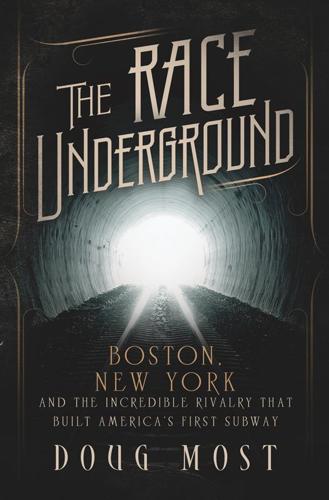
The Race Underground: Boston, New York, and the Incredible Rivalry That Built America's First Subway
by
Doug Most
Published 4 Feb 2014
Holbrook, Cabot & Rollins holding companies homelessness Hoosac Tunnel, Massachusetts horse-drawn streetcars in Boston in New York City problems with range of horseless carriage horses health and welfare of nuisance of as power source Hosmer, Thomas B. Hotel Pelham (Boston) Houston Street, West Street & Pavonia Ferry Railroad Company Howe, Elias Howe, Leonard Howes, Osborne, Jr. human remains, encountered on subway digs hurricane Sandy Hyde, Henry D. immigrants Incas Inman, John Interborough Rapid Transit Company (IRT) charter of, how obtained International Electrical Exhibition (Philadelphia, 1885) Intramural Railway (Chicago World’s Fair) inventions, 19th-century Irish in Boston in New York Italians, in Boston Jackson, William Jackson, Willis G.
…
Whitney and partners electrification of elevated lines Hewitt’s modernization plan (1888) horsecar lines planning of privately built and operated, as policy publicly built and leased to highest bidder, as policy rapid transit system begun rationalization of routes subway plans subway vs. elevated lines debate See also New York subway New York District Railway New York Gas and Electric Light New York harbor New York & Harlem Railroad Company The New York Herald New York Loan and Improvement Company New York Public Library New York subway accidents during construction charter to operate consideration of construction workers contractors’ bids (1897) contractors’ bids (1900) deaths during construction depth of, average depth of, maximum groundbreaking ceremonies opened to the public opening celebrations operation of, bid on questions asked and answered in newspapers ridership shut because of hurricane Sandy in 2012 Steinway and Parsons plan (1896) tour of tunneling of walls and roofs The New York Sun New York Supreme Court The New York Times New York Transit Commission (Steinway commission) The New York Tribune nineteenth century, an age of innovation Ninth Avenue elevated (New York City) O’Brien, Hugh O’Brien, James O’Donnell, Edward O’Keefe, Michael Olmsted, Frederick Law omnibuses decline of Onderdonk, Andrew O’Reilly, F.
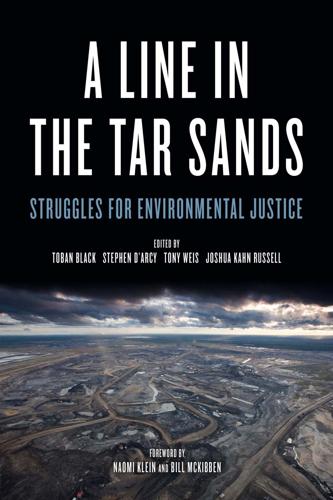
A Line in the Tar Sands: Struggles for Environmental Justice
by
Tony Weis
and
Joshua Kahn Russell
Published 14 Oct 2014
For example, in 2011, fourteen weather-related disasters in the US (from Joplin’s tornado to Grand Forks’s flooding to New England’s storms) are estimated to have cost the country around $14 billion, according to a study by the Natural Resources Defense Council, and these numbers were dwarfed by Hurricane Sandy the following year. These costs, and the frequency and severity of disasters, have increased every year since then. Disasters related to climate change cause immeasurable losses, such as the poisoning of the Athabasca River in the tar sands extraction zone, and present premature deaths and hospitalizations caused by climate change-related health issues, such as extreme heat and flooding.
…
Lawrence: exploration and drilling in, 29, 31; toxic threats to, 78 Gupta, Kumar, 58 Hafiz, 160 Haida First Nation, 11 Haisla people, 155–56, 158 Haluza-DeLay, Randolph, 69–70 Hansen, James, 15, 170, 218, 220, 312–13 Harper, Stephen, 6, 13, 23, 28, 29, 31, 56, 57, 62, 73, 94, 97, 107, 115, 125, 149, 210, 214, 251, 273–74, 284 Hassi, Satu, 58 Hathorn, Mike, 192 Haudenosaunee Development Institute (HDI), 260, 264 Haudenosaunee people, 253, 265 Healing Walk, 16, 88, 127–33 Health Canada, 53 health risks and impacts, 10–12, 23, 32, 33, 68–69, 73, 135–36, 140, 196, 199–201, 202, 230, 254–55, 316 Heartland Institute, 282 hegemony, 36–44; contesting representations of, 41–43; of ENGOs, 88 Hertsgaard, Mark, 222 hetero-patriarchy, 255 Heywood, Todd, 344n14 Hightower, Jerry, 192 Hoberg, George, 71–72 Honor the Earth, 235, 239 horizontal drilling, 313–14 hormone disruptors, 136 Houston (Texas), Manchester community of, 182, 184–86, 189 HSBC, 282 Hughes, Simon, 209 human rights, 13, 75, 94, 126, 230, 250, 270, 275, 288, 294 Hupacasath First Nation, 93 Hurricane Katrina, 182 Hurricane Sandy, 230 hydraulic fracturing. See fracking hydrocarbon consumption, 25 hydrocarbon extraction, 105 hydrocarbons, 9, 231, 254, 281, 285 Idle No More movement, 16, 29, 74–75, 144, 214, 231, 251, 261, 273–74, 325n43, 349n11 (ch.24) Imperial Oil, 76, 95, 138, 141 impoverishment, intersection of with colonialism, labour, capital, and the state, 87 India, 61, 78, 102; trade agreement with, 93 Indigeneity, resurgence and, 259 Indigenous Economic Principles, 238 Indigenous Environmental Network (IEN), 170, 176, 187, 208, 212, 236, 240, 242, 244, 247, 250–51, 271, 293; Protecting Mother Earth Summit (2006), 246 Indigenous lands, 316; settling of, 96–97, 115 Indigenous-led movement, proposal for, 267–78 Indigenous peoples, 9, 13, 16–18, 23, 48, 55, 185, 204, 287, 298, 311–12; activism by, 66, 68, 69–72, 74, 75, 98; and age of fossil fuels, 229–39; alienation of, 255; alliances with environmental NGOs, 41–42; and building economics for seventh generation, 229–39; cancer among, 53, 114, 116, 135, 140, 208, 236, 254; and Chemical Valley, 135–45; children, 255, 261–63; economic marginalization of, 254; exploitation of, 97, 115, 125–26, 255, 258, 295, 299; genocide of, 85; Healing Walk, 16, 88, 127–33; industrialization of territories of, 257; and Keystone XL, 169, 280; killing and displacement of, 97; languages of, 155; in Latin America, 94; as most oppressed group in Canada, 69–70; and Northern Gateway project, 147–59; politicization of, 251; poverty among, 114; resistance by, 16, 18, 41, 80, 143–45, 156–59, 253–66, 267–78; respiratory illness among, 114, 116, 135; self-determination of, 12, 93, 98, 256, 258, 260–61, 271, 276; traditional knowledge of, 153, 156, 259–60; traditions of, 254; two-spirits (okichidaakwewag), 255, 261–63, 348n6; and UKTSN, 207–16; and uranium mining, 315–16; women, 193, 209, 213, 242, 246, 251–52, 255, 261–63 Indigenous rights, 81, 122, 124–26, 128, 153, 208–9, 268, 271–75, 277, 294; strategic framework of (NRF), 240–52, 257–59.

Vertical: The City From Satellites to Bunkers
by
Stephen Graham
Published 8 Nov 2016
The reliance of modern elevators on electricity adds a further twist to the vulnerability of high-rise occupants. Although power outages never featured in the imaginings of the modernist architects who postulated life in vertical towers, the fragilities of contemporary power grids can also quickly turn vertical living into vertical isolation. This was powerfully demonstrated in October 2012 as Hurricane Sandy tore into New York City. As they faced abandonment in their new penthouse apartments, the downsides even for the wealthy of living at the tops of glittering new towers during power blackouts became starkly obvious. Residents were forced to discover the often hidden circuits of stairwells within buildings that they had not seen in years (if at all).
…
Paulo (newspaper), 103 Fonseca, Alcebíades, 124 Fordo, 345 Forth, Christopher E., 335 Forward-Looking Infra Red (FLIR), 105, 110 Foucault, Michel, 82n44, 104–5, 109 Foundation for Fundamental Rights, 67 Freedlander, Joseph H., 155 ‘Freedom Tower’, 156–7n22 Freire, Carlos, 100 French Centre for Meteorological Research, 264 French Fascist movement, 181 Fresh Kills landfill, 310–2 Freud, Sigmund, 332 Fuchu, 129–30 Führerbunker complex, 358–9 Fukushima, 257 Fuller, Buckminster, 24, 267–8 Fuller Building, 155 Fumihiko, Maki, 221n6 Futurist movement, 52, 58 G1 Tower, 129–31, 134, 141 Gabon, 378 Garfinkel, Susan, 137 Garrett, Bradley, 360–1, 363 Gaza, 72–3, 76, 350, 363 Gaza-Egypt border, 349, 350n32, 351 GCHQ, 36n26 Gehry, Frank, 178, 196 Gelinas, Nicole, 109 General Atomics, 74, 83 General Dynamics, 74 George, Rose, 330 Geospatial Corporation, 344 Germany, 55, 57–8, 179–80, 281, 358 Gezi Park, 276 ‘Gherkin’, 164–5 Gideon, Sigfried, 64–5, 181 Gilbert, David, 49–50 Gissen, David, 320 Glaeser, Edward, 174–6, 184, 195–6, 214–5, 217–8 Glasgow, 114, 186–8, 187n29 Glass, Philip, 186 Global South, 206, 335–6, 376, 378–9 Goering, Hermann, 56 Goldberger, Paul, 177, 198 Goldfinger, Ernö, 205 Golding, Francis, 166 Goldsmiths College, 75n27 Gómez, Laura Gutiérrez, 377 Google Earth, xv, 11, 42–51, 70, 102, 299, 300, 344, 360, 386n59 Gordillo, Gastón, 78, 80–1, 110 Gorgon Stare project, 74, 88 Gori, Maja, 294 Grabar, Henry, 266 Graham, Stephen, 104 Grand Central Station, New York, 353 Granick, Harry, 278 Gray, Chris Hables, 57 Great Depression, 221 Great Fire, 201 Great Pyramid of Giza, xi Great Wall of China, 263 ‘Great Wall of Lagos’, 304 Greece, 46 Greenwich Village, 319–20 Gropius, Walter, 179–80 Guangzhou, 141 Guardian, 124 Guatemala City, 209–11, 308, 379 Guernica, 54, 55 Guinea, 374, 377 Guinea-Conakry, 377–8 Gulf Coast, 263 Gulf of Mexico, 380 Gurevitch, Leon, 44 Haacke, Paul, 16, 18, 388–9 Habraken, John, 183 The Hague, 46, 276 Hamas, 350 Hamburg, Germany, 59, 333 Hamburg-Harburg Technical University, 169 Hamilton Scotts tower, 144 Hara, Hiroshi, 239 Harris, Andrew, 159, 232 Harris, Chad, 30, 66 Harry, Prince of England, 111 Hart, Matthew, 383 Hass, Michael, 79 Hatherley, Owen, 189, 205 Hauseer, Oke, 238 Haussmann, Georges-Eugène, 250, 326–7 Hebbert, Michael, 224 Hebron, 295–6 Heilig, Donald, 342 Heise, Thomas, 126, 354 Hellfire missiles, 67, 75, 77–8, 80 Helsinki, 131, 164 Henderson, Jan-Andrew, 325n11 Here Comes Tomorrow pamphlet, 66 Heritage Foundation, 38 Hermes drones, 83 Herzog, Jacques, 196 Heygate Estate, 203, 204 ‘Hidden Art Gallery of Paris’, 355 High Frequency Auroral Research Program (HAARP), 344 High Rise (Ballard), 121, 204 ‘High Rise Laboratory’, 131 Hiroshima, 56–7, 59, 60 Hitachi Corporation, 129–30, 134, 141 Hitchens, Theresa, 41 Ho Chi Minh trail, 274 Holland, 296 Holmes, Brian, 48 Holocaust, 58 Homestake Mine, 344 Hong Kong, 5, 132, 162n36, 189–90, 192, 201, 233–6, 239, 256, 260–1, 268, 293, 296–7 horizontalidad (‘horizontalism’), 22 House of Saud, 163 Housing Development Board, 145–6, 243 Houston, Texas, 267 Höweler, Eric, 151 How Outer Space Made America (Sage), 26n5 How the Other Half Lives, 317 Hpakant, 309 Huber, Matthew, 366 Hugo, Victor, 327–8, 355 Human Rights Watch, 271 Humes, Edward, 307 Hungerford Bridge, 97 Hunt, Jon, 314 Huriot, Jean-Marie, 159, 160 Hurricane Katrina, 109, 118, 305 Hurricane Sandy, 147 Hutton, Will, 313 Huxtable, Ada Louise, 153 Hwang, Iris, 238–9 Hyatt Regency hotel, 137–9 ‘The Illinois’, 150 India, 253–4, 257, 261, 265, 270, 299, 337–9, 374 Indiabulls Sky Tower, 206, 207 Indonesia, 257–8, 298 Intergovernmental Panel on Climate Change, 258 International Academy of Aeronautics, 141 International Criminal Court, 46 International Panel on Climate Change, 273 International School, 267 International Space Station, 40, 300 International Trade Union Confederation, 270 Invisible Cities (Calvino), 360 Iran, 343, 346 Iraq, xiii–xiv, 31, 79, 104, 112, 114, 316 Irigaray, Luce, 247 Isaac, Morna, 262 ISIS, xii, 172 Isla Luna, 301 Israel, 72–3, 83, 104, 294 Israel Aerospace Industries, 87 Israeli Defense Force, 295 Istanbul, 192, 251, 276 Italian Futurists, 64 Italy, 55, 66n40 Jackson, Mark, 302 Jacob, Sam, 212–3 Jacobs, Jane, 183, 190, 194–5 Jaensch, Roger, 305 Jakarta, 254 Jameson, Fredric, 10, 234–5, 235n43 Japan, 56–7, 66n40, 129, 140, 258 Jarrin, Alvaro, 124 Jeddah, 149, 157, 160–1, 161n34, 171 Jencks, Charles, 185 Johannesburg, 120n10, 175, 289, 378, 382 Johnson, Boris, 202 Johnston Island, 39 Jones, Jonathan, 54 Kabul, 61 Kahn, Albert, 340–1 Kahn, Ely Jacques, 155 Kaika, Maria, 164–6 Kanngieser, Anja, 275n102 Kansas, 355n41 Karachi, 302 Karami, Sepideh, 121 Kathmandu, 254 Kazakhstan, xiv Keller, Richard, 250 Kensington, 313–5 Kent, 288, 357 Kentucky, 289 Kerala, 253 Kern, Leslie, 194n48 Khazar archipelago, 301 Khyber Pukhtunkhwa, 67–8 King, Ken, 240 Kingdom Tower, 150, 160–1, 161n34, 163–4, 171 Kingwell, Mark, 136, 142, 156–7 Klauser, Francisco, 7–8 Kobek, Jarett, 171 Kohn, Asher, 91 KONE, 131, 164 Koolhaas, Rem, 134, 154, 370 Kopf, David, 56–7 Korea, 61 Koyaanisqatsi, 186 Kreye, Andrian, 107–8 Kuala Lumpur, 159, 240 Kubrick, Stanley, 343n11 Kuwait, 302 Laforest, Daniel, 44 Lagos, 106, 254, 303–4 LaGuardia, New York, 98 Lal, Devi, 338 Lambert, Léopold, 4, 127 Land Securities, 166 Lang, Fritz, 95, 220, 231 Langewiesche, William, 311 Laos, 61 Larkin, Jason, 289 Las Vegas, Nevada, 70 Las Vegas Sands Corporation, 242 Latin America, 116, 120, 122, 198, 258, 291, 368, 378, 384 Latour, Bruno, 247 Leckie, Carolyn, 188 Le Corbusier, 64, 181–2, 190, 222, 252, 320, 321 Leech, Nick, 271–2 Lefebvre, Henri, 4 LeMay, Curtis, 66, 66n40 Lenni Lenape nation, 286 Lerup, Lars, 48–9 Les Inrocks (magazine), 147 Les Misérables (Hugo), 327–8 Les Olympiades, 159–60 Libeskind, Daniel, 156–7n22 Libya, 73, 346 ‘Lifescape’ project, 311–2 Lind, William, 84 Lindemann, Frederick, 66, 66n40 Liverpool, 96, 183n20 Living Under Drones project, 75–7 Lloyd Wright, Frank, 95, 141, 150 London, 97, 158–9, 164–7, 175, 177–8, 188, 192, 197–8, 200–5, 212–3, 218, 222–4, 243, 252, 252n24, 288, 294, 313–5, 318–9, 322–3, 324, 324n8, 326, 333–5, 360–1, 378, 380–1 London Basement Company, 313–4 London County Council, 224 Los Angeles, 101, 101n15, 103, 107–8, 138, 230, 234–5, 256, 260, 307, 378 Lovinck, Geert, 28 Lucarelli, Fosco, 180 Luftwaffe, 56, 222 Lukacs, Martin, 304 Luke, Tim, 60 Machi Khel, 76 Machule, Dittmar, 169 MacLean, Alex, 215–6 Macrobius, 19 Madagascar, 378 Madden, David, 189 Madrid, 240 Maharashtra, 299 Maitland, Barry, 226 Makene, Madoshi, 366 Malappuram, 253 Malaysia, 201, 257–8, 298, 378 Malik, Nesrine, 271 Manaugh, Geoff, 251 Manchester, 284, 329 Manhattan, 97, 134, 144, 155–7, 167, 170, 175, 196–200, 211, 268, 279, 285–6, 290, 311, 333–4, 352–3, 364 Manhattan Institute, 109, 176n5 Manila, 192, 308 Mansbridge, John, 65–6 Marcuse, Peter, 189 Margalit, Avishai, 170 Marikana platinum mine, 386 Marina Bay Sands Hotel, 242–3 Markusen, Eric, 56–7 Marling, Gitte, 232 Martins, José, 127 Mascaro, Gabriel, 214 Massachusetts State Police, 110 Massey, Doreen, 15 Massive Ordnance Penetrator (MOP), 345–6 Matheson, Gordon, 187 McArthur, Stuart, 20–1 McGhie-Fraser, Brodie, 350 McGuirk, Juston, 201 Mecca, 150 Medellín, 122 Medina, 150 Meier, Patrick, 93 Meier, Richard, 196 Melbourne, 175, 177 Mendes, Daiene, 125 Menwith Hill, 35–6, 37 Metabolists, 221 Metropolis (film), 95, 220, 231 Metropolitan Commission of Sewers, 323 Metropolitan Tower, 155 Mexico, 21, 379 Mexico City, 254, 285 Miami, 177, 380 Microsoft, 36 Middle East, 159, 161–2, 198, 380 Militão, Eduardo, 103 Ministry of Defence, 35 Minneapolis, 226, 239 Mirador building, 240 Mir Ali, 76 Mitchell, Billy, 56, 66 MiTEX, 41 Mogadishu, 114 Mohammed, Khalid Sheikh, 170 Mole People (Toth), 352–3 Mongolia, 334 Monk, Dan, 161, 272 Morrison, Wilbur, 63 Morro da Providência district, 116n2 Moscow, 198, 343 ‘Motopia’, 224 Mponeng mine, 382–5 Mughrabi, Maher, 272 Mujahid, Zabiullah, 111 Mujahideen, 111 Mulryan, Sean, 213 Mumbai, India, xv, 106, 192, 206–7, 232, 243, 297, 299, 336, 337 Mumford, Lewis, 372, 372n17 Murray, William, 158, 165 Museum of the City of New York, 155 Museum of Tomorrow, 125 Mussolini, Benito, 53, 55 Myanmar, 309 Myrdal, Gunnar, 319 Nagasaki, 59–60 National Air and Space Museum, 59–60 National Geospatial Intelligence Agency (NGIA), 36n26 National Reconnaissance Office (NRO), 36n26 National Security Agency (NSA), 35–6, 36n26 National Union of Mineworkers (NUM), 385 Navarro-Sertich, Adriana, 122 Neira, Maria, 252 Nelson, Garrett Dash, 186 Neocleous, Mark, xn2 Nepal, 270 Netanyahu, Benjamin, 295 Netherlands, 293, 297 Nevada, 56 Nevada Proving Ground, 357 Neville, Amelia Ransome, 293–4 Newark, 98 Newcastle, 222, 225n16, 290 Newham, 318–9 New Jersey, 155 Newman, Oscar, 184 New Mexico, 355 New Orleans, 45, 109, 118, 305 New York, 98, 134, 143–4, 147, 151–2, 154, 158, 161–2, 166, 168, 177–8, 184, 189, 196–202, 201, 215, 218, 221, 243, 248, 268, 286, 290, 293, 310–2, 318–20, 335, 352, 354, 363, 378, 380–1 New York Times, 98, 153, 262 New York Underground (Solis), 364 Nieuwenhuis, Marijn, 162n36, 276 Nigeria, 303–4 Nine Elms development, 213 Nogales, 349 Nordstrom, 198 Norgard, John, 342 Norrköping, 287 North America, 189, 196, 225–6, 228–9, 232, 258, 292, 370 NORTHCOM, 351 North Korea, 343, 347 Northrop, 86–7 North Yorkshire, 35–6 Nose-diving on the City (Crali), 52–3 #NotABugSplat project, 67–70, 69, 72, 75–6, 89–90 Nouvel, Jean, 196 Nye, Lili, 168 Obama, Barack, 73 Obayashi Corporation, 221 Oberoi, Vicky, 206 Oberoi Construction, 206 Occidentalism (Margalit and Buruma), 170 Occucopter, 92 Occupy protests, 21, 92, 236, 275 Olavarria, Juan José, 121 Olympics, 49, 124, 126, 185, 188, 255 Oman, 302 O’Neill, Kevin Lewis, 192, 209–10 One World Trade Center Tower, 199, 293 Ong, Aihwa, 157, 161–2 Onley, Robert David, 42 Orientalism, 72–3, 79 Orkney, 384 ‘The Other Night Sky’, 33 Otis, Elisha, 133 Otter, Chris, 325n9 Oud, J.
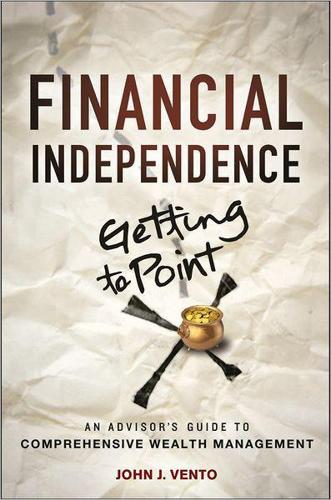
Financial Independence
by
John J. Vento
Published 31 Mar 2013
The dollar floor is $100 for each separate loss, then the personal casualty and theft losses for the year are further reduced by 10 percent of your adjusted gross income. Having the proper insurance coverage on your property will provide you with a tax-free reimbursement of your loss. Casualty losses resulting from federally declared disasters, such as Hurricane Sandy that hit the east coast in October 2012, may be deducted in the prior tax year by filing an amended return. This is done to expedite funds into the hands of disaster victims. For Hurricane Sandy, the effect of deducting the casualty loss for 2011 on an amended return should be compared to the results of deducting the loss on your 2012 return so that the largest tax benefit can be chosen. The goal is a simple one: take the loss in the year that provides you with the most tax benefit.

Apocalypse Never: Why Environmental Alarmism Hurts Us All
by
Michael Shellenberger
Published 28 Jun 2020
“The Netherlands spent a lot of time not improving its dikes due to two world wars and a depression,” Oppenheimer said, “and didn’t start modernizing them until the disastrous 1953 flood.”84 The 1953 flood killed more than 2,500 people and motivated the Netherlands to rebuild its dikes and canals. “Most of humanity will not be able to avail itself of that luxury,” said Oppenheimer. “So in most places, they will accommodate flooding by raising structures or floodable structures. Or you retreat.”85 In 2012, said Oppenheimer, “People moved out of New York after Hurricane Sandy. I wouldn’t call that unmanageable. Temporarily unmanageable. Meaning we wouldn’t be able to maintain societal function around the world if sea level rise approaches those close to four feet. Bangladeshis might be leaving the coast and trying to get into India.”86 But millions of small farmers, like the ones on Bangladesh’s low-lying coasts, move to cities every year, I pointed out.
…
(USGS), 5 George, Henry, 235 Georgetown University, 174 Germany forests, 32, 42 nuclear energy, 146, 151, 283, 344n recycling, 49, 60–61 renewable energy, 151–52, 178, 180, 183–85, 191–92, 195, 198, 228 Getty Oil, 212 Glass bottles, 60 Global Environmental Change, 4–5 Global Exchange, 87, 163 Godwin, William, 229–30, 231 Goldsmith, Ernest, 216–17 Good Calories, Bad Calories (Taubes), 132–33 Google, 217, 222 Gore, Al, Jr., 214, 217, 223, 243 Gore, Al, Sr., 213–14 Gorillas, 68–70, 72–75, 76, 79, 281–82, 395n Goulding, Ellie, ix Gourmet (magazine), 132 Government Accountability Office (GAO), 218 Grandin, Temple, 134, 136–37, 138, 144 Grand Inga Dam, 70–71, 84, 245–46, 276, 386n Grass-fed cattle, 130–31 Great African War, 7 Great Ape Program, 74, 77 Great Escape, 92–95 Great Pacific Garbage Patch, 48 Greenhouse gas emissions, 2, 21, 24, 43, 60–61, 128, 130, 193, 253–54 “Greening,” 32–33 Green New Deal, 3–5, 154, 176, 187, 217, 267 Green Nuclear Deal, 278 Greenpeace, 86, 108, 113, 163, 226, 248 Greenpeace Brazil, 31–32, 38–41 Green utopianism, 267 Grijalva, Raúl, 257–59 Habitat conservation, 68 Haidt, Jonathan, 264 Haiti, 15 Hall, Craig, 202 Hallam, Roger, 10, 11, 22 Halliburton, 205, 219 H&M, 85, 102, 105 Hanno the Navigator, 72 “Hansel and Gretel,” 37 Hansen, James, 181 Hardin, Garrett, 236–37 Harris, Kamala, 216 Harvard University, 93–96, 104, 139, 225, 250, 252, 261 Hawksbill sea turtles, 52–53 Heal, Geoffrey, 88 Heart disease, 132–33 Heartland Institute, 206 Heidegger, Martin, 187 Heritage Foundation, 206 Hetch Hetchy Project, 386n High-fat diets, 131–33, 140 High-yield farming, 6, 91–92 Hillary, Edmund, 155 Hinkley Point C Nuclear Plant, 146 Hitler, Adolf, 233 Hohenkammer Statement, 13–14 Holdren, John, 239–40, 242, 243, 258 Hole in the World, A (Rhodes), 269–70 Hollywood, 2, 7, 27, 162, 164, 165, 222 Homosexuality, 95 Hoover Dam, 84 Höppe, Peter, 13 Human evolution, 133–34 Human-wildlife conflicts, 17–18, 74–75 Hunter-gatherers, 36–37, 134 Hurricane Katrina, 14 Hurricanes, 14–15 Hurricane Sandy, 16 Hyatt, John Wesley, 54, 55 Hydraulic fracturing (fracking), 117–20, 123, 124 Hydroelectricity, 177, 179–80, 228–29, 238 in Congo, 70–71, 82, 83–84, 245–46, 276 power density and, 100, 102–3, 191–92, 386n Hydrogenation, 112 Hypocrisy, 201–4, 222–24, 246–47 Ice sheets, 2, 3, 25, 262 I’ll Take My Stand (Ransom), 234 Impossible Burger, 135 Inconvenient Truth, An (documentary), 217 India author’s visit, 247–49 population control, 235–36, 237 sustainable development in, 247–49 India Great Famine of 1876–1878, 232 Indian Ocean tsunami of 2004, 15 Indian Point Nuclear Power Plant, 284 India-Pakistan relations, 173 Indonesia, 88–89, 92–93, 96–97, 277 Indonesia oil, 211–12 Industrial Revolution, 95–96, 227 Infrastructure, 64, 225–26, 247 power of electricity, 226–29 Inga dam, 70–71, 84, 245–46, 276, 386n Insect die-off, 195–96 Institute of Engineering Thermodynamics, 195 Intensive farming, 38, 39, 42–43, 130–31, 135–36, 139 InterAcademy Council, 255–56 Intergovernmental Panel on Climate Change (IPCC), 114, 284–85 Intergovernmental Panel on Climate Change (IPCC) reports, xiii, 1–6, 10, 11–12, 14, 15–16, 23, 30, 126–27, 128, 244, 252, 253–57 Intergovernmental Science-Policy Platform on Biodiversity and Ecosystem Services (IPBES), 65–66, 67, 79 International Energy Agency (IEA), 26 International Institute for Applied Systems Analysis (IIASA), 114–15, 252 International Rivers, 245–46 International Union for Conservation of Nature (IUCN), 57, 59, 67, 76 International Whaling Commission (IWC), 113 Inuits, 109 “Invasive species,” 66 Invenergy, 207 IPCC.
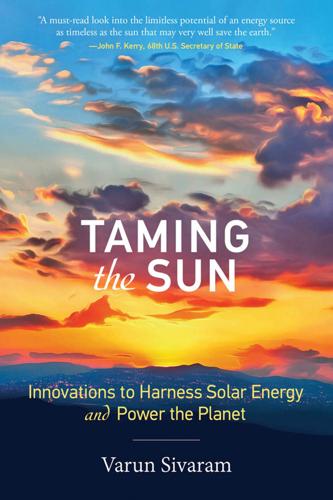
Taming the Sun: Innovations to Harness Solar Energy and Power the Planet
by
Varun Sivaram
Published 2 Mar 2018
Still, the push to create ever-bigger grids has its critics, who contend instead that smaller, decentralized grids deliver a myriad of benefits in comparison with a centralized model. One of the most compelling of those benefits could be superior resilience in the face of natural or manmade disasters. Bracing for the Next Superstorm In meteorological terms, Hurricane Sandy in 2012 was a middling storm, a Category 2 runt compared with the Category 5 monsters that the Atlantic Ocean breeds every few years. But with precise aim and impeccable timing, Sandy plowed into New York City right at high tide and became a superstorm, inflicting tens of billions of dollars of damage, the second-highest total in U.S. history.
…
See also specific fuels carbon capture/storage from power plants using, 61, 62, 82, 225, 237–238 continued use of, 3–7 cost of electric energy from, 49b and decarbonization, 171 defined, 285g impact of decreasing dependence on, 7–10 India’s use of, 15–16 profits from, 20–21 replacements for, 60, 183 solar PV panels as alternate to, 11 as stores of solar energy, 59 Four-electron reaction, 181 France, 241 Fresnel collectors, 186 Friend, Sir Richard, 143 Fritts, Charles, 32 Fuel cells, 285g Fuels from Sunlight hub, 263 Fukushima-Daiichi nuclear disaster, 16–17, 17f, 21, 109, 169, 195 Fuller, Calvin, 33 Gaddy, Ben, 39, 257 Gallium arsenide (GaAs), 37–38, 149, 151, 281g Gasoline, 35, 171, 175–176 Gates, Bill, 12, 262, 272 General Electric, 251 General Motors, 169 Generation IV nuclear reactors, 237 Germany feed-in tariffs in, 240 grid surges in, 78 in international research collaborations, 273 in Nordic Synchronized Area, 201 nuclear power in, 239 post-WWI, solar energy in, 30 power market in, 241 renewable energy in, 56–57, 73, 73f reverse auctions for solar power in, 50 solar industry in, 28, 36, 43 solar power targets for, 62–63 solar PV production in, 44 subsidies for renewable energy in, 64 total solar eclipse as test of grid in, 55–56 value deflation in, 70–71, 72f, 146 Gigawatt (GW), 47 Gigifactory, 223 Global Energy Interconnection, 195–196 Global Energy Interconnection (Liu), 196, 197 Global supergrid, 196–198, 197f, 206–207, 219 Goldstein, Anna, 263 Google, 92, 109 Gore, Al, 27 Grätzel, Michael, 143, 145, 151 Great Recession of 2009, 43, 91, 98, 99 Greece, 29, 73, 73f Green, Martin, 40, 41, 42, 45, 155, 161 Green banks, 102, 113, 290g Green bonds, 113, 288g Greenhouse gases, 15, 110–111 Grid-connected solar systems, 67 Grid reliability and decentralization, 212 and duck curve of demand, 74, 75 and energy access, 132–134 impact of renewable energy on, 56–57, 77 and inertia, 77 Groh, Sebastian, 134 Groundwater, 247 GTM Research, 236 Guarantees, loan, 111, 258 The Guardian, 200 GW (gigawatt), 47 Heat energy, 60 Heat engines, 30 Heating appliances, 244–245 Heating sector, 82, 226, 244–245 Heat pumps, 244 Heliocaminus, 29 Heliostats, 186 Hero of Alexandria, 30 High Aswan Dam (Egypt), 175 High-voltage alternating current (HVAC) transmission lines, 202 High-voltage direct current (HVDC) transmission lines for cross-national grids, 202–204, 203f, 206 defined, 285g for hybrid grids, 217, 219 state support for, 269 Hoffman, Peter, 56 Hong Kong, 108 Hot carrier strategy, 157–158 Howard Hughes Medical Institute, 260 Hungary, 78 Hurricane Sandy (Superstorm Sandy), 199, 207 HVAC (high-voltage alternating current) transmission lines, 202 HVDC transmission lines. See High-voltage direct current transmission lines Hybrid CSP plants, 188–190 Hybrid grids, 200, 216–219, 218f Hybrid off-grid systems, 123 Hybrid solar plants, 185 Hydrocarbon fuels, from sunlight, 180 Hydrogen, 285g Hydrogen fuel early production of, 30 from integrated solar fuel generators, 174 from PECs, 175 from PV and electrolyzer systems, 175–176 from sunlight, 172, 180 vehicles using, 9, 170 Hydrological cycle, 59 Hydropower (hydroelectric power) in California, 76 in Chile, 68, 69 defined, 285g financing for projects involving, 111 in interconnected grids, 206 in Latin America, 19 in Nordic Synchronized Area, 201 popularity of, 5 Hydro storage facilities, 83, 226–228, 231 Iceland, 206 IEA.
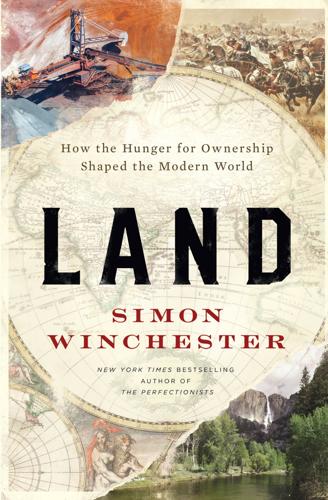
Land: How the Hunger for Ownership Shaped the Modern World
by
Simon Winchester
Published 19 Jan 2021
Thus far, the loss of land has been all but imperceptible. Between 1996 and 2011, for example, the East Coast of the United States, from Maine to Florida, lost just 13,000 of its acres to the clawing waters of the Atlantic Ocean. One would suppose this to be a tiny amount, scarcely worthy of mention. A year later, however, came Hurricane Sandy, which hit New York City square on and then lingered: suddenly, rising-water nightmares and flood scenarios that New Yorkers had never imagined became an urgent reality. The previously imperceptible became the immediately catastrophic. Enormous areas of Brooklyn, Queens, and Staten Island streetscapes were swept underwater, torrents of salt water poured into the always open gates of the subway system, road tunnels became truck-drowning floodways.
…
Martin island and, 74n Slachte Dike, 108 storms and flooding, 110 wilding of Oostvaardersplassen, 227–29, 231, 234 windmills of, 109 Zuider Zee Works, 110–15 Nevada, 378 Nevermore (Gauguin), 400 New England bedrock of, 9, 10 biggest landowners in, 201–2 colonial economy of, 23 early title deed of, 18, 19, 20 economic development, 23–25 English colonies in, 129–31 first people inhabiting, 15–16 geological history of, 10–11 Malone as landowner in, 207 Mohicans of, 16 Puritans of, 129–30 recognition of Native Americans, 28 Schaghticokes and, 17–18, 27 Smith’s coining of phrase, 130 wilding and, 232–33, 232n See also specific states New Harmony, Indiana, 251 Newton, Sir Isaac, 54n New York City Battery Park City, 106 Dutch colonists, 16 Hurricane Sandy and, 398–99, 400 man-made land in, 105–6 New York Post, 287 New York State charcoal making in, 24–25 colonial, Crown’s ownership, 21, 34 colonial, tenancy and, 21–22 Dutch colonists, 20 Dutchess County, 3, 5, 21 Dutchess County survey map (1850), 29, 29–30 geological history of, 10–11 iron ore and iron goods of, 23–25 Oblong, 21n, 23, 33 Philipse lands, 25 Philipse Patent, 21, 21n, 25 Putnam County, 21 surveys and land disputes with Connecticut, 21n Westchester County, 20 Winchester’s land in, 3–7, 10, 12–13, 21n, 28–31, 29 New York Times, Duranty reporting on the Ukraine, 286, 288, 290 New Zealand, 28, 323–42 as Aotearoa, 324, 325, 339 as British colony, 329–30 British land confiscation, 335, 340 British settlement of, 326–27, 328 Busby and, 328–29, 330, 331 Captain Cook and, 325, 326 Cooper, Whina, 337, 338 discovery and settlement of, 323 gum diggers, 337, 337n Hobson and, 330–34 inclusive democracy in, 323–24, 332 land confiscation in, 335, 336 land wars, 334–36 Maori campaigns to restore their land, 237–39, 338 Maoris and land ownership, 325–26 missionaries in, 328 Murders Abroad Act and, 328, 328n national anthem, 324–25, 324n, 339 National Library, Wellington, 326 ownership claims, White Island, 105n place names changed, 341–44 racism in, 336 rising sea levels and, 401 sealer-settlers, 327–28 size of, in acres, 325 time to time status of, 328–29 Treaty of Waitangi, 326, 327, 330–34, 331n, 336, 339 Waitangi Tribunal, 339–40 Nicholas I, Tsar, 58–59, 59n Nicholas V, Pope, 131n Nigeria, 365, 366, 367, 367n Nile Valley, 40, 75 North America Canadian-U.S. border, 73–74 “divine grace” and land in the king’s name, 131 Doctrine of Discovery, 131–32 Dutch explorers and colonizers, 127 European arrival, 125–28 European colonization, 16–17, 20, 21 first English settlements, 129 first people inhabiting, 15–16 first white expeditions, 125 justification for plundering, 129 Manifest Destiny and, 129 mapping of, 28 native peoples, 17, 18, 19, 20, 123–58 native peoples, population, 125 Ohio Country, 136, 138 Spanish explorers and colonizers, 125–27 Spanish territories in, 138 See also Canada; Native Americans; United States Northern Hemisphere, 10 Northern Ireland, 119, 159, 281 border of, 75 Caledon gentleman, County Tyrone, 160–61 Protestant-Catholic couple, 265–66, 267 North Sea, 108, 109, 110, 112–13 Barrier Dam, 113 “Northwest Passage” (Rogers), 90n Nova Scotia, 11, 352 Nowra, Australia, 242–43 Nuna (supercontinent), 10 O’Connor family Texas ranches, 201 Oesterle, Gotthilf Christian Eckhard “Maruma,” 356 Ojibwe people, 90, 136n, 145 Oklahoma, 124, 125, 156 as Indian Territory, 146, 148 land ownership and, 125 Native Americans in, 125 Trail of Tears and, 145 Oklahoma Land Run, 123–25, 149, 150–58, 150n, 153 Guthrie and, 151, 152, 153, 154–58 Unassigned Lands and, 150, 151–52, 153, 158 Olduvai Gorge, Africa, 40 Olmsted, Frederick Law, 387 “On Poetry” (Swift), 93 Origins of Ownership (Denman), 39 Ottoman empire, 271–72, 274 Ottoman Land Code, 272, 275–76 “O What Is That Sound” (Auden), 188 Pakistan Bangladesh formed and, 85–86 border crossing at Attari-Wagah, 82–84, 83 border with Afghanistan (Durand line), 81 border with India, 49, 77–85 conflict with India, 267 Islamabad, 251 most polluted cities, 251 Peshawar, 49n Radcliffe Line, 81, 82, 84 Palestine (the Levant, the Holy Land), 269–84 Al Nakba (the Catastrophe), 279–80, 284 antiquity of land dispute, 282–83 ban on Jewish purchase of land, 272 biblical notion of Jubilee and, 283–83 British idealism in, 275 British Mandate, 272–78, 274n British restricting land purchase, 276 British withdrawal, 270, 278–79 Christian rule of Jerusalem, 274, 275 dispossession and migration, 280 Jewish land buying, 272–74, 276, 393 Jewish population, 271, 272, 273, 275, 276, 280 landless Arab workers in, 276 massacre at Deir Yassin, 278, 280 Ottoman Land Code, 272, 275–76 Ottoman rule, 270, 271–72, 271n Pangaea (supercontinent), 11 Papua New Guinea, 74 Park, Geoff, 323 Park, Mungo, 364 Parkinson, Sydney, 236, 236n Peel, Robert, 65n Penck, Albrecht, 62, 63, 63–64, 67, 71 Perry, Admiral Matthew, 303–4, 309n Petty, William, 133, 133n Philipse, Adolphus, 21 Philipse, Frederick, 20–21, 21n Philipse estates, Philipse Patent, 21, 21n, 34 confiscation of, 25 division of, Commission of Forfeiture, 27 tenants of, 25, 34 Pierce, Franklin, 403 Pingree family, 201 Plains bison, 204–6, 206, 220 Plains Indians, 205 Plato, 53 Poem Without a Hero (Akhmatova), 285 pollution and contamination Cuyahoga River, 396 Denver and Rocky Flats plutonium plant, 253–60, 254, 257 nuclear sites, 259–60 Ponca people, v, 123, 148 Ponce de León, Juan, 125–26 Port Reyes, Calif., 127 Portugal and Portuguese colonials, 131–32, 131n, 198, 365 Potawatomie people, 148 Powell, John Wesley, 65–66 Powhatan people, 131 public spaces, parks Greece’s agora, 248 Kiev Maidan, Ukraine, 249 les bois of Vincennes and Boulogne, Paris, 249 Los Angeles parks, 249 Maidan, Kolkata, 249–50, 250 maidans of the eastern cities, 249–50 municipally owned, landscaped, 249 Newcastle-upon-Tyne’s Town Moor, 248 Richmond, Bushy, and Greenwich Parks, London, 249 San Diego parks, 249 Stanley Park, Vancouver, 248 Tehrir Square, Cairo, 249 Punch magazine, 365 Pythagoras, 53 Questing Reserve, Mass., 388–89 Raasay island, Scotland, 93–94 Dun Caan, 93, 96 Ordnance Survey map of, 94, 95, 96 Oskaig, 93 Radcliffe, Sir Cyril, 77–80, 79, 81, 82, 84, 85 Radek, Karl, 289 Radipole, England, 172, 173, 175 railroads Ball Watch Company and, 152 land grants, 140–41, 142, 143 Native American lands and, 143, 150, 151 promoting settlement, 141, 142 See also specific railroads Reagan, Ronald, 301 real estate vs. real property, 4, 4n, 21 Reed family, 201 Reflections upon Exile (Bolingbroke), 61 restoration of land rights Africa, 361–73, 371 conservation vs., Yosemite Valley, Calif., 375–83, 382 Glendale crofters rebellion and, 351 the Hebrides, 343–61, 360 land trusts, returning the land to the ownership of all, 386–96 Maori people and, 325–26 See also conservation Reynolds, John “Captain Pouch,” 174 Rhodes, Cecil, 364, 365, 368, 369 Rhodesia, 367–68, 369 Rhodesian Bush War, 370 Richards, Eric, 184 Ridley, Matt and Blagdon Hall, 161 Rinehart, Gina, 197–200, 198 River Runs Through It, A (Maclean), 207n Rockwell International, 258–59 Rocky Narrows Reserve, Mass., 386–87 Rodinia (supercontinent), 10–11 Rogers, Stan, 90n Roman Empire, 68, 96, 165, 166–67 Boadicea’s uprising, 166, 166n Britannia, 166–67 Hadrian’s Wall, 76 Romanus Pontifex, 131–32, 131n Roosevelt, Franklin Delano, 311 incarceration of Japanese Americans (Executive Order 9066), 312, 313, 314, 319 Rothschild, Baron Edmond de, 276 Rousseau, Jean-Jacques, vii Royal Geographic Society, 65, 67 Royal Society, 54n, 238–39, 238n Runciman, Walter, 352–53 Russia (Soviet Union) Baltic lands and empire, 52 collective farms of, 294–95 Duranty and, 286, 288–90, 288n, 294 Goldi people of, 403 IMW and, 67, 69–70 land surface, size of, 70 NKVD (secret police), 286 pogroms against the Jews, 271, 273 Pulkovo Observatory, 59 Tolstoy on land ownership, 408–11, 409 Ukraine and the Holodomor, 285–300, 289, 296 Rwanda genocide, 267 Sac people, 148 St.
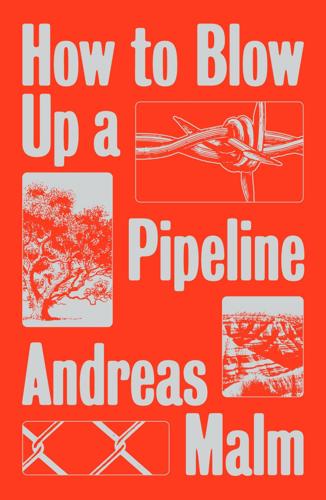
How to Blow Up a Pipeline
by
Andreas Malm
Published 4 Jan 2021
At the same time, activists built a sprawling campaign for divestment, convincing universities, churches and other institutions with a minimum of conscience to sell off their stocks in oil, gas and coal companies so as to strip them of their legitimacy and prepare their downfall. Spurred on by Hurricane Sandy, New York City beat the record from Copenhagen with 400,000 people marching in the People’s Climate March in September 2014, the largest rally until that date, and the tide seemed to be turning. The next year, Obama finally rejected Keystone XL. The last months of his presidency were marked by another high point of mobilisation, when Sioux nations drew supporters to a camp at Standing Rock in protest against the proposed Dakota Access Pipeline; as in the struggle against Keystone XL and dozens of other pipeline projects in North America, native activists took the lead of a movement that drew in tens of thousands of hitherto unpoliticised people.
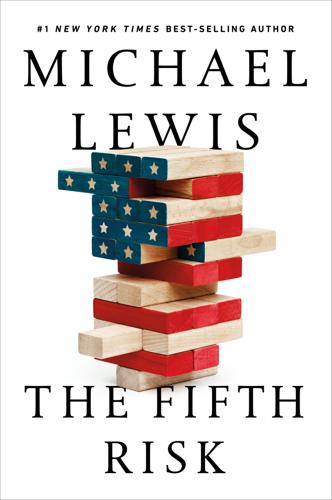
The Fifth Risk
by
Michael Lewis
Published 1 Oct 2018
There are a million little things he could do that we will never understand.” Another McKinsey study estimated that the entire industry generated somewhere between $2 billion and $4 billion a year in revenue and was growing fast. With reason. The annual cost of natural disasters in the 1980s had been $50 billion. Hurricane Sandy alone inflicted over $65 billion worth of damage. The private weather industry, unlike the National Weather Service, has a financial interest in catastrophe. The more spectacular and expensive the disasters, the more people will pay for warning of them. The more people stand to lose, the more money they will be inclined to pay.
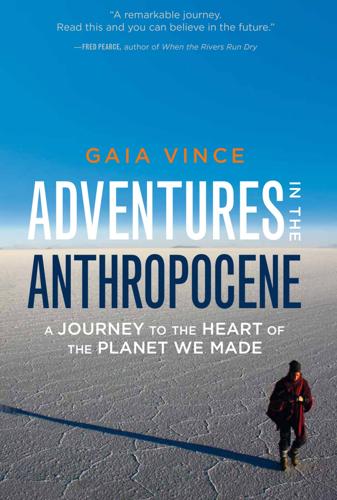
Adventures in the Anthropocene: A Journey to the Heart of the Planet We Made
by
Gaia Vince
Published 19 Oct 2014
The world’s capitals, many of the most economically important parts of our planet, already face double the risk of inundation through storm surges – and the greater population of Anthropocene cities puts more lives at risk. Cities from New York to Bangkok have already experienced emergency flood conditions, and many more are to follow. The storm surge associated with Hurricane Sandy in 2012 flooded areas of New York City with more than four metres of water. Located on the Yangtze River delta, Shanghai, which means ‘above the sea’, is being claimed by the South China Sea – parts of the city have sunk three metres. In response, Chinese authorities have begun pumping 60,000 tonnes of water a year back into wells to reduce the subsidence, built hundreds of kilometres of levees and are planning an emergency floodgate on the river’s estuary to protect the nation’s most prosperous city and its 20 million inhabitants.
…
Foundation 342 Goodall, Chris 322 Google 28, 44 Google Earth/Maps 51, 366, 367 Goreau, Thomas 167 gorillas 237, 248, 276 granite 299 graphene 317 grasses/grasslands 7, 106, 109, 129, 221, 222, 231, 238, 240, 271, 287 Great Acceleration 3, 8, 307, 320 Great Barrier Reef, Australia 169 Green Revolution 109, 114, 133, 317 greenhouse gases 8, 23, 34, 35, 51, 67, 68, 144, 146 and biofuel production 145 see also carbon dioxide; methane greenhouses 65 desalinated seawater 219–20 Greenland 73, 177, 178, 182, 215 Greenpeace 183 Gregory, John and Sue 153 Grindr app 367 groundwater 47 contamination of 310 extraction of 50, 72, 115, 203, 215, 379 Groupon (online shopping network) 367 guanacos 74 guano 108 Gujarat, India 110–14, 115–16, 212 Guyana Shield 267 Haber, Fritz 108 Hadley Cell 15–16 Hadley Centre for Climate Research 66 Hadzabe people 223–7, 320 Haiti 28, 366 Haiyan, typhoon 66 Hansen, James 177 Hartmann, Peter 80–82, 85, 86 Haywood, Jim 66 HCFCs 374 helium 298, 329 H5N1 influenza 349 HidroAysén (company) 79–80, 86–7 high-voltage direct current (HVDC) lines 213–14 Hilbertz, Wolf 167 Himalayas 19, 40, 46, 47, 51–3 Hippocrates 304 hippopotamuses 207, 229 Hiroshima, bombing of 327 HIV/Aids 135, 198, 234, 245, 283, 349 Ho Chi Minh City, Vietnam 89, 380 Ho Tong Yen 360–61, 362 Hoatzin/‘stink bird’ 271–2 Hobbs, Richard 253–4 Hofmeister, Anke 172 Holocene epoch 4, 7, 8, 9, 17, 238, 264, 299, 338 honey badgers 199–200, 226 honey birds 199–200, 226 Hong Kong 90, 346, 340, 369–70 Hooker, Joseph 285–6 Hoover Dam, USA 77 Huaneng Group: carbon capture facility 330 huemal deer 82, 83 Hulhumalé, the Maldives 162 Hunt Oil 280 hunter gatherers 7, 11, 94, 107, 124, 223–7, 233, 238, 279, 338, 345 Hurricane Katrina (2005) 380 Hurricane Sandy (2012) 379 Huvadhoo atoll, the Maldives 164 hydrocarbon fuels 214, 296 hydrodams see dams hydroelectricity/hydropower 31–2, 39–42, 52, 77–8, 213–14, 327 see also dams hydrogen 16, 214, 298, 329, 365 ‘hydropeaking’ 85 hydropower see dams; hydroelectricity Hydropower Sustainability Assessment Protocol 98 ibex 50, 260 ice ages 7, 17, 34, 264 ice melt 177–81 see also glaciers Iceland 184, 213 ICRISAT see International Crops Research Institute for the Semi-Arid Tropics IGCC see integrated gasification combined cycle power plants IMF 135 Imja glacial lake, Nepal 52 Incas, the 62, 270, 333, 334 Independent 178 India 34, 37, 116–17, 147, 320 air-conditioning units 374 air pollution/‘brown cloud’ 37, 38 aquifers 111, 112, 114 biofuel production 145, 332 coal-fired stations 325 GM crops 140, 141 groundwater extraction 115, 117 irrigation 114, 115, 211 land bought in Africa 102–3 mobile phones 28 Slum-Dwellers International network 350 tanka system 115–16, 117 tigers 244, 247 water shortages 110, 114–15 see also Ladakh India Space Research Centre 112 indium 315–16 indium tin oxide (ITO) 316 Indonesia 2, 35, 129, 256 ‘Indus Oasis’ (casino) 113 Indus River 53, 71–2 Industrial Revolution 3, 35, 263, 300, 307, 310 industrial symbiosis manufacture see ‘closed-loop’ manufacture insects 1, 17, 71, 108, 141, 142, 263, 271, 291 as food 97, 148, 388--9 and pest-control 134 see also ants; bees integrated gasification combined cycle (IGCC) power plants 330, 331, 332 Interface (carpet manufacturer) 319 International Crops Research Institute for the Semi-Arid Tropics (ICRISAT) 139–40 International Energy Agency (IEA) 213, 318, 325 International Institute for Environment and Development 98 International Thermonuclear Experimental Reactor (ITER) 328–9 Internet, the 11, 18, 24, 26, 27, 29–34, 136, 322, 367–9 Inuit, the 182 invasive species 250, 252–6 iron 298, 299, 306, 307 Irrawaddy River 53 irrigation 72, 79, 109, 114, 115, 118, 121, 132, 133, 143 with desalinated seawater 219–20 in deserts 107 drip 112, 113, 114, 120 in India 49, 50, 51, 52, 54, 56, 57, 58, 59, 61, 211 in Libya 215 solar-powered 211 Isiolo, Kenya 193, 194 Isla Incahuasi, Bolivia 334 Israel: electric cars 373 Itaipu dam, Brazil/Paraguay border 102 ITER see International Thermonuclear Experimental Reactor ITO see indium tin oxide Ito, Akinori 326 Ituri Forest, Democratic Republic of Congo 246 ivory trade 198, 246 Jadeja, Hardevsinh 110–14, 143 jaguars 240–43, 237, 247, 260, 270, 275, 278 Janjaweed, the 245 Japan 102, 147, 161, 186, 318–19, 327, 340 jatropha 145 jellyfish 185–6 JET experiment 329 jet stream, the 180–81 Jinja, Uganda 122 Jones, Steve 378 Kalinowski, Celestino 279, 280 Kalinowski, Jan 279–80 Kalundborg, Denmark 320 Kampala, Uganda 112 Kandholhudhoo, the Maldives 160, 161, 163 Karachi, Pakistan: Orangi slum 350 Kathmandu, Nepal 18, 30, 32, 36–7, 39, 42 Kenya 135 drought 193, 195–6, 200–1, 206 education 204–5 206 M-Pesa 28 missionaries/missions 193–4, 199, 202, 204–5, 206–7, 208 pastoralists 196, 201, 205–6, 210 road-building 197–8 shanty towns 350 tribal conflict 193, 194–5, 196–7, 201, 206 see also missionaries; Turkana, Lake Kenya, Mount 46, 235 Kew Gardens, London 286 kha-nyou (rodent) 94 Khone Phaphene Falls, Laos 97 Khulna, Bangladesh 343, 346, 347, 352 Kikwete, Jakaya Mrisho, President of Tanzania 230, 259 Kilimanjaro, Mount 46 Kilimo Trust 120 Kinabalu, Mount 46 kingfishers 268, 271 Kipling, Rudyard 18 Kiribati 174–7 Kissinger, Henry 109 koala bears 237, 250 Kolkata, India: 2 Nehru Colony 366–7 Konik ponies 236 Korea, South 90, 102, 124, 346, 365 POSCO iron and steel consortium 336 krill 180 Kubuqi Desert, China 192 Kyakamese village, Uganda 118–20 Laama, Ringin 40 labour, division of 339 Lackner, Klaus 294, 295–6 Ladakh, India 48–51 artificial glaciers 53, 56–61 Laetoli, Tanzania 223–4 landslides 40, 46, 52 languages 26, 55, 62, 224, 273, 277, 347, 378 Lanzhou, China 362 Laos 88, 97, 98, 99 cluster bombs 90 Communist government 90, 91, 94 opium use 89 road-building 91–2 slash-and-burn 89 see also Mekong River La Paz, Bolivia 274, 275, 310 Las Vegas, Nevada 103, 193 ‘Late Heavy Bombardment’ 298 Laurance, Bill 255 lead/lead mining 301, 310, 315, 316 Leakey, Mary 223–4, 232 legumes 38, 133, 134 Leh, Ladakh, India 50–51, 54–5 leishmaniasis 274 lemurs, Madagascan 247, 250, 256 Lenfest Center for Sustainable Energy, Columbia University 294 León, German Cardinas 348 Leonard, Annie: The Story of Stuff 319 leopards 94, 227, 229 snow leopards 33, 260 leprosy 343 Li Quan 247 Libya: Great Man-made River project 215 Licancabur volcano, Bolivia 333 Licapa, Peru 62–4 ‘light-bulb conspiracy’ 312 lighting/light bulbs 315, 371 Lima, Peru 216–17 asentamientos humanos (AAHH; slums) 62, 217, 218, 347–8, 352 fog-harvesting 217–19 lions 227, 228, 229, 239–40, 248 Liquiñe–Ofqui fault line 85 lithium 332, 335–6 Liverpool 349 livestock 147, 148, 196, 200–1, 206 see also cattle; sheep; yaks llamas 74, 221, 300, 334 logging industry 9, 267, 268, 270, 273, 274, 276, 277, 283, 288, 289--90 Loiyangalani, Kenya 199, 204–5, 206–8 London 317, 349, 350, 364, 372, 378 ‘Gherkin’ 374 ‘guerrilla gardeners’ 377 smog 3, 35 Thames Barrier 379 Lopes, Antonio Francisco Bonfim (‘Nem’) 356 Lord’s Resistance Army (LRA) 126, 245 Loshner, Gabriella 83 Lovelock, James 294 Lowoi (schoolteacher) 201, 202 Luang Prabang, Laos 89 Lugo, Ariel 254 Luis Val, Adalberto 291, 292 Lummerich, Anne 218 Luna, Javier Torres 217–18 Lyme disease 242 lysine 138 Ma’aden aluminium mine, Saudi Arabia 104 Maasai, the 224, 229–31 macaws 268, 271, 278, 281 McDougall, Gerald 188–9 McKinsey (consultants) 103, 319 Macquarie Island: rabbits 255 Madagascan lemurs 247, 250, 256 Madagascar 93, 124, 237, 264 Madidi National Park, Amazon Basin 267, 269–72, 273–4, 277–8 Madre de Dios region, Peru 278–84 Madre de Dios River, Peru 280–81, 283 Madrid: Canada Real Galiana 344 mahogany trees 270, 275, 279, 289 maize 125, 129, 130, 138, 144, 250 Makerere University, Kampala 137, 138 malaria 43, 121, 135, 199, 224, 274, 283, 293, 341, 367 Malawi 135 Malaysia 28 Petronas Towers 370 see also Singapore Maldives, the 152–3, 156--9, 175, 186 artificial islands/floating islands 157, 162–3 coral reefs 158, 159, 160, 161–2, 164, 166–8 ‘designer islands’ 160–61 heroin dependency 156 overfishing 169–70, 171–2 Soneva Fushi 172–3 tourists 153–4, 156, 158, 160, 163, 171, 172, 173 Malé, the Maldives 153, 154, 156, 161 Mamang-Kanga, Jean-Baptiste 245 Manaus, Brazil 290–91 manta rays 170, 185, 245 Manu National Park, Madre de Dios, Peru 278–80 Manu River 280–81 Manu Wildlife Centre 279, 281 marijuana 357, 369 marine reserves 186–7 Mascho-Piro tribe 279 Masdar, Abu Dhabi 366 Matterhorn, the 48 Mawlamyaing, Burma 91 meat consumption 147, 148, 290, 322 Medellín, Colombia 353–4, 357 Mekong River 53, 88–9, 90–91, 95, 99–101, 105 fish/fishing 95–6, 100, 101 hydrodams 83, 88, 89, 91, 92–4, 95–6 meltwater see glaciers Mesozoic era 221 metals 298, 299–300 rare earth 305, 315, 373 see also copper; gold; gold mining; iron; silver; silver mining methane 41, 78, 129, 134, 178, 214 methanol 296 metro/underground systems 346, 353, 354, 357, 364, 372, 373 Mexico City 379 miconia shrub 252 ‘microloan’ cooperatives 130 millets 130, 139, 143 minerals 191, 272, 298–9, 300, 305 mining 8, 9, 300, 308–9 see also coal; copper mining; gold mining; silver mining miscarriages 203 missionaries/missions see Kenya mobile phones/smartphones 27–9, 34, 118, 136, 210, 212, 231, 300, 304, 311, 312, 315–16, 335, 367 see also M-Pesa Mohammed, Fatima 161 Mojave Desert, California 209, 213, 214 monkeys 275, 291 chimpanzees 3–4, 306 howler monkeys 271, 281 spider monkeys 267, 271, 275–6, 277, 278, 281 Monsanto (company) 140–41 Montana, USA 236 Morales, Evo, President of Bolivia 274, 277, 278, 282, 335, 336 Morgan, Ned 121 mosquitoes 47, 274, 293, 341 moths, urban 377 mountains 8, 45–8, 66–7 painting white 62–4 M-Pesa mobile phone banking service 28, 208, 211, 350 mulch/mulching 133, 134, 145 Mumbai, India 344, 374 Murray River 72 Museveni, Yuweri, President of Uganda 126 mussels 187 Mutharika, Bingu wa, President of Malawi 135 Mwanawasa, Levy, President of Zambia 175 Nagasaki, bombing of 327 Nairobi 200, 207, 209, 210, 344 Nakai, Laos 92–4 Nam Theun II dam, Laos 92–4 Namibia 215, 216, 362 Nangi, Nepal 21, 24, 25–7, 30–32, 33, 36, 43 Napoleon Bonaparte 285 NASA 177, 294, 333 NaSARRI see under Uganda Nasheed, Laila 154 Nasheed, Mohamed (‘Anni’), President of the Maldives 153–8, 160, 161, 163, 172, 173–5, 190 National Geographic 273 Neanderthals 2, 238, 259, 306 Neem trees 134 Nepal 18–20, 21–3, 24–7, 43 Bengal tigers 243–5 electricity 20, 27, 41–2, see also hydropower (below) glacier melt 37, 40–41 hydropower 31–2, 39–40, 41 Internet/Wi-Fi 24, 27, 30–31, 32, 33, 34 tourism 32–3, 39 yak herders 24, 33, 37, 40 see also Kathmandu; Nangi Netherlands, the 236–7, 379 New Guinea: rainforest 264 New Orleans: and Hurricane Katrina 380 New Songdo City, South Korea 365 New York City 35, 317, 349, 350, 365, 378, 379 Bank of America Tower 371 raised railway park 377 water sources 104 New York Times 77 New Zealand 47, 175, 184, 237, 308 Ngorongoro Crater, Tanzania 224, 228–30 Niger Delta 309 Nigeria 114 Nile, River 71–2, 79, 103, 122, 204, 207 Nineveh 339, 340 nitrogen 8–9, 16, 108, 133, 146, 373 nitrogen-’fixing’ plants 133, 136, 142, 143–4 Nomura’s jellyfish 186 Norphel, Chewang 53–9, 60–61, 69 North-East Passage 181 North Pole, the 177, 182 Norway: hydroelectricity 213–14 Nottingham, University of: Frozen Ark project 259 Nubian Sandstone Aquifer 215 nuclear energy/power stations 327–8 nuclear fusion plants 328–30 nylon stockings/tights 312 obsolescence, planned 312–14 oceans 150–52 acidification 3, 9, 152, 153, 165, 168–9 conservation zones/reserves 186–7 phytoplankton 152, 180, 190 pollution 152, 187–9 see also Arctic Ocean; sea-levels, rising ocelots 240 Odentethes hatcheri (fish) 83 Ohtake, Ruy 358 oil/oil industry 23–4, 181–2, 183, 280, 284, 296, 308, 309, 318, 326 oil spills 182 Okehampton, Devon 349 Okello, David Kalule 135–9 Olmaikorit-Oumo, Florence 130 Ologara village, Uganda 125–6, 127–31 Oman: peridotite 296 Omo Valley, Ethiopia 203, 204 Omoding, Ephrem 125, 127 Omoding, Winifred 125–7, 129–33, 143 One-Laptop-One-Child organisation 31 Oostvaardersplassen, the Netherlands 236–7 opium industry 89–90 orang-utans 248, 273, 276–7 Ordos, Inner Mongolia 331, 359 organic farming 133–4 orius (pirate bugs) 219 oryx, Arabian 256 oscar (fish) 291–2 ostriches 197 otters 83, 270 oxygen 16, 142, 214, 285, 293–4 lack of 133, 185, 186, 187, 291–2 and photosynthesis 263, 264, 284, 299 oysters 168 ozone 35, 37, 38, 373 ozone layer 3, 11, 17, 66 painting mountains/roofs white 62–4, 374 palm oil 276, 290 palm trees 172, 204, 266, 270, 293, 343 Panama Canal 320–21 pandas, Chinese 257 Pangaea 45 pangolins 245 Pantanal, the 240–42 Paraguay 102, 240 Parana River 102 Parco, Salamon 62–4 Paris 347, 364, 373 Parker, Ted 280 parks, national 236 see Bardia, Madidi, Manu, Serengeti and Yellowstone National Park Pascua River dam, Patagonia 73, 75–6 passenger pigeons 259 pastoralists 205–6, 210, 214, 220, 225 see also Maasai, the Patagonia 74–5, 81, 86 hydroelectric dams 73–4, 75–7, 79–88 Peak District, England 310 peanuts 118–19, 120, 129, 132–3, 136, 143 genetically modified 138, 139–40 peas 51, 139 peat 263, 310 Pemuteran, Bali 167 peridotite 296 Peru 41, 52, 108, 278–84, 332 mountain painting 62–4 pest-control/pesticides 129, 132, 134, 136, 141, 143, 185, 219, 243, 293 petrels 186 petroleum 309, 325–6 Petronas Towers, Malaysia 370 Phakding, Himalayas 39 pharmaceuticals 272 Philippines 28, 65, 66 Phnom Penh, Cambodia 100 Phoenix, Arizona 103, 193 photography 304 photosynthesis 2, 16, 38, 143–4, 165, 180, 190, 214, 263, 264, 265, 284–5, 291, 293–4, 297, 299, 317 photovoltaic (PV) panels see solar energy Phuktse, Ladakh, India: artificial glacier 58–9 phytoplankton 152, 180, 190 piezoelectric generators 363 Pilon Lajas Biosphere Reserve, Bolivia 278 Pinatubo, Mount (Philippines): eruption of (1991) 65 pine beetles 236 Piñera, Sebastian, President of Chile 80, 87 PlanIT Valley, Portugal 365 plankton 84, 168, 185, 309, 386 see also phytoplankton plants 1–2, 47, 70–71, 262, 263, 288, 326 plastic 5, 187–8, 311 bags 4, 128, 189, 323, 341 3D-printed items 317 turning back into oil 326 plate tectonics see tectonic movements platinum 214, 298 Playas de Rosarito, Mexico: proposed desalination plants 102 Pleistocene epoch 236, 237, 238 plutonium 328 Pokhara, Nepal 18, 19–20, 30 polar bears 178, 187 polio vaccination 367 pollution 310, 312, 318, 321, 330, 360–61 and environmental services fees 322–3 radioactive 7, 11 see also air pollution; ocean; waste; polyester garments 187 population growth 3, 9, 11, 36, 146–7, 251 POSCO iron and steel consortium 336 potatoes, sweet 140, 143 Potosí, Bolivia: silver mines 300–6, 307, 310 prickly pear 251, 256 printers, electronic 313 3-D 317 public transport 345, 372–3, see also metro Puerto Maldonado, Peru 283–4, 288 Puerto Rico, Gran Canaria: International Institute of Tropical Forestry 254 pumas 73 pumps, groundwater 50, 51, 115, 121, 122 see also boreholes; wells Pun, Mahabir 18–19, 21–7, 30–33, 37 Pun tribe 24, 27, 41 Putin, Vladimir, President of Russia 181–2 PV panels see solar energy pyrolysis 326 Qatar 219 Quechua 62, 347 Racoviteanu, Adina 60–61 radio 17–18 Rahmsdorf, Stefan 177 rain/rainfall 15, 37–8, 46, 47, 150, 151 acid rain 3, 310 in Africa 118, 122, 195 artificial production of 66, 132 harvesting and storing 115–17, 121–2, 216 in India 49–50, 111 in Lima, Peru 216, 217 in Uganda 118, 119, 122, 128 rainforests 15–16, 262, 264–5, 272–3 Borneo 264, 276–7 see also Amazon rainforests Raj-Samadhiyala, Gujarat, India 110–14 Rajkot, Gujarat, India 110, 115 Rajoelina, Andry, President of Madagascar 124 rats 250, 255 Ravalomanana, Marc, President of Madagascar 124 recycling see waste; water REDD+ (Reducing Emissions from Deforestation and Forest Degradation) 287–8, 289 redwoods, Californian 218, 293 Rees, Richard 171 refrigerants 17 Reid, Brian 84 reservoir-building 53, 77–8, 104, 112 Restore and Revive 259 rhinoceroses 227, 228, 246, 248, 258 rhododendrons 250 Ribeiro da Silva, José Claudio 268 rice/rice-growing 78, 90, 97, 101, 109, 134, 136, 143–4, 147, 185, 250 genetically modified 140, 141 Rift Valley 203, 223, 232 Rimac River 216 Rio de Janeiro, Brazil: favelas 354–8, 367 Rio Grande 72 rivers 4, 8, 50, 53, 70–73, 104, 308 see also dams and specific rivers road-building Amazon rainforest 281–4 Burma–Vietnam 91–2 Serengeti 258–9 Robichaud, Bill 92, 94 Robinah, Byarindaba 118–20, 121 Rockefeller Foundation 138, 139 ‘rock glaciers’ 60 rocks 2, 46, 74, 108, 299–300 Rome/Romans 34, 307 roofs, whitewashing 64, 374 Roosevelt, Theodore, US President 227 Rotterdam, Netherlands 379 Rubbish Island, 163 Ruiz, Rosa Maria 266–72, 273–4, 275, 277, 278 ruminants 221–2, see cattle Rurrenabaque, Bolivia 265–6, 269 Rwanda: gorillas 276 Sahara Desert 195 aquifers 215 Desertec solar power plant 213 Great Green Wall 192 minerals from 191, 272 salamander, jumping 257 Sale, Peter 164, 167 salmon, farmed 185 salt production 334 Salter, Stephen 66 Samburu tribe 195, 197, 201, 204, 208 Samso island, Denmark 325 San Cristobel, Bolivia: silver/zinc mine 333 San Diego, California: Zoo 259 San people 232–5 Sánchez de Lozada, Gonzalo 273 sand dams 198, 216 sanitation 11, 20–21, 38, 115, 339 see also toilets Santa Cruz, island of, Galapagos 251–3 Charles Darwin Research Station 251–2, 253, 254 Santiago, Chile 75 São Paulo, Brazil: Heliopolis favela 358 saola antelope 94 Sarima, Kenya 201–3 SARS 349 satellites 18, 22–3 mapping by 60–61, 112, 367 Saudi Arabia 102, 104, 308 solar-powered desalination plants 216 superfarms 148 savannahs 221–3, 238, 265 Save the Children 135 scalesia (Scalesia pedunculata) 251, 252, 253 schizophrenia 377 schools see education seabirds 186 sea cucumbers 168–9 seagulls 377 sea-levels, rising 5, 9, 52, 151, 153, 159–60, 174–8, 189–90, 343, 379 Seasteading Institute 189 Semiletov, Igor 178 Seoul, South Korea 346 Serengeti National Park 223, 227–32, 256, 258 Serere bird 271–2 Serere Sanctuary, Amazon Basin 268 service manuals 313–14 sesame seeds 125, 131, 138 Shabab, the 245 Shanghai 35, 89, 211, 321, 322, 379 shanty towns see slums sharks 164, 171–2, 185, 242 whale 170–71 shearwaters 186 sheep 74, 81, 82, 221, 236 Shemenauer, Bob 219 ships 65, 317, 320–21 Shivdasani, Sonu 172–3 Shrestha, Alok 41 Siem Reap, Cambodia 99 silica 84 silicosis 301, 302, 303, 306 silver 304–5, 312 silver mining, Bolivian 300–6, 333 silver nitrate 304 Silvestre, Elizabeth 216–17 Simpson Valley, Chile 83 Singapore 90, 346, 360, 362, 369 Marina Bay Sands 376 Si Phan Don, Laos 95 Siteram (Nepali guide) 243–4 Skarra, Ladakh, India 53 Skinner, Jamie 98 skyscrapers 370–71 slash-and-burn 107, 128, 277 sleeping sickness 225 sloths 237, 250, 270 slums/shanty towns 341–4, 346, 347, 348–53, 366–7, 378 in Brazil (favelas) 354–8, 367 smartphones see mobile phones Smil, Vaclav 250–51 Smithsonian Institute, Washington DC 227 Smits, Willie 276–7 social media sites see Facebook; Twitter soil(s) 108, 127–9, 142 solar energy/power 30, 211–14 combined with wind projects 209, 213, 361 for desalination plants 193, 216, 219–20 for public and private buildings 363–4, 366 panels/photovoltaic (PV) panels 116, 211–12, 214, 315, 331, 332 and payback schemes 211, 212, 323 storage and distribution 213–14, 365 solar radiation management 63–5, 68–9, 132 Soneva Fushi, the Maldives 172–3 sorghum 120, 125, 130, 139, 143, 144 Soroti, Uganda 125–6, 132, 135 Soules, Luke 313, 314 South Africa 118, 236, 351–2 Southern Ice Field 73 soya/soybean 281, 289, 290 Spain 65, 128, 184, 213, 216, 301, 307 spotted fever 242 Stakmo, Ladakh, India 48–50, 61 Stanbic Bank Uganda 120 star coral 257 Starbucks 368 steam power 213, 219, 307, 365 Stone Age 2–3, 307 stoves see cooking stromatolites 16 sturgeon 71 sugar cane 122, 144, 145, 290 Sumatra: rainforest 264 Sumerian cities 339 Sundrop Farms, South Australia 219 sunflowers 125, 131, 138, 145 sunlight see solar energy; solar radiation management Survival International 234 sustainability 323–5, 369, 371, 375–6 Suzano (Brazilian consortium) 290 Svalbard islands, the Arctic 37 Switzerland 20, 21, 48, 60 Syncrude mine, Athabasca oil sands, Canada 4 syngas 296, 330 Syngenta 140–41 Tacana people 269, 277 Taiwan 90, 146–7 tamarin, pied 291 tanka system 115–16 Tanzania 223–4 road-building 258–9 tourism 227, 231 UAE hunting reserves 227, 230 see also Serengeti National Park tapirs 237, 240, 270, 275, 281 tar sands 309 tara trees 218 Target (supermarket) 369 tarpans 236 Tashi (Indian farmer) 48, 49, 61 Tasmanian devils 247 Tasmanian tigers 260 taxes 97, 123, 194, 324, 350, 356, 357, 368, 372 tectonic movements 45–6, 73, 85, 250, 263, 299, 334 telegraphy 27 television sets 313, 314, 315 tenebrionid desert beetle 218 Thailand 90, 91, 93, 100, 256 Thakek, Laos 91, 95 Thar Desert, Rajasthan, India 209 Thiel, Peter 189 Thiladhunmathi atoll, the Maldives 164 Thilafushi, the Maldives 163 Thompson, Lonny 64 thorium/thorium reactors 315, 328 3D printing 317 Three Gorges Dam, China 83 Thupstan (Indian farmer) 50 Tianjin, China Eco-city 360–63, 375 GreenGen energy plant 330 Tiedemann, Kai 218 tigers 94, 243–5, 246–8, 249, 260 tiger wine 245, 246 Tigris, River 71–2 tilapia 207, 208 tin/tin mining 299, 301, 310, 316 tin oxides, non-stochiometric 316 Toba, Indonesia: volcanic eruption 2 toilets 20–21, 25, 26, 113, 115, 116, 348, 363 tokamaks 329 tokay geckos 256 Tokyo: population 340 Tomasetti, Roberto 166–7 Tong, Anote, President of Kiribati 174–6, 190 Tonle Sap, Lake 99–100 Torres, Geronimo 63–4 tortoises 214, 250, 251, 252, 253, 255 Toshiba 314 tourism industry/tourists Amazon rainforest 270, 273, 276, 279 Cambodia 99 and ‘conservation fees’ 248 India 50–51, 57, 244 Maldives 153–4, 156, 158, 160, 163, 171, 172, 173 Nepal 32–3, 39 Serengeti 228, 231 in Tanzania 227, 231 TRAFFIC 245, 246 trains, maglev 372 trees 129, 263 artificial 295–6, 297 fog-trapping 218 see also deforestation; forests tryptophan 138 tsetse flies 225 Tsodilo Hills, Botswana 233 tsunamis 160, 161, 328 tuberculosis 135, 234 Tullow Oil 210 tuna 169–70, 185, 187 tundra, Arctic 178, 293 tungsten 298 tunqui (bird) 279 Turkana, Lake (Kenya) 193, 199, 203–4, 205, 208, 209 and see below ‘Turkana Boy’ 203 Turkana Corridor Low Level Jet Stream 208–9 Turkana solar power station 210–11 Turkana tribe 194–5, 197, 201–2, 204, 207–8, 242, 316 Turkana wind farm 208–9, 210 Turkmenistan 59 turtles 170, 174, 185, 187, 268, 280 Tuvalu 174 Twitter 28–9, 367, 368 Uganda 26, 118–22 agriculture 118–22, 125, 126–33, 135, 136, 137–8, 140, 144 gorillas 276 National Semi-Arid Resources Research Institute (NaSARRI) 130–31, 136, 138 roads 144 United Arab Emirates: Tanzanian hunting reserves 227, 230 United Nations Convention on Biological Diversity 247 Environment programme 37, 248 Food and Agriculture programme 145 GRIDMAP programme 203 United States of America 157 Agency for International Development 133 biofuel production 145 dams 77, 98 maglev trains 372 meat consumption 147, 148 National Ignition Facility, California 329 Natural Resources Defense Council 374 no-till agriculture 142 oil consumption 318 water use 102, 362 see also specific states and towns Ur 339 uranium 308, 315, 327, 328 Uribe, Freddie 342 Uunartoq Qeqertaq 178 Uyuni, Bolivia 332–3, 336–7 salar (salt flats) 333–6, 337 Vabbinfaru, the Maldives 166–7 Vanua Levu, Fiji 176 VCRs 313–14 vegetables 26, 61, 65, 97, 272 see also legumes Venice 168 vetifer 129 Victoria, Queen 27 Vientiane, Laos 91 Vietnam 90, 92, 100–1 floating markets 101 Villa Hermosa, Colombia 341, 342–3, 344, 346, 347, 352 villages 338–9, 378 Vio, Francisco 82 Vishwanath (‘Zen Rainman’) 116–17 vitamin A deficiency 140 VoIP phones 31 volcanoes/volcanic eruptions 2, 5, 36, 65, 66, 68, 73, 79, 85, 299, 333 Vong, Mr (restaurateur) 96–7 Wageningen, Carlo van 210 Walker, Barry 279, 280–81 warthogs 229 waste 310–11, 312–13, 361 electronic 311–12, 313 food 144, 147 plastic 5, 187–8, 326 recycling 319–20, 322, 323, 324, 351 waste-pickers 350, 351–2 water 11, 46–7, 72–3, 215 fetching 202–3 recycling 115, 323, 362–3 ‘virtual water’ trade 102–3 see also aquifers; boreholes; dams; desalination; fossil water; glaciers; groundwater; irrigation; rain; reservoirs; rivers; wells water shortages 72–3, 103–4, 215–16 Africa 118, 121, 122–3, 215 India 49–51, 57, 110, 111–13, 114–15 see also droughts wattieza (plants) 263 wells, hand-dug 121, 122, 132 Westpoint Island, Belize 188–9 wetlands 53, 71, 78, 85 artificial 104–5 whale sharks 170–71 whales 73, 164, 180 wheat 7, 23, 38, 43, 51, 88, 109, 136, 138, 193, 250, 251 Wiens, Kyle 313, 314–15 Wi-Fi 24, 30–31, 32, 356 Wikipedia 12 wildebeest 228, 229, 231, 258 wildlife see animals and specific animals Wilson, E.

Age of Context: Mobile, Sensors, Data and the Future of Privacy
by
Robert Scoble
and
Shel Israel
Published 4 Sep 2013
Waze is a mobile app that lets drivers share updates on road conditions in near realtime. With a community of nearly 50 million members as of May 2013, it is perhaps the most robust source of user-generated road data in the world. Google acquired Waze in the summer of 2013 for just under $1 billion. After Hurricane Sandy devastated the Northeast in late October 2012, northern New Jersey motorists were frustrated because service stations were randomly opened or closed. FEMA asked Waze for help. The startup turned to its community of New Jersey motorists to share which stations were operating, significantly easing one of the many problems created by the storm.
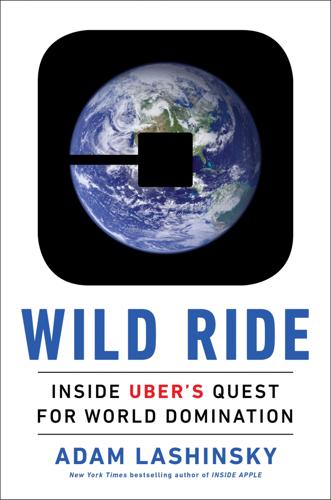
Wild Ride: Inside Uber's Quest for World Domination
by
Adam Lashinsky
Published 31 Mar 2017
In theory, surge pricing worked great. In practice, it infuriated customers and would become a lasting public-relations headache for Uber. The outrage first hit on New Year’s Eve in New York in 2011, when some fares were eight times the normal load. In later years, prices would spike on the East Coast during Hurricane Sandy, during blizzards, and in the middle of a hostage crisis in Sydney, Australia. Kalanick exacerbated matters by taking a “get-over-it” attitude with riders. “Someone who is driving a car on a regular occurrence deals with dynamic pricing all the time: it’s called gas prices,” he told The New York Times, shortly after the New Year’s incident when some customers paid more than $100 for relatively short rides.

Without Their Permission: How the 21st Century Will Be Made, Not Managed
by
Alexis Ohanian
Published 30 Sep 2013
Demand for access to government data is waxing, but we don’t have nearly enough people capable of analyzing it and using it to help us help ourselves do everything better—whether it’s getting status updates on the BxM10 bus or organizing a Crowdtilt project to finally get that pothole fixed. More and more people are turning to one another on the Internet to solve real problems—not as a replacement for government but as a supplement that responds in real time and builds community as it helps others. Shortly after Hurricane Sandy devastated the greater New York and New Jersey area, the Occupy Sandy relief effort was launched to organize hundreds if not thousands of volunteers to rebuild communities and get assistance to those who needed it most. There was no memo. No one stopped to ask for approval to help. They just did it.
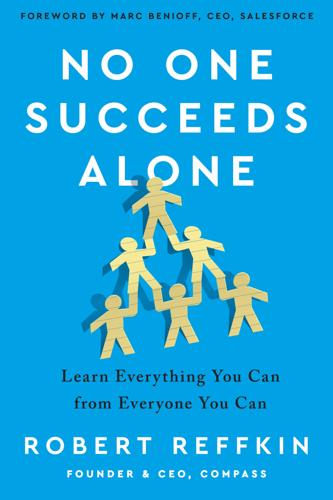
No One Succeeds Alone
by
Robert Reffkin
Published 4 May 2021
For my final marathon in my adopted hometown of New York City, however, I wanted to try something even bigger: to finish in less than three hours. That meant bringing my average nine-minute mile down to six and a half minutes or faster for 26.2 miles in a row. I knew it wasn’t going to be easy. So I trained for eight solid months at two different times, since the aftermath of Hurricane Sandy led to the cancellation of the 2012 marathon and I had to wait another full year and redo my eight long months of training to get ready for my fiftieth and final marathon. A week out from the 2013 New York City Marathon, I was back in running shape—but I wasn’t sure if I was going to be able to hit my goal time.
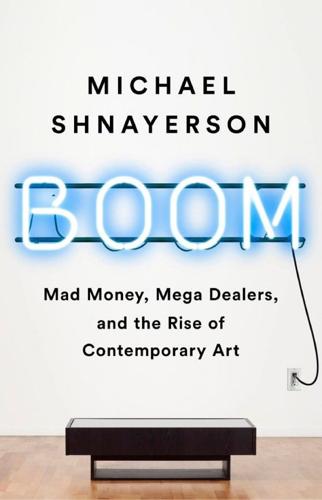
Boom: Mad Money, Mega Dealers, and the Rise of Contemporary Art
by
Michael Shnayerson
Published 20 May 2019
In a sense, Bradford was hard to miss. He stood six feet seven and a half inches, a proud and handsome black artist on the cusp of international stardom. He had been represented for nine years by Chelsea gallery Sikkema Jenkins, which had given him three solo shows, the most recent in October 2012 just days before Hurricane Sandy. His reputation was solid and growing, but nothing like it was about to become. Bradford had spent his early childhood in a black neighborhood of South Central, Los Angeles, called West Adams, near where his mother, a single parent, had a beauty salon. At 11, he moved with her to Santa Monica, in large part for the better public schools.
…
“At the core,” explained Payot, “it’s the belief that with art you can actually change society.” For Bradford, it was a hard choice. Sikkema Jenkins had stayed with him through ups and downs, as critic Jerry Saltz noted in New York magazine. “And I do mean downs: During Bradford’s exhibition [in 2011], his dealer, Michael Jenkins, somehow made his way to the gallery through Hurricane Sandy and propped up the paintings on file cabinets, keeping them above the water line, saving them from destruction and sacrificing the gallery’s paperwork to do it.”16 Could he really leave the gallery that had supported him so passionately? Bradford wasn’t the only black artist Wirth was pursuing.
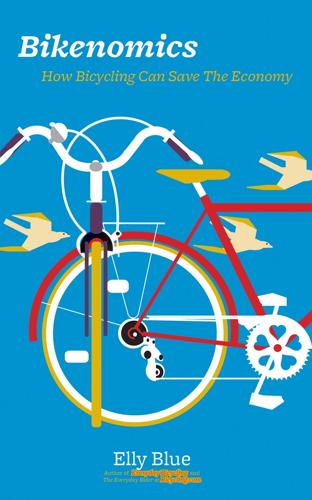
Bikenomics: How Bicycling Can Save the Economy (Bicycle)
by
Elly Blue
Published 29 Nov 2014
After a hurricane, a tornado, or a flood, the streets tend to be clogged with debris, fuel is unavailable, cars are out of commission, and resources are strained. A bicycle with tough, knobby tires is often the only way to get around the city. These are times when the latent demand for bicycling makes itself known.208 In New York City after Hurricane Sandy, power was out, streets were blocked, and transit wasn’t running. Bicycle sales and repairs skyrocketed. Shops couldn’t keep bikes on the shelves, and mechanics worked double shifts getting peoples’ bicycles up and running. Bicycling levels anecdotally stayed high after the subway system became available again and roads opened.
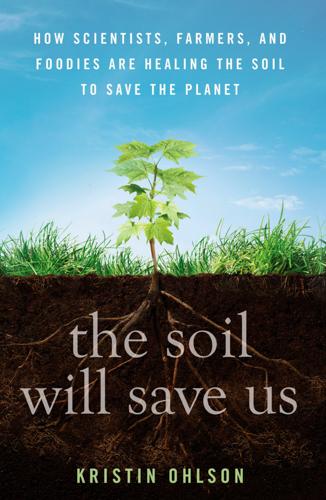
The Soil Will Save Us
by
Kristin Ohlson
Published 14 Oct 2014
Instead, the city employed a number of inexpensive strategies to improve the water supply, including paying Catskill farmers upstream to change their land management practices in ways that reduced runoff on their properties and, ultimately, pollution in the lakes and streams that provided the city’s drinking water. Not only did this investment in upstream farmers save vast sums of taxpayer dollars, but this “natural” water purification system continued to serve the citizens even when Hurricane Sandy roared ashore and zapped the electric power. According to Zwick, there are 67 similar programs in the United States. Worldwide, more than $8 billion is spent to improve watersheds’ natural function in order to protect water quality downstream, with China spending 90 percent of those dollars. So every time Collins observes that his and other farmers’ management of the land has resulted in healthier soil—with the attendant benefits of greater productivity, better water filtration, less erosion and runoff, and more biodiversity—he can’t help but imagine how the watershed would be impacted if a thousand other farmers were doing what he does.

Internet for the People: The Fight for Our Digital Future
by
Ben Tarnoff
Published 13 Jun 2022
Not all community networks can or should look like traditional ISPs: different network topologies or technologies may be better suited to a community’s requirements. Some may want to optimize for resiliency with mesh networking, for example, which uses direct connections between nodes to minimize single points of failure. This is particularly useful for disaster scenarios, because so long as any nodes remain, they can continue to communicate. When Hurricane Sandy flooded the Brooklyn neighborhood of Red Hook in 2012, the power went out and cell phones stopped working, but the area’s mesh network stayed up, keeping residents connected and enabling them to coordinate the emergency response. If localism brings many benefits, however, it also carries some significant risks.
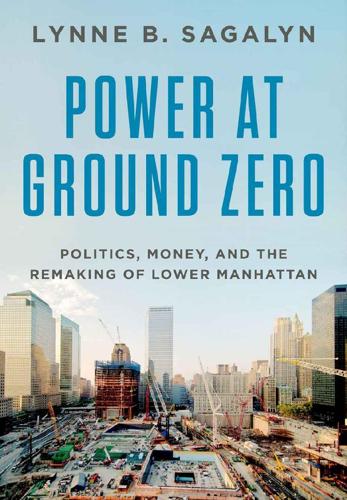
Power at Ground Zero: Politics, Money, and the Remaking of Lower Manhattan
by
Lynne B. Sagalyn
Published 8 Sep 2016
The museum had been fought over hard, its construction halted over cost overruns and a protracted financial dispute over who would pay for the cost overruns. And while it was still under construction, its completion had been set back by massive flooding—seven feet of water at bedrock—caused by Hurricane Sandy.19 In celebrating the opening, the Daily News editorial heralded the spirit of common humanity and tireless effort that “transformed Ground Zero into the exact opposite of what the World Trade Center destroyers intended,” and made this place “a historical victory.” It was a day for reflection, a day for unity, a day to put aside the difficult politics of the past—“the years of skirmishing among museum leaders, politicians and family members,” as the Times editorial said.
…
As the Alliance for Downtown New York enthusiastically reported, the economy of lower Manhattan “had reached a level not seen since before September 11,” and the future was “even more promising.”1 In the fifteen years since 9/11, lower Manhattan had benefited from three big infusions of federal money unlike anything in the past: $20.5 billion to repair and rebuild from the 9/11 attack, billions to the bailout Wall Street banks, and additional billions to repair the disaster damage from Hurricane Sandy. The revived economy downtown was now built on a more diverse foundation that reflected a shrinking financial-services industry’s footprint and a rising “TAMI” sector—jobs in technology, advertising, media, and information. In their move from midtown or midtown south attracted by lower costs, these companies had leased over three million square feet of office space in lower Manhattan since 2008—61 percent of it at the Trade Center: 1 World Trade (Condé Nast, 1.6 million square feet), 3 World Trade (Group M, 520,000 square feet), and 4 World Trade (MediaMath, 106,000 square feet).
…
From 2006 through 2013, the Conversation Series solicited fifty-five nearby residents and business, community, and government representatives; seven preservationists; twelve uniformed rescue and recovery workers; nine interfaith and multicultural representatives; seventy-eight museum and educational specialists; eight social service and counseling processionals; and sixty foundation staff members. The detailed lists are published in individual summary reports of each series; Cohen, “At Museum on 9/11, Talking through an Identity Crisis.” 18 Peter L. Rinaldi e-mail to David W. Dunlap, July 5, 2013, cited with permission. 19 The flood from Hurricane Sandy reopened opposition from those victims’ relatives who objected to the unidentified remains being placed at bedrock level. 20 Editorials: “Rising from the Ruins,” DN, May 16, 2014; “The Man in a Red Bandanna,” NYT, May 16, 2014. 21 Edward Rothstein, “A Memorial to Personal Memory: Recalling Sept. 11. by Inverting a Museum’s Usual Role,” NYT, May 22, 2014. 22 Inga Saffron, “Changing Skyline: 9/11 Museum Is an Immersing Experience,” Philly.com, May 25, 2014. 23 Philip Kennicott, “Depth of Despair: The 9/11 Museum Doesn’t Just Display Artifacts, It Ritualizes Our Grief on a Loop,” Washington Post, June 8, 2014. 24 Christopher Hawthorne, “Architecture Review: At 9/11 Memorial Museum, a Relentless Literalism,” Los Angeles Times, May 26, 2014; Karrie Jacobs, “Letter from Ground Zero: Delirious World Trade,” Architect, July 30, 2014. 25 Adam Gopnik, “A Critic at Large; Stones and Bones: Visiting the 9/11 Memorial and Museum,” New Yorker, July 7, 2014. 26 Gopnik, “Stones and Bones: Visiting the 9/11 Memorial and Museum.” 27 Cohen, “At Museum on 9/11, Talking through an Identity Crisis.” 28 Holland Cotter, “The 9/11 Story Told at Bedrock, Power as a Punch to the Gut,” NYT, May 14, 2014. 29 Robin Pogrebin, “Plans for Ground Zero Arts Hub Shift Again,” NYT, March 26, 2013. 30 The program for the PAC at this time included a seven-story building of approximately 180,000 square feet containing a one-thousand-seat theater, rehearsal halls, a café, retail space, and a four-hundred-seat catering hall.
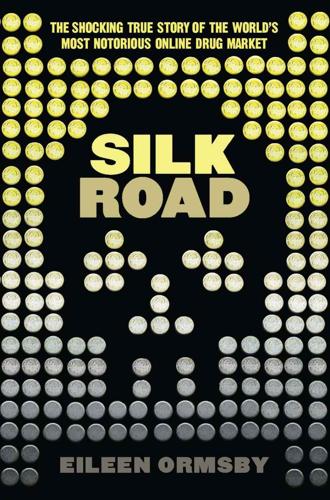
Silk Road
by
Eileen Ormsby
Published 1 Nov 2014
Despite assurances by moderators and staff that the site was simply experiencing technical issues that needed to be sorted out and stability and security tested before the site could be made available to members again, all sorts of theories started cropping up. Some were simple: the devastating Hurricane Sandy, for example, had left a path of obliteration in its wake and users pointed out that the aftermath could be to blame. This was pure speculation, as there was no evidence that the Silk Road server was anywhere in the hurricane’s path; in fact, it was doubtful it was even in North America. Infiltration by law enforcement was a major theory.
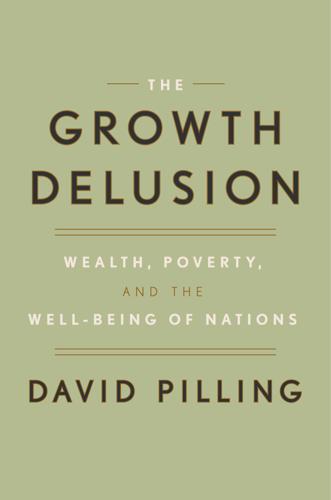
The Growth Delusion: Wealth, Poverty, and the Well-Being of Nations
by
David Pilling
Published 30 Jan 2018
The UK puts 9 percent of GDP into health care, Japan 10.2 percent, and France, which has a world-class health system, 11.5 percent. Singapore, which also has an exceptionally good health service, spends just 4.9 percent, less than a third of the US. Each and every week Americans lay out more than $55 billion on medical expenditure, close to what it cost to clean up after Hurricane Sandy in 2012. You’d have thought that all this money would produce spectacular results, but you’d be wrong. Health outcomes in the US are no better than in most developed countries, and in some cases considerably worse. The US comes in at number 31 in the life-expectancy league tables, just below Costa Rica.4 Its average life expectancy of 79.3 years for both sexes compares with 83.7 for Japan, the best-placed country.
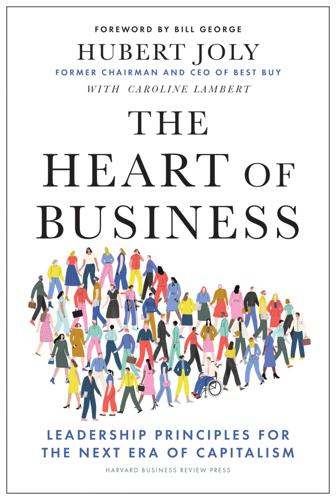
The Heart of Business: Leadership Principles for the Next Era of Capitalism
by
Hubert Joly
Published 14 Jun 2021
Reid, “For Corporate Purpose to Matter, You’ve Got to Measure It,” Boston Consulting Group, August 16, 2018, https://www.bcg.com/en-us/publications/2018/corporate-purpose-to-matter-measure-it.aspx. Chapter Seven 1. Statista, “Small Appliances,” n.d., https://www.statista.com/outlook/16020000/109/small-appliances/united-states. 2. We did not yet know that the presentation would eventually be pushed back to November 13 because of Hurricane Sandy. Chapter Eight 1. Richard Schulze, Becoming the Best: A Journey of Passion, Purpose, and Perseverance (New York, NY: Idea Platform, 2011), 153. 2. RSA Animate, “Drive: The Surprising Truth about What Motivates Us,” YouTube, filmed April 1, 2010, video, 10:47, https://www.youtube.com/watch?
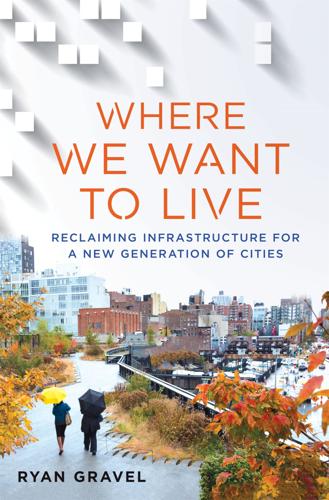
Where We Want to Live
by
Ryan Gravel
Published 2 Feb 2016
Beyond aesthetics and this kind of basic functionality, if we let it, the design of infrastructure can also push us further. Inventive designers can help expand its utility by tackling larger challenges like public health or social justice. The East River Blueway on Manhattan’s east waterfront is still largely conceptual, but with the likelihood of another Hurricane Sandy, the design team claimed a role for the project in climate adaptation and resiliency. As it was described to me, the Blueway integrates relevant strategies for storms and sea-level rise as it stitches existing parks and trails into a more cohesive public waterfront. For example, in addition to improved connectivity for evacuation and emergency response, it includes various flood-control mechanisms and the addition of marshes and rock outcroppings to slow water along its banks.
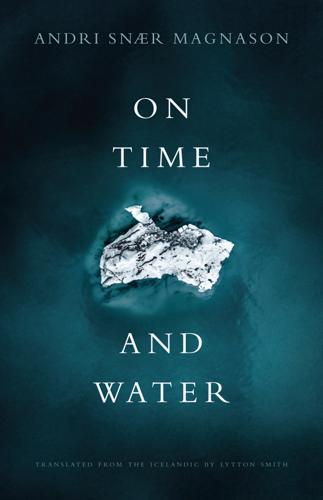
On Time and Water
by
Andri Snaer Magnason
Published 15 Sep 2021
We are the last generation able to save the earth from irreversible destruction.22 The fact that Audhumla spoke to me is clearly an extreme example, but I think that most thoughtful people have felt at some point that it is high time they stir themselves to action and help save Earth—but then they find an excuse to avoid the hassle. My escape was fiction; I chose to let others worry about activism. I organized a massive book launch for my sci-fi novel LoveStar at the historic St. Mark’s Bookshop in Manhattan. It was at 7:00 P.M., October 29, 2012. No one came to the party except Hurricane Sandy, which hit New York exactly that evening, at seven o’clock. I have four children who are starting to make their own life choices. What should I tell them, how should I explain what’s happening? I feel bad taking away their sense of purpose, their faith in the future. It’s haunting to see their eyes dim as they read newspaper articles or watch YouTube videos about the Earth’s decline over the next hundred years.

Devil's Bargain: Steve Bannon, Donald Trump, and the Storming of the Presidency
by
Joshua Green
Published 17 Jul 2017
After a while, Trump, perhaps needing to absorb the gravity of what was happening, went and sat down. A moment later, Christie burst through the force field and sat next to him. “Hey, Donald,” he said. “The president talked to me earlier.” Christie knew Obama from their work together in the aftermath of Hurricane Sandy. “If you win he’s going to call my phone, and I’ll pass it over to you.” Trump flashed a look of annoyance, clearly resenting the intrusion. He was also, his aides knew well, a fanatical germaphobe who would not want Christie’s cell phone pressed to his face—not even for the deep satisfaction of hearing Barack Obama congratulate him on having defeated Clinton.
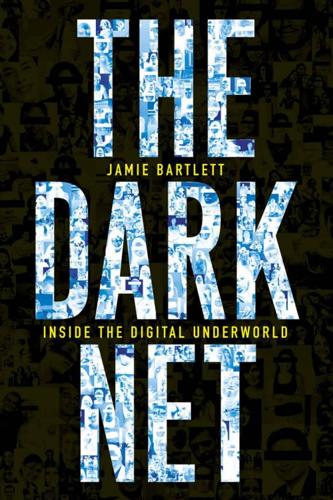
The Dark Net
by
Jamie Bartlett
Published 20 Aug 2014
The trolls themselves claim that grief tourists are shrill, disingenuous and wholly deserving targets. The Gay Niggers Association of America frequently posts ridiculous news stories in the hope that lazy journalists will repeat them. They often do: a GNAA story alleging that African Americans were looting people’s homes during Hurricane Sandy in order to steal domestic pets that was widely reported by mainstream media outlets. Within the trolling community, the undisputed champions of trolling ‘in real life’ are considered to be US comedian Stephen Colbert and British comedy writer Chris Morris, both famous for puncturing the inflated egos of politicians and celebrities.
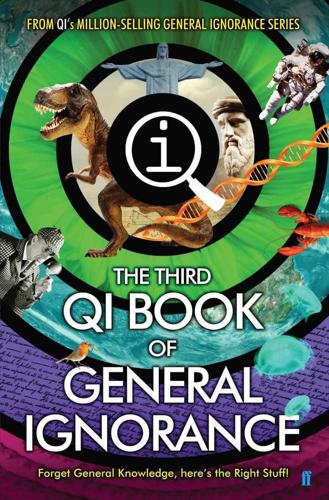
QI: The Third Book of General Ignorance (Qi: Book of General Ignorance)
by
John Lloyd
and
John Mitchinson
Published 28 Sep 2015
Five years later, when Richard Udry of the University of North Carolina studied the figures for the entire city, it became clear there was no significant increase in births, and the New York Times issued a retraction. That hasn’t stopped the papers running similar stories since then: as recently as 2013, the Daily Mail reported that New York’s Hurricane Sandy had caused a huge baby boom. Even if more people did conceive during a blackout, there is unlikely to be a spike nine months later, because most births don’t occur exactly nine months after conception. A 2013 study from the US National Institute of Environmental Health found length of pregnancy varied between women by as much as five weeks.
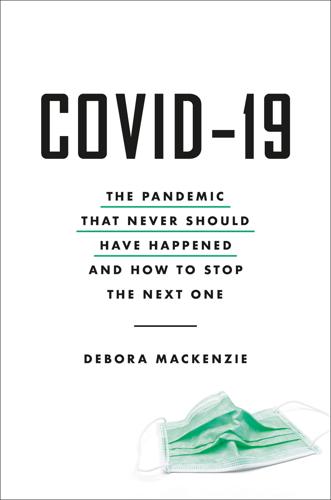
Covid-19: The Pandemic That Never Should Have Happened and How to Stop the Next One
by
Debora MacKenzie
Published 13 Jul 2020
A common saying in security circles is that a city is never more than three or four meals away from anarchy: as food prices on the global market rose in the run-up to the financial crisis of 2008, there was rioting in many places. And systems support each other: for example, if chlorine for water purification is not delivered just as power outages make it hard for many to boil water, waterborne diseases could result. Often we don’t see the problem until it’s in our faces: New York discovered after Hurricane Sandy that high-rise residences dependent on elevators became traps for people less able to handle many flights of stairs when the power went out, while even hospitals with generators failed to cope. Countries rely on foreign deliveries for everything from milk cartons to pharmaceuticals, and in a bad pandemic, shipping will falter even more than it has with Covid-19.
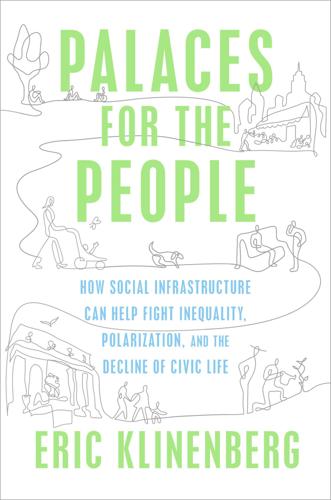
Palaces for the People: How Social Infrastructure Can Help Fight Inequality, Polarization, and the Decline of Civic Life
by
Eric Klinenberg
Published 10 Sep 2018
” * * * Today, a growing network of policy makers and designers recognize the advantages of building social infrastructure into larger vital system upgrades. Their goal is to carry out “multipurpose projects” so that public investments in security don’t just mitigate disaster damage but also strengthen the networks that promote health and prosperity during ordinary times. Hurricane Sandy marked a turning point in the way government and civic groups think about climate security. The “superstorm” of 2012 covered an area more than one thousand miles in diameter, making it one of the largest hurricanes in American history. Its winds were both punishingly severe and painfully slow, and like Harvey, Sandy seemed to pause so that it could inflict extra damage on nearly everything in its path.

The Hostage's Daughter
by
Sulome Anderson
Published 24 Aug 2016
I always wanted to tell her how sorry I was that he had abandoned her, and how guilty I felt because I was the daughter he chose to have near him, but I could never find the words. I sensed that we shared the same angry befuddlement at Dad’s actions and behavior, but I can only imagine what it feels like to know your father cast you and your mother aside for a new wife and daughter. The last time I saw her was during Hurricane Sandy, which happened to coincide with one of my less successful medication changes. We were stuck in my apartment in Tribeca with no electricity for a week, during which I sobbed uncontrollably for pretty much her entire stay, the poor woman. At some point, I told her through my tears how sorry I was that my father had been so dismissive toward her growing up, and how guilty I felt that I had been the one to take her place.

Supertall: How the World's Tallest Buildings Are Reshaping Our Cities and Our Lives
by
Stefan Al
Published 11 Apr 2022
Trump and Tony Schwartz, Trump: The Art of the Deal (New York: Ballantine Books, 2009), 164. 25.Steven Johnson, “Blueprint for a Better City,” Wired, December 1, 2001. 26.Robin Finn, “The Great Air Race,” New York Times, February 22, 2013. 27.Kerry Burke, Greg B. Smith, and Corky Siemaszko, “Crane Collapse in Midtown Manhattan as Hurricane Sandy Storms into the East Coast,” New York Daily News, October 29, 2012. 28.Michael Kimmelman, “Seeing a Need for Oversight of New York’s Lordly Towers,” New York Times, December 22, 2013. 29.“City Council Considers Task Force to Study Impact of Megatowers Casting Shadows on Central Park,” CBS New York, November 12, 2015, accessed February 27, 2021, https://newyork.cbslocal.com/. 30.Quoctrung Bui and Jeremy White, “Mapping the Shadows of New York City: Every Building, Every Block,” New York Times, December 21, 2016. 31.Justin Davidson, “Giants in Our Midst,” New York Magazine, September 12, 2013. 32.
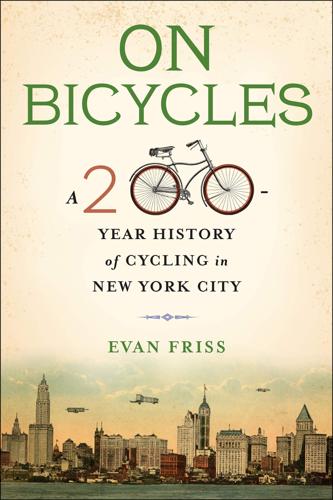
On Bicycles: A 200-Year History of Cycling in New York City
by
Evan Friss
Published 6 May 2019
A brownstone, one woman moped, might now only fetch $21 million instead of $22 million.55 Although pessimists predicted that theft and vandalism would be pervasive and that the system would fail, Citi Bike had a strong launch; within four months of the May 2013 start date, more than 3.5 million trips had been taken and more than 80,000 New Yorkers had signed up for an annual membership to ride the 5,130 bicycles parked at 322 stations. But there were also some major setbacks. Hurricane Sandy destroyed roughly 1,000 bicycles stored at the Brooklyn Navy Yard. The electric locks that were supposed to ward off thieves but allow users to quickly access bicycles proved unreliable—and so did the bicycles. In the first full month, there were 1,428 instances in which bicycles needed to be fixed or maintained.

Beautiful Solutions: A Toolbox for Liberation
by
Elandria Williams, Eli Feghali, Rachel Plattus
and
Nathan Schneider
Published 15 Dec 2024
As a commercial fisherman, I was face-to-face with the reality that there would be no jobs on a dead planet, and went on a journey of ecological redemption. After oyster farming on Long Island Sound for almost a decade, it all came to a screeching halt in 2011 and 2012 when Hurricane Irene and Hurricane Sandy destroyed my farm. My farm and livelihood had become a canary in the coal mine for a climate crisis that arrived a hundred years ahead of schedule. Our fishing community needed another way forward. Ocean farming is a trade both old and new, a job rooted in thousands of years of history, dating back to Roman times and Indigenous clam walls in the Pacific Northwest.
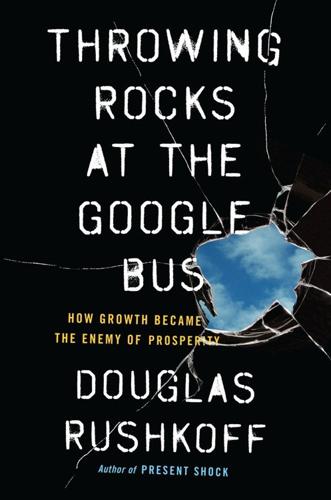
Throwing Rocks at the Google Bus: How Growth Became the Enemy of Prosperity
by
Douglas Rushkoff
Published 1 Mar 2016
Passengers register their credit card with Uber, which sets prices, charges payment, takes its 20 percent cut, and pays the driver.23 By calling itself a platform rather than a taxi dispatcher, Uber has been able to work in a regulatory gray area that slashes overhead while inflating revenue. Unlike traditional, regulated livery services, Uber is under no obligation to the public good, freeing the company to implement “surge pricing” during peak use periods, as it did during Hurricane Sandy and other disasters—a practice indistinguishable from price gouging.24 Uber also claims that its status as a mere platform significantly reduces its responsibilities to its drivers. This issue is still being hashed out in the courts and city councils, but relative to traditional livery services, the difference is clear: Uber drivers take on greater personal liability than any driver working for a legitimate, licensed cab company.

The New Urban Crisis: How Our Cities Are Increasing Inequality, Deepening Segregation, and Failing the Middle Class?and What We Can Do About It
by
Richard Florida
Published 9 May 2016
And housing prices rose by 69 percent in Boreum Hill; 68 percent in Prospect Lefferts Gardens; 61 percent in the former industrial areas of DUMBO and Sunset Park; and 60 percent in already plush Park Slope with its magnificent townhomes.24 On the flip side, housing prices actually fell in other, less advantaged Brooklyn neighborhoods. Prices declined by 30 percent between 2004 and 2014 in Gerritsen Beach, largely on account of the devastation of Hurricane Sandy. They were down by 10 percent in Fort Hamilton, a solidly middle-class neighborhood with limited subway access, and by 12 percent in the working-class neighborhood of Canarsie. Housing prices fell by 8 percent in Flatlands and 27 percent in Remsen Village, both low-income neighborhoods that are poorly served by transit.
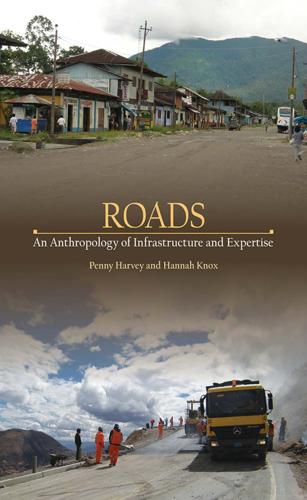
Roads: An Anthropology of Infrastructure and Expertise (Expertise: Cultures and Technologies of Knowledge)
by
Penny Harvey
and
Hannah Knox
Published 22 Jun 2015
They feared that the presence of so many single men would lead to theft, unwanted pregnancies, social unrest, and unwelcome disturbance. As construction got under way local people were dismayed by the noise, the dust, and huge machinery operating day and night in areas that had always before been quiet and still. Reflecting on the contrasting responses from the U.S. authorities to the devastation of Hurricane Katrina and Hurricane Sandy, Stephen Collier has drawn attention to two quite distinct understandings of vulnerability.1 Collier argues that in the case of Hurricane Katrina it was “social vulnerability,” the exclusions and precarious living conditions of the poor and marginalized populations of New Orleans, that came to the fore in the media and in analyses more generally about why the city had been so devastated by the floods.

A More Beautiful Question: The Power of Inquiry to Spark Breakthrough Ideas
by
Warren Berger
Published 4 Mar 2014
This famous story from Intel’s early history appears in many articles and sites, but I came across it on the website for the Center for Applied Rationality, http://rationality.org/rationality/. 14 Jack Bergstrand of Brand Velocity thinks . . . From my interview with Bergstrand, January 2013. 15 Vijay Govindarajan notes, hospitals in India . . . Kaihan Krippendorff, “Hurricane Sandy, a Drenching Reminder That Tough Times Inspire Innovation,” Fast Company, November 1, 2012. 16 What if we were to compete against ourselves? . . . The story of the Atlantic’s reinvention comes from numerous sources, including Jeremy W. Peters, “Web Focus Helps Revitalize The Atlantic,” New York Times, December 12, 2010; Lauren Indvik, “Inside ‘The Atlantic’: How One Magazine Got Profitable by Going ‘Digital First,’” Mashable.com, December 19, 2011, http://mashable.com/2011/12/19/the-atlantic-digital-first/; and David Carr, “Covering the World of Business, Digital Only,” New York Times, September 24, 2012. 17 “The modern worker is not the salary . . .”

Street Smart: The Rise of Cities and the Fall of Cars
by
Samuel I. Schwartz
Published 17 Aug 2015
A week before, we had held our final planning meeting with the representatives from the Metropolitan Transportation Authority, the city’s Department of Transportation, the New York City Police Department, and a dozen others. We planned to have more than forty people measuring traffic, assessing transit, and actually controlling traffic through our company’s Pedestrian Traffic Managers. We prepared for everything. Everything except Hurricane Sandy. Sandy hit New York City on October 29, which gave us just two days to prepare. We were still set to go as late as Halloween but the city wasn’t. Game one versus the Knicks was cancelled. The arena finally opened for regular season play against the Toronto Raptors. I savored those first few moments when I heard a major-league PA announcer say “Brooklyn” for the first time since the Dodgers left.
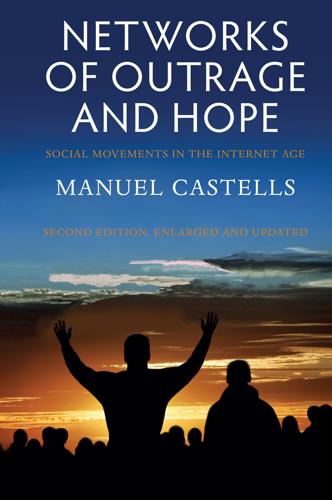
Networks of Outrage and Hope: Social Movements in the Internet Age
by
Manuel Castells
Published 19 Aug 2012
Occupying minds, not the state: Post-Occupy blues in the US In the United States, the intensity and relevance of the Occupy Wall Street Movement, documented in this volume, is in sharp contrast with its scant impact on the political system. This is in spite of the presence of the echoes and heritage of the movement in multiple local actions in the entire geography of the country, from the extraordinary solidarity in helping thousands of people affected by hurricane Sandy in 2012 to divestiture of municipal government investments in favor of local credit unions, defense against evictions from foreclosed homes, and the campaign to cancel student debt. Or, in a more significant expression of the latent groundswell of protest left by the Occupy movement, in the massive demonstrations that took place in New York and other American cities in November and December 2014 against the immunity for police brutality.

Frugal Innovation: How to Do Better With Less
by
Jaideep Prabhu Navi Radjou
Published 15 Feb 2015
It is now possible, therefore, to generate power at one-millionth of the scale. These smaller units are in turn giving rise to mini power-generation units that can be distributed and quickly deployed during a sudden spike in demand (for example, during extreme winters) or a power outage (for example, in the aftermath of a natural disaster such as Hurricane Sandy). In 2012 alone about 142GW of distributed power capacity was installed, accounting for nearly 40% of total capacity additions. Investment in distributed power technologies is expected to grow from $150 billion in 2012 to over $200 billion in 2020. Sensing a huge market opportunity, GE launched a new business unit in early 2014 called GE Distributed Power to supply distributed power systems to utilities as well as directly to end-customers such as municipalities or large manufacturers.

The Age of Stagnation: Why Perpetual Growth Is Unattainable and the Global Economy Is in Peril
by
Satyajit Das
Published 9 Feb 2016
Severe storms currently diminish the world's annual GDP growth by around 1 percent. In 2013, there were record temperatures in India, Pakistan, Russia, and Australia. Northeast Brazil experienced its worst drought in fifty years. The worst recorded tornado hit El Reno, Oklahoma. The number and intensity of wildfires in North America, Europe, and Australia increased. Hurricane Sandy, which affected the East Coast of the US and the Caribbean in October 2012, destroyed or damaged an estimated 1.8 million structures and homes, causing economic losses exceeding US$65 billion. In 2005, Hurricane Katrina resulted in losses exceeding US$100 billion. The 2011 floods in Thailand caused estimated losses of US$45 billion.

Black Code: Inside the Battle for Cyberspace
by
Ronald J. Deibert
Published 13 May 2013
But the resiliency of cyberspace does have some basis in the original design principles of the Internet, whose architecture was constructed to route information along the most efficient available path and to avoid disruption in the event of a natural disaster (or nuclear attack). This resiliency was demonstrated in the aftermath of Hurricane Sandy in October 2012, which devastated the U.S. eastern seaboard and caused mass power outages, including the loss of local Internet and cellphone connectivity. The network-monitoring company Renesys showed that the storm had collateral impacts on traffic as far away as Chile, Sweden, and India – but mostly in a positive sense: traffic destined for New York City that would have failed as a consequence of the storm was manually rerouted along alternative paths by savvy network engineers.
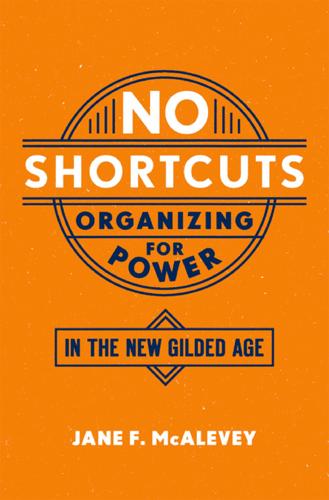
No Shortcuts: Organizing for Power in the New Gilded Age
by
Jane F. McAlevey
Published 14 Apr 2016
No number of pollster-perfected frames will undo the 100 years of social conditioning that have taught Americans to accept their economic and political roles, and to think “collectivism bad” and “individualism good,” because the world’s most sophisticated marketers—Madison Avenue and its clients—can and do outframe and outspend liberal messaging. Yet there is a mountain of evidence that people in this country possess a deep sense of human solidarity. We see it with every disaster, in critical situations such as the aftermaths of September 11 and Hurricane Sandy. People display soul-affirming levels of instant and intense solidarity and sympathy, and the images preserved of people helping one another in these dire situations can make the toughest cynic cry. But the solidarity that follows disasters, natural and otherwise, is created in a moment of fierce emotional heat that flares up and quickly smolders.
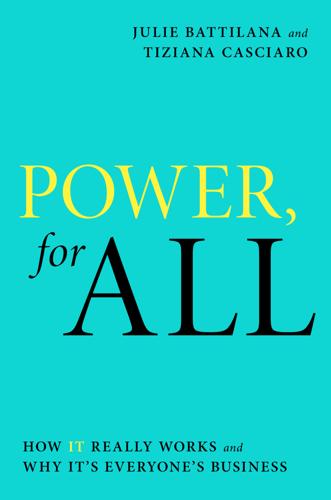
Power, for All: How It Really Works and Why It's Everyone's Business
by
Julie Battilana
and
Tiziana Casciaro
Published 30 Aug 2021
Xiye’s “story of self” shared her experiences in Mexico, where she had witnessed firsthand the effects of extreme weather events and society’s dependence on fossil fuels. Her “story of us” spoke to New Yorkers: “12 percent of adults in the Bronx have asthma, while close to $19 billion dollars of our tax money was spent to rebuild our city after Hurricane Sandy.” Finally, her “story of now” framed climate change as a crisis, one that required swift and immediate action.14 This was her call to youth and adults that change was possible if they joined the march and the movement. Public narratives like this help to trigger outrage, which motivates action and resistance.15 As we saw in chapter 5, when anger is combined with a measure of power, it elicits a sense that something can be done to effect change.16 Xiye and her peers were hoping to rally at least twenty thousand people.
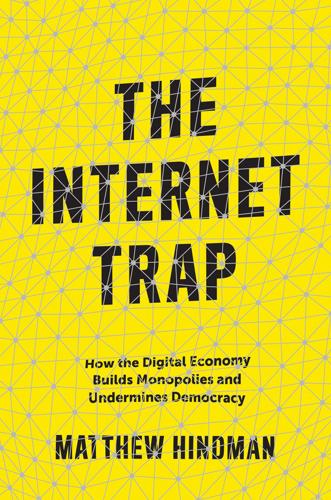
The Internet Trap: How the Digital Economy Builds Monopolies and Undermines Democracy
by
Matthew Hindman
Published 24 Sep 2018
Online Local News • 103 But throughout, Patch encountered skepticism from the business media and aol’s own shareholders. Traffic lagged badly, and ad revenue was dismal. In 2012, in an effort to fight off an activist investor group, Armstrong promised that Patch would be profitable by the end of 2013. But even with a brief traffic surge from Hurricane Sandy, profitability remained far out of reach. In August 2013, Armstrong announced that a third of Patch sites would be closed. Armstrong even tacitly admitted that some of Patch’s own editors did not use the site, telling all of his employees that “if you don’t use Patch as a product and you’re not invested in Patch, you owe it to everybody else at Patch to leave.”3 In January 2014, aol finally sold majority ownership of Patch to Hale Global company for undisclosed terms.
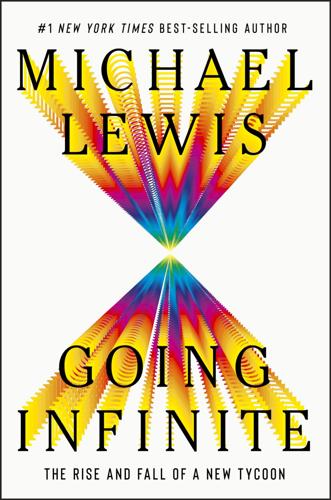
Going Infinite: The Rise and Fall of a New Tycoon
by
Michael Lewis
Published 2 Oct 2023
So: 25/36ths. There was an 11-in-36 chance that, with a roll of two dice, you’d get one three. The in-person interview, in mid-November, was different. Jane Street sent him a train ticket to New York City and provided a car and driver to take him out to a disaster relief site in Totowa, New Jersey. Hurricane Sandy had swept Jane Street out of its lower Manhattan offices. The disaster site had an eerie industrial feel—the desks were all the same, you needed a key to use the bathroom—but Sam hardly noticed. What preoccupied him was what Jane Street wanted him to do for an entire day: solve puzzles and play games.
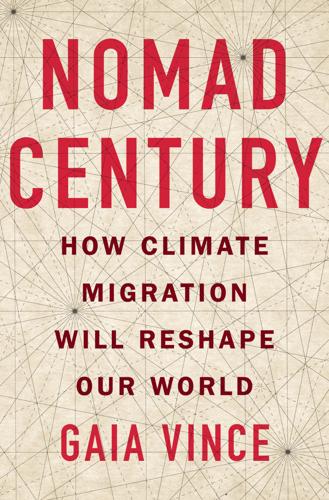
Nomad Century: How Climate Migration Will Reshape Our World
by
Gaia Vince
Published 22 Aug 2022
The whole of southern Vietnam is expected to be below sea level by 2050, as well as much of the central and northern parts of the country.30 Coastal Florida is already seeing the signs of a climate-driven housing crisis, with first sales tumbling and then prices, as luxurious waterfront homes become too risky to purchase. Sales in vulnerable areas were down 20 per cent on safe areas in 2018, after Hurricane Sandy, which damaged some 650,000 homes and left 8.5 million people without power (some for months), made buyers more wary. Europe, with its densely populated 100,000-kilometre-long coastline, will also be seriously affected. The number of people exposed to coastal flooding is projected to rise from 0.1 million a year today to 3.6 million by 2100, with the UK worst hit financially, followed by France and Italy.

Private Equity: A Memoir
by
Carrie Sun
Published 13 Feb 2024
“Honestly?” Val took one more sip. “Your boss is the best.” * * * — IT BECAME CLEAR to me that everything was a test. During a sit in late September, Boone said, “I want to do a surf trip.” He had been watching Edouard, the strongest tropical storm originating in the Atlantic Ocean since Hurricane Sandy had destroyed much of the Caribbean and eastern United States, but he was disappointed when Edouard lost intensity. “Got it,” I said. “When?” “That’s for you to figure out.” “What’s your ideal time?” “Sometime in the next couple weeks before things get too busy.” “How long?” “Two nights.
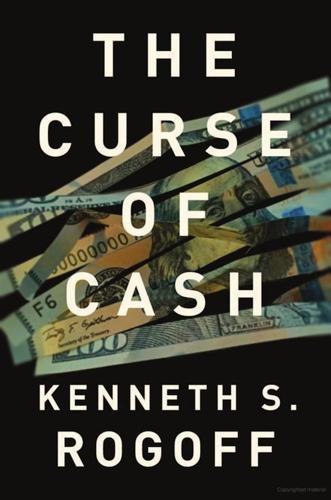
The Curse of Cash
by
Kenneth S Rogoff
Published 29 Aug 2016
Indeed, arguably, the most important disaster preparedness today is a smartphone, and it will only become more so as payment systems migrate to mobile telephony. As already noted, smartphone apps for P2P payments continue to proliferate. One of the major lessons from Hurricane Katrina in 2005 was to push cell phone towers to have backup generators or batteries. As a result, when Hurricane Sandy hit the East Coast in 2012, most people retained at least spotty cell phone access. Supermarkets and pharmacies also typically have backup power and should be able to process payments. As cell phone apps grow, they will surely replace cash as the major transaction medium in power outages. Cell phones run out of power, of course, but it is far more cost effective for most people to have a couple inexpensive battery chargers around, or to charge their cell phone in their car, than to hide $500 around the house.
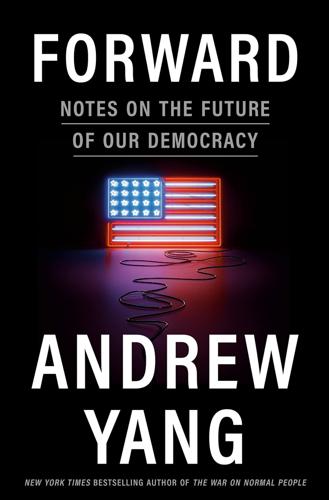
Forward: Notes on the Future of Our Democracy
by
Andrew Yang
Published 15 Nov 2021
I was in Madison Square Garden for Larry Johnson’s four-point play. I came of age, fell in love, and eventually became an entrepreneur and a father in New York City. My boys are in school here, though it’s been Zoom classes lately. I watched the towers fall on 9/11 and walked north away from the smoke. My older son was born during Hurricane Sandy, with blackouts blocks away. I have had a career that I never would have imagined possible when I was growing up because of this city. New York made me who I am. Now I was seeing my home face its darkest time in a generation. The thought that I might be able to contribute to the city’s revival was both an incredible responsibility and an incredible opportunity.
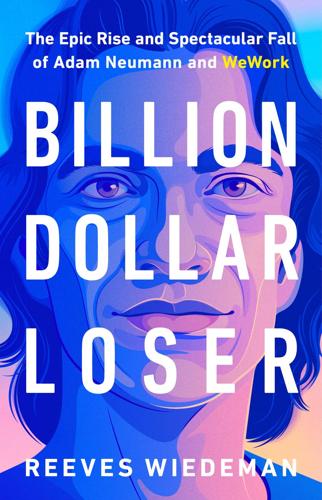
Billion Dollar Loser: The Epic Rise and Spectacular Fall of Adam Neumann and WeWork
by
Reeves Wiedeman
Published 19 Oct 2020
But why go back to work for him when she knew what it would take to build what she always wanted: a space or two, small and simple, all her own? A few months later, she and Danny Orenstein, WeWork’s third employee, opened their own flexible office space right across the street from a WeWork in lower Manhattan. Chapter Nine WeLive WHEN HURRICANE SANDY crashed into New York, back in October of 2012, there was no power below 14th Street. WeWork’s three downtown locations all had to shut down, and the company canceled its Halloween party. “We tried to get one-up on Sandy, but the force of her tidal surge has proved to be too much,” WeWork wrote in canceling the event, while promising more to come.
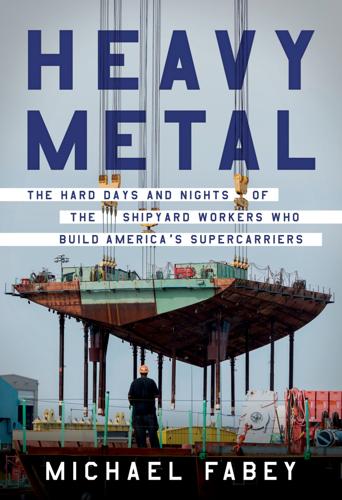
Heavy Metal: The Hard Days and Nights of the Shipyard Workers Who Build America's Supercarriers
by
Michael Fabey
Published 13 Jun 2022
It grew more dangerous overnight and into Friday, dumping three to six inches of rain with gusting winds on Friday reaching fifty mph, snapping and uprooting trees, hurling debris, and cutting power. At high tide about four o’clock Friday afternoon, the most serious flooding made a mess of Tidewater. Water rose to seven feet, about the flood level during Hurricane Sandy in 2012. Other high tides caused minor flooding through Saturday. Dorian weakened from a Category 2 hurricane to a tropical storm, but it still whipped plenty of wind and water during the storm surges, causing a continuing surge of people all over the Peninsula to any hardware store, supermarket, or drugstore for any kind of supplies to survive once the roads closed, the power blinked out, and trees crashed down.

Lonely Planet's Best of USA
by
Lonely Planet
The Revolutionary War begins. 1781 General Washington leads his ragtag troops to victory at Yorktown as the British surrender. 1787 US Constitution establishes a democratic form of government, with power vested in the hands of the people. 1803–06 France sells the US the Louisiana Purchase; Lewis and Clark then trailblaze west through it to reach the Pacific Ocean. 1849 An epic cross-country gold rush sees 60,000 ‘Forty-Niners’ flock to California’s Mother Lode. 1865 The Civil War ends, though celebration is curtailed by President Lincoln’s assassination five days later. 1870 Freed black men are given the vote, vote, but the South’s segregationist ‘Jim Crow’ laws remain until the 1960s. 1880–1920 Millions of immigrants flood in to the US’ cities from Europe and Asia, fueling a new age of urban living. 1917 President Woodrow Wilson plunges the US into WWI, pledging that ‘the world must be made safe for democracy.’ 1920 The 19th Amendment is passed, giving US women the right to vote. 1920s The Harlem Renaissance inspires a burst of African American literature, art, music and cultural pride. 1941–45 The US enters WWII, deploying more than 16 million troops and suffering around 400,000 deaths. 1954 In Brown v Board of Education, the Supreme Court ends segregation in public schools. 1959–75 The US fights the Vietnam War, supporting South Vietnam against communist North Vietnam. 1963 President John F Kennedy is assassinated while riding in a motorcade in Dallas, Texas. 1964 Congress passes the Civil Rights Act, outlawing discrimination on the basis of race, color, religion, sex or national origin. 1974 President Richard Nixon resigns after being connected to the Watergate burglary of Democratic headquarters. 1989 The 1960s-era Berlin Wall is torn down, marking the official end of the decades-long Cold War. 1990s The internet revolution creates the biggest boom and bust since the Great Depression. 2001 The September 11 terrorist attacks destroy NYC’s World Trade Center and kill nearly 3000 people. 2005 Hurricane Katrina ruptures levees, flooding New Orleans and killing more than 1800 people. 2008–9 Barack Obama becomes the first African American president. 2012 Hurricane Sandy devastates the East Coast. More than 80 Americans die (plus 200 more in other countries). 2015 In a landmark decision, the US Supreme Court legalizes same-sex marriage. Gay couples can now wed in all 50 states. Food & Drink Long before the dawn of competitive cooking shows, molecular gastronomy and organic farm stands, Wampanoag tribespeople brought food to help the Pilgrims stave off certain famine over the winter of 1620, thus kicking off the very first Thanksgiving.
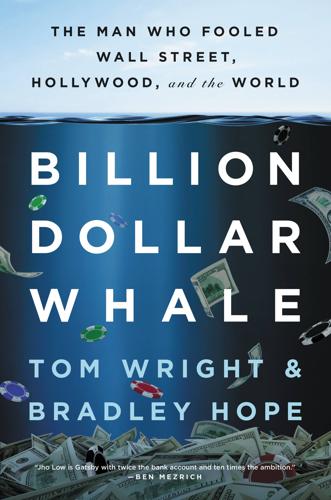
Billion Dollar Whale: The Man Who Fooled Wall Street, Hollywood, and the World
by
Tom Wright
and
Bradley Hope
Published 17 Sep 2018
As glasses of champagne were handed around, the Red Granite principals mingled with Hollywood A-listers, from DiCaprio and Daniel Day Lewis to Harvey Keitel and Steven Spielberg. The guests had assembled for Martin Scorsese, who was turning seventy. He was deep in the filming of The Wolf of Wall Street, which had been pushed off schedule by Hurricane Sandy in late October. He’d been told only a few close friends were attending his birthday celebration, but there were some 120 people in the bar, which had been rented out for the evening. The celebration included a montage of blooper clips from Scorsese movies, a four-course meal, and a champagne toast to the director.
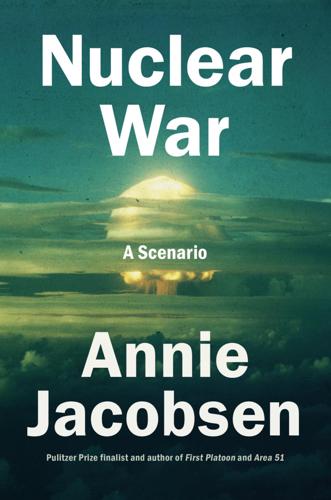
Nuclear War: A Scenario
by
Annie Jacobsen
Published 25 Mar 2024
As the nuclear fireball grows, this shock front delivers catastrophic destruction, pushing out like a bulldozer and moving three miles farther ahead. The air behind the blast wave accelerates, creating several-hundred-mile-per-hour winds, extraordinary speeds that are difficult to fathom. In 2012, Hurricane Sandy, which did $70 billion in damage and killed some 147 people, had maximum sustained winds of roughly 80 miles per hour. The highest wind speed ever recorded on Earth was 253 miles per hour, at a remote weather station in Australia. This nuclear blast wave in Washington, D.C., destroys all structures in its immediate path, instantly changing the physical shapes of engineered structures including office buildings, apartment complexes, monuments, museums, parking structures—they disintegrate and become dust.

The Upstarts: How Uber, Airbnb, and the Killer Companies of the New Silicon Valley Are Changing the World
by
Brad Stone
Published 30 Jan 2017
Warren’s sister recommended he get a lawyer. The attorney concluded that Warren was probably safe because Julia had been present during the guest’s stay. Nevertheless, at $415 an hour, the lawyer’s fees only added to his financial misery. To save money, Warren decided to argue his own case. The first hearing was canceled due to Hurricane Sandy, which resulted in a long delay that led him to mistakenly believe he was in the clear. Then he was called back to appear in housing court. The city was throwing the book at Nigel Warren, hoping to set an example to curb usage of Airbnb. At the time, Airbnb was enjoying a wave of positive press for new features and another $200 million in funding led by venture capitalist Peter Thiel, a PayPal co-founder and early Facebook investor.
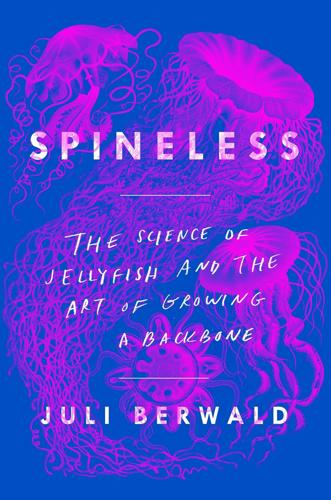
Spineless: The Science of Jellyfish and the Art of Growing a Backbone
by
Juli Berwald
Published 14 May 2017
“the Bohai Sea”: “Ecosystem Issues and Policy Options Addressing Sustainable Development of China’s Ocean and Coast,” China Council for International Cooperation on Environment and Development, Annual General Meeting 2010, Reports of Task Force. a megastorm building on the East Coast: For an account of the events leading up to Sandy’s landfall on the East Coast, see Kathryn Miles, Superstorm: Nine Days Inside Hurricane Sandy (New York: Dutton, 2014). the name Frankenstorm: Chris Mooney, “Here Comes the Story of No Hurricanes,” Mother Jones, September 6, 2013, http://www.motherjones.com/environment/2013/09/hurricane-season-ipcc-sandy. 18. Toxic Cocktail swarms of round white jellyfish: Bella S. Galil, E.
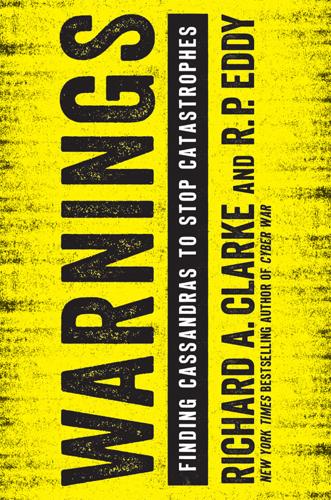
Warnings
by
Richard A. Clarke
Published 10 Apr 2017
(Enthoven), 361 Hsu, Steve, 343 Huckabee, Mike, 384n Human embryo gene editing, 326, 340–41, 345 Huntington, Samuel, 36 Hurricane Andrew, 53 Hurricane Betsy, 46 Hurricane Katrina, 6, 39–55, 72 government failures, 50–55 levee system, 40, 41–42, 46, 49, 50, 53–54 making landfall, 39–40, 49 New Orleans Scenario and, 45, 46–50, 52 Hurricane Pam exercise, 40, 47–49 Hurricane Sandy, 252 Hussein, Saddam Allen’s warning of Gulf War, 19–20, 22–23, 26–30, 358 Iraq-Iran War, 22–24 WMD and, 31 Hussein of Jordan, 28 IBM, 202, 209 Idaho Falls exercise, 288–89 Ideological Response Rejection, 179–80 Impact events, 301–24 Chelyabinsk meteor, 309–10, 316 Chicxulub crater, 307–9 Tunguska event, 301–3, 316 “In-attentional blindness,” 175 India, 261–73 Cold Start doctrine, 264–65, 267, 270 Mumbai terrorist attacks of 2008, 261–64 nuclear weapons and Pakistan, 264–73, 281–82 partition of, 265–66 Indian Air Force, 264 Indian Army, 266–67 Indian Navy, 264 Indications and warning (I&W), 25–27, 359–60 Industrial Revolution, 175 Initial Occurrence Syndrome, 171–72 Ford and Syria, 72 Fukushima nuclear disaster, 97–98 Iraq-Kuwait case, 34–35 Morrison and asteroid threat, 318 van Heerden and levee failures, 52 Yudkowsky and AI, 215 Institutional reluctance, 140–42, 177–78, 320–21 Intelligence (IQ), 343 “Intelligence explosion,” 201–2, 205 Intergovernmental Panel on Climate Change (IPCC), 246–50, 253, 254–55 International Arabian Horse Association, 54 International Herald-Tribune, 92 International Rice Research Institute, 193 International Summit on Human Gene Editing (2015), 345–46 Internet of Things (IoT), 292–300, 366 Invisible Obvious, 174–76, 234–35 In vitro fertilization (IVF), 343–44 Iran Iraq-Iran War, 22–24 nuclear program, 291–92 Syria and, 67, 73, 74 Iran-Contra scandal, 32 Iraq, 58, 63.
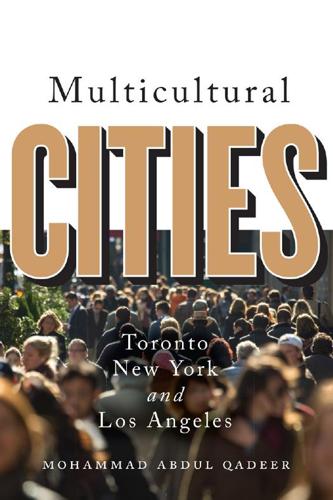
Multicultural Cities: Toronto, New York, and Los Angeles
by
Mohammed Abdul Qadeer
Published 10 Mar 2016
It has had only one nonWhite mayor, David Dinkins from 1990 to 1993, followed by eight years of conservative White Republican rule under Rudolph Giuliani, who rolled back many services for minorities and the poor. Michael Bloomberg, of Republican leanings and a billionaire, dominated city politics for a decade, steering the city through the post-9/11 setbacks, Hurricane Sandy’s devastations, and the economic recession of 2008. Yet he promoted diversity and advanced immigrants’ inclusion. The strategies for political influence employed by ethno-racial groups, gays, and women are beginning to show new configurations of coalitions, intergroup competition, and leadership patterns.
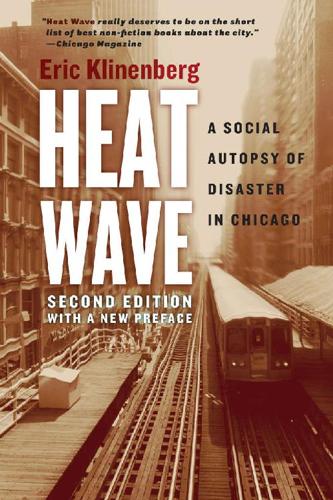
Heat Wave: A Social Autopsy of Disaster in Chicago
by
Eric Klinenberg
Published 11 Jul 2002
“The ocean is going to reclaim what we took from it,” says Klaus Jacob, a Columbia University geophysicist who has advised New York City on how to manage sea-level rise, and whose climate models predict a gradual erosion of densely settled habitats in coastal areas around the world. Long before Hurricane Sandy hit New York in 2012, he urged city leaders to learn from Rotterdam, which has a long history of flooding. After enduring a devastating storm surge in 1953, Rotterdam began building a series of dams, barriers, and seawalls as part of a national project called Delta Works, and five years ago the Dutch government provided funds for an upgrade, the Rotterdam Climate Proof Program.
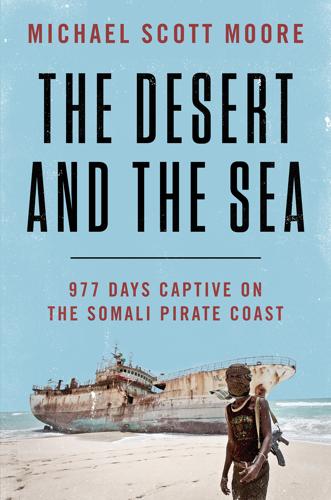
The Desert and the Sea: 977 Days Captive on the Somali Pirate Coast
by
Michael Scott Moore
Published 23 Jul 2018
I was trying not to let the guards see any emotion when Dhuxul limped into the room and handed me a battered shortwave radio. Part 8 Stronger Than Dirt I Over a year and a half, I had missed a new pope, a new president of France, and Syria’s deepening civil war. Young terrorists had bombed the Boston Marathon, and Hurricane Sandy had flooded New York and New Jersey. Philip Roth had announced his retirement. Chinua Achebe, Margaret Thatcher, and Gore Vidal had died. All of it had rippled in the distance while I rotted on my mattress. It shouldn’t have mattered, but writers are social animals, whether they like it or not, and now, by holding the radio to my ear and pacing the floor of my room, I could pick up faint programs from the BBC.

The Rise and Fall of American Growth: The U.S. Standard of Living Since the Civil War (The Princeton Economic History of the Western World)
by
Robert J. Gordon
Published 12 Jan 2016
Milestones on the one-way road from a rural society to an urban one are marked off by the urban percentage of the population, defined as those living in organized governmental units with a population of 2,500 or more. The percent of the nation classified as urban grew from 24.9 percent in 1870 to 73.7 percent in 1970.5 There is no greater example of the importance of the inventions of the special century than the aftermath of Hurricane Sandy, a freakishly powerful storm that devastated much of New York City and the seacoast of New Jersey in late October 2012. Floods have been common throughout human history, but interaction between the weather and the Great Inventions had not previously occurred on such a scale. Sandy pushed many of its victims back to the nineteenth century.
…
See appliances houses: in 1870s, 46–47, 60; bungalows, 108–10; construction of, 352–53; farmhouses, 112–13; life cycle of, 100; networked, 5–6, 61, 94–95, 113–15, 127–28, 215, 320; size and prices of, 354–56, 370 housewives, 275–78, 498, 505 housework, 6, 275–78 housing, 94–97; in 1870, 43–47; after 1940, 332–33, 351–56, 371–72, 524; bungalow movement in, 108–10; density of, 104–8; electrification of, 115–22; evolution of, 100–101; heating for, 125–26; increases in quality of, 12; mortgage financing for, 288, 300–303; retirement communities for, 517; running water and indoor plumbing for, 122–25; rural, 112–13; in small towns and medium-sized cities, 110–12; suburbanization of, 363–70; transition in, 127–28; urban, 102–4 Howard Johnson’s (firm), 76 How the Other Half Lives (Riis), 97 Hoxby, Caroline, 626 Hudack, Stephen S., 466 Hughes, David Edward, 21, 191, 197 human genome project, 478 Hurricane Sandy, 6–7 Hussey, Obed, 263 IBM (firm): mainframe computers by, 449; personal computers by, 452–53; R&D division of, 571–72; Watson by, 593; word processors by, 452 ice, 70 iceboxes, 70, 321 ice cream, 76 iconoscope, 412 ICT (information and communication technology): in GDP, 441–42, 447–48; investment in, 523; See also communications; information technology I Love Lucy (television program), 417 immigrants and immigration: Chinese, 223; diet of, 41, 70, 76, 334; as farmers, 261; in Great Leap Forward, 554–55; housing for, 100; in labor force, 614–15; in Midwestern cities, housing for, 107; rail transportation for, 141; reform of, 650; in U.S. population, 32, 35; wages and, 281 imports: automobiles, 387–88; clothing, 348–49; in GDP, 614; globalization and, 633; in Great Leap Forward, 554–55 incarceration (imprisonment), 632, 646 income: in 1940, 289; educational attainment and, 514; stature tied to, 83; from work, 278–82 income inequality, 7, 605–8, 612–13; after 1975, 503–4; census data on, 610–11; diet and, 345–47, 371; downward pressure on wages in, 613–17; education as source of, 620–27; globalization and, 633; in healthcare, 462, 482–83, 484–85; income tax data on, 608–10; income transfers and, 611–12; social change at bottom of, 630–32; taxes to combat, 644–45; within top level, 618–20 income taxes: data from, 608–10; Earned Income Tax Credit on, 645–46; marginal rates for, 617; reform of, 650, 651; varied rates for, 611 Index of Industrial Production and Industrial Capacity, 585–86 indoor plumbing, 44–45, 51, 95, 122–25, 323; diffusion of, 114, 216 Industrial Revolutions, 30–31, 319–20, 528–29; First (IR #1), 30–31, 319; Second (IR #2) (See Second Industrial Revolution); Third (IR #3) (See Third Industrial Revolution) industrial safety, 270–73 inequality.
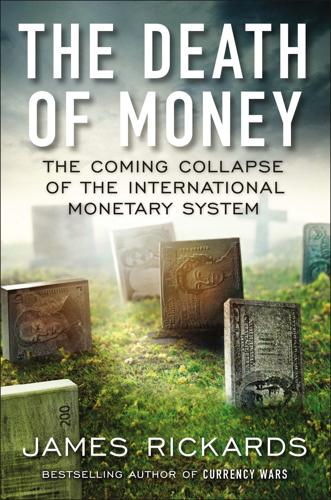
The Death of Money: The Coming Collapse of the International Monetary System
by
James Rickards
Published 7 Apr 2014
Contracts based on gold have many risks that are not intrinsic to gold itself, starting with the possibility that counterparties may default on their obligations. Exchanges where the gold contracts are listed may be closed as a result of panics, wars, acts of terror, storms, and other acts of God. Hurricane Sandy in 2012 and the 9/11 attack on the World Trade Center are two recent cases in which the New York Stock Exchange closed. Exchange rules may also be abruptly changed, as happened on the COMEX in 1980 during the Hunt brothers’ attempted silver market corner. Banks may claim force majeure to terminate contacts and settle in cash rather than bullion.

Smart Cities: Big Data, Civic Hackers, and the Quest for a New Utopia
by
Anthony M. Townsend
Published 29 Sep 2013
Cellular networks fail in all kinds of ugly ways during crises: damage to towers (fifteen were destroyed around the World Trade Center on 9/11 alone), destruction of the “backhaul” fiber-optic line that links the tower into the grid (many more), and power loss (most towers have just four hours of battery backup). In 2012, flooding caused by Hurricane Sandy cut backhaul to over two thousand cell sites in eight counties in and around New York City and its upstate suburbs (not including New Jersey and Connecticut), and power to nearly fifteen hundred others.24 Hurricane Katrina downed over a thousand cell towers in Louisiana and Mississippi in August 2005, severely hindering relief efforts because the public phone network was the only common radio system among many responding government agencies.
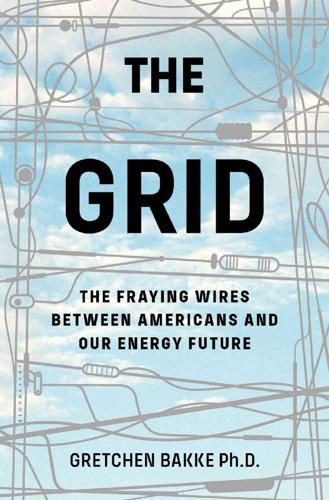
The Grid: The Fraying Wires Between Americans and Our Energy Future
by
Gretchen Bakke
Published 25 Jul 2016
Many of these integrated aspects of energy security can be controlled within the United States in ways that are impossible in war zones. The mistake is in imagining that the knowledge and organization necessary for abundance is naturally linked to energy security, or that a national infrastructure for supplying power to American towns and bases is situated in a “stable environment.” We have seen this with Hurricanes Sandy and Irene in the Northeast and Katrina and Rita along the Gulf Coast, the Gale in the Pacific Northwest, Boston’s Snowmageddon, the California droughts and their wildfires, and the annual spin of tornadoes that wipe out, and cause to be rebuilt year in and year out, the infrastructures that support northern Texas, Oklahoma, Kansas, and Nebraska.
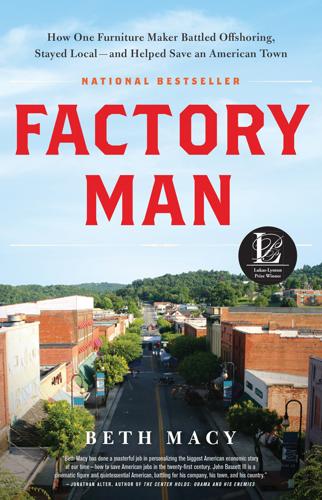
Factory Man: How One Furniture Maker Battled Offshoring, Stayed Local - and Helped Save an American Town
by
Beth Macy
Published 14 Jul 2014
Some met with him but held firm. “We’re just not gonna buy from him,” Jake Jabs told me after JBIII’s visit. “I like him. He’s a personable guy. But we’re still mad.” Others were nudged by necessity more than sales pitch. A New York retailer declined to place a rush order with VBX in the wake of Hurricane Sandy, saying a cheaper product was already on its way from Asia. When that container load arrived, all twenty bedroom suites were adorned with black mold (it’s the tropics in Indonesia, after all), and an order for ninety Cottage Collection suites was then placed. “I can put ’em on a truck tomorrow for you,” JBIII told the retailer.

Actionable Gamification: Beyond Points, Badges and Leaderboards
by
Yu-Kai Chou
Published 13 Apr 2015
Other interesting examples of Explicit Gamification include the famous serious game FoldIt that facilitated AIDS research10, as well as AutoDesk’s Undiscovered Territory11, a game created for selling their very expensive 3D imaging software. There are also explicit gamification examples such as Repair the Rockaways12, which is a game similar to Farmville, but the number of bricks that are available is determined by how much is donated to support Hurricane Sandy repairs. Again, these examples are all games where people play and opt into, hence “explicit” gamification. The advantage of designing for explicit gamification is that the product is generally more playful and it allows the designer to have more freedom of creativity. The disadvantage is that it could be seen as childish, non-serious, or distracting to some target users such as enterprise firms, banks, or manufacturers.
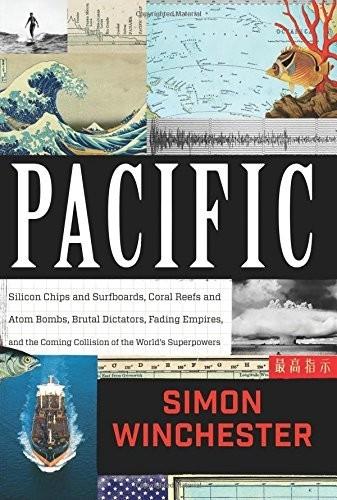
Pacific: Silicon Chips and Surfboards, Coral Reefs and Atom Bombs, Brutal Dictators, Fading Empires, and the Coming Collision of the World's Superpowers
by
Simon Winchester
Published 27 Oct 2015
In the Atlantic since 1924, just nineteen hurricanes made it into the list of storms with eye pressures of less than 925 mbar. Just one out of five of those (the hurricanes known as Labor Day 1935, Allen, Gilbert, Rita, and Wilma) were superintense, with eye pressures of less than 900 mbar. Neither Camille nor Katrina managed to figure below the 900 mbar number. Hurricane Sandy, infamous in recent New York and New Jersey history, did not even make the World Meteorological Organization cut, registering a comparatively benign 940 mbar in its nonspinning center. In the western North Pacific, however, atmospheric violence as measured by intensely low eye pressure is much more common, almost routine.
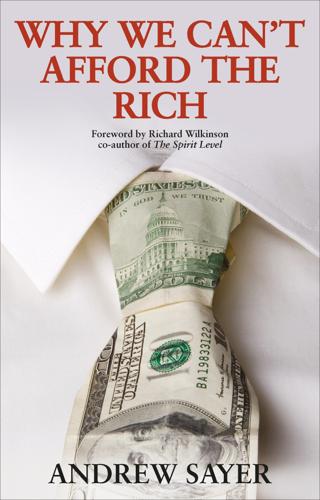
Why We Can't Afford the Rich
by
Andrew Sayer
Published 6 Nov 2014
The last time this happened was more than 3 million years ago, when the Arctic was ice free and sea level was up to 40 metres higher than now.37 It will take a long time for enough land ice in Greenland and Antarctica to melt and raise sea levels to the same extent, but small rises are already threatening low-lying areas like Bangladesh, and of course most of the world’s densely populated areas are low lying. We can also expect more frequent extreme weather events and destruction of people, property and crops. Even New York, where subways and basements were flooded by Hurricane Sandy in 2012, is at risk. Typhoon Haiyan, possibly the worst in recorded history, laid waste to huge areas of the Philippines in 2013, killing thousands and leaving millions homeless. This event made it all too clear that extreme weather can sweep devastating tidal surges across low-lying and often populous coasts.
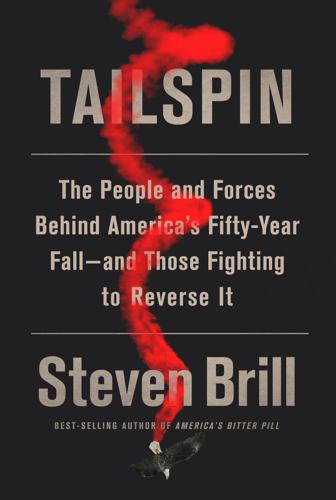
Tailspin: The People and Forces Behind America's Fifty-Year Fall--And Those Fighting to Reverse It
by
Steven Brill
Published 28 May 2018
However, New Jersey governor Chris Christie, who was contemplating competing in the 2012 Republican presidential primaries, suddenly reneged in 2010 on committing his state’s share of the funding, explaining that he feared being stuck with cost overruns. By 2015, the old tunnel—which had been further weakened by saltwater damage in 2012 during Hurricane Sandy—was the subject of regular news reports about water seeping through and rail traffic being slowed to near standstills on the rotted tracks, causing train delays along the Washington–Boston corridor. In 2015, Christie came back to the table, and a new plan, called Gateway, was announced. Its scheduled completion: 2024.
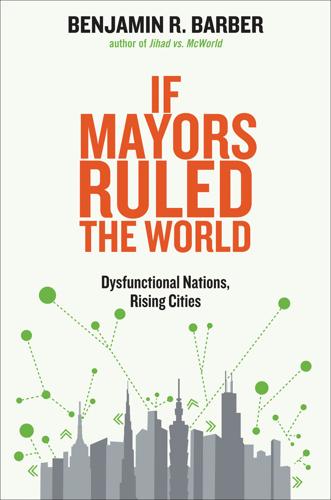
If Mayors Ruled the World: Dysfunctional Nations, Rising Cities
by
Benjamin R. Barber
Published 5 Nov 2013
Air quality deterioration will eventually affect Aspen, Zurich, and Vancouver no less than it already threatens Beijing, Phoenix, and Mexico City, while the rising oceans that have already flooded Bangladesh’s capital city of Dhaka (putting 20 million mostly poor people at risk) and below-sea-level New Orleans are now lapping at middle-class communities in Staten Island (New York) and the New Jersey shore and causing floods in unlikely English villages. With up to 90 percent of the world’s cities on water (lakes, rivers, and oceans), urban populations are on the front banks of ecological risk. This is why San Francisco and New York City are already responding to rising waters on the frightening scale of Hurricane Sandy in 2012 with novel “mitigation plans”—a fantasy land of massive sea gates in front of New York Harbor and giant rubber balloons to prevent high tides from flooding Manhattan tunnels, abruptly made real and pertinent. In fact, climate change is quickly morphing into the ultimate security issue, with urban cooperation in addressing the underlying causes of climate change a necessity of survival.
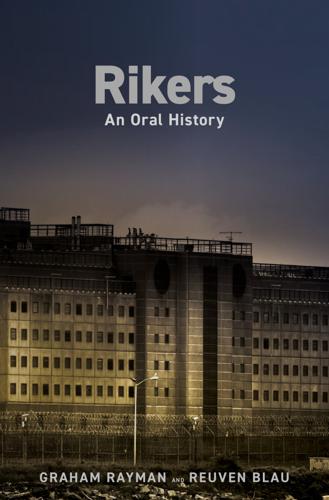
Rikers: An Oral History
by
Graham Rayman
and
Reuven Blau
Published 17 Jan 2023
And he had already put in a lawsuit. And so perhaps that’s what he meant. That he was costing them and they would have to go before their bosses or whatever. Whenever he had a problem, they would always just take him right to Bellevue, and he would get the treatment he needed. But this particular year, they had Hurricane Sandy, and Bellevue was flooded out. So they wasn’t taking him to the hospital. He wasn’t being able to get proper treatment. And he was fussing about his medication. He was killed either on a Tuesday or Wednesday. I was putting up displays in the Walmart and I got the phone call. I didn’t know the number, but I answered, and he said, is that Ronald Spear’s sister?
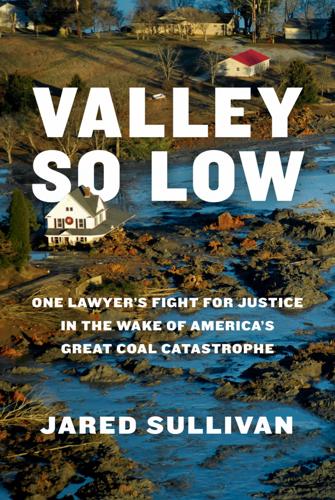
Valley So Low: One Lawyer's Fight for Justice in the Wake of America's Great Coal Catastrophe
by
Jared Sullivan
Published 15 Oct 2024
GO TO NOTE REFERENCE IN TEXT three-foot drifts: High on LeConte, blog, October 31, 2012, http://www.highonleconte.com/. GO TO NOTE REFERENCE IN TEXT McGhee Tyson Airport: “Knox Business Deal with Hurricane,” Knoxville News Sentinel, October 30, 2012. GO TO NOTE REFERENCE IN TEXT Mountain communities: Steve Keighton et al., “Northwest Flow Snow Aspects of Hurricane Sandy,” Weather and Forecasting (February 2016). GO TO NOTE REFERENCE IN TEXT performed an ultrasound: Letter by John D. Arnett, of Parkwest. GO TO NOTE REFERENCE IN TEXT shock Ansol’s heart: Ibid. GO TO NOTE REFERENCE IN TEXT Personal-injury attorneys: The first paragraph in this section is partly drawn from the following study: David A.

Hope Dies Last: Visionary People Across the World, Fighting to Find Us a Future
by
Alan Weisman
Published 21 Apr 2025
“The Dutch Have Solutions to Rising Seas. The World Is Watching.” New York Times, June 15, 2017. https://www.nytimes.com/interactive/2017/06/15/world/europe/climate-change-rotterdam.html. ———. “What Does It Mean to Save a Neighborhood?” New York Times, June 15, 2023. https://www.nytimes.com/2021/12/02/us/hurricane-sandy-lower-manhattan-nyc.html. Klijn, Frans, Nathalie Asselman, and Dennis Wagenaar. “Room for Rivers: Risk Reduction by Enhancing the Flood Conveyance Capacity of the Netherlands’ Large Rivers.” Geosciences 8, 224 (June 20, 2018). https://doi.org/10.3390/geosciences8060224. Klinenberg, Eric.
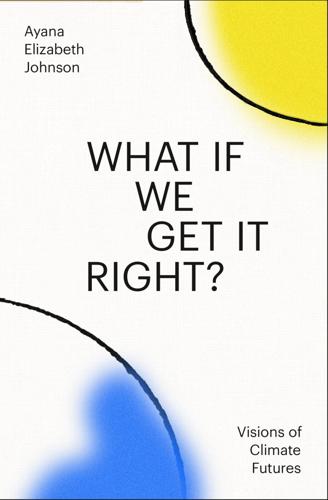
What If We Get It Right?: Visions of Climate Futures
by
Ayana Elizabeth Johnson
Published 17 Sep 2024
Then I went to work at the salmon farms—with the feed required, and the disease from growing them in such high densities, and all the fish shit, it’s not sustainable. And we don’t want to just shift from wild harvesting to farming those same few species. So I remade myself as an oyster man. And then I got hit by Hurricane Irene and then by Hurricane Sandy. After the first one, you’re like, “Ah, you know, hurricanes happen.” Two years in a row, you’re like, “Whoa, this isn’t some slow lobster boil. Climate change is here now. We’ve gotta deal with it.” I thought climate change might drive me off the ocean, into the hellish world of all the terrible things I’ve had to do on land in my life, and I’d end up in deep, deep depression.
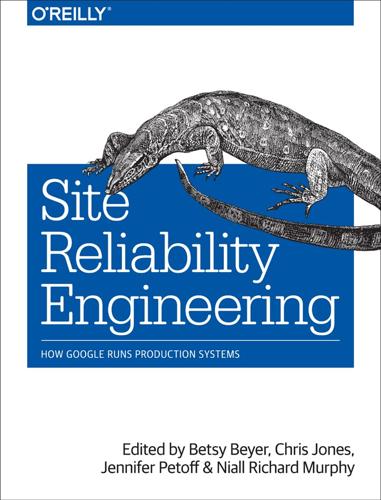
Site Reliability Engineering: How Google Runs Production Systems
by
Betsy Beyer
,
Chris Jones
,
Jennifer Petoff
and
Niall Richard Murphy
Published 15 Apr 2016
For instance, if all of the clients using a consensus system are running within a particular failure domain (say, the New York area) and deploying a distributed consensus–based system across a wider geographical area would allow it to remain serving during outages in that failure domain (say, Hurricane Sandy), is it worth it? Probably not, because the system’s clients will be down as well so the system will see no traffic. The extra cost in terms of latency, throughput, and computing resources would give no benefit. You should take disaster recovery into account when deciding where to locate your replicas: in a system that stores critical data, the consensus replicas are also essentially online copies of the system data.
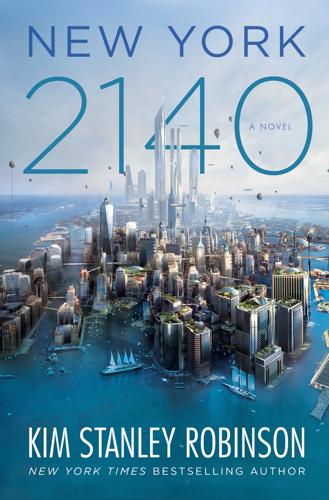
New York 2140
by
Kim Stanley Robinson
Published 14 Mar 2017
Thus a moment in a hurricane comes when water is coming into the bay from three directions, and there is nowhere for it to go but up. If by chance all this happens in a neap tide, it even gets a tug from the moon, such that upward becomes in effect the path of least resistance. So up the water goes. Storm surge of 2046’s Hurricane Alfred, eighteen feet, big disaster. Hurricane Sandy in 2012, storm surge of twelve feet, big disaster. Storm surge for the unnamed hurricane of 1893, thirty feet. Utter wreckation. And now, recall, and this you should be capable of as it is the overriding omnipresent fact of life on Earth today, that sea level is already fifty feet higher than it was pre-pulse.
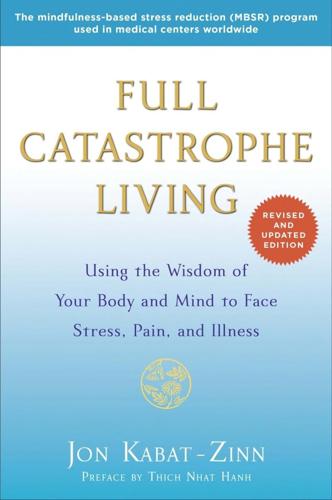
Full Catastrophe Living (Revised Edition): Using the Wisdom of Your Body and Mind to Face Stress, Pain, and Illness
by
Jon Kabat-Zinn
Published 23 Sep 2013
While such issues may seem remote to us or appear to be the quaint saber-rattling of romantic and hysterical wildlife and nature lovers, the effects of these practices on us may not be remote at all in the next decade or two if the destruction of the environment is not slowed and if our release of greenhouse gases is not drastically reduced. We are already apparently seeing the consequences of this in storms of increasing severity, such as Hurricane Katrina, which devastated New Orleans in 2005, and Hurricane Sandy, which inundated so many parts of New York City and New Jersey in 2012. Such storms may become much more common in the coming years, major stressors in our lives and in the lives of future generations. We may see an increased incidence of skin cancer if the atmosphere becomes less and less able to filter out the harmful ultraviolet rays in the sun’s light due to destruction of its ozone layer, and increased rates of cancer, miscarriages, and birth defects from greater lifetime exposures to chemicals in the environment and perhaps in food as well.

The Stack: On Software and Sovereignty
by
Benjamin H. Bratton
Published 19 Feb 2016
Whereas bioregions recognize the primacy of grounded situation, changing climates, like the Cloud, do not. At the same time, coalitions of producers can't represent those bearing the brunt of global energy use. Ecopolities of those affected are equally important as polities of producers, and we already see them emerging by emergency. In the wake of Hurricane Sandy, New York City introduced a system of zones that differentiated proximity to rising coastal water vulnerability. Citizens living in zone A or zone B might be required to evacuate at different times and might be recognized for different rights of return from those not occupying the same block-by-block micropolity.

The Price of Silence: The Duke Lacrosse Scandal
by
William D. Cohan
Published 8 Apr 2014
(Transcripts of both of my interviews with Nifong—as well as Devine’s—will be available in 2014 as part of the Southern Oral History Program at the University of North Carolina in Chapel Hill.) Special thanks also go to Elizabeth Palumbo, who selflessly helped me to collect a large chunk of the research material that I used in writing the book. In October 2012, Hurricane Sandy turned Elizabeth’s world upside down, and my best wishes go out to her. Tifany A. Ross, at the courthouse in Durham, helped me immeasurably to obtain hard-to-find records of the court proceedings against the three lacrosse players. For whatever reason, it seems, some people would have been more than happy to have some of those records disappear; Tifany made sure that did not happen.